Notice
is given that an ordinary meeting of the Tasman District Council will be held
on:
|
Date:
Time:
Meeting
Room:
Venue:
Zoom
conference link:
Meeting ID:
Meeting Passcode:
|
Thursday 1 August 2024
9:30 am
Tasman Council Chamber
189 Queen Street, Richmond
https://us02web.zoom.us/j/87384463410?
873 8446 3410
305498
|
|
Tasman
District Council
Kaunihera
Katoa
AGENDA
|
MEMBERSHIP
|
Mayor
|
Mayor T King
|
|
|
Deputy Mayor
|
Deputy Mayor S Bryant
|
|
|
Councillors
|
Councillor C Butler
|
Councillor M Kininmonth
|
|
|
Councillor G Daikee
|
Councillor C Mackenzie
|
|
|
Councillor B Dowler
|
Councillor K Maling
|
|
|
Councillor J Ellis
|
Councillor B Maru
|
|
|
Councillor M Greening
|
Councillor D Shallcrass
|
|
|
Councillor C Hill
|
Councillor T Walker
|
(Quorum 7 members)
|
|
|
Contact Telephone: 03 543 8400
Email: Robyn.Scherer@tasman.govt.nz
Website: www.tasman.govt.nz
|
Tasman District Council Agenda – 01 August 2024
AGENDA
1 Opening, Welcome, KARAKIA
2 Apologies
and Leave of Absence
|
Recommendation
That apologies be accepted.
|
3 Public
Forum
3.1 Meeting
Procedures from an Observer Perspective............................................... 5
3.2 Conservation
and Environmental Challenges for Little Penguins in the Tasman Coastal Region...................................................................................................................... 6
4 Declarations
of Interest
5 LATE
ITEMS
6 Confirmation
of minutes
|
That the minutes of
the Tasman District Council meeting held on Wednesday, 17 July 2024, be
confirmed as a true and correct record of the meeting.
|
7 Reports
7.1 Notice
of Motion - Councillor Kit Maling - Traffic Calming (Speed Humps) Wensley Road................................................................................................................................. 7
7.2 Motueka
Museum - Roof Cladding Replacement................................................. 11
7.3 Treasury
Management Update.............................................................................. 16
7.4 2024
Treasury Risk Management Policy (including Investment Policy and Liability
Management Policy).............................................................................................. 17
7.5 Draft
Bylaw for Consultation - Navigation Safety................................................ 168
7.6 Draft
Dog Control Policy and Bylaw.................................................................... 275
7.7 Mayors
for Peace Internship................................................................................ 422
7.8 Machinery
Resolutions Report............................................................................ 431
7.9 Chief
Executive's Update..................................................................................... 432
7.10 Mayoral
Update.................................................................................................... 439
8 Confidential
Session
8.1 Procedural
motion to exclude the public............................................................. 443
8.2 Update
on the Council's response to the recent global IT outage involving CrowdStrike
systems................................................................................................................ 443
8.3 Appointment
and Reappointment of Independent Members to the Audit and Risk Committee............................................................................................................ 443
8.4 Appointment
of District Licensing Committee Commissioners........................... 443
8.5 Disposal
of Homestead and Land - 53 Paton Road............................................ 444
9 CLOSING
KARAKIA
Tasman District Council Agenda – 01 August 2024
3 Public
Forum
3.1
Meeting Procedures
from an Observer Perspective
|
Report
To:
|
Tasman
District Council
|
|
Meeting
Date:
|
1
August 2024
|
|
Report
Author:
|
Robyn
Scherer, Executive Assistant and Advisor to the Mayor
|
|
Report
Authorisers:
|
Leonie
Rae, Chief Executive Officer
|
|
Report
Number:
|
RCN24-08-1
|
1. Public
Forum / Te Matapaki Tūmatanui
Marion Satherley will speak in public forum
regarding meeting procedures from an observer perspective.
Nil
Tasman District Council Agenda – 01 August 2024
3.2 Conservation and Environmental Challenges for
Little Penguins in the Tasman Coastal Region
|
Report
To:
|
Tasman
District Council
|
|
Meeting
Date:
|
1
August 2024
|
|
Report
Author:
|
Robyn
Scherer, Executive Assistant and Advisor to the Mayor
|
|
Report
Authorisers:
|
Leonie
Rae, Chief Executive Officer
|
|
Report
Number:
|
RCN24-08-2
|
1. Public
Forum / Te Matapaki Tūmatanui
Linda Jenkins will speak in public forum on
behalf of the Tasman Bay Blue Penguin Trust regarding conservation
and environmental challenges for little penguins in the Tasman Coastal Region,
whose conservation status is at risk/declining. Linda will also present two
videos on the topic.
Nil
Tasman District Council Agenda – 01 August 2024
7 Reports
7.1
Notice
of Motion - Councillor Kit Maling - Traffic Calming (Speed Humps) Wensley Road
|
Report
To:
|
Tasman
District Council
|
|
Meeting
Date:
|
1
August 2024
|
|
Report
Author:
|
Kit
Maling, Chairperson Strategy and Policy Committee
|
|
Report
Authorisers:
|
Leonie
Rae, Chief Executive Officer
|
|
Report
Number:
|
RCN24-08-3
|
1. Purpose
of the Report / Te Take mō te Pūrongo
1.1 To
consider the notice of motion from Councillor Kit Maling regarding traffic
calming (speed humps) on Wensley Road, Richmond.
1.2 A
copy of the Notice of Motion received by the Chief Executive Officer on 23 July
2024 from Councillor Kit Maling is attached (Attachment 1).
1.3 I, Councillor Kit Maling, hereby
give notice that at the Tasman District Council meeting held on Thursday, 1
August 2024, I will move the following motion:
1.4 That the Tasman District Council:
agrees to reduce the number of
speed humps in each direction from five to three and that they be appropriately
spaced to still reduce the speed in the 30 kph speed limit area from the
Wensley Road/Waverly Street intersection to just south of the Wensley Road/Surrey
Road Intersection.
2. Recommendation/s
/ Ngā Tūtohunga
That the Tasman District Council
1. receives the Notice
of Motion - Councillor Kit Maling - Traffic Calming (speed humps) Wensley Road report RCN24-08-3; and
2. agrees to reduce the number
of speed humps in each direction from five to three and that they be
appropriately spaced to still reduce the speed in the 30km per hour speed limit
area from the Wensley Road/Waverly Street intersection to just south of the
Wensley Road/Surrey Road Intersection.
3.1 For
many years the Council has had problems with the narrow part of Wensley
Road, between the intersections of Waverley Street and Surrey Road.
3.2 Wensley
Road is a feeder road into Richmond from the south and is also used by
commuters who wish to avoid the traffic lights on Gladstone Road and the Queen
Street intersection. It is also used as a route for children and families
taking children to Richmond School.
3.3 In
the past, the Council has looked at widening this road, buts costs and
resistance from the community has meant that the project has never
proceeded.
3.4 A
number of safety improvements have been carried out over the past 12 months as
part of the Streets for People Project, that has been largely funded by central
government with some funding from Tasman District Council.
3.5 A
working group was formed involving staff and Councillors who were briefed and
had input to the plans.
3.6 The
working group was never shown a plan that contained five speed humps or pads as
part of the Streets for People project.
3.7 The
length of road that is narrow and contains the speed humps is
approximately 300 metres, and now has a pedestrian crossing on the
southern side of the Waverley Street Intersection.
3.8 Feedback
from the community and fellow Councillors on the new road layout has been
extremely negative. Staff have also received negative feedback from the
community.
3.9 Members
of the community are now not using this road and are taking a rat run using
Cautley Street.
3.10 The
blue e-Buses are having to slow down to about five km per hour to go over the
speed humps.
3.11 There
has been a negative effect on local residents from the noise when four-wheel
drive vehicles go over the speed humps at speed and also vehicles with
trailers.
3.12 The
design of the speed humps is such that drivers swerve to avoid them, putting
cyclists at risk.
3.13 The
Mayor and Councillors have received numerous emails and phone calls from
residents, both about the design and the number of speed humps.
3.14 If
the Council is worried about keeping the speed at 30km per hour, the use
of traffic speed enforcement by the Police and signage should be
sufficient.
3.15 People
don’t like change but at times we need to listen to our community
when the changes that are made are not working for our community as intended.
This current road layout is
causing problems for our community, and they were not consulted on the layout,
and it needs to be fixed now before more damage is done to the Council’s
relationship with the community we serve.
|
1.⇩
|
Notice of
Motion - Councillor Kit Maling
|
9
|
Tasman District Council Agenda – 01 August 2024



Tasman District Council Agenda – 01 August 2024
7.2 Motueka Museum - Roof Cladding Replacement
|
Report
To:
|
Tasman
District Council
|
|
Meeting
Date:
|
1
August 2024
|
|
Report
Author:
|
Nick
Chin, Enterprise and Property Services Manager
|
|
Report
Authorisers:
|
Richard
Kirby, Group Manager - Community Infrastructure; John Ridd, Group Manager -
Service and Strategy
|
|
Report
Number:
|
RCN24-08-4
|
1. Purpose
of the Report / Te Take mō te Pūrongo
1.1 To
outline the poor condition of the Motueka Museum roof and seek approval from
the Council to utilise unspent operating funds from the 2023-2024 financial
year and some of the operational funding this financial year (2024-2025) to
replace most of the roof cladding.
2. Summary
/ Te Tuhinga Whakarāpoto
2.1 The
cladding on the roof of the Motueka Museum is in very poor condition and
approximately 80% of the cladding needs to be replaced.
2.2 The
estimated cost of this work is around $120,000 including a 5% scope risk.
2.3 There
is no capital funding in the Long-Term Plan 2024/2034 for Museums. It is
proposed that this work be funded from an operational surplus of $82,000 in
2023/2024 and that the remaining $28,000 be funded from the $135,000
operational funding in year 2024/2025 of the Long-Term Plan 2024/2034.
3. Recommendation/s
/ Ngā Tūtohunga
That the Tasman District Council
1. receives the Motueka Museum -
Roof Cladding Replacement report, RCN24-08-4; and
2. approves
funding the required $120,000 to partially replace the roof cladding on the
Motueka Museum from the following operational budgets:
· the estimated surplus of $82,000 from the Museum Operational Budget in 2023/2024 into capital funding in the 2024-2025 year; and
· an allocation of $28,000 from the Museum Operational Budget
in the 2024/2025 year of the Long Term Plan 2024/2034 into Capital Funding in the 2024/2025
financial year; and
3. notes the new roof cladding would reduce the pressure on future
maintenance and renewal funding for the Museums.
4.1 A recent assessment on the condition of
the Motueka Museum building has confirmed a major leak problem. There is black
mould coming into various parts of the museum including the offices at the
back. There is water damage in both bathrooms of the café which are
connected to the same building. Sealants have been used in the past to stop
leaks. However, these sealants have lost their flexibility and cannot
accommodate movement and consequently have cracked and split.
4.2 The Motueka Museum roof has been in poor
condition for several years and despite remedial repairs none have worked
effectively beyond the short term and now the roof cladding needs to be
replaced.
4.3 The building is listed as Category 2
Heritage. So, any major repair work will need heritage expertise input so as
not to compromise its heritage status.
4.4 In conjunction with a specification
developed by a heritage architect, quotes were sought to replace the roof
cladding. Two quotes have been received ranging from $113,000 to $154,000.
4.5 Whilst there are adequate funds within
maintenance budgets to carry out this work, an 80% roof cladding replacement is
regarded as a capital investment. There is no capital funding available for
Museums in either last year's or this year's budget (Table 1).
|
|
FY 2023-24
|
FY 2024-25
|
|
Opex Budget Museums
|
$82,000 remaining
|
$135,000
|
|
Capex Budget Museums
|
$0
|
$0
|
Table 1 Museum Opex and Capex
budgets
5. Analysis
and Advice / Tātaritanga me ngā tohutohu
5.1 To carry out these repairs, staff seek
authorisation to transfer surplus operational funds from the last financial
year (2023-2024) plus a contribution from this years (2024-2025) operational
budgets to fund this capital work.
6.1 The options are outlined in the
following table:
|
Option
|
Advantage
|
Disadvantage
|
|
1.
|
Do nothing
|
$82,000 of 2023-2024 opex is absorbed
into the Council funds.
|
The roof will require ongoing repairs and
maintenance, likely to exceed the cost of roof cladding replacement and
continue to adversely impact operational budgets.
|
|
2.
|
Repair the roof cladding.
|
Resolves a long-standing issue.
Lower maintenance costs.
Reduces risk to the Museum collection.
|
Operational funding for 2024/2025 is
reduced as some of it is reallocated as capital funding to fund this work.
|
6.2 Option Two is recommended.
7.1 Under the Local Government Act, the
Council is required to maintain its assets.
7.2 The Heritage New Zealand Pouhere Taonga
Act requires protecting heritage assets and collections.
8. Iwi
Engagement / Whakawhitiwhiti ā-Hapori Māori
8.1 Not required.
9. Significance
and Engagement / Hiranga me te Whakawhitiwhiti ā-Hapori Whānui
9.1 The significance of resolving a
long-term problem with the Motueka Museum roof will be high for the community
and the Museum Trust.
|
|
Issue
|
Level of
Significance
|
Explanation of
Assessment
|
|
1.
|
Is there a high level
of public interest, or is decision likely to be controversial?
|
No
|
There will be public interest
if the roof cladding repairs are not carried out.
|
|
2.
|
Are there impacts on
the social, economic, environmental or cultural aspects of well-being of the
community in the present or future?
|
No
|
|
|
3.
|
Is there a
significant impact arising from duration of the effects from the decision?
|
No
|
|
|
4.
|
Does the decision
relate to a strategic asset? (refer Significance and Engagement Policy for
list of strategic assets)
|
No
|
|
|
5.
|
Does the decision
create a substantial change in the level of service provided by Council?
|
No
|
|
|
6.
|
Does the proposal,
activity or decision substantially affect debt, rates or Council finances in
any one year or more of the LTP?
|
No
|
|
|
7.
|
Does the decision
involve the sale of a substantial proportion or controlling interest in a CCO
or CCTO?
|
No
|
|
|
8.
|
Does the
proposal or decision involve entry into a private sector partnership or
contract to carry out the deliver on any Council group of activities?
|
No
|
|
|
9.
|
Does the proposal or
decision involve Council exiting from or entering into a group of
activities?
|
No
|
|
|
10.
|
Does the proposal
require particular consideration of the obligations of Te Mana O Te Wai
(TMOTW) relating to freshwater or particular consideration of current
legislation relating to water supply, wastewater and stormwater
infrastructure and services?
|
No
|
|
10. Communication
/ Whakawhitiwhiti Kōrero
10.1 The Motueka Museum Trust and the Motueka Community
Board have been advised that it is intended that the problems with the roof
cladding should be addressed this year.
11. Financial
or Budgetary Implications / Ngā Ritenga ā-Pūtea
11.1 The project requires transferring surplus
operational funding from last year ($82,000) and some of this year’s
operational funding ($28,000) to fund this capital work.
11.2 The maintenance budget for 2024/2025 is $135,000.
It is proposed that $28,000 of this funding be reallocated as capital funding
for this work.
12.1 There is an ongoing risk to the Museum and its
contents if this work is not carried out.
12.2 There is a risk that once the old cladding is
removed some work on the roof structure may be required. Recent inspections
indicate that this risk is low, however it remains a risk.
13. Climate
Change Considerations / Whakaaro
Whakaaweawe Āhuarangi
13.1 The Museum building is not within the 2.0 metre Sea
Level Rise inundation area.
14. Alignment
with Policy and Strategic Plans / Te Hangai ki ngā aupapa Here me ngā
Mahere Rautaki Tūraru
14.1 The
property on which the Motueka Museum is located is a local purpose reserve and
is included in the Motueka Ward Reserve Management Plan (2019). This Plan
essentially focuses on the activities on the property and within the building.
The decision to replace the roof cladding, as proposed in this report, aligns
with this Plan.
14.2 The other Council Policy on the Motueka Museum
relates to decisions on whether to allow temporary activities to take place on
the Motueka Museum frontage area. The decision in this report does not directly
impact this policy. However, the frontage may need to be used by contractors to
undertake the replacement of the roof cladding and the policy outlines the
process through which this can be done if necessary.
15. Conclusion
/ Kupu Whakatepe
15.1 It is recommended that the proposal to reallocate
operational funding to capital funding to fund the partial replacement of the
roof cladding be approved.
16. Next
Steps and Timeline / Ngā Mahi Whai Ake
16.1 If approved, the contractor will be engaged to undertake the work
and it is intended that the roof cladding will be replaced in August/September
2024, weather dependent.
Nil
Tasman District Council Agenda – 01 August 2024
7.3 Treasury Management Update
|
Report
To:
|
Tasman
District Council
|
|
Meeting
Date:
|
1
August 2024
|
|
Report
Author:
|
Robyn
Scherer, Executive Assistant and Advisor to the Mayor
|
|
Report
Authorisers:
|
Leonie
Rae, Chief Executive Officer
|
|
Report
Number:
|
RCN24-08-5
|
1. Presentation
/ Whakatakotoranga
Brett Johanson from PricewaterhouseCoopers
will make a presentation to the Council on treasury management objectives and
approach as well as update on the economic and financial market outlook.
Nil
Tasman District Council Agenda – 01 August 2024
7.4 2024 Treasury Risk Management Policy
(including Investment Policy and Liability Management Policy)
Decision Required
|
Report
To:
|
Tasman
District Council
|
|
Meeting
Date:
|
1
August 2024
|
|
Report
Author:
|
Matthew
McGlinchey, Financial Performance Manager
|
|
Report
Authorisers:
|
Mike
Drummond, Chief Financial Officer
|
|
Report
Number:
|
RCN24-08-6
|
1. Purpose
of the Report / Te Take mō te Pūrongo
1.1 To
adopt the updated 2024 Treasury Risk Management Policy including liability
management and investment policies.
2. Summary
/ Te Tuhinga Whakarāpoto
2.1 The
Treasury Risk Management Policy including liability management and investment
policies has been updated for the changes in the financial strategy as adopted
as part of the adoption of the Long Term Plan 2024-2034 on 27 June 2024.
It has also been amended to reflect the recent structural and role title
changes within the Finance Group.
2.2 The
revised policy is attached (Attachment 1) with markups. In addition, Attachment
2 is a clean copy with the proposed changes incorporated, for ease of
reading.
3. Recommendation/s
/ Ngā Tūtohunga
That the Tasman
District Council
1. receives
the 2024 Treasury Risk Management Policy (including Investment Policy and
Liability Management Policy) report, RCN24-08-6; and
2. adopts the Tasman District Council 2024 Treasury Risk
Management Policy including Liability Management and Investment Policies
(Attachment 2 to the agenda report) effective from 27 June 2024.
4.1 The
Treasury Risk Management Policy is reviewed at least three yearly and normally
in advance of the preparation of the Long Term Plan (LTP). This is an out of
cycle review required because of a restructure in the Finance department and to
align to changes made in the recent adoption of a revised financial strategy to
support the 2024-34 LTP.
5. Analysis
and Advice / Tātaritanga me ngā tohutohu
5.1 The marked-up version (Attachment
1) includes material mark-up for ease of analysis.
5.2 The key alterations and updates relate
to role title and structural changes within the Finance Group and an update to
the Net Debt Cap limit. This limit has now been revised to become a dynamic Net
Debt Cap based on the percentage of Operating Revenue to Total Net Debt. This
has been set at 160% across the ten years of the LTP. When the LTP was adopted,
it was acknowledged that this cap would be breached in Year 9 and Year 10 due
to the capital funding required for the Motueka and Tākaka wastewater treatment
plants.
6.1 The options are outlined in the
following table:
|
Option
|
Advantage
|
Disadvantage
|
|
1.
|
Recommend the changes as contained in the
updated policy to the Council.
|
The updated policy will contain current
and correct role titles and assigned responsibilities. It also acknowledges
the change to the Council’s Net Debt cap.
|
|
|
2.
|
Recommend additional changes to be
included in the updated policy, for adoption by the Council.
|
This would allow any additional emphasis
or additional risk managements approaches to be incorporated in the policy
prior to adoption by council.
|
There will be additional work required by
Council staff and our Treasury advisors.
The Treasury Policy may then be at odds
with the recently adopted LTP.
|
6.2 Option 1 is recommended.
7.1
Treasury management at Tasman District Council is governed by:
7.1.1 the Local Government Act 2002, in particular Part 6, including
sections 101,102, 104 and 105, 112 and 116; and
7.1.2 the Local Government (Financial Reporting and Prudence) Regulations
2014, in particular Schedule 4; and
7.1.3 the Trusts Act 2019. When acting as a trustee or investing money on
behalf of others, the Trusts Act highlights that trustees have a duty to invest
prudently and that they shall exercise care, diligence and skill that a prudent
person of business would exercise in managing the affairs of others; and
7.1.4 all external borrowing, investments and incidental financial
arrangements (eg use of interest rate hedging financial instruments) must meet
requirements of the Local Government Act 2002 and be consistent with the
Council’s Liability Management Policy and Investment Policy.
7.2 All projected external borrowings must
be approved by the Council as part of the Annual Plan or the Long Term Planning
(LTP) process or a resolution of the Council before the borrowing is effected.
7.3 All legal documentation in respect to
external borrowing facilities and financial instruments must be approved by the
Council’s solicitors prior to the transaction being executed.
7.4 The Council is not permitted to enter
into any borrowings denominated in a foreign currency.
7.5 The Council is
not permitted to transact with any Council Controlled Trading Organisation
(CCTO) on terms more favourable than those achievable by the Council itself
without using its ability to rate.
8. Iwi
Engagement / Whakawhitiwhiti ā-Hapori Māori
8.1 There has been no specific consultation
with Māori on the policy or this report. The report is primarily of a
technical nature.
9. Significance
and Engagement / Hiranga me te Whakawhitiwhiti ā-Hapori Whānui
|
|
Issue
|
Level of
Significance
|
Explanation of
Assessment
|
|
1.
|
Is there a high level
of public interest, or is decision likely to be controversial?
|
Low
|
A high level of
public interest exists on the level of Council debt. Interest in the
management of that debt, however, is considered low.
|
|
2.
|
Are there impacts on
the social, economic, environmental or cultural aspects of well-being of the
community in the present or future?
|
No
|
|
|
3.
|
Is there a
significant impact arising from duration of the effects from the decision?
|
No
|
|
|
4.
|
Does the decision
relate to a strategic asset? (refer Significance and Engagement Policy for
list of strategic assets)
|
No
|
|
|
5.
|
Does the decision
create a substantial change in the level of service provided by Council?
|
No
|
|
|
6.
|
Does the proposal,
activity or decision substantially affect debt, rates or Council finances in
any one year or more of the LTP?
|
Low
|
The policy governs
the responsibilities and controls concerning the Council’s authority to
borrow/invest. It does not directly impact debt or rates.
|
|
7.
|
Does the decision
involve the sale of a substantial proportion or controlling interest in a CCO
or CCTO?
|
No
|
|
|
8.
|
Does the
proposal or decision involve entry into a private sector partnership or
contract to carry out the deliver on any Council group of activities?
|
No
|
|
|
9.
|
Does the proposal or
decision involve Council exiting from or entering into a group of
activities?
|
No
|
|
|
10.
|
Does the proposal
require particular consideration of the obligations of Te Mana O Te Wai
(TMOTW) relating to freshwater or particular consideration of current
legislation relating to water supply, wastewater and stormwater
infrastructure and services?
|
No
|
|
10. Communication
/ Whakawhitiwhiti Kōrero
10.1 The updated policy will be made available on
the Council’s website.
11. Financial
or Budgetary Implications / Ngā Ritenga ā-Pūtea
11.1 The
costs associated with the review of the policy have been met from existing
Council budgets. The adoption of the updated policy has no direct financial or
budgetary implications.
12.1 The Treasury Risk Management Policy is the
mechanism to prudently manage treasury risks within the Council. This is
accomplished by outlining approved policies and procedures in respect of all
treasury activity to be undertaken by the Council.
12.2 The policy will be distributed to all personnel
involved in any aspect of the Council’s financial management. In this
respect, all staff must be completely familiar and comply with their
responsibilities under the policy at all times.
12.3 There are no material risks associated with this
policy update recommendation to the Council. The policy has seen a review from
staff pertaining to role titles and assigned responsibilities.
13. Climate
Change Considerations / Whakaaro
Whakaaweawe Āhuarangi
13.1 The decision to recommend
the Treasury Policy to the Council will not impact greenhouse gas (GHG)
emissions or other climate change considerations. The revised policy does,
however, provide explicitly for the Council’s utilisation of GSS (Green,
Social and Sustainability) and CAL (Climate Action) borrowing from the LGFA.
14. Alignment
with Policy and Strategic Plans / Te Hangai ki ngā aupapa Here me ngā
Mahere Rautaki Tūraru
14.1 The Treasury Risk Management Policy forms
part of the suite of policies that support the Council’s Financial
Strategy and its Long Term Plan. The proposed updates contained within the
attached policy are in alignment with the Financial Strategy and the 2024-2034
Long Term Plan.
15. Conclusion
/ Kupu Whakatepe
15.1 Staff recommend the revised policy for
approval.
16. Next
Steps and Timeline / Ngā Mahi Whai Ake
16.1 If
the amended Policy is adopted, it will take effect retrospectively from 27 June
2024.
|
1.⇩
|
2024
Working Document with tracked changes - Treasury Risk Management Policy
|
22
|
|
2.⇩
|
2024
Treasury Risk Management Policy
|
96
|
Tasman District Council Agenda – 01 August 2024










































































Tasman District Council Agenda – 01 August 2024


































































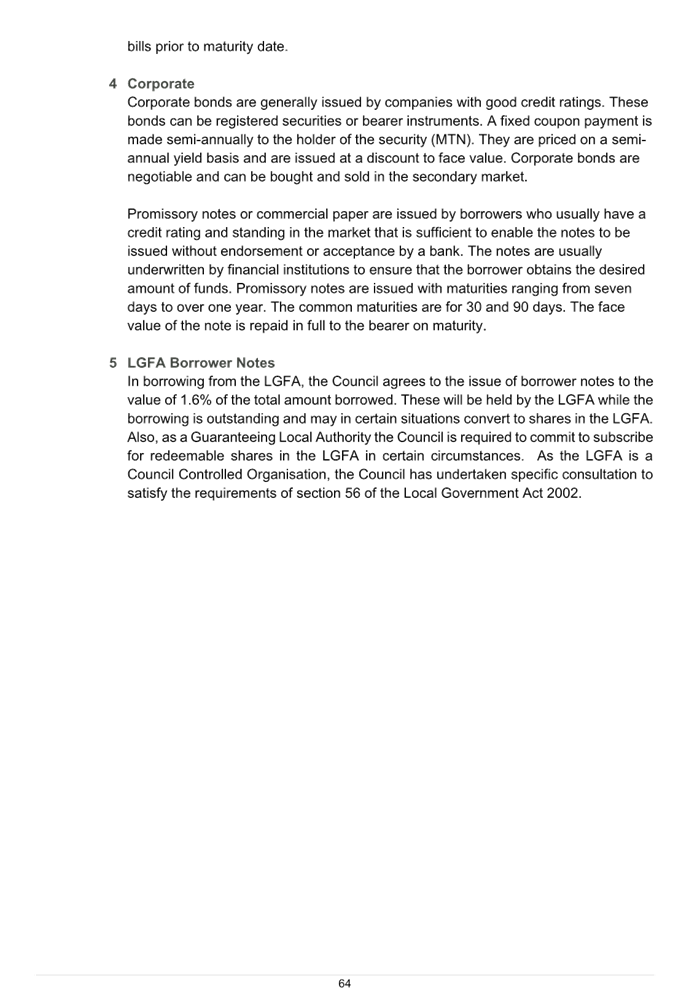





Tasman District Council Agenda – 01 August 2024
7.5 Draft Bylaw for Consultation - Navigation
Safety
Decision Required
|
Report
To:
|
Tasman
District Council
|
|
Meeting
Date:
|
1
August 2024
|
|
Report
Author:
|
Amy
Smith, Community Policy Advisor; Peter Renshaw, Harbourmaster
|
|
Report
Authorisers:
|
Dwayne
Fletcher, Strategic Policy Manager; Kim Drummond, Group Manager -
Environmental Assurance
|
|
Report
Number:
|
RCN24-08-7
|
1. Purpose
of the Report / Te Take mō te Pūrongo
1.1 This
report seeks approval from the Council to consult on the
proposed Statement of Proposal and the Draft Tasman District Council Navigation
Safety Bylaw (Attachment 1) and the Summary of Information (Attachment
2).
1.2 The Issues, Options and Draft Provision Rationale (Attachment 3)
is attached for information only and provides an overview of the key
issues identified, the options that were considered and the provisions proposed
in the draft bylaw to address the issues.
2. Summary
/ Te Tuhinga Whakarāpoto
2.1 Staff
seek the Council’s approval to consult on the Draft
Navigation Safety Bylaw. This draft bylaw would provide the Council with the
regulatory authority to exercise control over specified maritime safety
matters.
2.2 The draft bylaw has a range of provisions due to new developments in
maritime legislation and navigation management thinking; development of new
uses and technologies; opportunities to improve alignment across national
regulations and safety campaigns; and ongoing issues identified by Council
staff and community members.
2.3 The
Mooring Area Bylaw provisions, approved by the Council last year but not yet in
force, have been included in the draft bylaw.
2.4 The draft bylaw also sets out regulations for:
· Wearing a lifejacket (personal floatation device).
· Carrying appropriate communication equipment.
· Vessel identification.
· Small watercraft visibility.
· Vessel tracking.
· Anchoring and mooring.
· Hot work notification.
· A navigation aid levy.
2.5 The
draft bylaw allows for either prosecution or infringements in
the form of fines for specified non-compliance offences.
2.6 The bylaw has been drafted to take a largely permissive approach;
most activities do not require permissions but do require adherence to
specified regulations, although some exemption powers are provided.
2.7 Staff seek approval from the
Council to commence consultation on the draft bylaw using the special
consultative procedure (SCP), as set out in section 83 of the Local Government
Act (LGA) 2002.
3. Recommendation/s
/ Ngā Tūtohunga
That the Tasman District
Council
1. receives
the Draft Bylaw for Consultation - Navigation Safety report, RCN24-08-7; and
2. notes
that the Tasman District Council Navigation Safety Bylaw 2015 was not reviewed
within the statutory timeframe and is revoked in accordance with section 160A
of the Local Government Act 2002; and
3. in accordance with section 155 of the Local Government
Act 2002:
3.1 agrees that the proposed bylaw
is the most appropriate form of bylaw for navigation safety matters; and
3.2 notes that the proposed bylaw
does not give rise to any implications under the New Zealand Bill of Rights Act
1990; and
4. approves the Draft Navigation
Safety Bylaw and Statement of Proposal (Attachment 1 to the agenda report) and
the Summary of Information (Attachment 2 to the agenda report) for public
consultation, using the Special Consultative Procedure as outlined in sections
83 and 86 of the Local Government Act 2002; and
5. approves the consultation
approach (set out in section 10 of the agenda report) and agrees:
4.1 the approach includes
sufficient steps to ensure the Statement of Proposal will be reasonably
accessible to the public and will be publicised in a manner appropriate to its
purpose and significance; and
4.2 the approach will
result in the Statement of Proposal being widely publicised as is reasonably
practicable as a basis for consultation; and
6. authorises staff to give
public notice of the Council’s intention to consult on the Draft
Navigation Safety Bylaw; and
7. delegates authority to the
Mayor and Chief Executive Officer to make any minor amendments to the Draft
Bylaw, Statement of Proposal, or Summary of Information that may be agreed to
at this Council meeting, and make any minor changes; and
8. appoints a Hearings and Deliberations Panel consisting
of:
8.3 Councillor _______________ (Chair)
8.4 Councillor _______________
8.5 Councillor _______________
8.6 Councillor _______________
to hear and consider
submissions on the Draft Navigation Safety Bylaw and make
recommendations to the Tasman District Council.
9. agrees that the Chair of the Hearing Panel can appoint
another member to the Panel, should one of the appointed members
be unavailable.
4.1 Tasman District Council (“the
Council”) has responsibilities for making our waters a safe and
enjoyable place for everyone and this role extends out to the 12-nautical-mile
territorial sea limit.
4.2 Section 33M of the Maritime Transport Act (MTA)
1994 enables a regional council to make navigation bylaws, in consultation with
the Director of Maritime New Zealand (MNZ), for the purpose of ensuring
maritime safety in its region.
4.3 The Council’s 2015
Navigation Safety Bylaw was not reviewed within the required timeframe and is
revoked. Some of the provisions it contained may now be unlawful under the 2017
MTA amendments.
4.4 Staff consider a new bylaw to be
the most appropriate means of ensuring navigation safety in Tasman and setting
out the rules for people using the lakes, rivers and seas in our district for
all water activities.
4.5 The Mooring Area Bylaw
provisions, approved by the Council last year but not yet in force, have been
included in the draft bylaw. This enables the Council to consolidate all
maritime safety provisions in one place, setting out the local rules and
regulations in one document.
4.6 A navigation safety bylaw will
complement the national rules and improve the Council’s regulatory and
enforcement abilities. The bylaw will help the Council to manage actual and
potential water safety issues and mitigate risk associated with vessels on the
water. In developing the bylaw, we also considered any future emerging risks.
5. Analysis
and Advice / Tātaritanga me ngā tohutohu
5.1 In Tasman, we are fortunate to
have an extensive 812km coastline and many inland rivers, lakes and beaches,
often in remote areas. Our great climate and environment contribute to a
significant increase in recreational water users over summer undertaking a
variety of water activities, boating and sports.
5.2 There are 67 boat access
locations along our coast, and we have high levels of commercial passenger
traffic. The Tasman District has two ports, located at Motueka and Tarakohe.
Council Workshop
5.3 A range of local navigation
safety issues were discussed at a Council workshop in May 2024 that could be
addressed in a bylaw, including:
· Requirements or exemptions for wearing a lifejacket (personal
floatation device).
· Easily identifying a vessel, and its owner or skipper.
· Long term anchoring.
· Risks from large vessel activity.
· The visibility of small, lone watercraft.
· Identifying and improving the regulation of jet skis (personal
watercraft).
· Communication requirements for vessels.
· High traffic density in some areas of the coastline.
5.4 Staff have considered whether any
of these problems could be resolved without using a bylaw, for example, through
existing powers to deal with the matters like the Tasman Resource Management
Plan (“TRMP”), educating the community, establishing new
maritime facilities or where it might be the role of other agencies.
5.5 Staff advise that a bylaw is the
most appropriate way of addressing the above issues, for the reasons set out in
paragraph 0 below.
Early Engagement
5.6 There are a wide range of people
and groups that are interested in what the Council might include in a
navigation safety bylaw. It was important that these parties were aware of the
bylaw project and that staff had an early understanding of any issues not yet
identified.
5.7 Targeted early engagement
activities were undertaken during June 2024 using the Shape Tasman platform.
During the early engagement period, the Harbourmaster hosted an information
session with approximately 45 local commercial vessel operators and other key
stakeholders. Feedback was invited on how people might like to see the local
navigation safety issues addressed by the new bylaw.
5.8 We received around 30 submissions
from individuals and organisations. Some of the feedback was out of scope for
this bylaw. The early engagement feedback and follow up conversations have
helped staff prepare the draft bylaw.
5.9 A summary of the early engagement
was provided to elected members in July 2024 and is available to the public on
Shape Tasman.
Bylaw Content
5.10 Staff reviewed the now-revoked 2015 bylaw
and considered whether any of the content needs to be included in the new,
draft bylaw. The review determined:
· The old bylaw is now quite outdated and no longer fit for purpose.
· Some matters, such as biosecurity and environmental protection, are
well covered by other legislation or considered out of scope of a navigation
safety bylaw.
· Other matters, such as sound and light signal requirements for
vessels, are set out in the MTA 1994 or the national Maritime Rules Part
91 (Navigation Safety) or Part
22 (Collision Prevention) and do not need to be repeated in a bylaw.
· Some provisions that are no longer relevant or appropriate to be
included in the bylaw, including the licensing of commercial vessels and the
occupation of the Māpua wharf and/or floating jetty.
· There is some content in the old bylaw that should be carried
forward and/or updated for inclusion in the draft bylaw, including provisions
covering the reserved areas, access lanes, restricted areas or prohibited
activities, and speed uplifted areas.
5.11 A model navigation safety bylaw template has
been developed and reviewed by other regional councils and the national
Harbourmasters Forum (part of the Te Uru Kahika network) and is considered to
reflect good practice. Other councils have used this template recently when
reviewing and updating their navigation safety bylaws, including Environment
Canterbury and Hawkes Bay Regional Council. This template is used as the basis
for the preparing the draft bylaw.
5.12 The draft bylaw has a range of provisions
due to:
· new developments in maritime legislation and
navigation management thinking,
· development of new uses and technologies,
· opportunities to improve alignment across national regulations and
safety campaigns, and
· ongoing issues identified by staff and community members.
5.13 Staff
have focused on the key issues associated with the ongoing safety of the
community on the water. The draft bylaw is proposed to help address these
concerns and aims to improve the management of navigation safety in Tasman.
5.14 An
explanation of the key issues identified, the options that were considered and
the provisions proposed in the draft bylaw to address the issues are detailed
in Attachment 3 and summarised in the table below:
|
Identified issue
|
Proposed bylaw provisions
|
|
Inconsistent use of
lifejackets (personal floatation devices)
|
Requirement to wear a
lifejacket on smaller vessels when underway and on larger vessels if
instructed to do so by the person in charge of that vessel.
|
|
Unsuitable or no communication
equipment on the vessel
|
Vessels must have appropriate
equipment to communicate using two independent forms of communication at any
time and be adequate for the duration of the voyage.
|
|
Difficulty identifying vessels
and its owner and/or skipper
|
Vessels to display an
identifying name, such as a Maritime NZ registration or boat trailer
registration. Non-powered vessels and watercraft powered by paddles or oars
must be marked with the current owner’s name and contact details.
|
|
Lone, small watercraft are not
easily visible particularly when they are not close to the shore
|
Paddle craft used beyond 200m
of the shore must be clearly visible to any other water users, for example by
using high visibility personal floatation devices and equipment, flags or
lights.
|
|
Commercial pressure and
high-speed traffic density in some areas of the coastline
|
Vessel tracking: large
vessels, commercial vessels over 18m in length and passenger vessels licenced
to carry 12 or more passengers, as well as any passenger vessel operating
during the hours of darkness or restricted visibility, must carry AIS and
transmit an accurate signal when in Tasman waters.
|
|
Risks from large vessel
activity
|
Harbourmaster permission is
required before a large vessel can anchor in Tasman waters, except in an
emergency. The vessel may be required to submit a passage plan before it is
directed to an anchorage site.
|
|
Long term anchoring
|
The Harbourmaster may direct
any vessel to not be left unmanned. No vessel can be secured to/on the beach
or foreshore (unless it is a small vessel left for less than 48 hours) or
left unattended at any landing place without permission.
|
|
Unknown risks from hot work
activity
|
The Harbourmaster must be
notified not less than two hours before commencing hot work operations.
|
5.15 A
new navigation aid levy is also proposed for commercial vessels operating along
the coastline and will be used for the replacement and maintenance of the
seasonal floats.
5.16 Nelson
City Council and Marlborough District Council are reviewing their navigation
safety bylaws and staff have worked collaboratively with their respective
Harbourmasters on a range of provisions in the draft bylaw, particularly the
rules for recreational water users, to aim for consistency across all three
councils.
5.17 Staff
have worked closely with MNZ throughout the process. The draft bylaw has been
reviewed by the bylaw team at MNZ and their report is with its Chief Executive
for sign-off.
5.18 The
draft bylaw has also been reviewed by local maritime law specialists and
changes have been made based on their advice.
6.1 The options are outlined in the
following table:
|
Option
|
Advantage
|
Disadvantage
|
|
1.
|
The Council approves the Draft Navigation
Safety Bylaw and supporting documents for consultation.
|
Maritime safety matters can be better
regulated and enforced by the Council.
Public opinion is better understood
through a consultation process.
|
No material disadvantages identified.
|
|
2.
|
The Council approves the Draft Navigation
Safety Bylaw and supporting documents for consultation, but with amendments.
|
Opportunity to consider further feedback
from the Council (minor amendments are delegated to the Mayor and the Chief
Executive).
|
Significant changes would require
external legal review to confirm the legality of the changes and possible
further consultation with the Director of MNZ.
|
|
|
The Council does not approve the Draft
Navigation Safety Bylaw and supporting documents for consultation.
|
No material advantages identified.
|
The Council will continue to rely on
general enforcement powers under the MTA 1994.
|
6.2 Option 1 is recommended.
7.1 Section 33M of the MTA 1994
allows the Council to make a bylaw for the purpose of ensuring maritime safety
in the district.
7.2 Section 158(1) of the LGA 2002 requires a bylaw
made under the MTA 1994 to be reviewed no later than five years after the date
on which the bylaw was made. The Council’s 2015 Navigation Safety Bylaw
was not reviewed within this timeframe and is consequently revoked. There is
currently no navigation safety bylaw in force for the Tasman District.
7.3 The MTA 1994 states that a
navigation bylaw must be made in consultation with the Director of MNZ. In
practice, this means MNZ review the draft bylaw and provide feedback, usually
before public consultation. MZN also have the final “sign off,”
although cannot change the bylaw content once it has been approved by the
Council.
7.4 An early draft of the bylaw was
provided to the bylaw team at MNZ on 27 June 2024 and an updated draft sent to
them on 9 July 2024. A report with its feedback on the draft bylaw was received
late on 24 July 2024. Staff intend to seek further legal advice on this report,
before making any changes to the bylaw.
7.5 Once adopted, the associated Maritime Transport Regulations 2016 will need to
be updated via an Order in Council to refer to the new bylaw and specify which
breaches of the bylaw are infringement offences and prescribe the associated
infringement fines. These regulations are administered by the Ministry of
Transport.
Determination on Whether the Bylaw is Appropriate
7.6 Section 155(1) of the LGA 2002 requires the
Council to determine whether a bylaw made under the MTA 1994 is the most
appropriate way of addressing a perceived problem. Section 155(2)(b) requires the Council to
determine whether the proposed bylaw is the most appropriate form of bylaw and
gives rise to any implications under the New Zealand Bill of Rights Act (NZ
BORA) 1990.
Is the proposed bylaw the appropriate means of addressing
the perceived problem?
7.7 Staff have
considered the options for ensuring navigation safety in the Tasman District:
|
Options
considered
|
Reason for
rejection or acceptance
|
|
No bylaw and
transfer jurisdiction to Maritime New Zealand
REJECTED
|
Having no
bylaw means that the Council has no regulatory mandate (other than those
relating to the Harbourmaster granted under the Maritime Transport Act 1994)
to enforce appropriate behaviour and ensure navigation safety on Tasman
waters.
|
|
Without a
bylaw, monitoring and enforcement responsibilities revert to Maritime New
Zealand which may not have local capacity to adequately manage risks to
navigation safety in Tasman’s waters.
|
|
No bylaw and
include rules in the Tasman Resource Management Plan
REJECTED
|
This is an
alternative regulatory tool provided through the Resource Management Act 1991
(RMA). The RMA does not include provisions that address maritime safety or
navigation as these are more appropriately addressed under the MTA 1994 and
other legislation.
|
|
Regulating
maritime issues under the RMA is therefore inappropriate and not considered a
suitable option.
|
|
The Council
maintains a bylaw for navigation safety matters in the Tasman District in
accordance with the LGA
ACCEPTED
|
A bylaw
enables the Council to remain aware of and directly involved in matters of
local significance.
|
|
A bylaw
provides a clear framework for managing navigation safety issues in the
district in accordance with the LGA 2002.
|
|
It is common
practice throughout New Zealand for councils to have a navigation safety
bylaw and this is consistent with the Council’s responsibilities to
manage maritime safety risks in Tasman.
|
Is the
proposed bylaw the most appropriate form of bylaw?
7.8 Under section 155(2)(a) of the LGA
2002, the Council must determine whether the Draft Navigation Safety
Bylaw is in the most appropriate form (for example, a standalone bylaw,
amendment to existing document, or consolidation with other bylaws).
7.9 Staff have engaged both
internally and externally on the intent and wording of this bylaw. An early
draft of the bylaw was reviewed by the Nelson, Marlborough and Canterbury
Harbourmasters and their feedback helped staff refine the draft bylaw.
7.10 External review of the content and legality
of the draft bylaw was provided by maritime law specialists, Dawson and
Associates, and changes were made based on their advice.
7.11 The MTA 1994 requires the Director of MNZ to
be consulted when making a bylaw on maritime safety matters. The draft bylaw is
currently with MNZ and a report outlining its feedback is expected in due
course.
7.12 Staff
are confident the draft bylaw is in the most appropriate form as it:
· Holds all the relevant regulations in one place and is easily
accessible.
· Is targeted and focusses only on navigation safety.
· Ensures the bylaw and the matters being addressed cannot be confused
with others.
· Becomes a repository for all the legal matters associated with
navigation safety in the Tasman District.
· Has been prepared with input from various stakeholders, including
commercial vessel operators and the public, ensuring it reflects the
community’s needs and concerns.
Is the proposed bylaw consistent with the New Zealand
Bill of Rights Act 1990?
7.13 Under
section 155(3) of the LGA, the Council must
determine that the draft bylaw is not inconsistent with the New Zealand Bill of
Rights Act 1990. This Act protects the civil and political rights of all New
Zealanders. Staff considered the following sections of the Bill of Rights Act
as the most common sections that can have implications for bylaw creation:
· s14 – Freedom of expression.
· s16 – Freedom of peaceful assembly.
· s17 – Freedom of association.
· s18 – Freedom of movement.
· s27 – Right to justice.
7.14 The
Draft Navigation Safety Bylaw as proposed here regulates a range of activities
on Tasman waters and could restrict a person’s freedom of movement. These
requirements, considering the interests of ensuring maritime safety, present a
reasonable limit that can be demonstrably justified.
7.15 Staff
advice is that the proposed bylaw does not give rise to any implications or
inconsistencies under the Bill of Rights Act 1990 and are reasonable and
justifiable means to address the identified problems related to navigation
safety in the Tasman District.
Consultation Requirements
7.16 Section 156 of the LGA 2002 sets out the
consultation requirements when making a new bylaw:
156 (1) When making
a bylaw under this Act or amending or revoking a bylaw made
under this Act, a local authority must—
(a) use the
special consultative procedure (as modified by section 86) if—
(i) the bylaw concerns a
matter identified in the local authority’s policy under section 76AA as being of significant interest
to the public; or
(ii) the local authority considers
that there is, or is likely to be, a significant impact on the public due to
the proposed bylaw or changes to, or revocation of, the bylaw;
and
(b) in any case in which paragraph
(a) does not apply, consult in a manner that gives effect to the requirements
of section 82.
7.17 Staff seek approval from the Council to
commence consultation with the public on the draft bylaw under the SCP.
8. Iwi
Engagement / Whakawhitiwhiti ā-Hapori Māori
8.1 Iwi have been notified about the
bylaw review through the Council’s Iwi Engagement Portal and encouraged
to make a submission during the consultation period. Iwi who have indicated
that they would like to be involved will be sent a further email along with
other stakeholders to invite them to make a submission.
8.2 Staff met with a representative
from Ngāti Tama during the early engagement period and discussed their
concerns about environmental damage caused by larger vessels/anchoring and
discharges from vessels into the waters.
9. Significance
and Engagement / Hiranga me te Whakawhitiwhiti ā-Hapori Whānui
9.1 Staff have considered the significance
of this decision in accordance with the Council ’s Significance and
Engagement Policy. The decision is whether to commence consultation under a SCP
on a draft Navigation Safety Bylaw.
9.2 Section 156 of the LGA 2002
requires a council to use the SCP for consultation when making a new bylaw if
it concerns matters that are of significant interest to the public, or there is
likely to be a significant impact on the public due to the proposed bylaw.
9.3 Staff consider that there may be
moderate interest in the draft bylaw from the public, although unlikely to
require dramatic changes in behaviour from most of the community. The draft
bylaw may be of significant interest to some members of the community, such as
commercial vessel operators and recreational boaties, water sports groups and
personal watercraft users.
9.4 It is planned to use the SCP in
accordance with Section 83 of the LGA 2002 for public consultation on the draft
bylaw.
|
|
Issue
|
Level of
Significance
|
Explanation of
Assessment
|
|
1.
|
Is there a high level
of public interest, or is decision likely to be controversial?
|
Moderate
|
The decision to
consult is of low significant, but the bylaw may attract significance
interest from the community.
The creation of a
bylaw is a significant action for the Council.
|
|
2.
|
Are there impacts on
the social, economic, environmental or cultural aspects of well-being of the
community in the present or future?
|
Moderate
|
The creation of the
bylaw is intended to improve maritime safety, which will have a positive
effect on the community.
|
|
3.
|
Is there a
significant impact arising from duration of the effects from the decision?
|
Low
|
The LGA 2002 requires
this bylaw to be reviewed within five years.
|
|
4.
|
Does the decision
relate to a strategic asset? (refer Significance and Engagement Policy for
list of strategic assets)
|
No
|
|
|
5.
|
Does the decision
create a substantial change in the level of service provided by Council?
|
Low
|
This proposal expands
the Council’s current enforcement activities.
|
|
6.
|
Does the proposal,
activity or decision substantially affect debt, rates or Council finances in
any one year or more of the LTP?
|
Low
|
|
|
7.
|
Does the decision
involve the sale of a substantial proportion or controlling interest in a CCO
or CCTO?
|
No
|
|
|
8.
|
Does the
proposal or decision involve entry into a private sector partnership or
contract to carry out the deliver on any Council group of activities?
|
No
|
|
|
9.
|
Does the proposal or
decision involve Council exiting from or entering into a group of
activities?
|
No
|
|
|
10.
|
Does the proposal
require particular consideration of the obligations of Te Mana O Te Wai
(TMOTW) relating to freshwater?
|
No
|
Consideration of
TMOTW obligations is not within the scope of a navigation safety bylaw, as
set out in section 33M of the MTA 1994.
|
10. Communication
/ Whakawhitiwhiti Kōrero
10.1 The consultation period for the Draft
Navigation Safety Bylaw is proposed to be Friday
1 August 2024 to Sunday 1 September 2024.
10.2 Early engagement contacts and stakeholders
that have been identified as having a specific interest in the content of this
bylaw will receive an email notifying them when consultation begins and
encouraging them to make a submission. Iwi will be notified through the iwi
engagement portal.
10.3 The public will be informed about the
consultation through Newsline with a brief article explaining how to make a
submission. An introductory article was published in Newsline on 12 July 2024,
outlining the key water safety issues to be addressed in the bylaw and pointing
people to Shape Tasman to stay up to date.
10.4 The Harbourmaster intends to meet with local
boat and yacht clubs and any other interested groups during the consultation
period to present the draft bylaw and invite them to make a submission, either
as an organisation or individuals.
10.5 The Statement of Proposal (including the
draft bylaw), and a summary of information will be made available at all
Council service centres and public libraries in Tasman throughout the
consultation period.
10.6 Background information and a link to the
submission’s portal will be available through Shape Tasman and the
statement of proposal and summary of information also available here for
downloading.
10.7 Anyone wishing to speak to their submission
will be provided the opportunity to attend a hearing in September 2024. All
submitters will be notified of the Council’s decision on adopting the
policy. All submissions will be publicly available on the Council’s
website.
11. Financial
or Budgetary Implications / Ngā Ritenga ā-Pūtea
11.1 Consultation on this draft bylaw does not
have any material financial or budgetary implications for the Council and is
funded from the existing Environmental Assurance budgets.
11.2 The draft bylaw proposes a range of maritime
fees and charges, including a navigational aid levy. These fees have been set
at a level that covers the cost of the Council administering the bylaw.
12.1 Not approving the draft bylaw will mean that
the Council will continue to rely on general enforcement powers under the MTA
1994, public education, or the TRMP to manage navigation safety in the Tasman
District. This is a risk that the Council is currently facing, as the previous
2015 Navigation Safety Bylaw was not reviewed within the required timeframe and
is revoked.
12.2 If adopted, the new bylaw would be reviewed
within five years. This will help ensure that the maritime safety provisions
remain fit for purpose in a changing environment.
13. Climate
Change Considerations / Whakaaro
Whakaaweawe Āhuarangi
13.1 The draft policy is unlikely to have any impact on
the Council or the Tasman District’s carbon footprint.
13.2 Implementation of the draft bylaw is not likely to
be impacted by the effects of climate change.
13.3 The draft bylaw neither aligns or detracts from the
Council’s and Government’s plans, policies and legal obligations
relating to climate change.
14. Alignment
with Policy and Strategic Plans / Te Hangai ki ngā aupapa Here me ngā
Mahere Rautaki Tūraru
14.1 The scope of what a local navigation safety bylaw
can and cannot do is set out in section 33M of the MTA 1994.
14.2 The mooring area provisions in the draft bylaw will
allow TRMP Plan Change 72 to become fully effective and provide the
Council with a consistent approach to managing moorings in the district.
14.3 Staff request that the Council appoint a
Hearings and Deliberations Panel who will make a recommendation to the Council
on the adoption of a navigation safety bylaw, under section 33M of the MTA
1994.
15. Conclusion
/ Kupu Whakatepe
15.1 The Draft Navigation Safety Bylaw aims to
provide the Council with further regulatory authority over navigation safety
matters for water users in or on the waterways or coastlines in the Tasman
District.
15.2 Staff consider the draft bylaw to be the
most effective method for supporting the safety of people on our waters,
offering a structured approach to local navigation safety rules and improving
the Council’s regulatory and enforcement abilities.
15.3 The bylaw is a new bylaw and, once adopted,
will be reviewed within five years.
16. Next
Steps and Timeline / Ngā Mahi Whai Ake
16.1 Public consultation will run from 1 August 2024 to 1
September 2024. Once consultation has closed, submissions will be heard by the
appointed panel on 11 and 18 September 2024. The Panel will consider all
submissions received and deliberate on any amendments to the draft bylaw as a
result.
16.2 The
recommendations of the Panel will be received and considered by the Council in
October 2024 and decisions made on the adoption of a Navigation Safety Bylaw.
16.3 If
the bylaw is approved for adoption, a public notice will be issued in Newsline
and on the Council’s website that the bylaw has been adopted. A copy of
the bylaw will also be provided to the Director of MNZ.
|
1.⇩
|
Statement
of Proposal - Navigation Safety Bylaw
|
181
|
|
2.⇩
|
Summary of
Information - Navigation Safety Bylaw
|
269
|
|
3.⇩
|
Issues,
Options and Draft Provision Rationale - Navigation Safety Bylaw
|
271
|
Tasman District Council Agenda – 01 August 2024


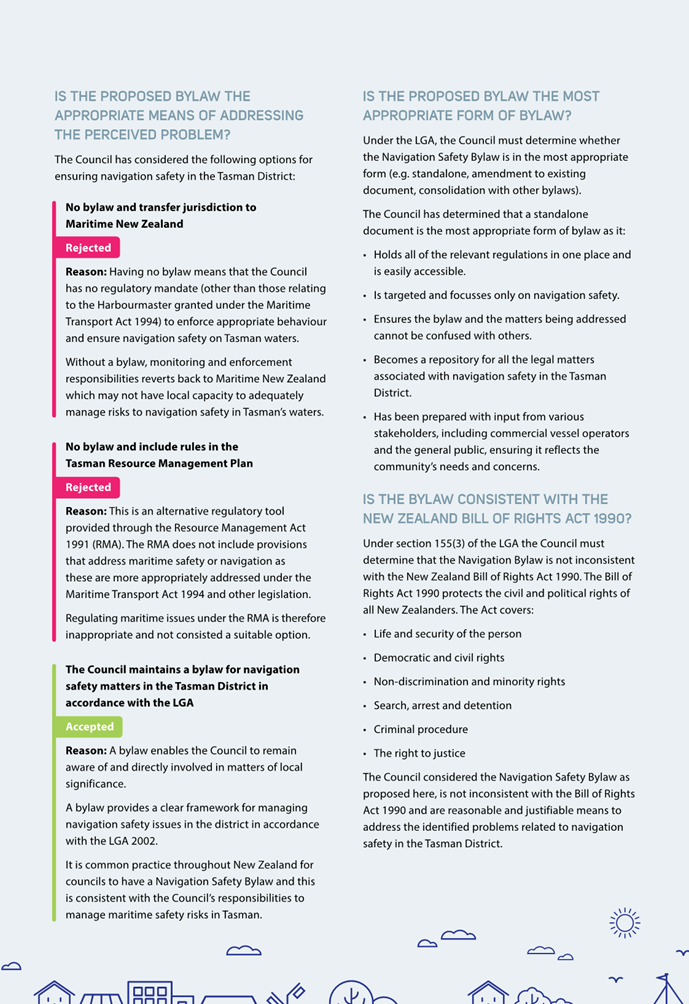

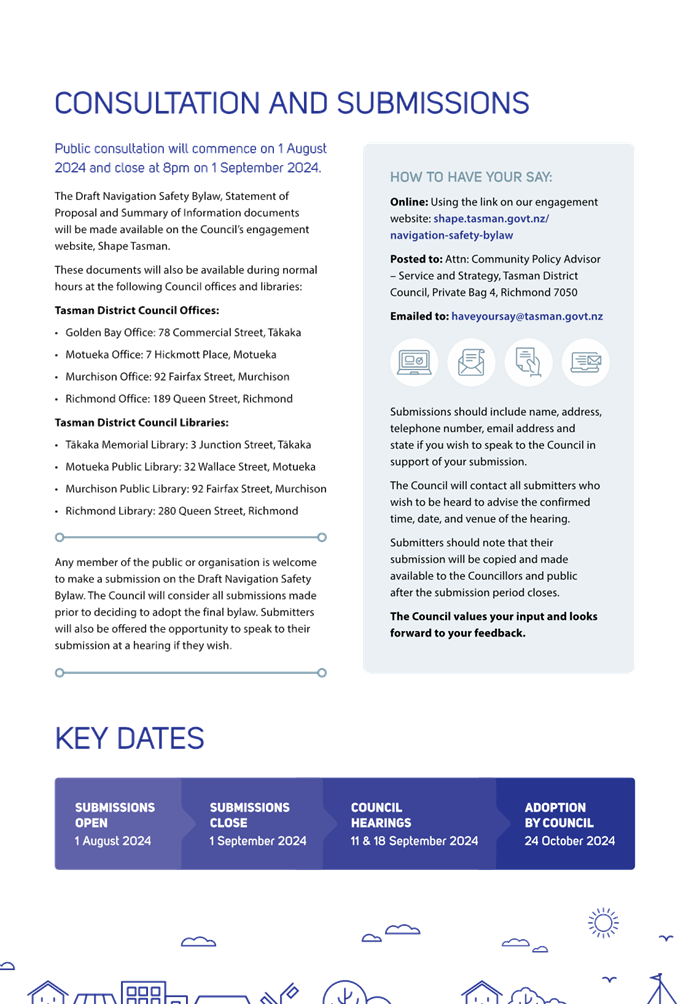
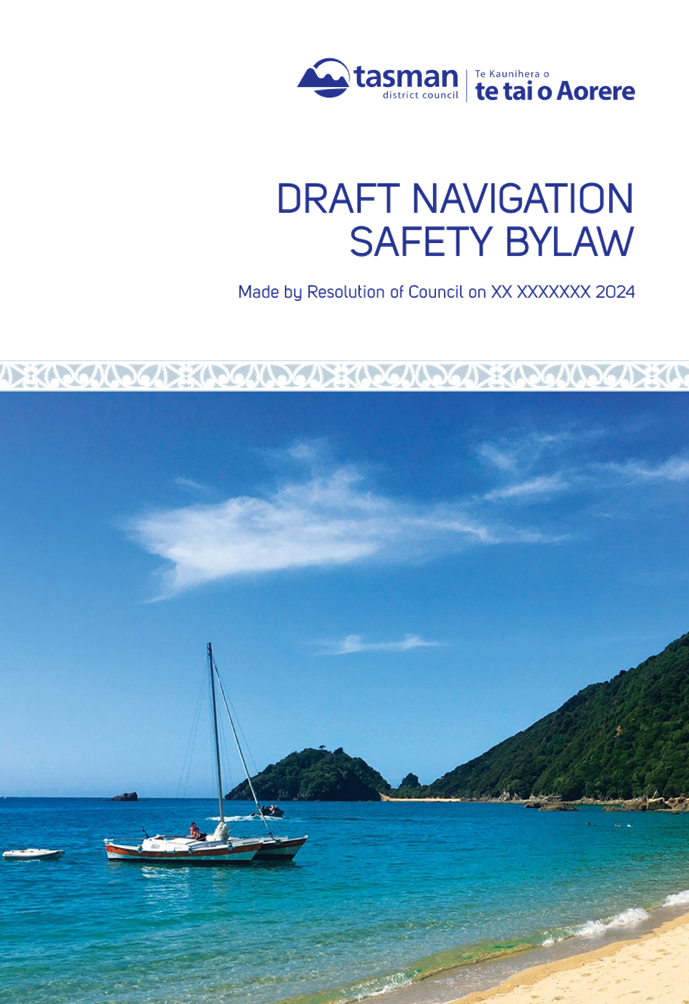
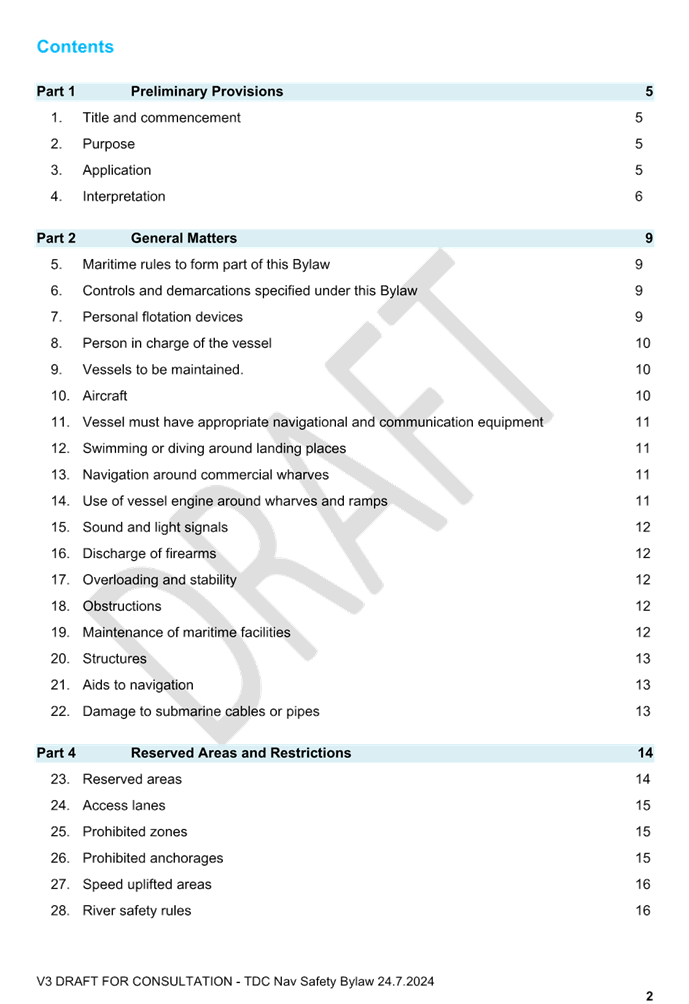
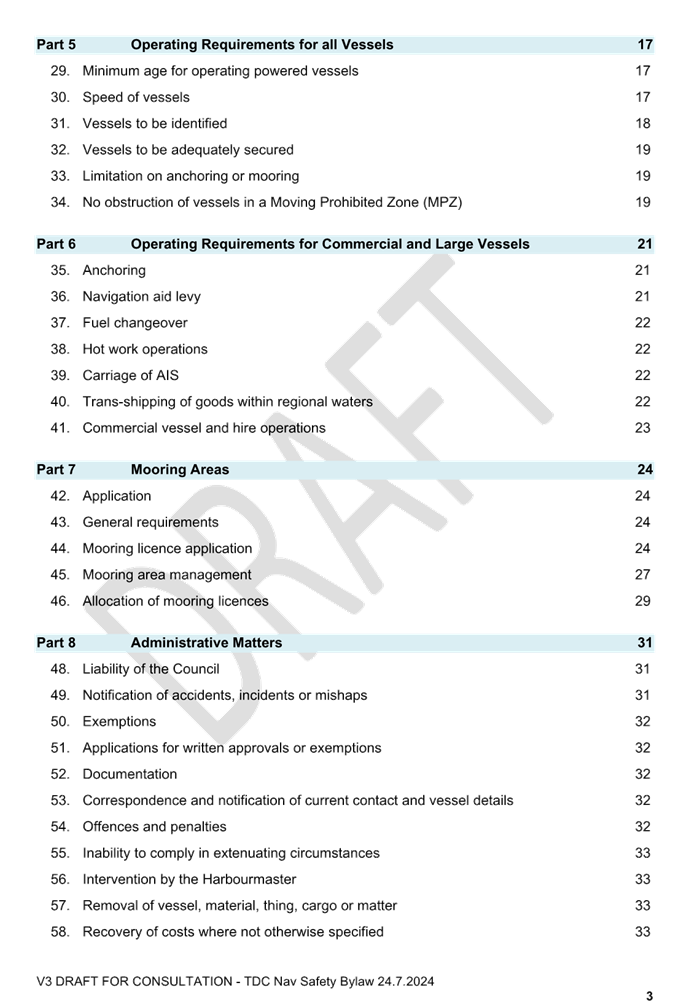
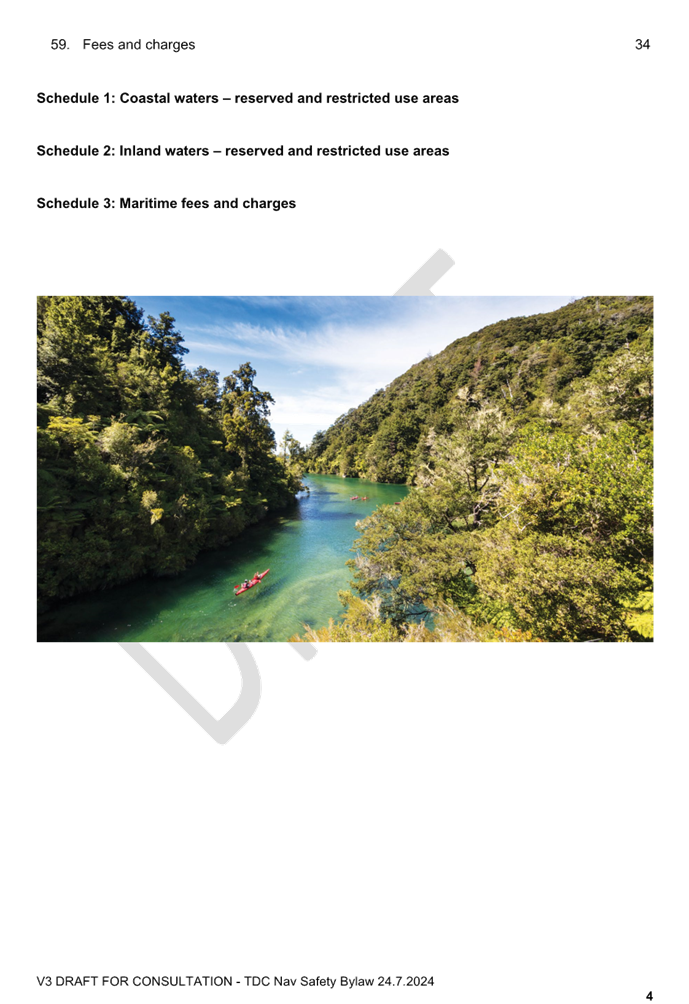
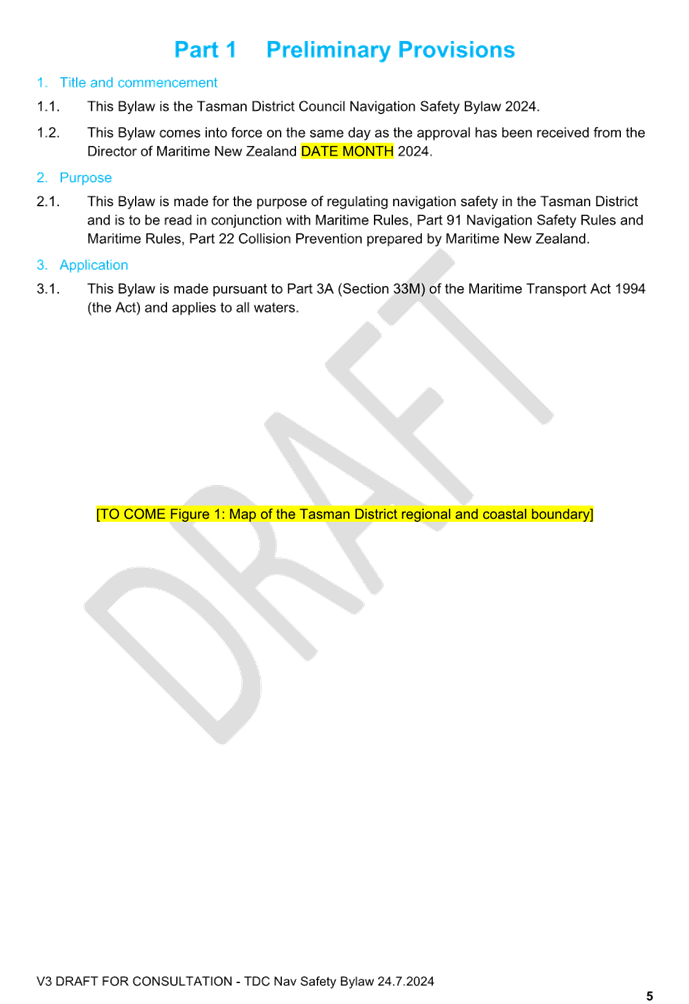
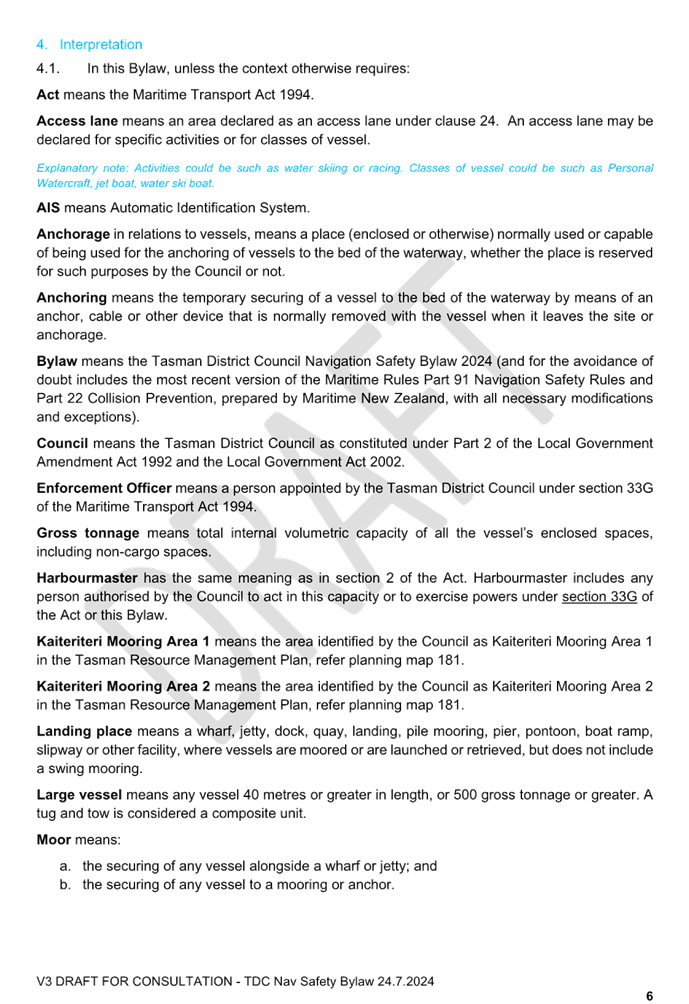
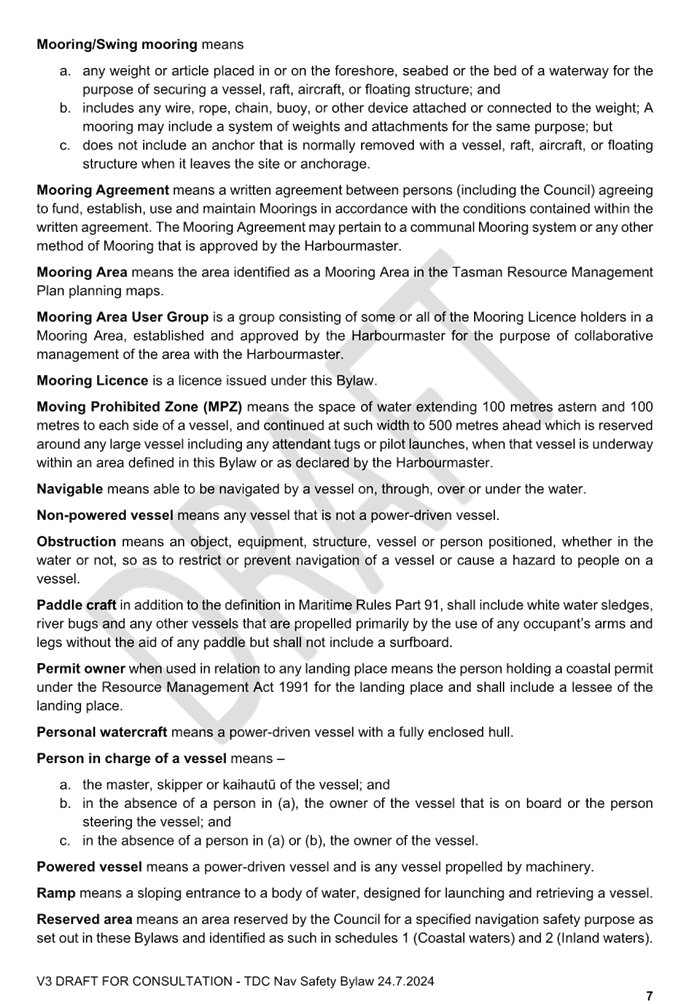
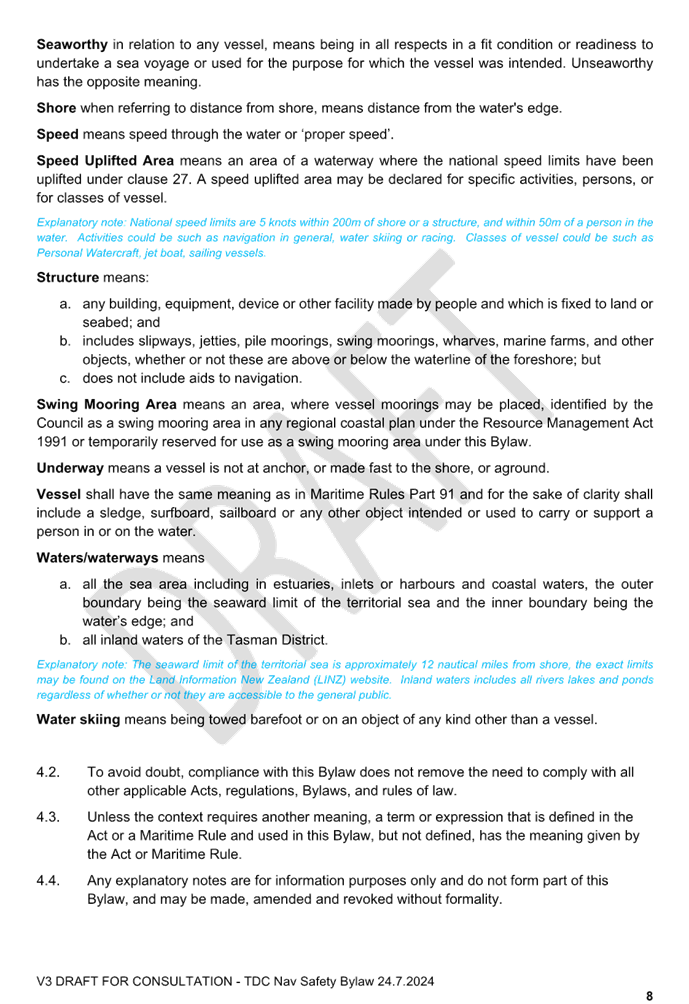
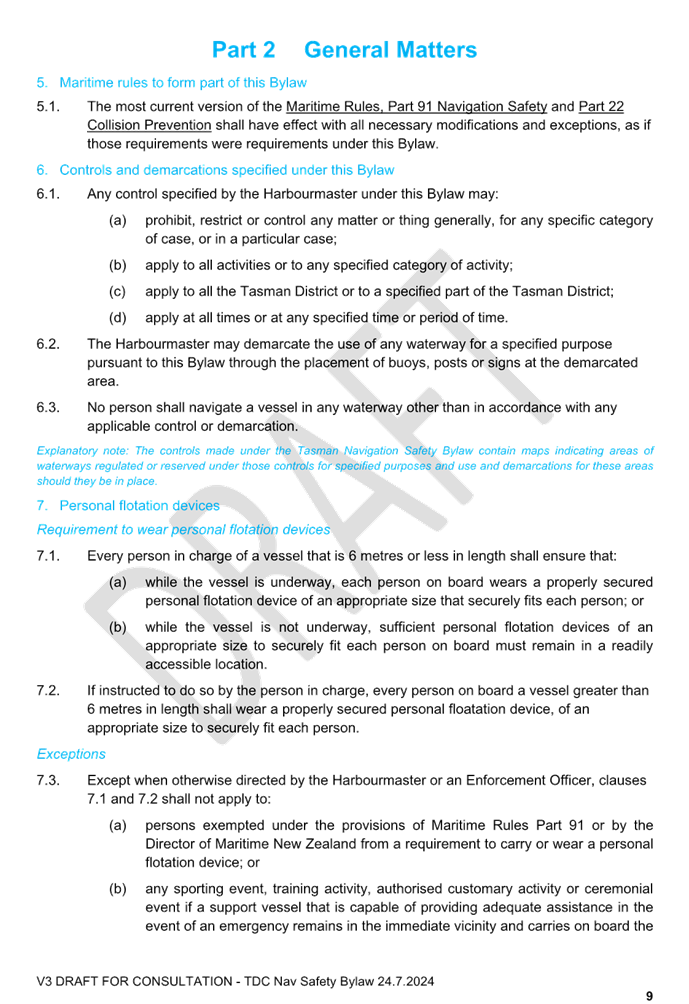
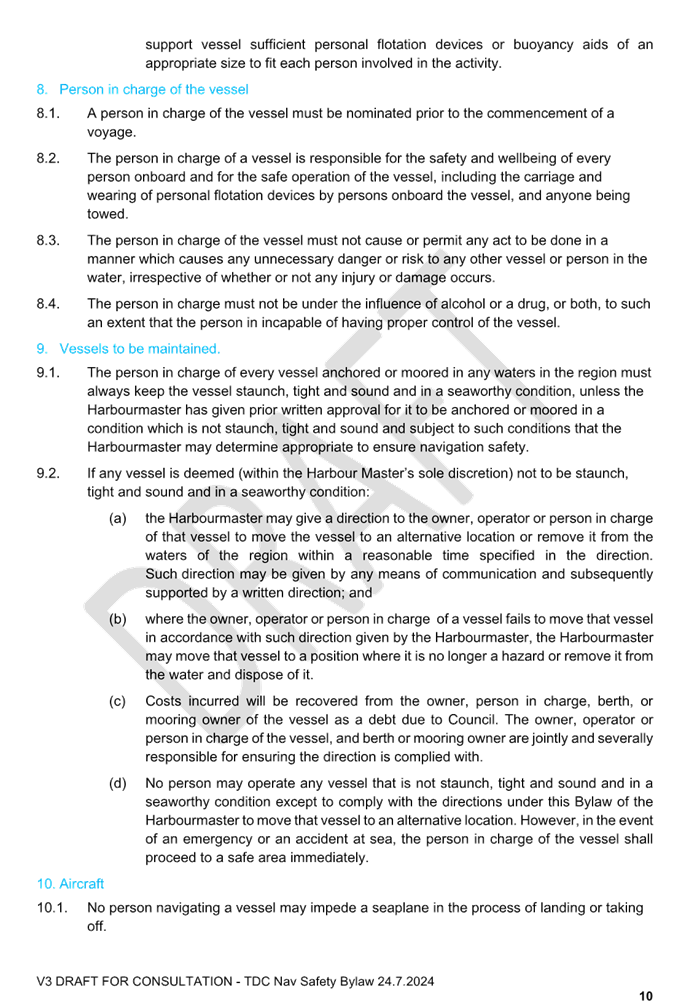
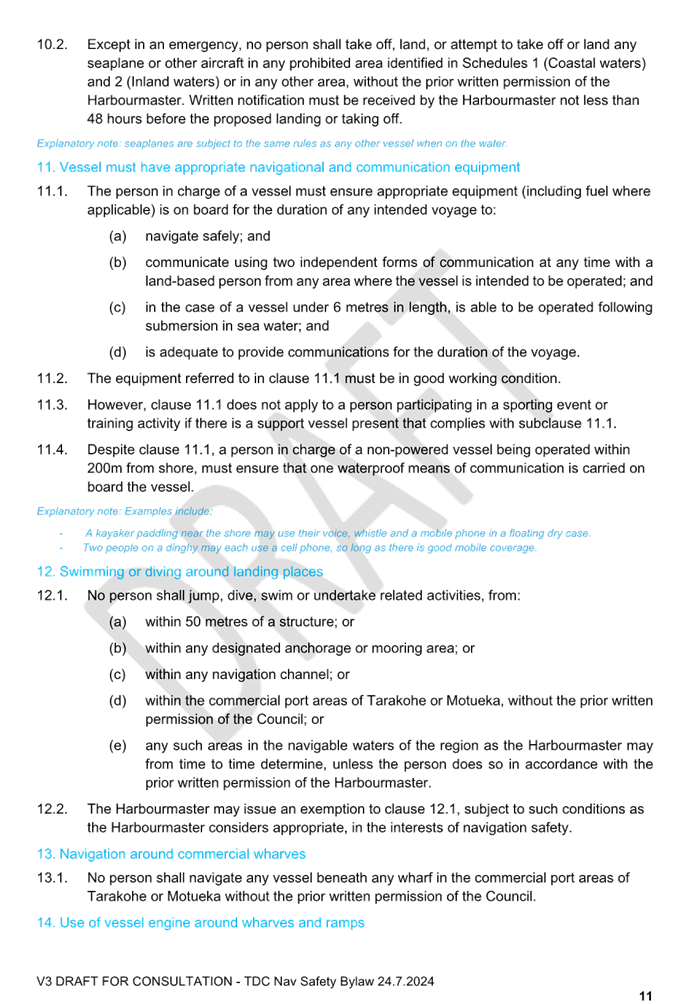
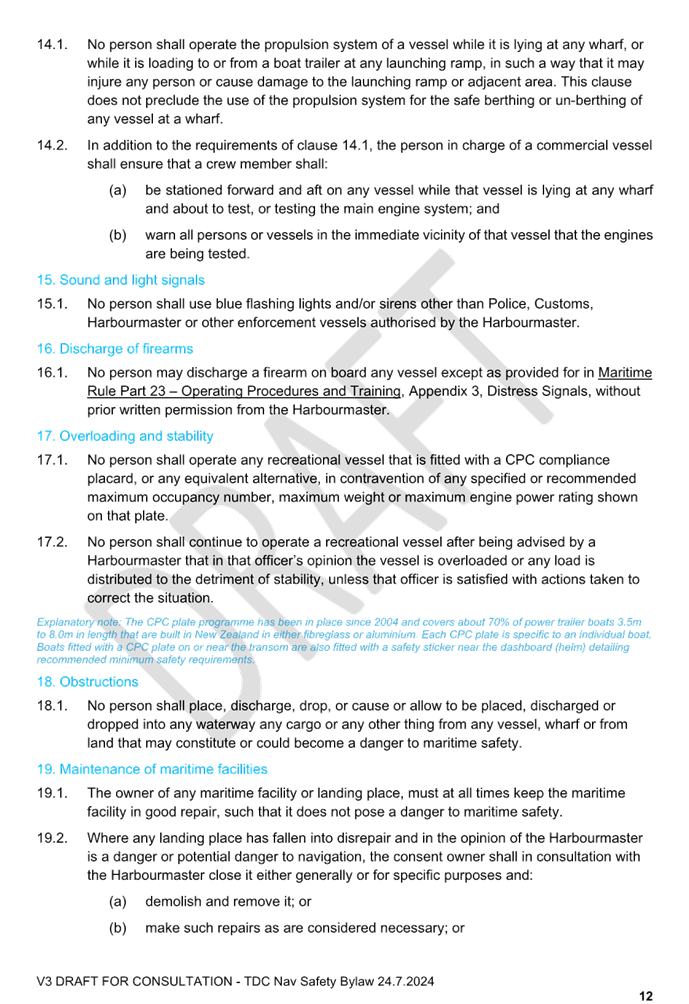
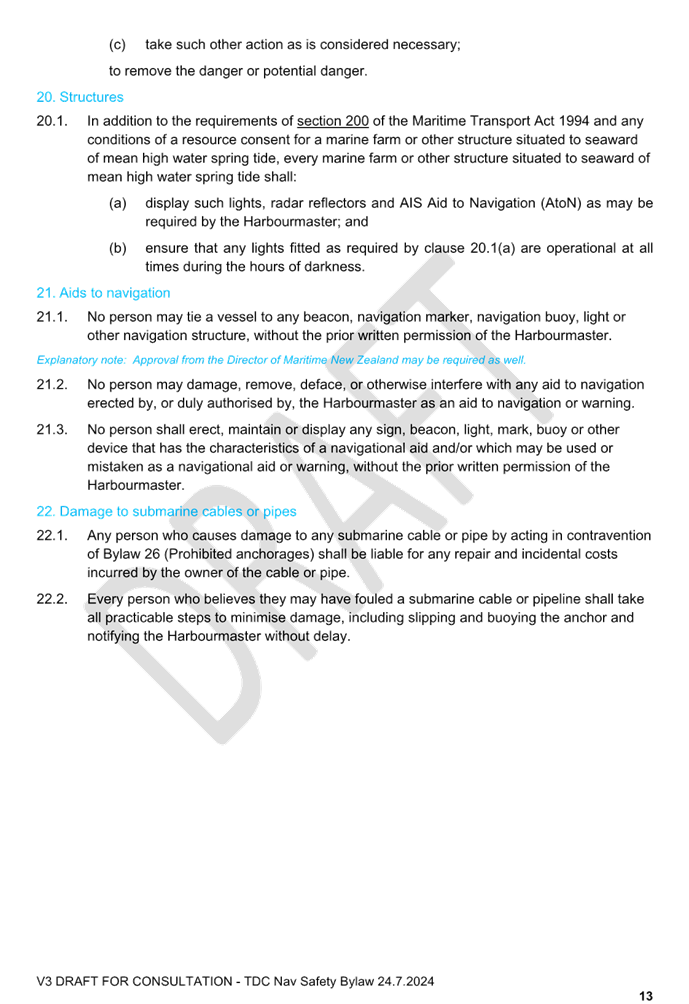
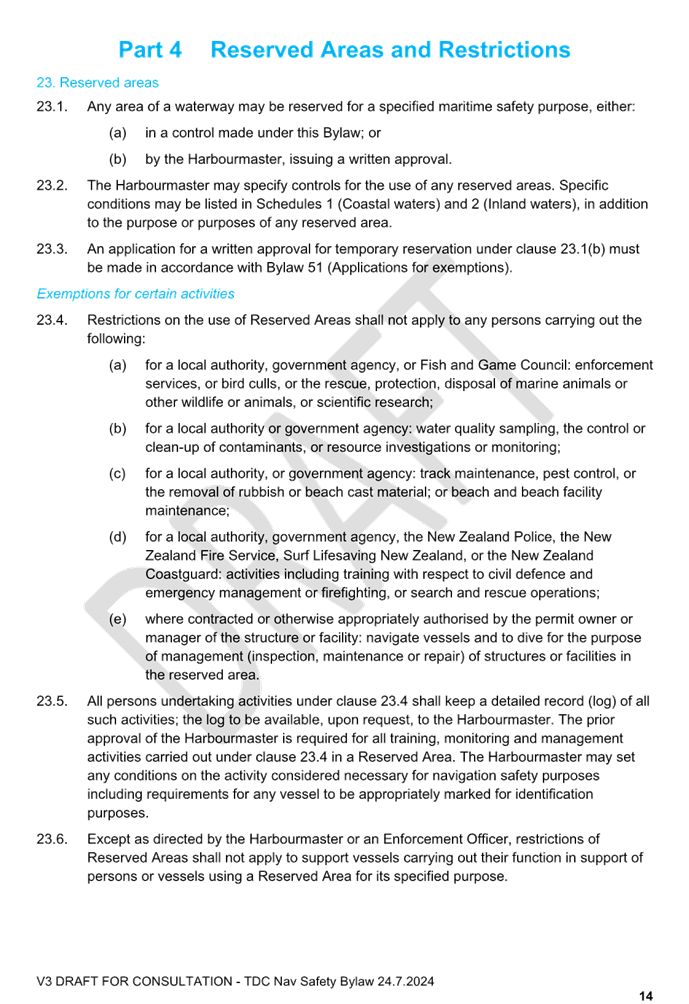
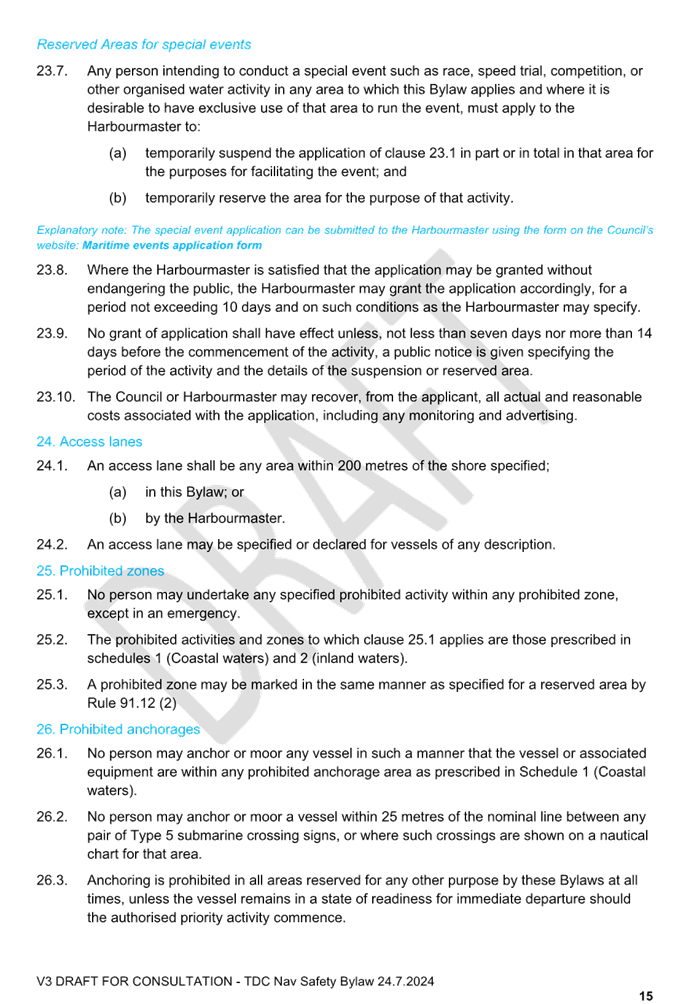
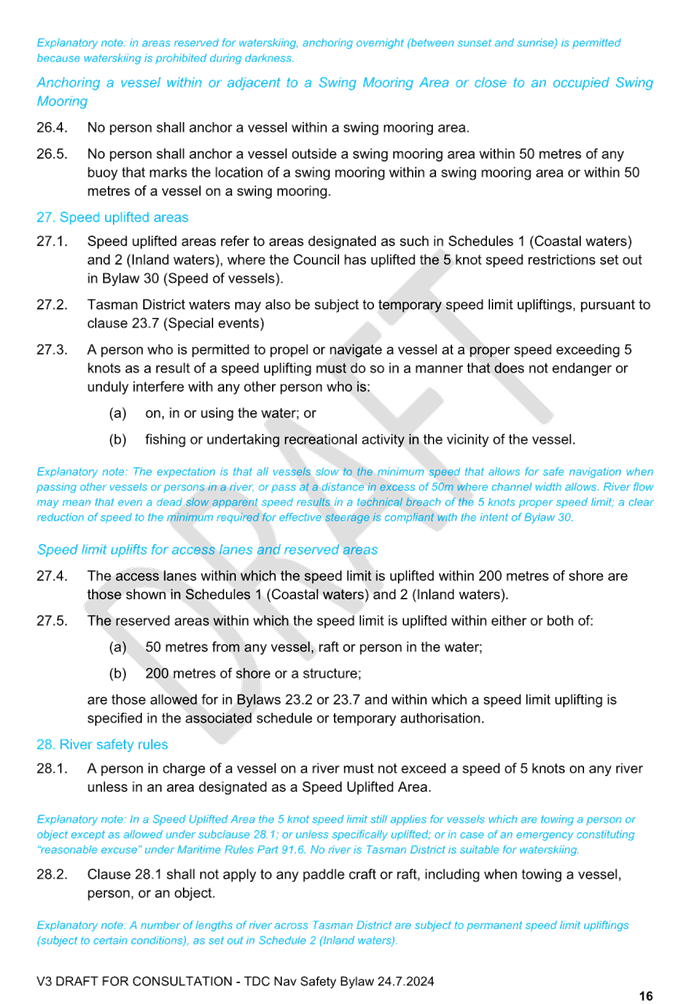
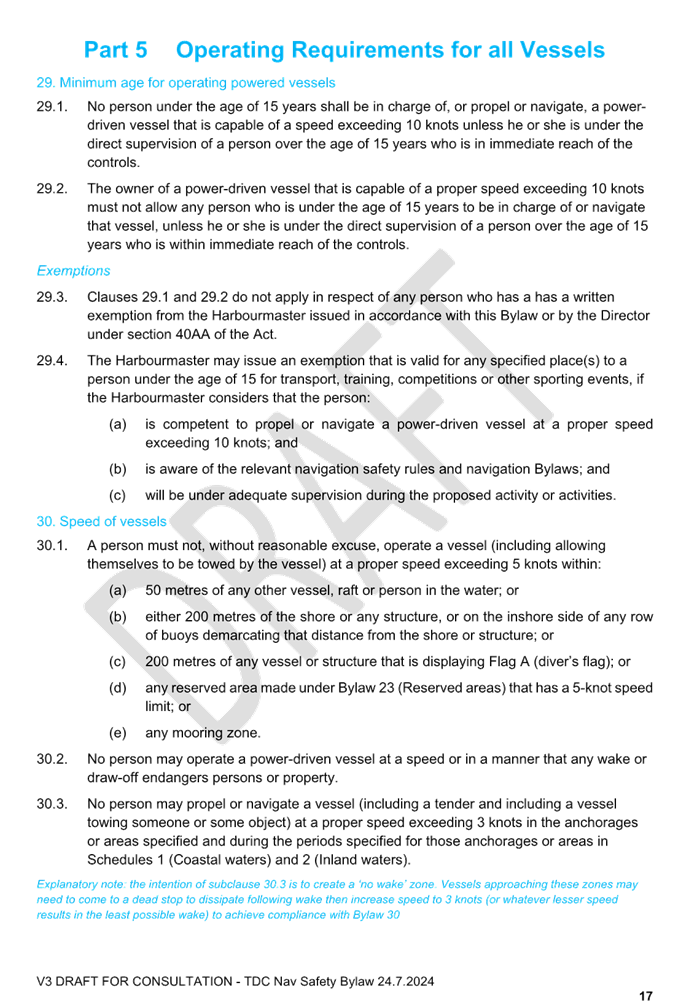
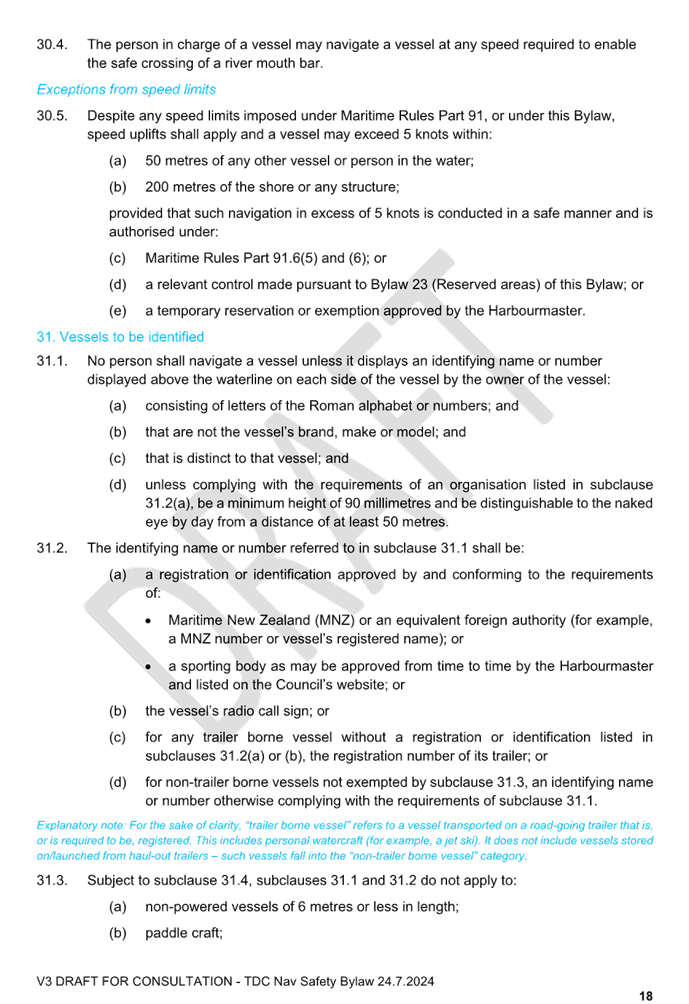
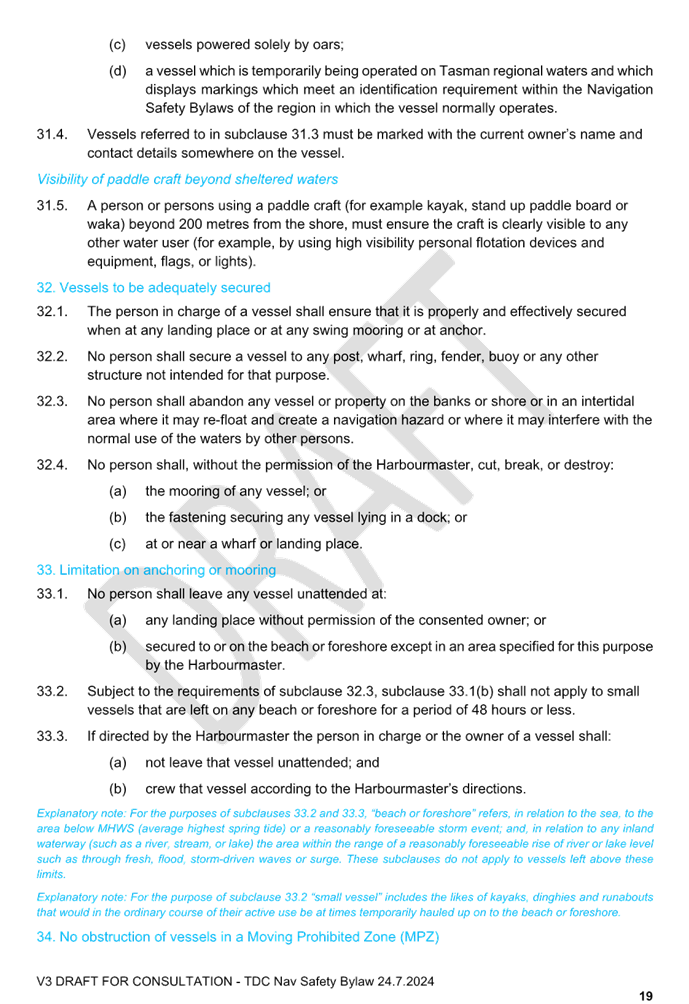
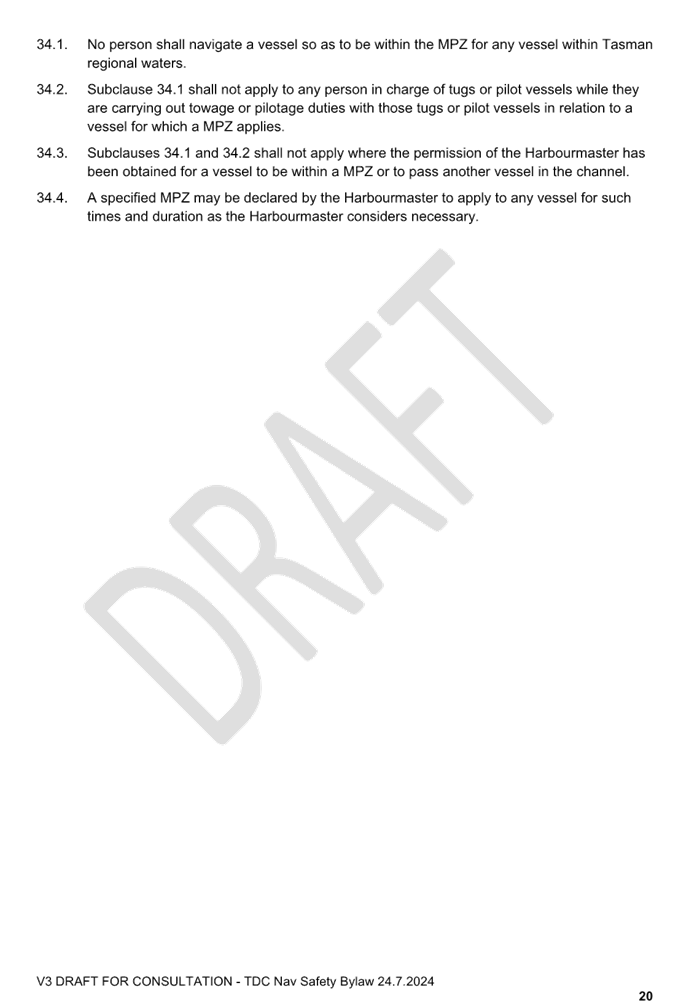
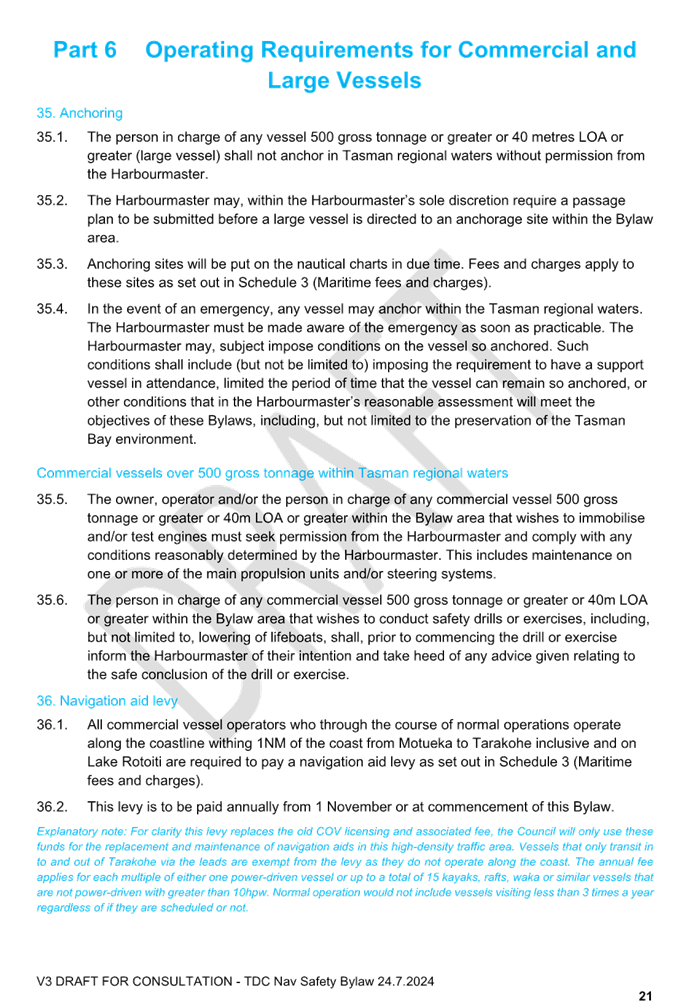
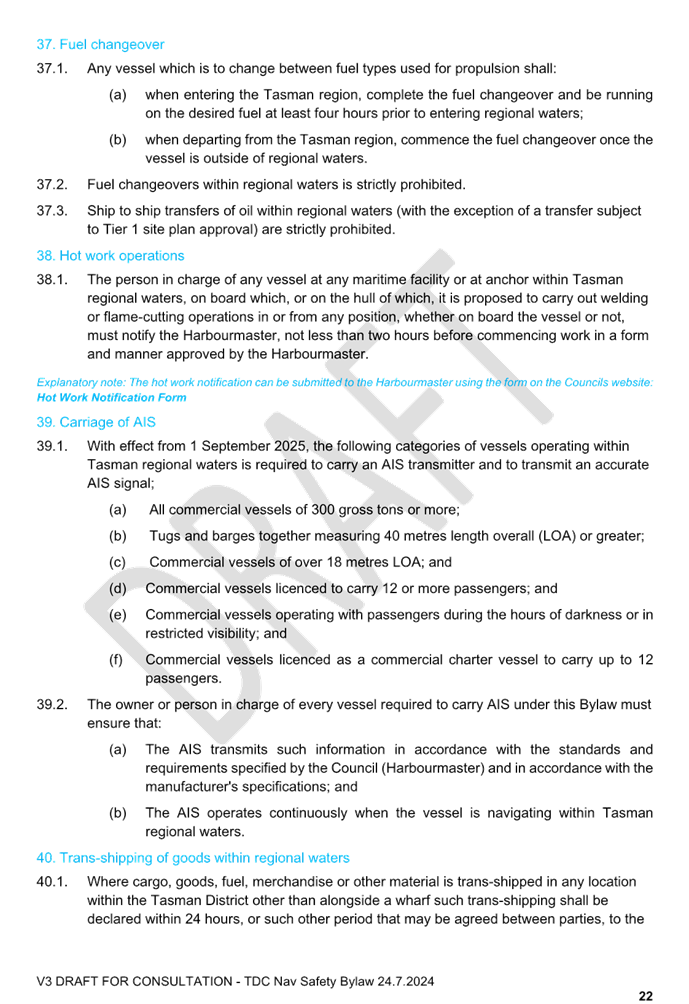
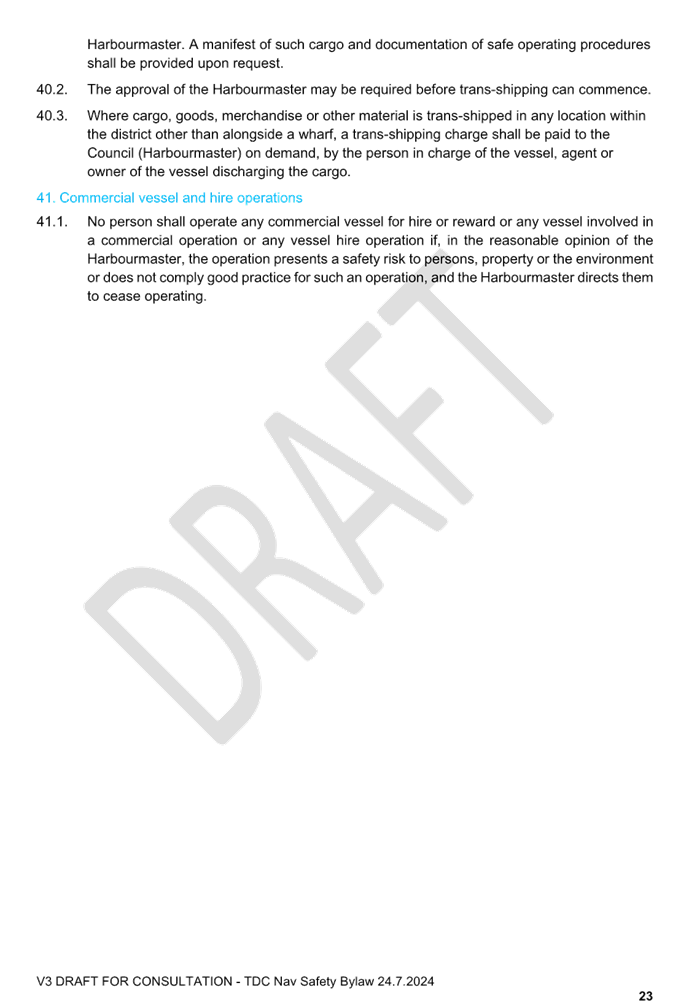
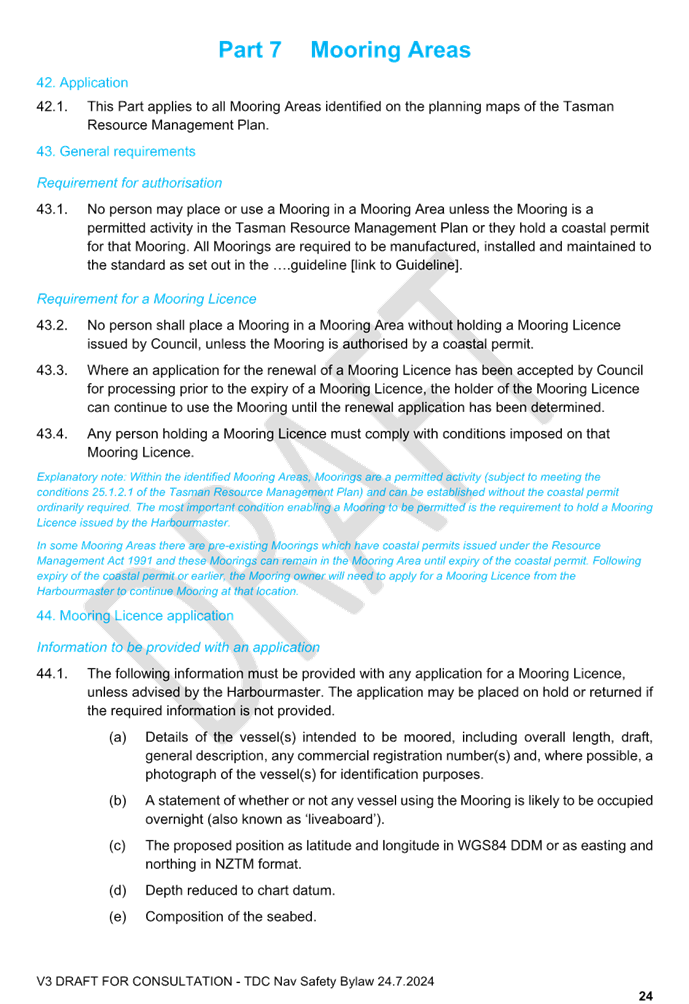
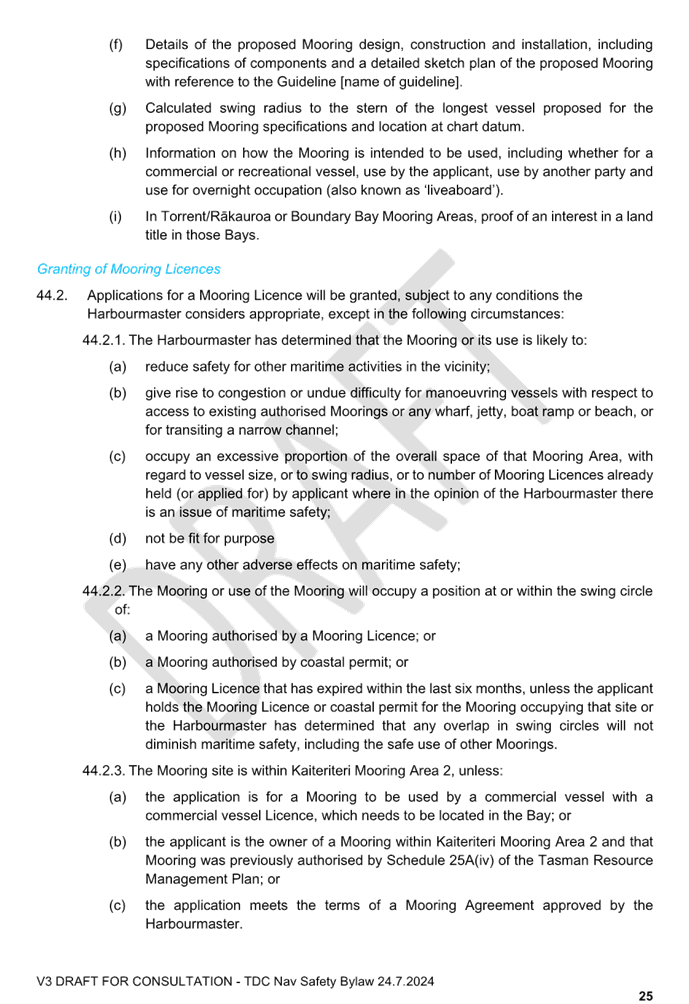
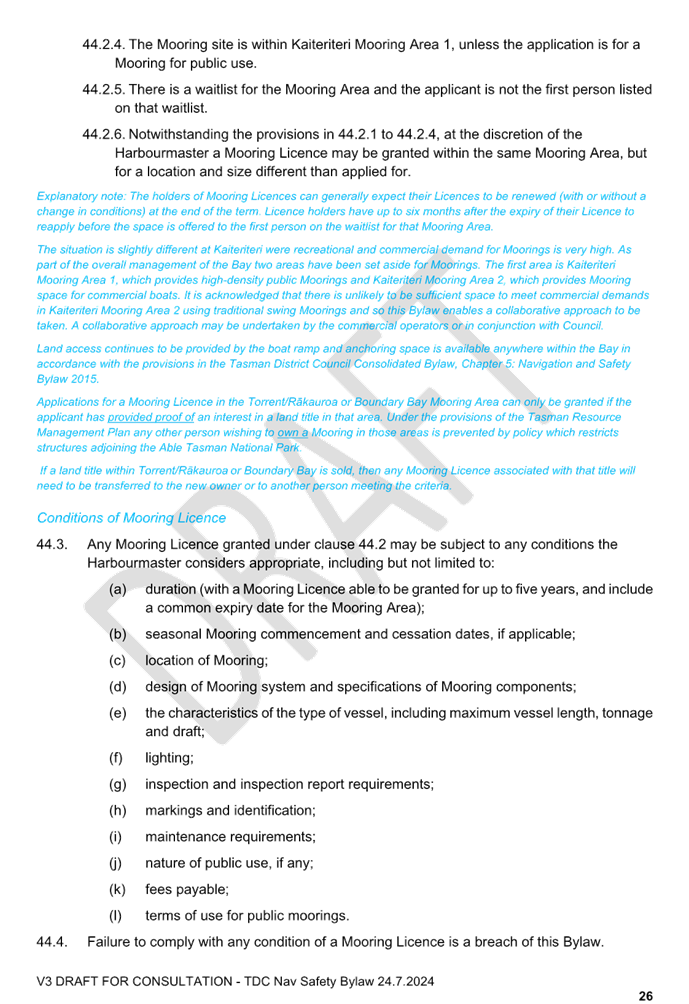
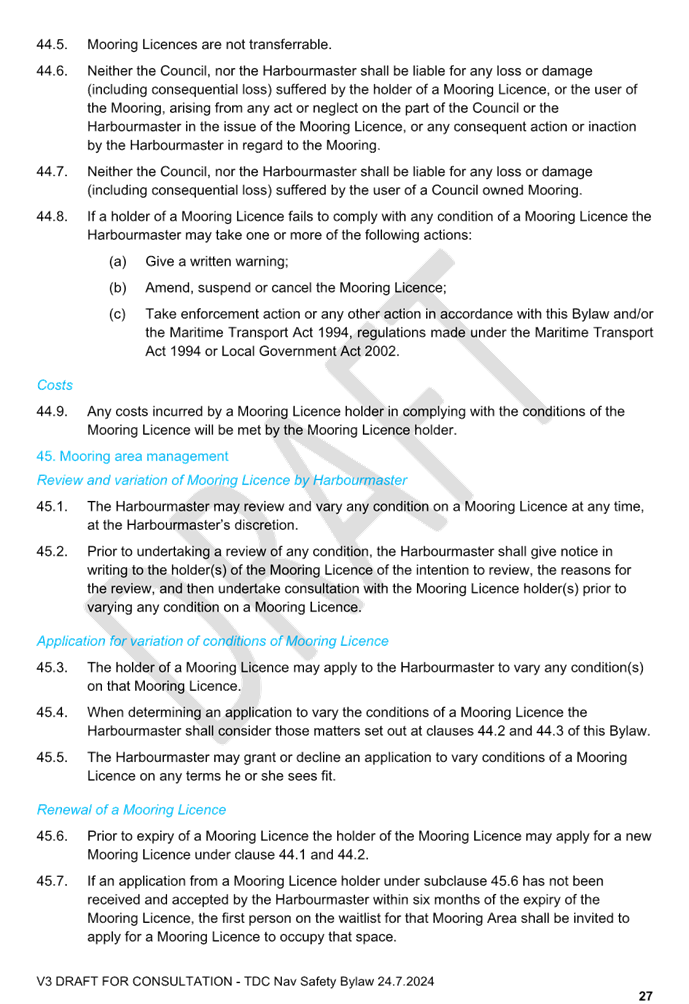
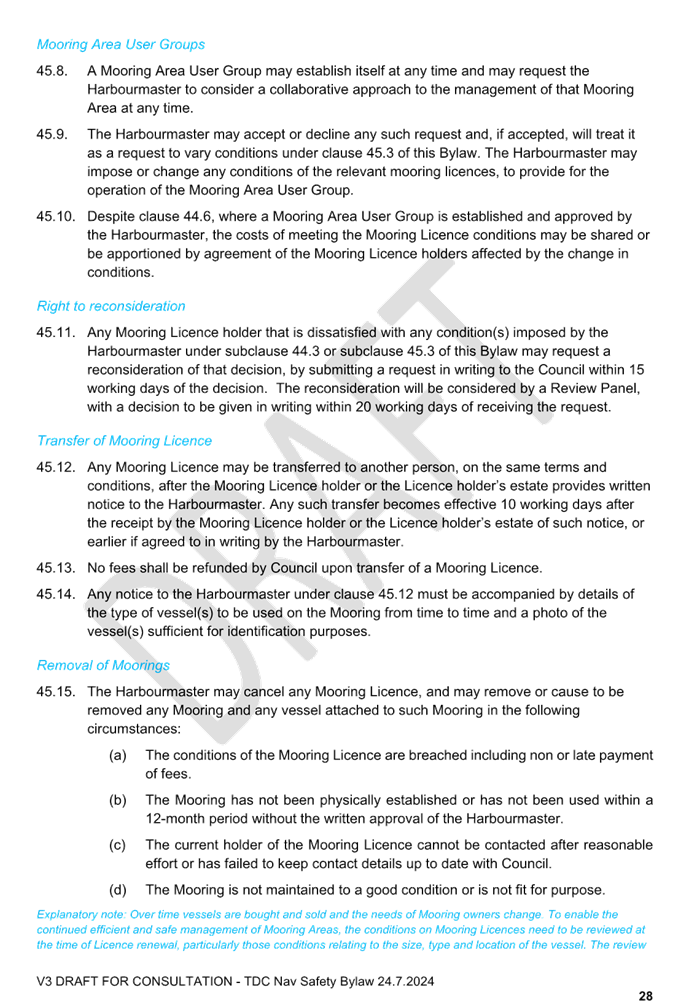
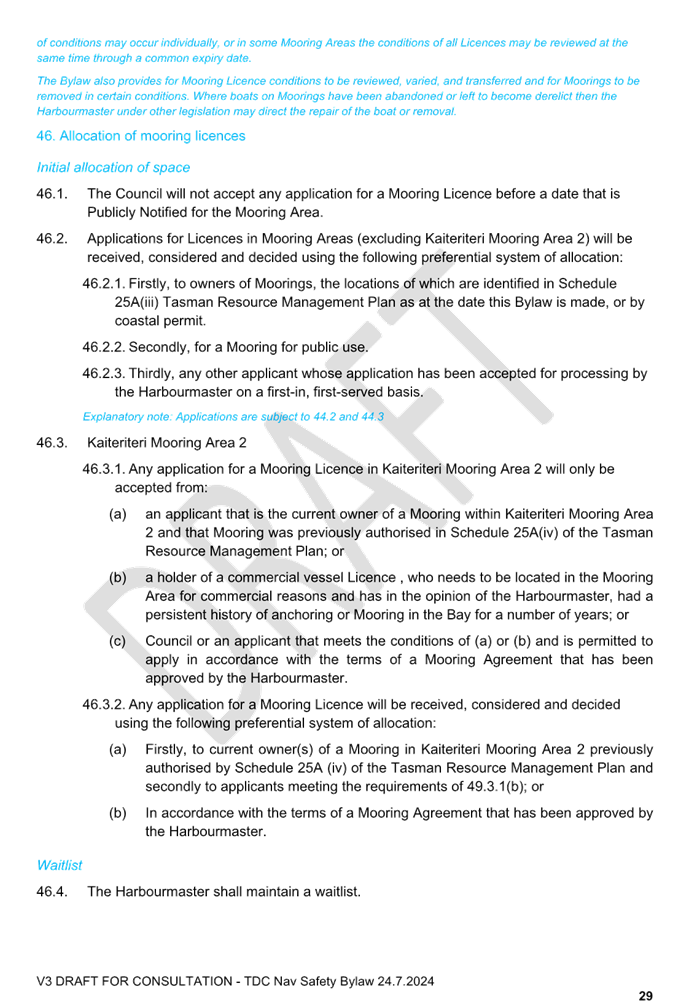
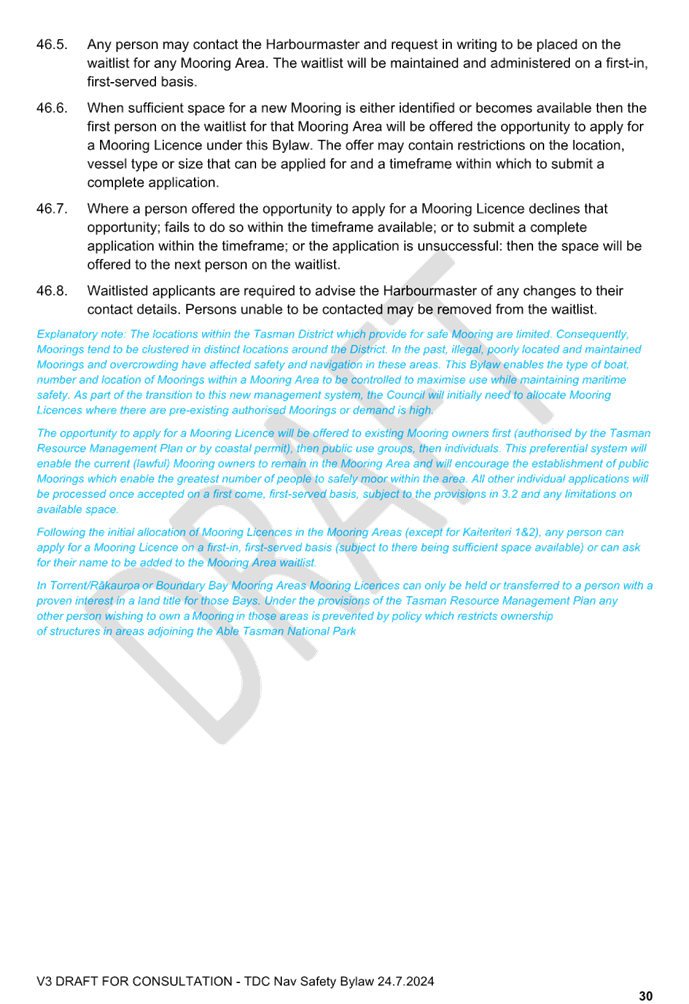
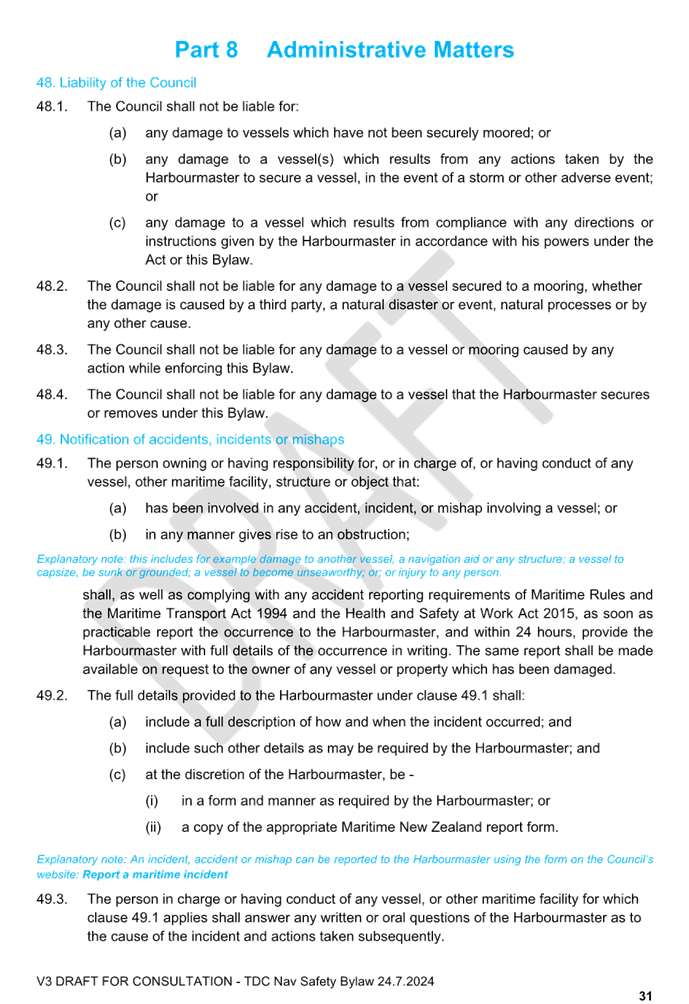
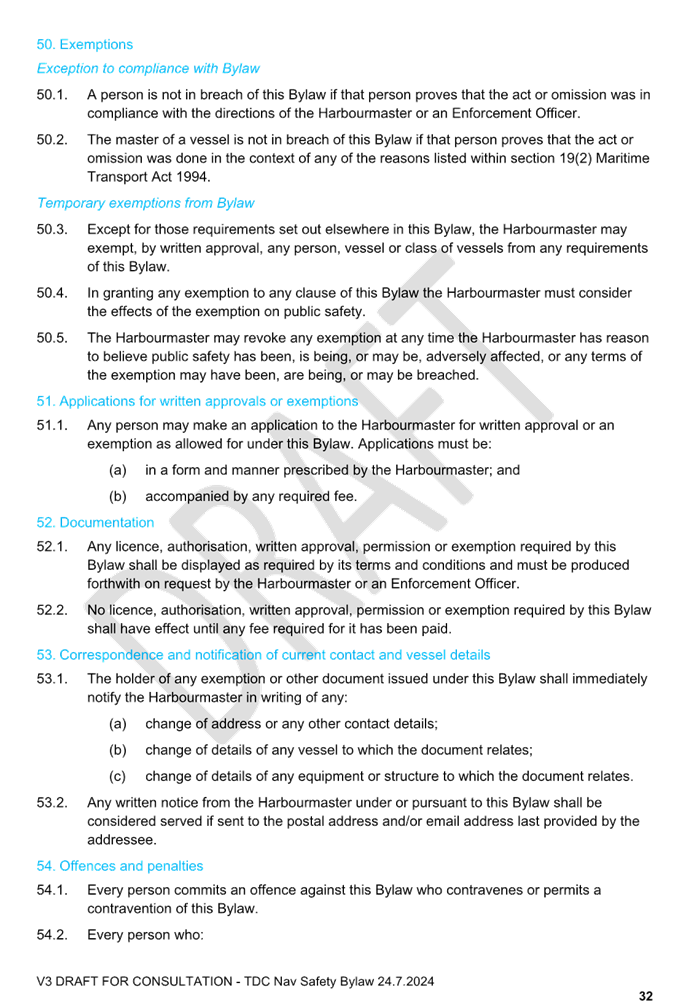
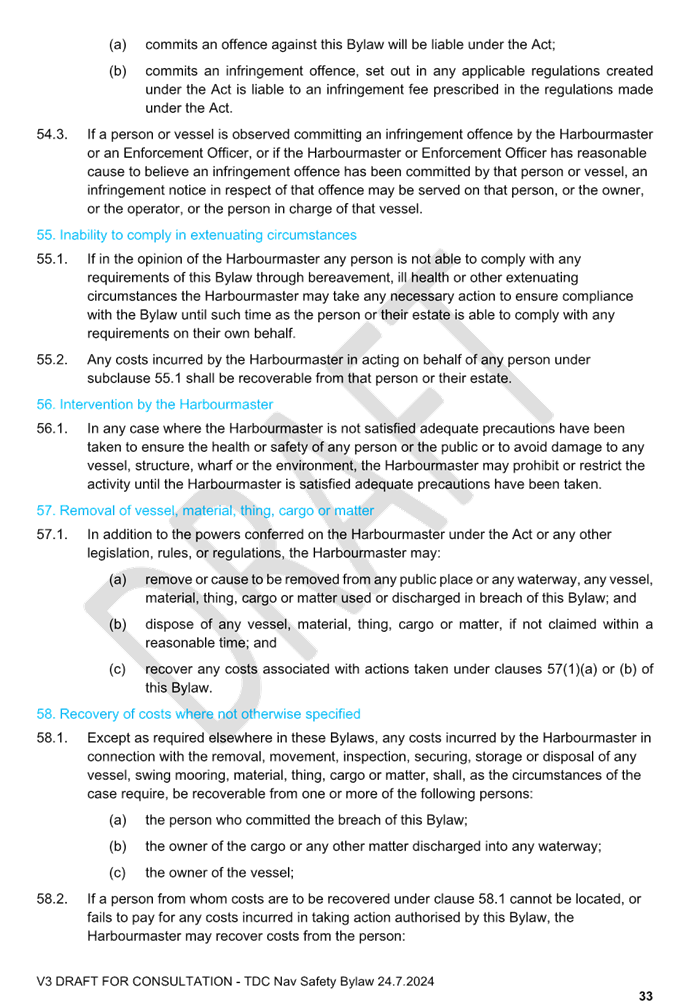
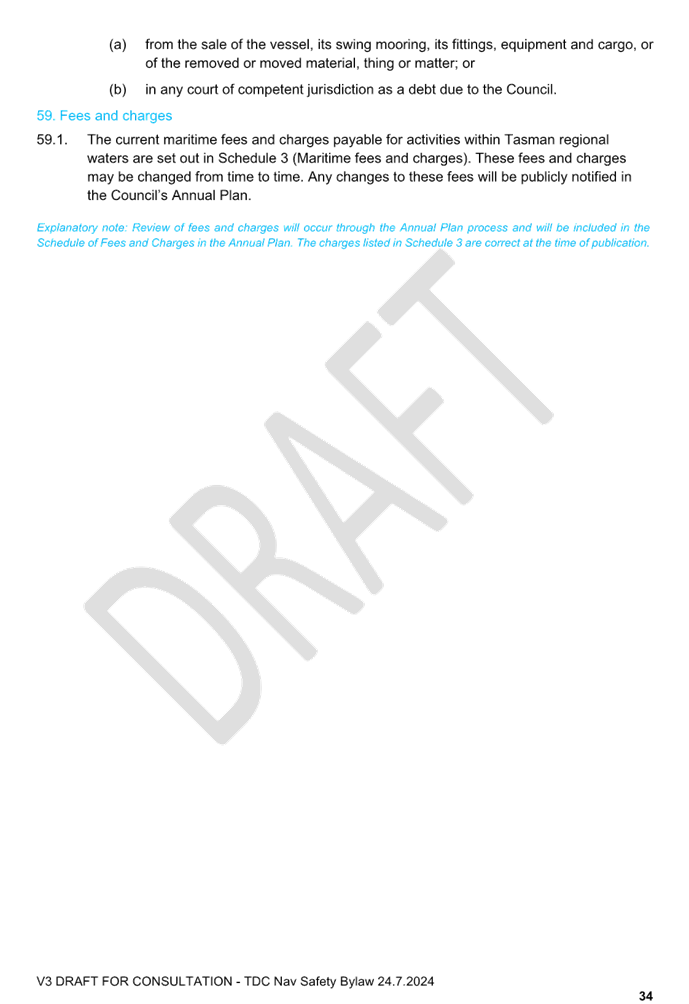
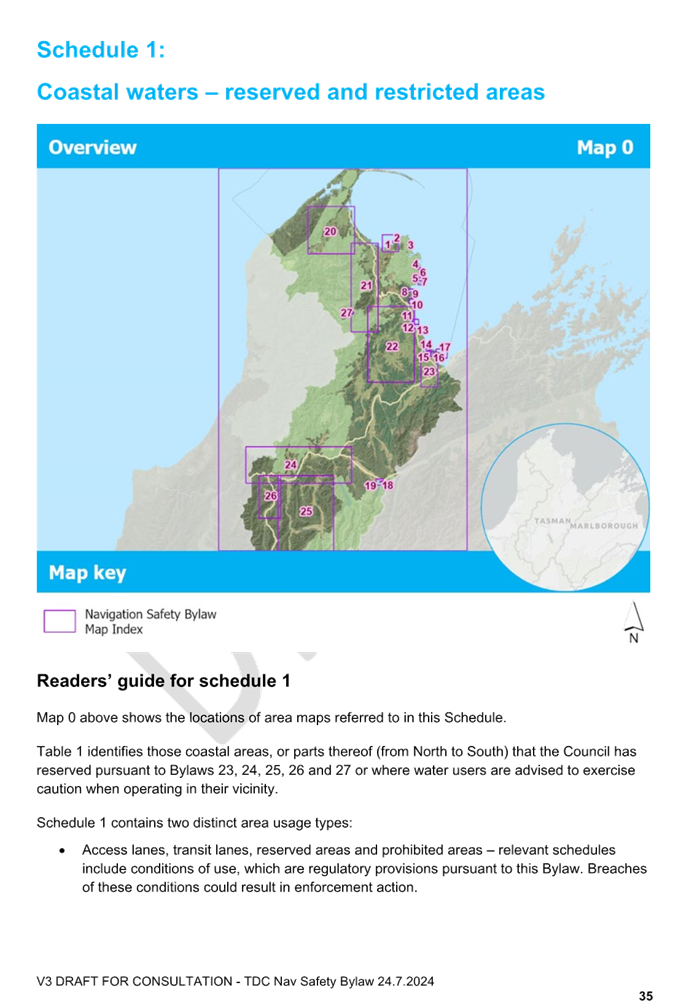
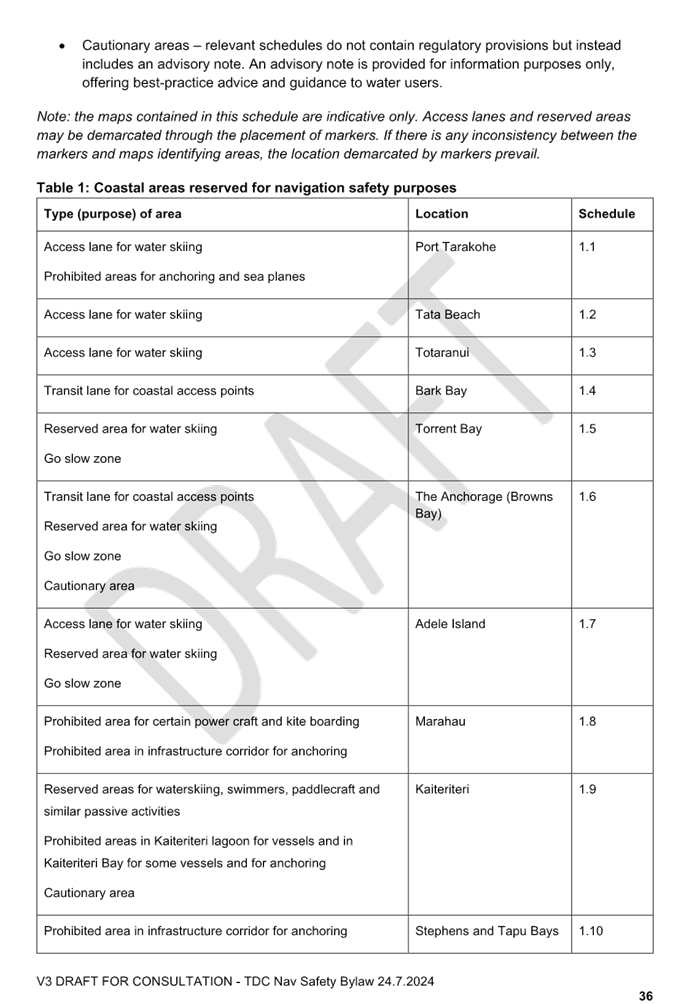
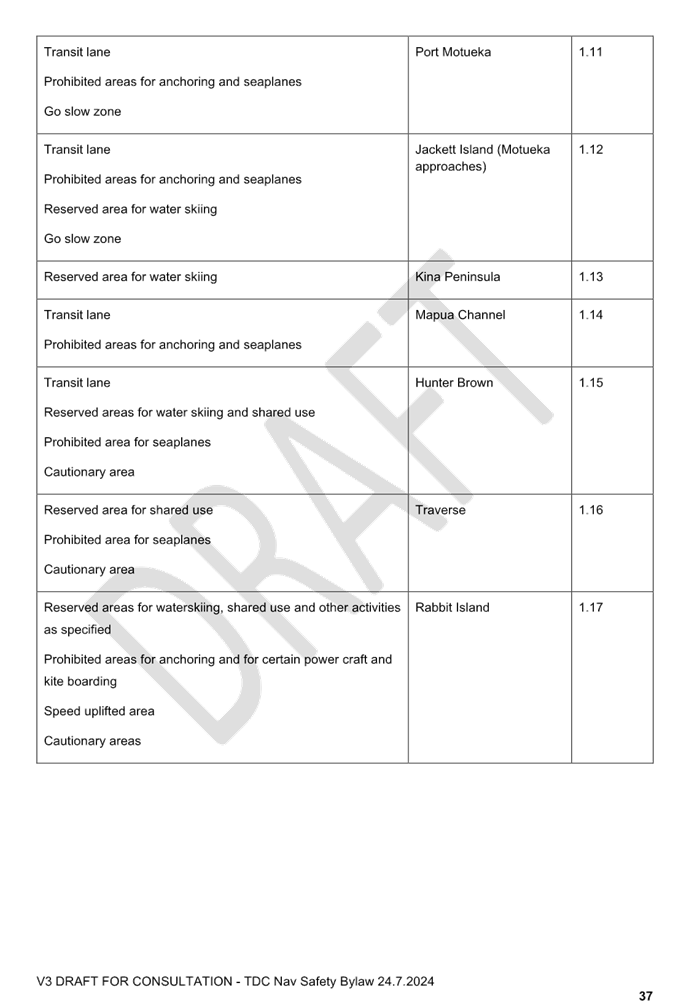

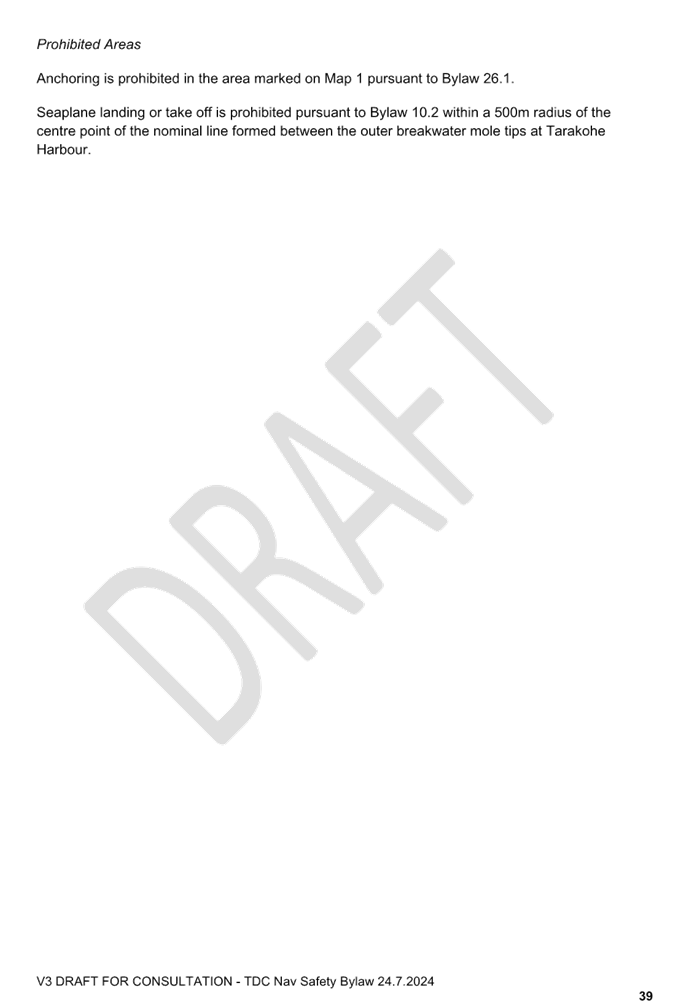
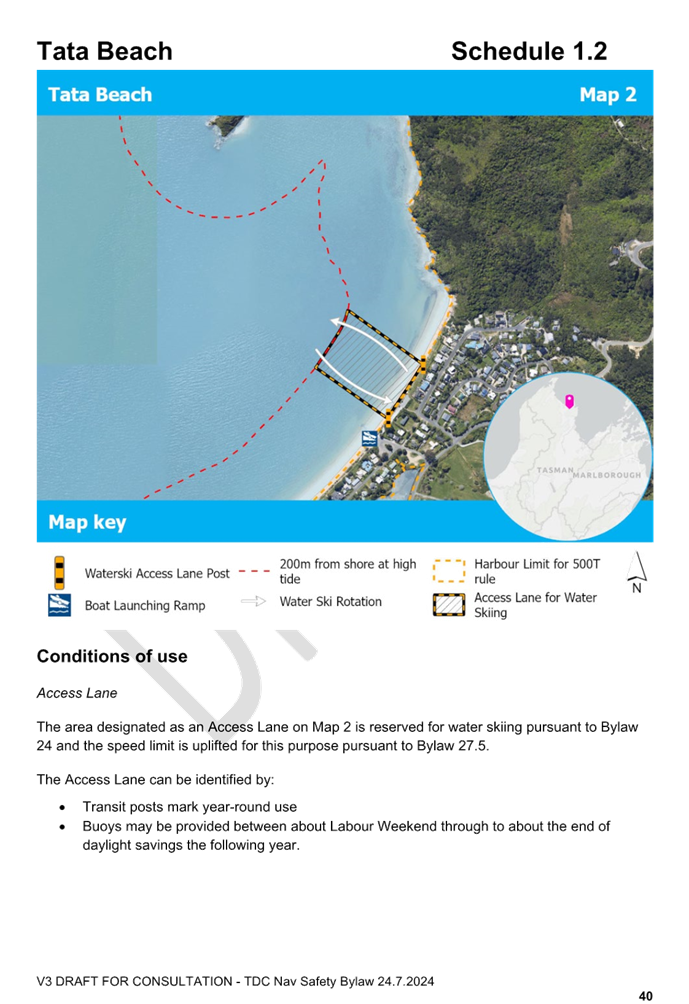
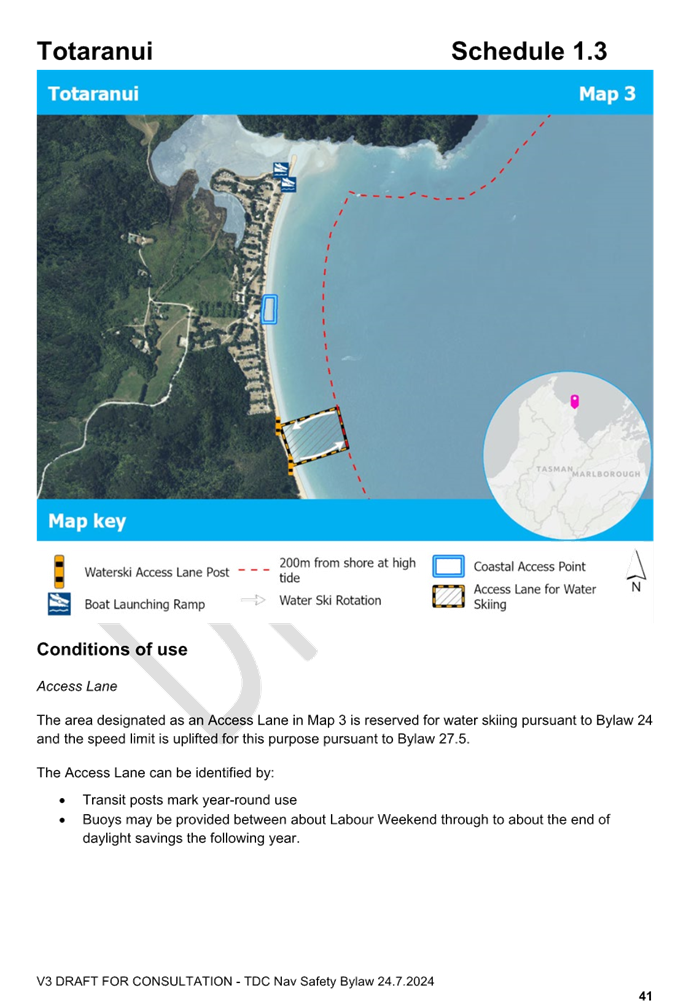
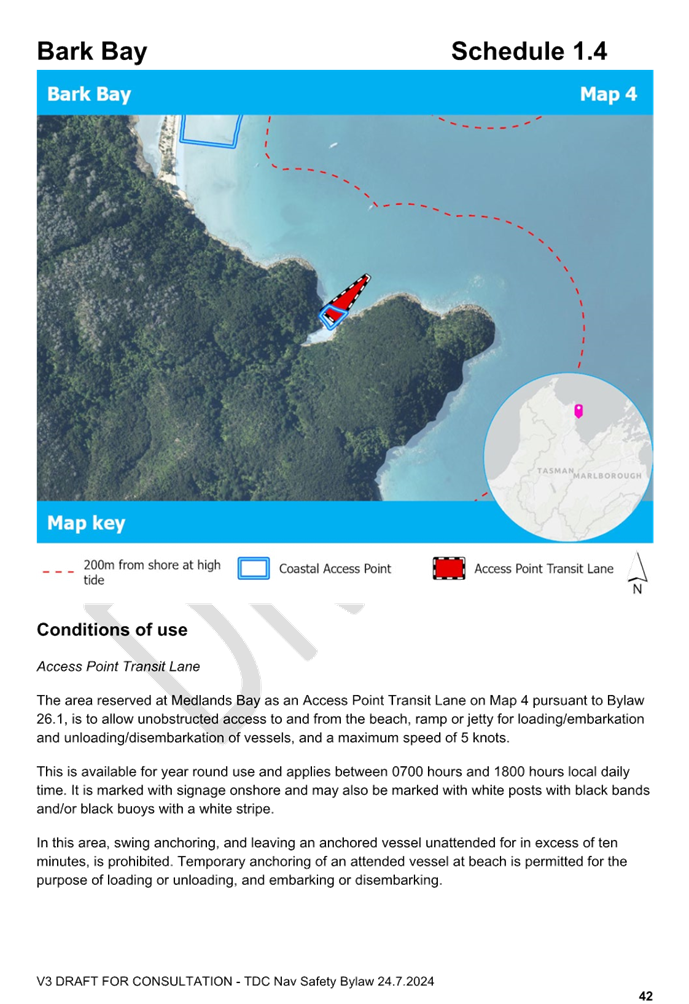
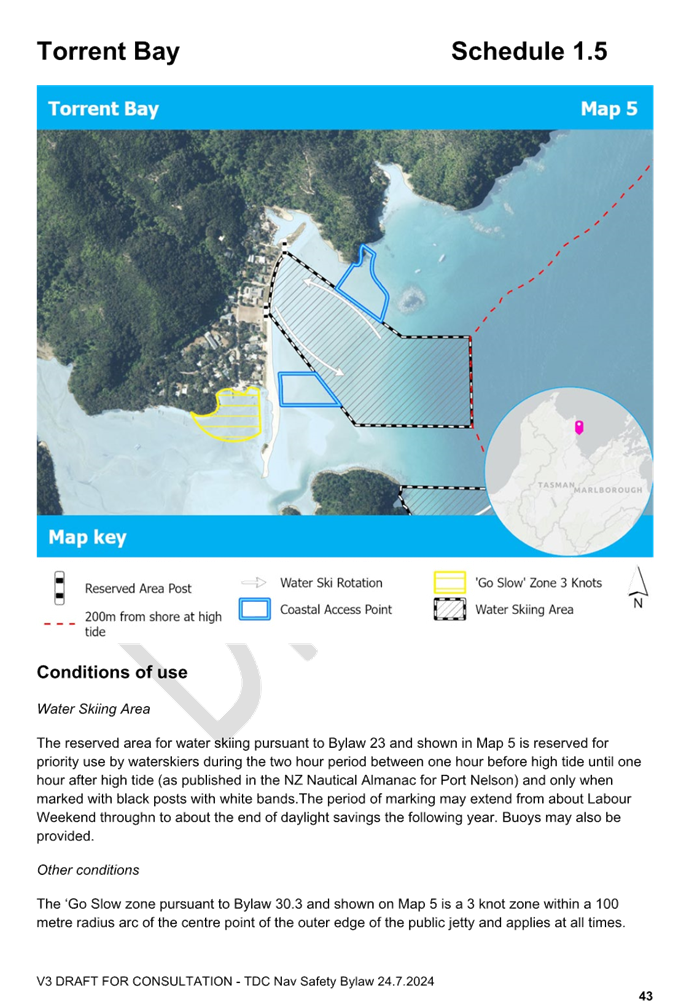
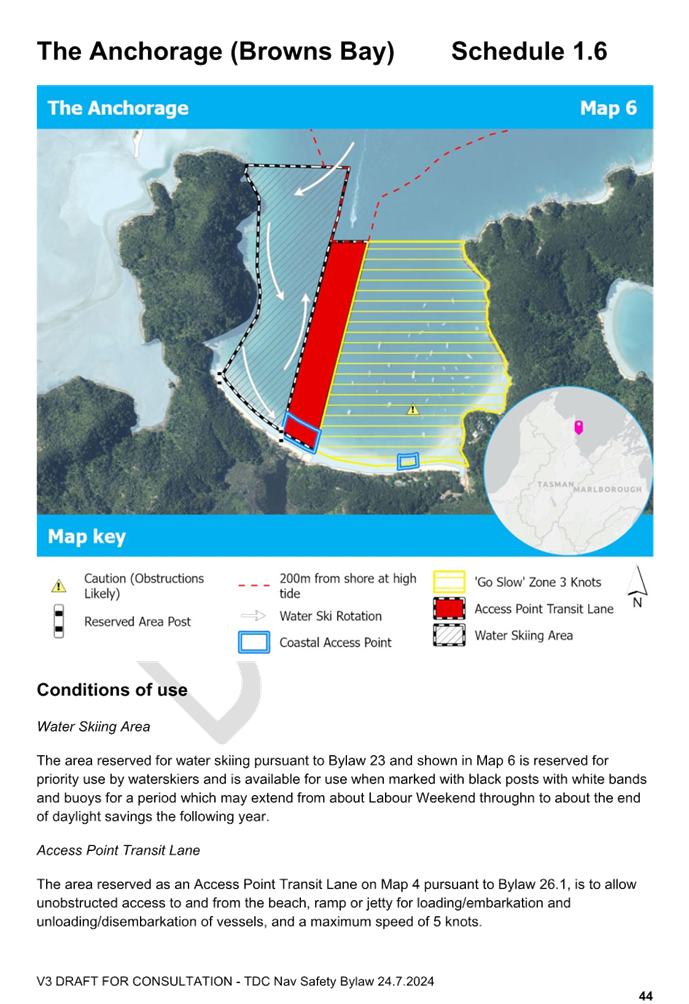
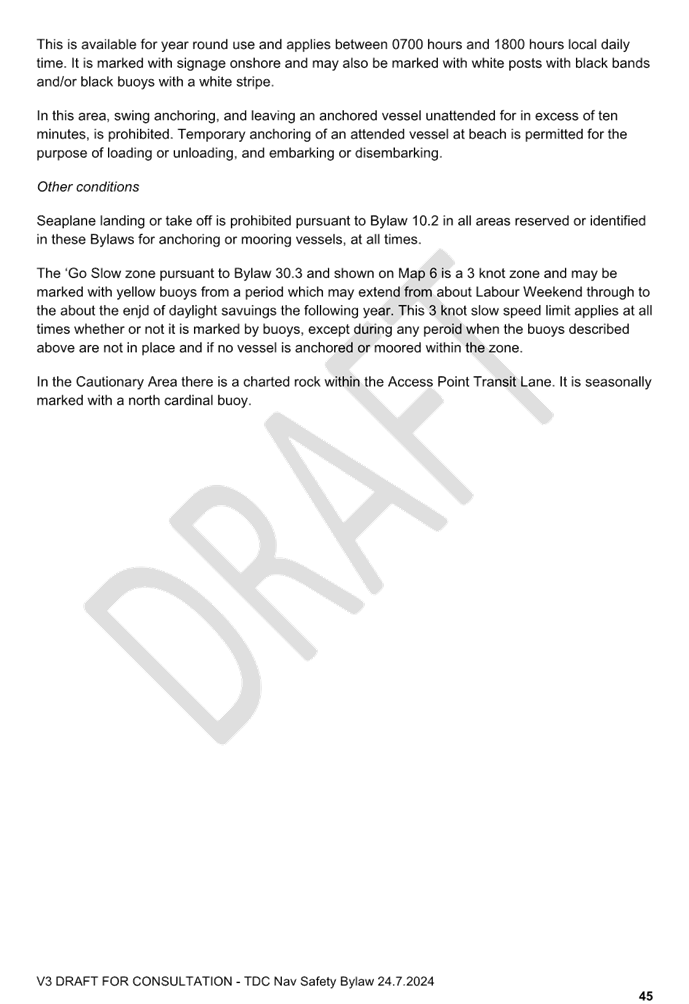
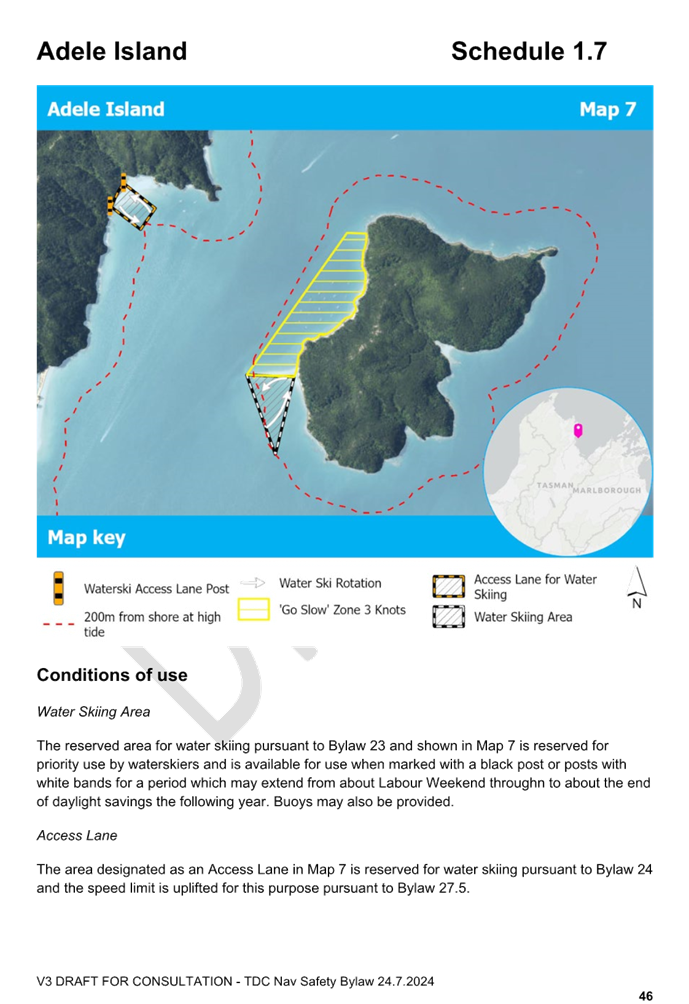
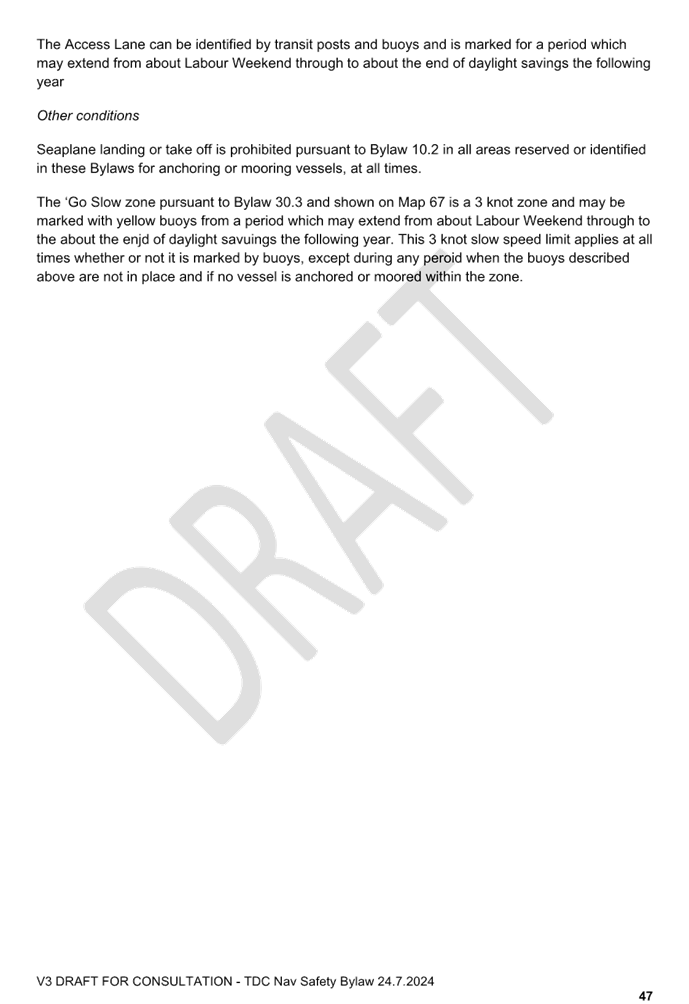
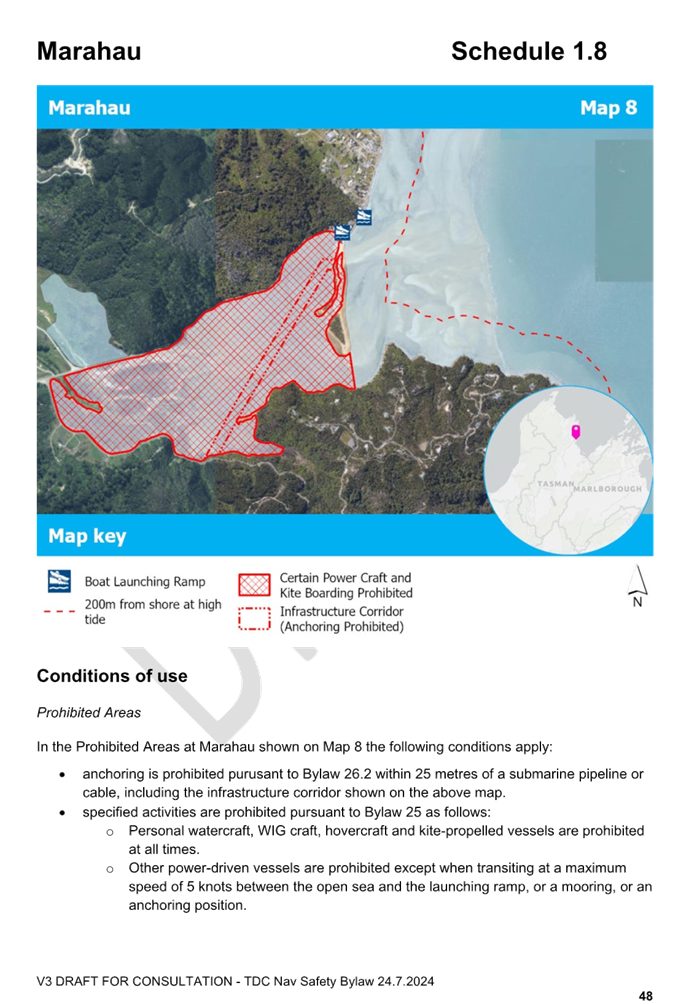
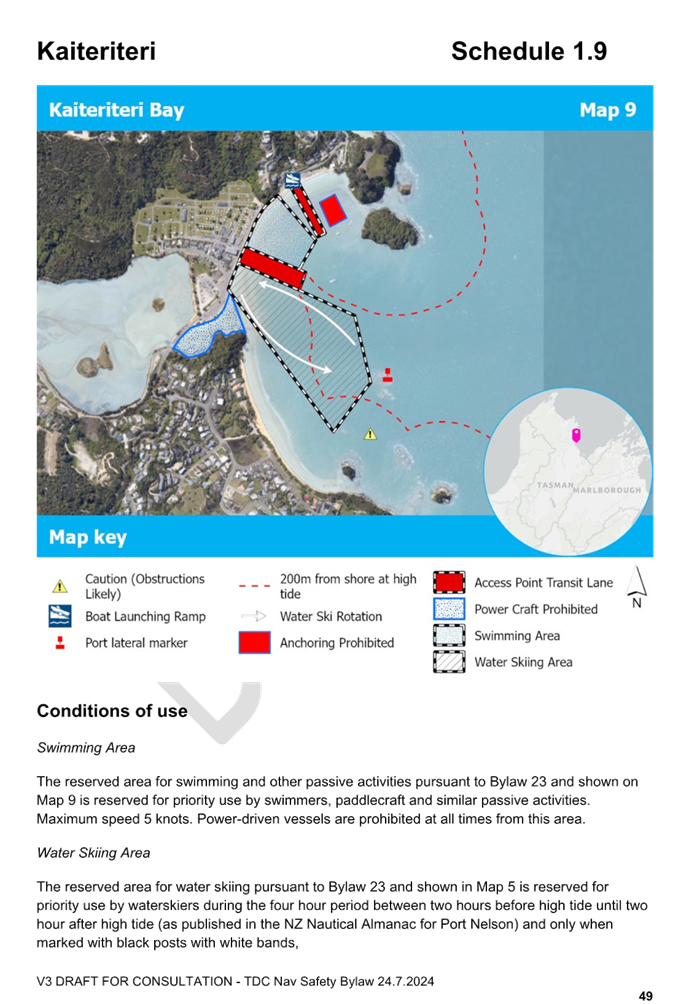

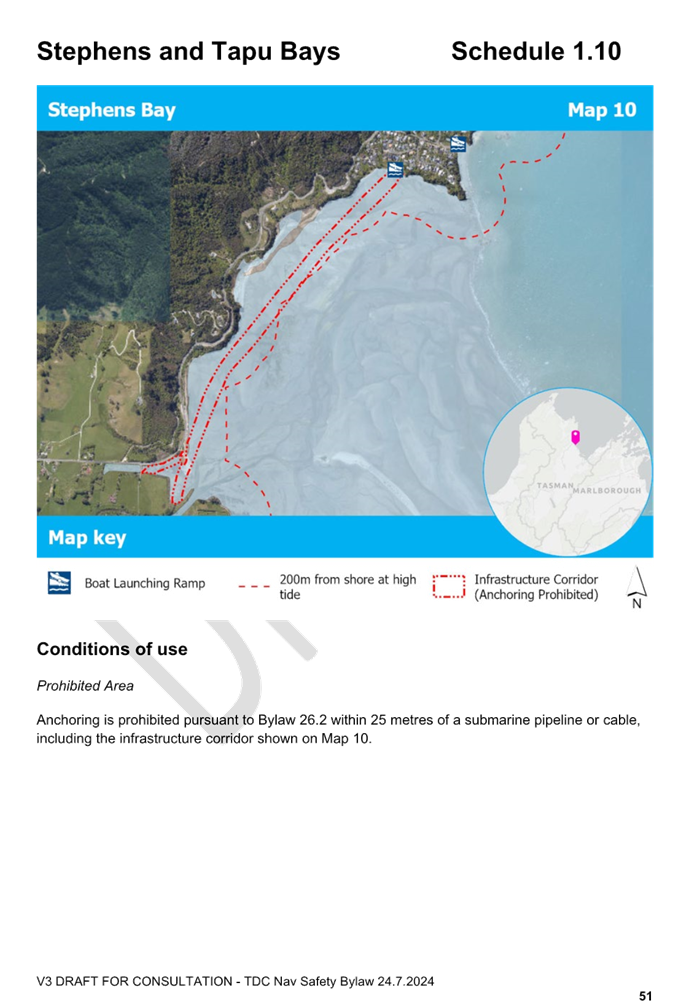
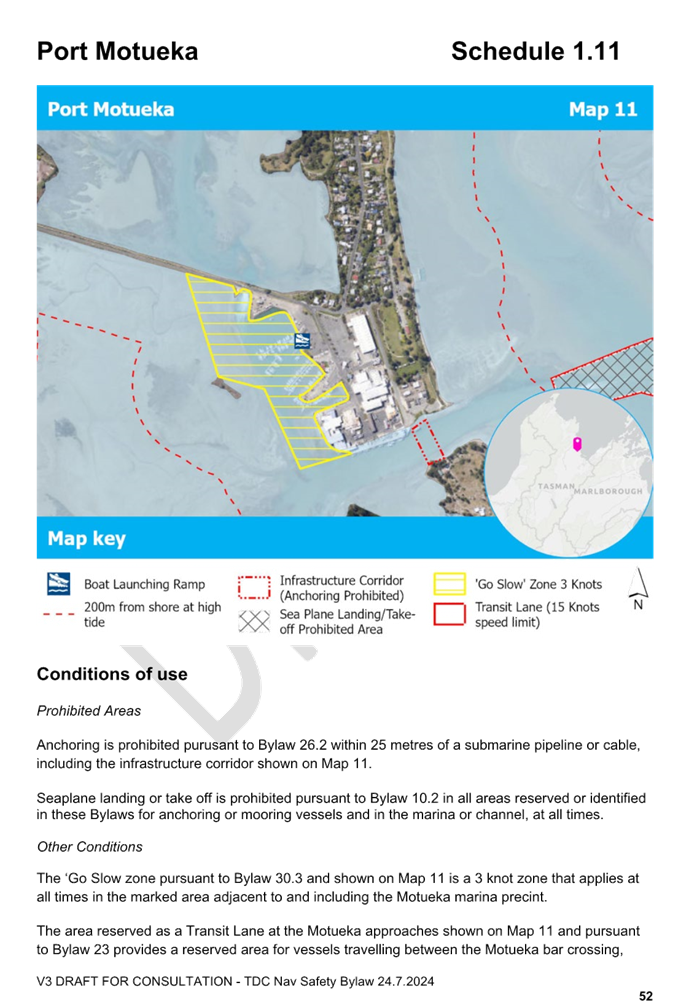
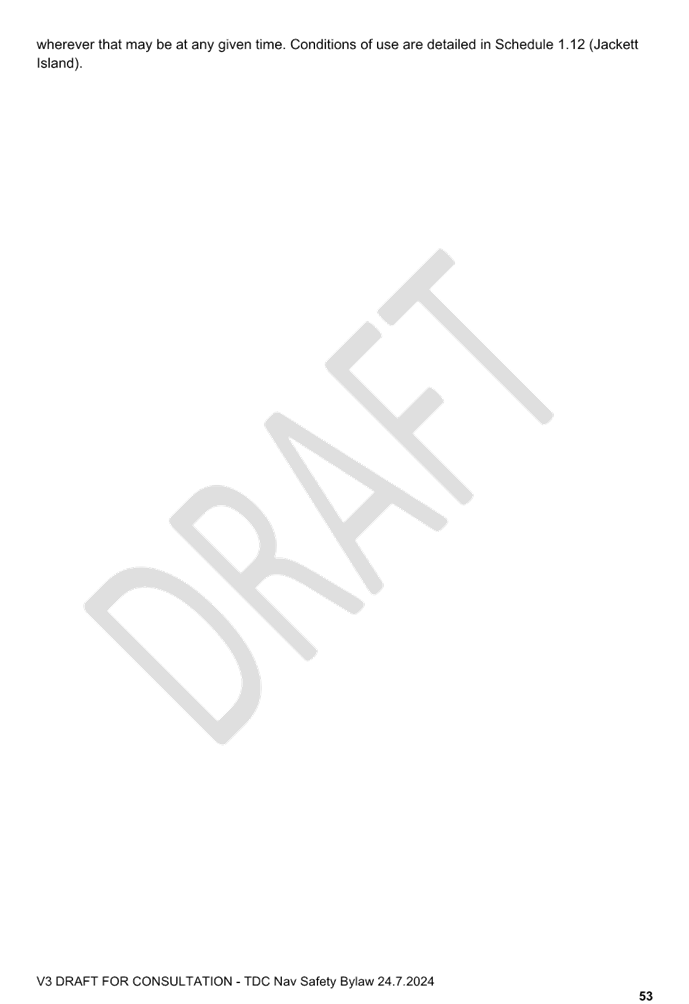
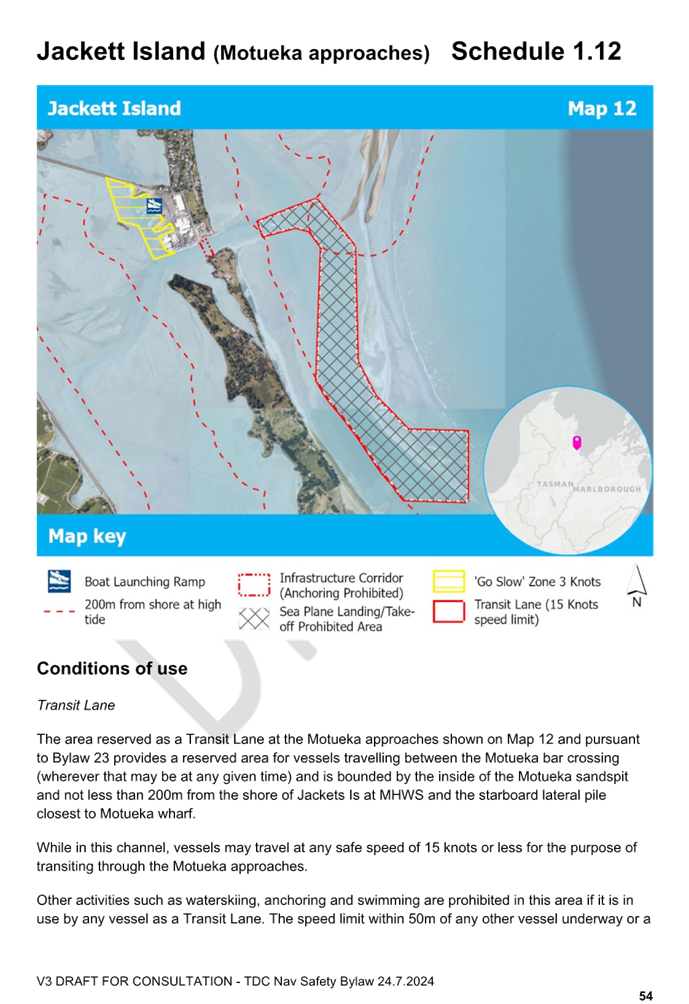
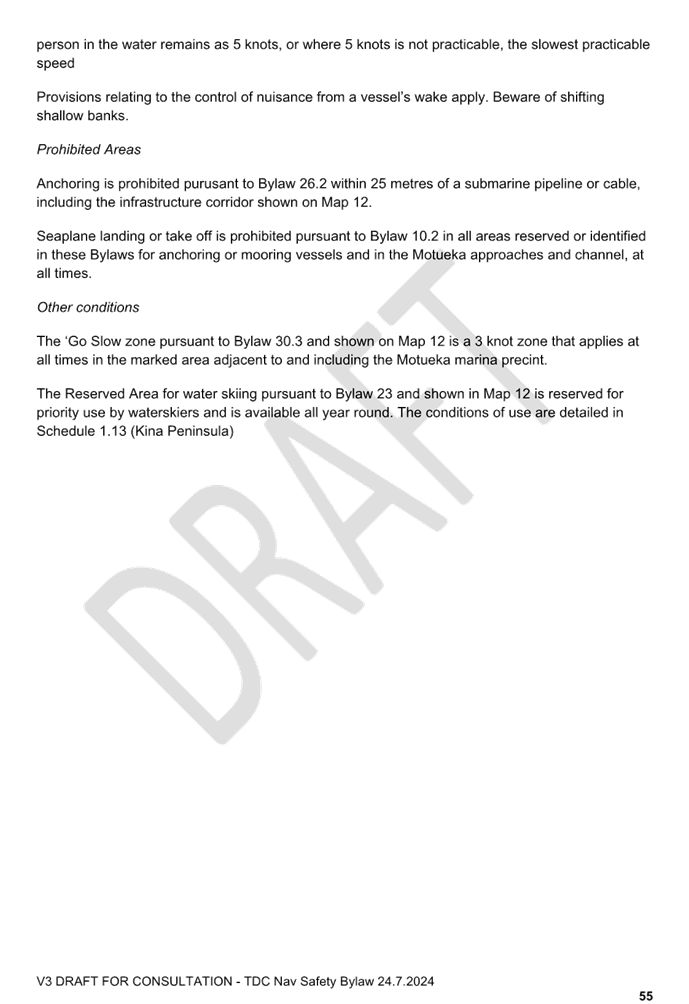
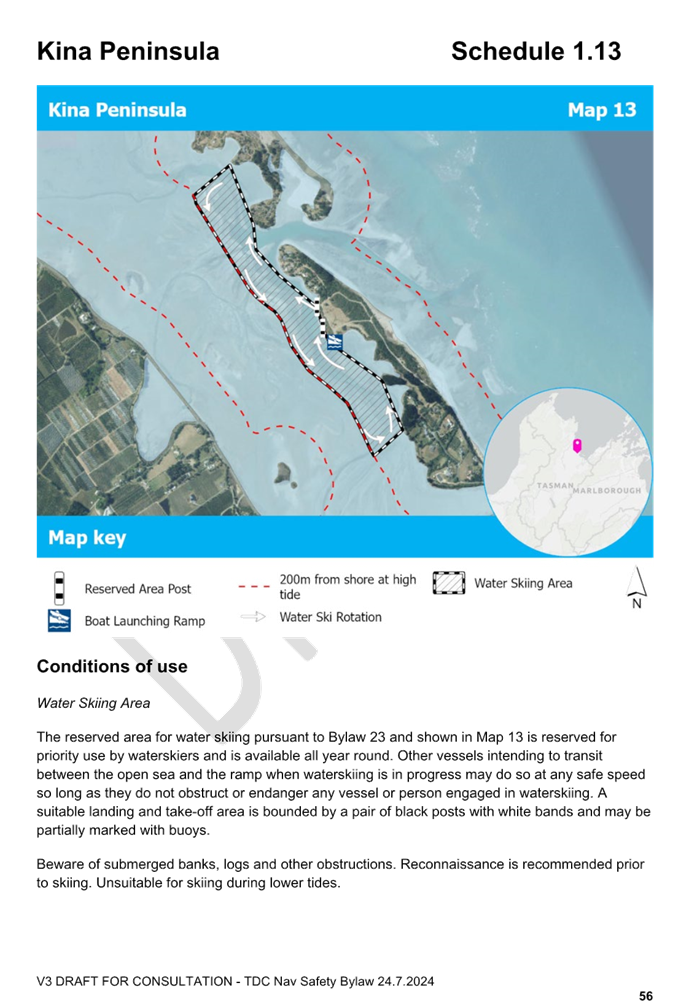
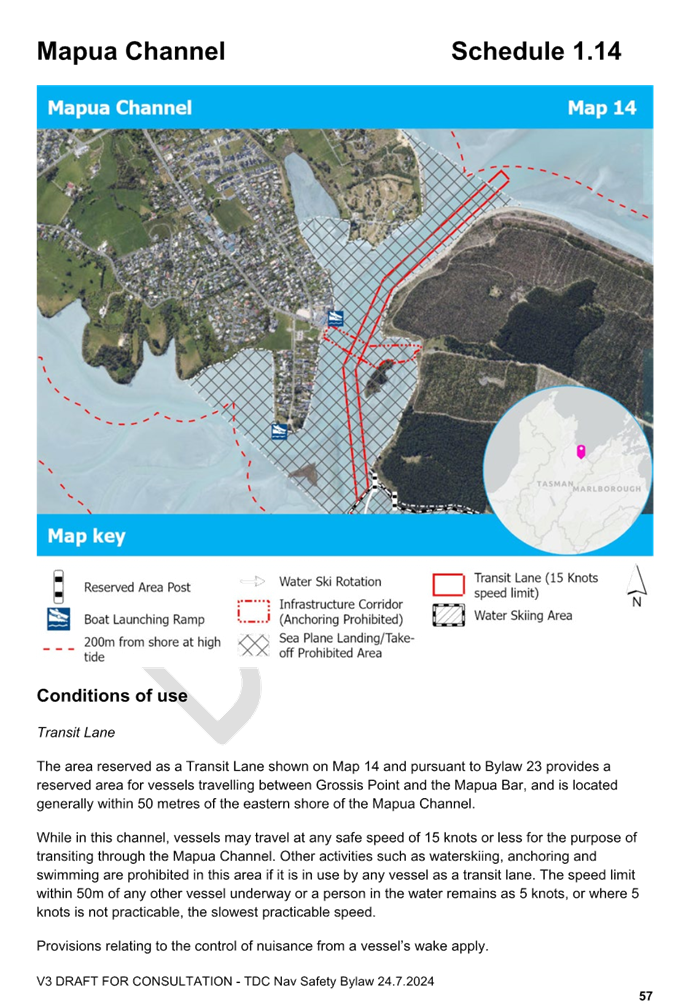
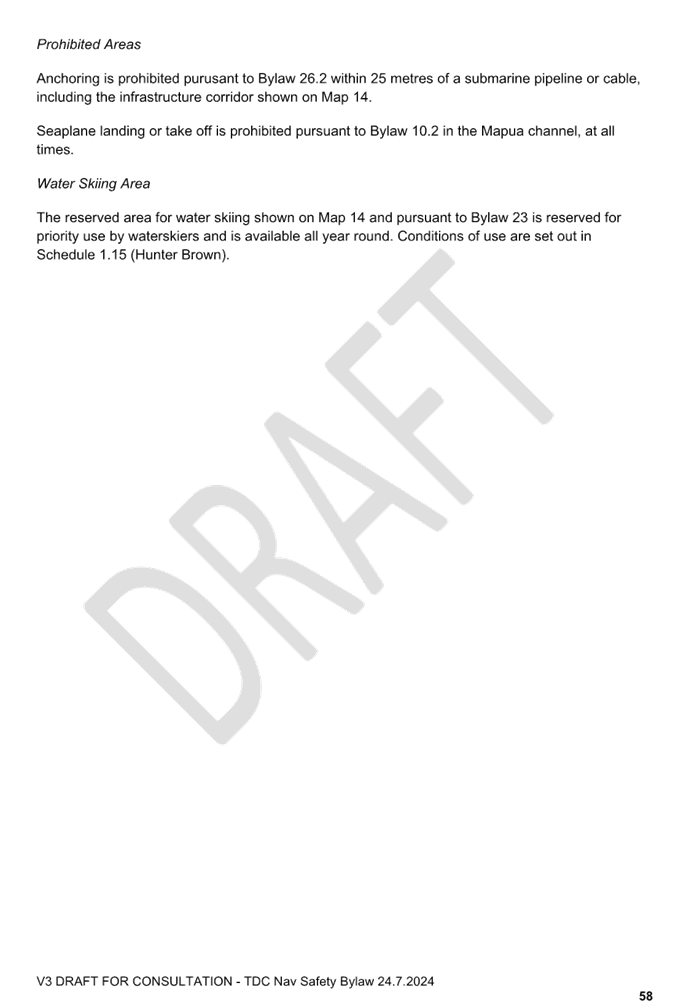
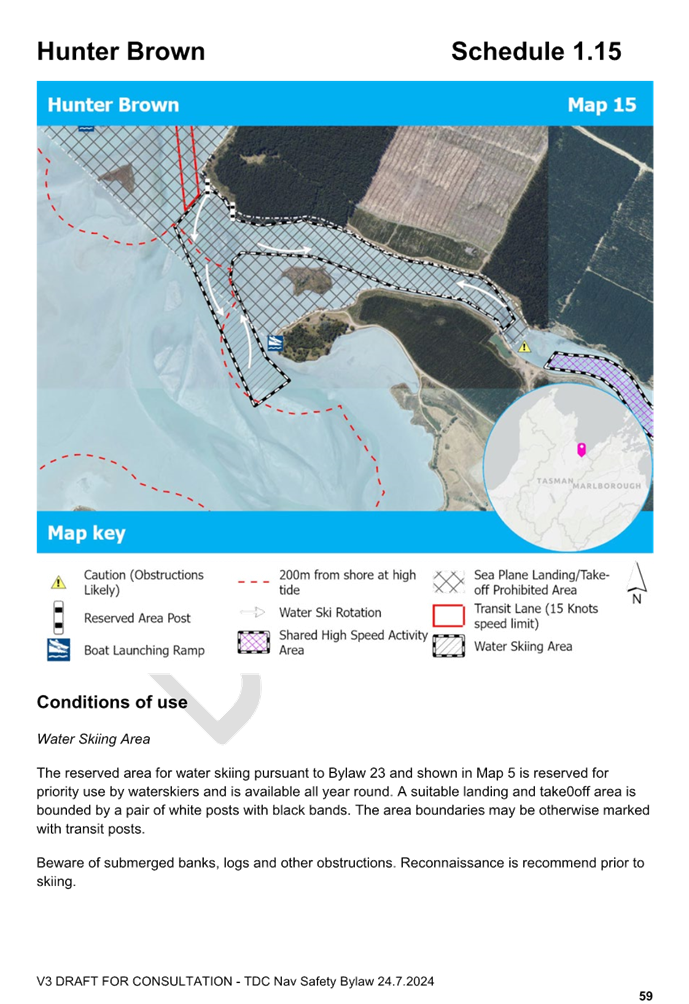
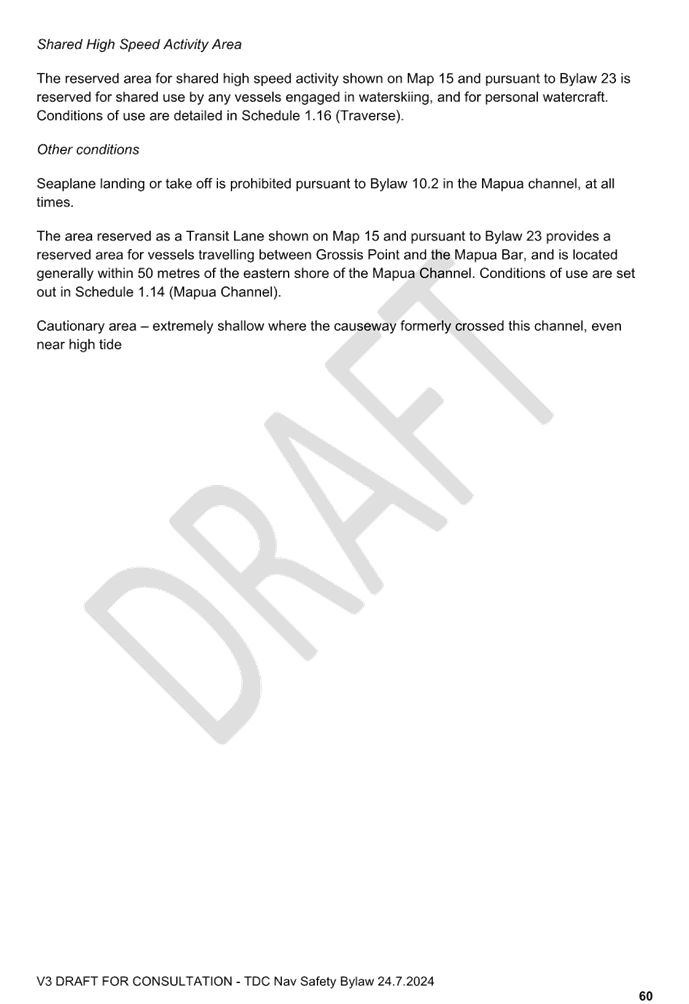
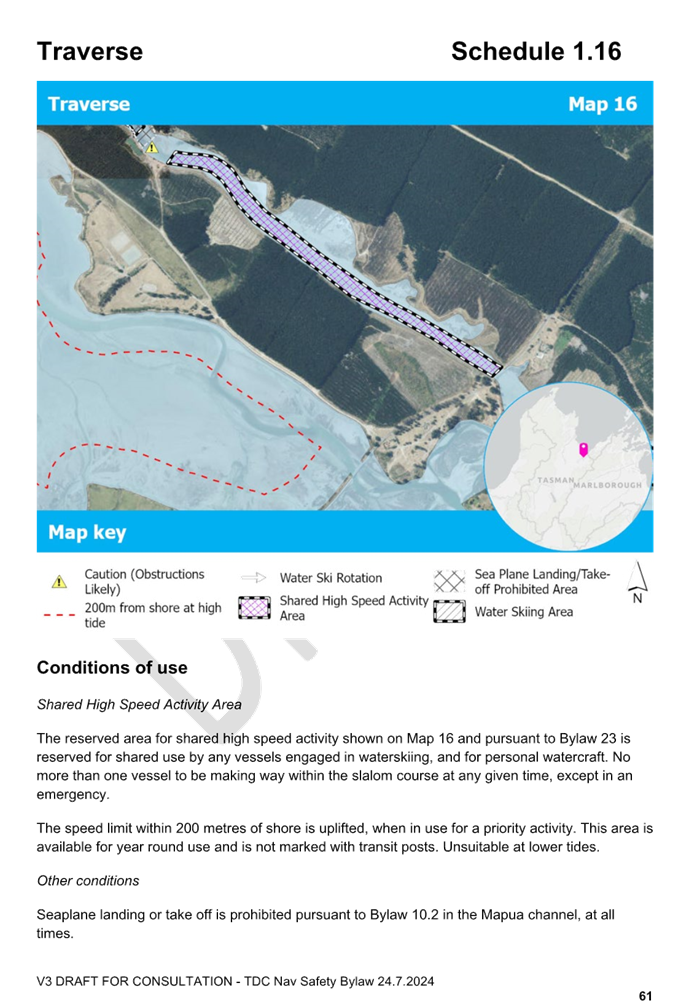
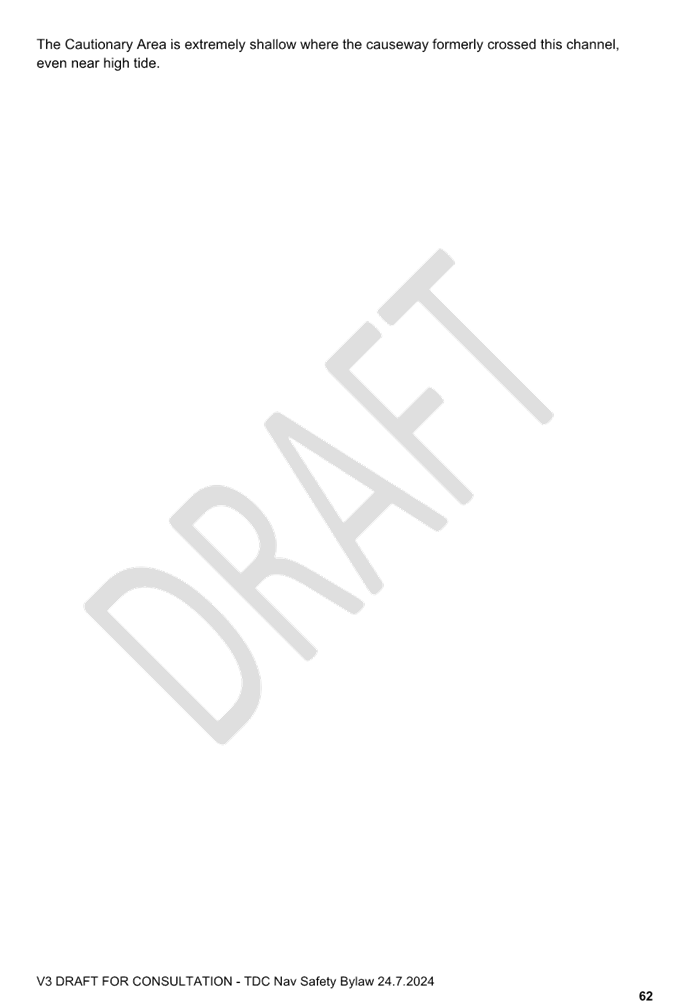

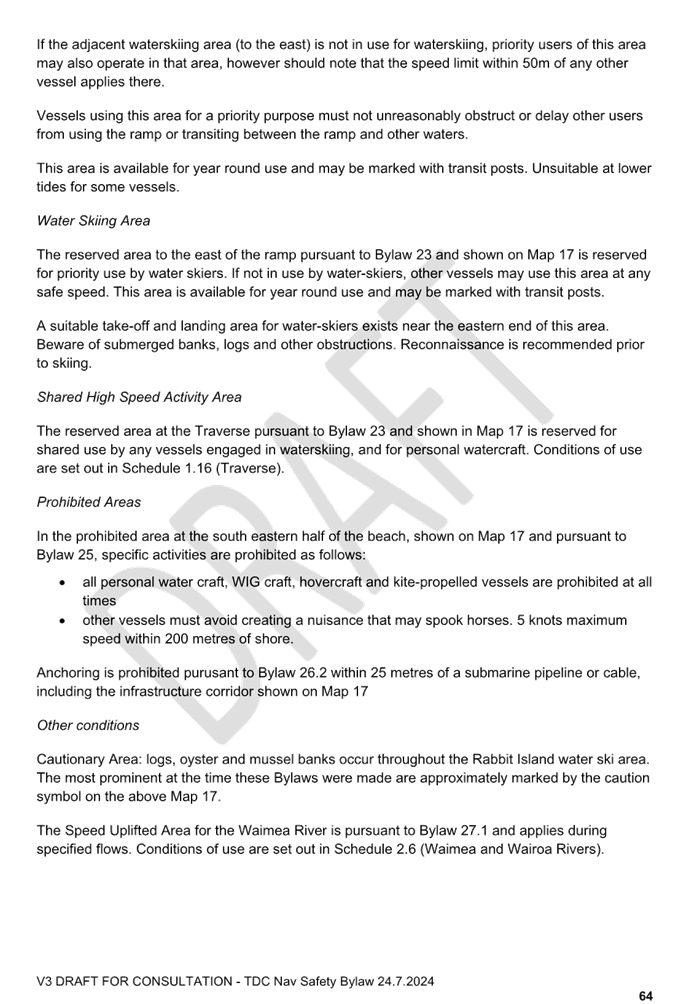
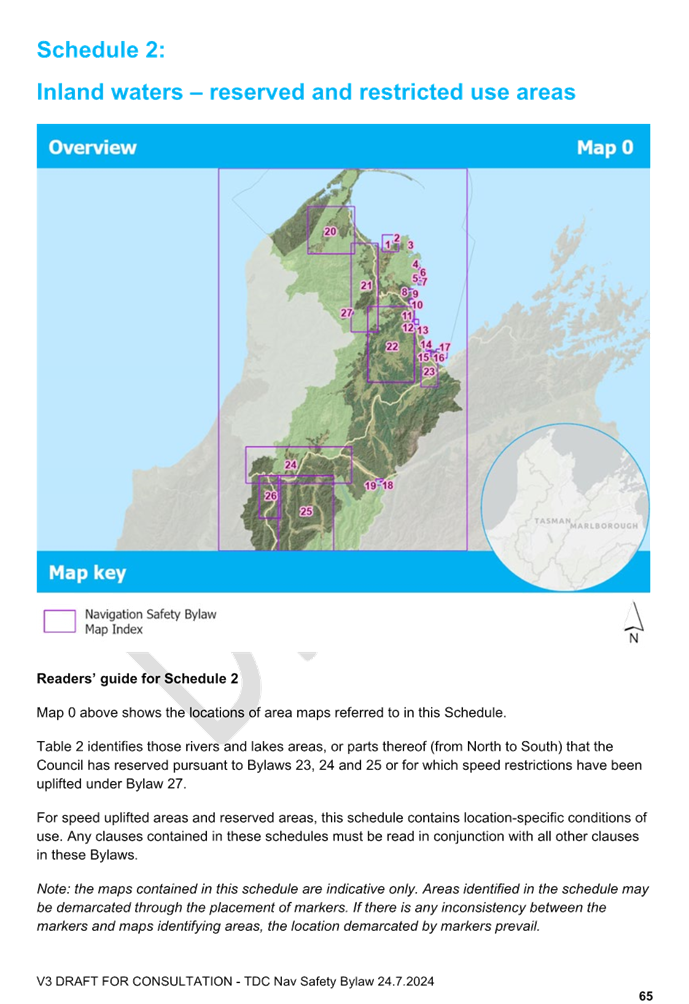
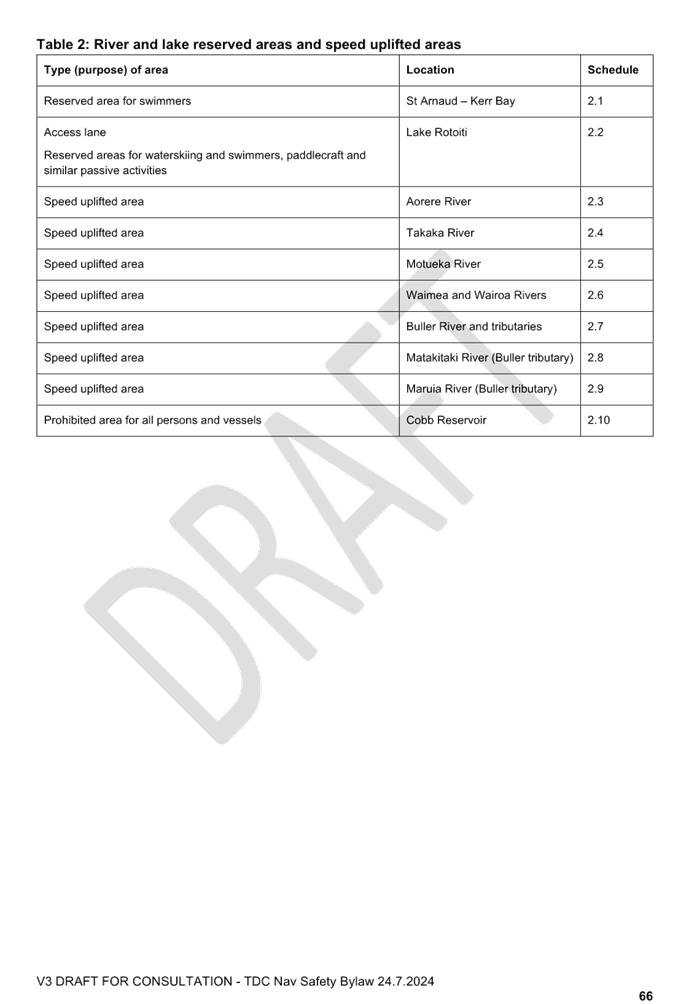
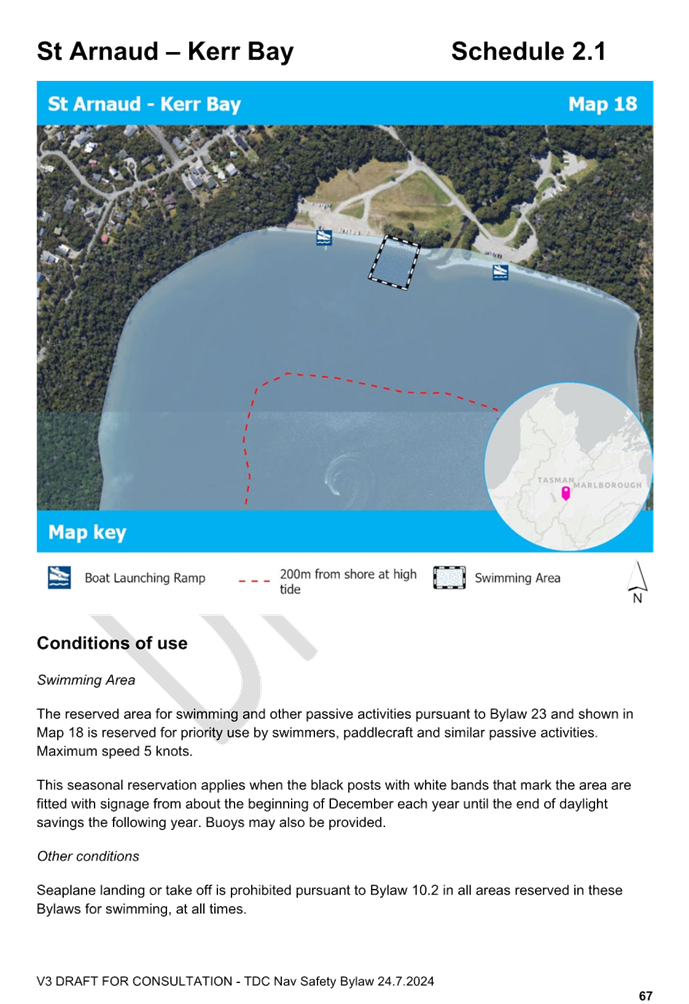
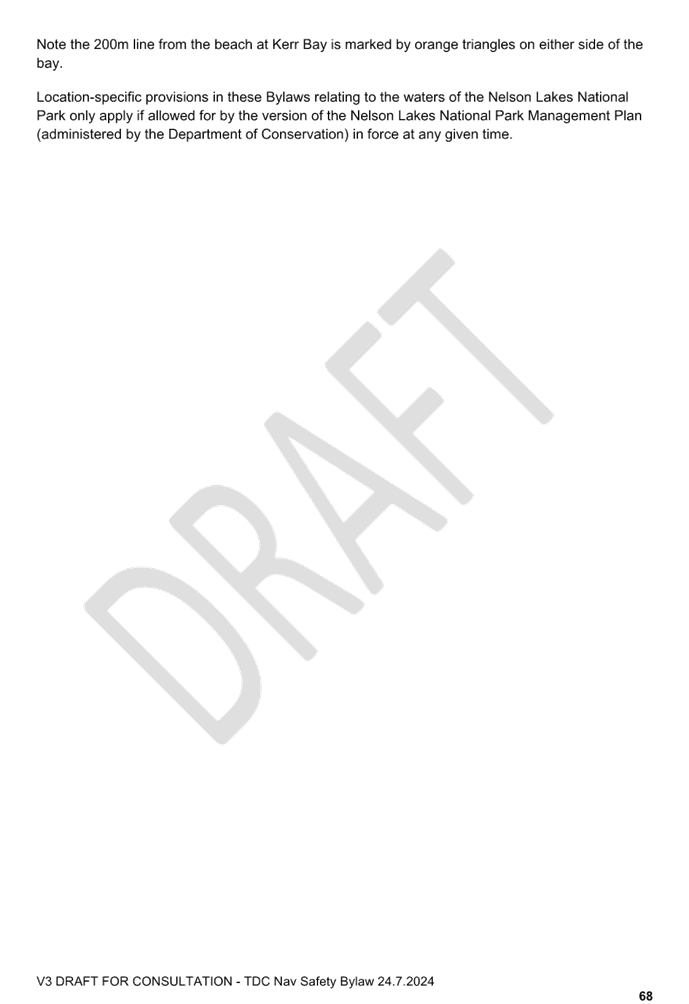
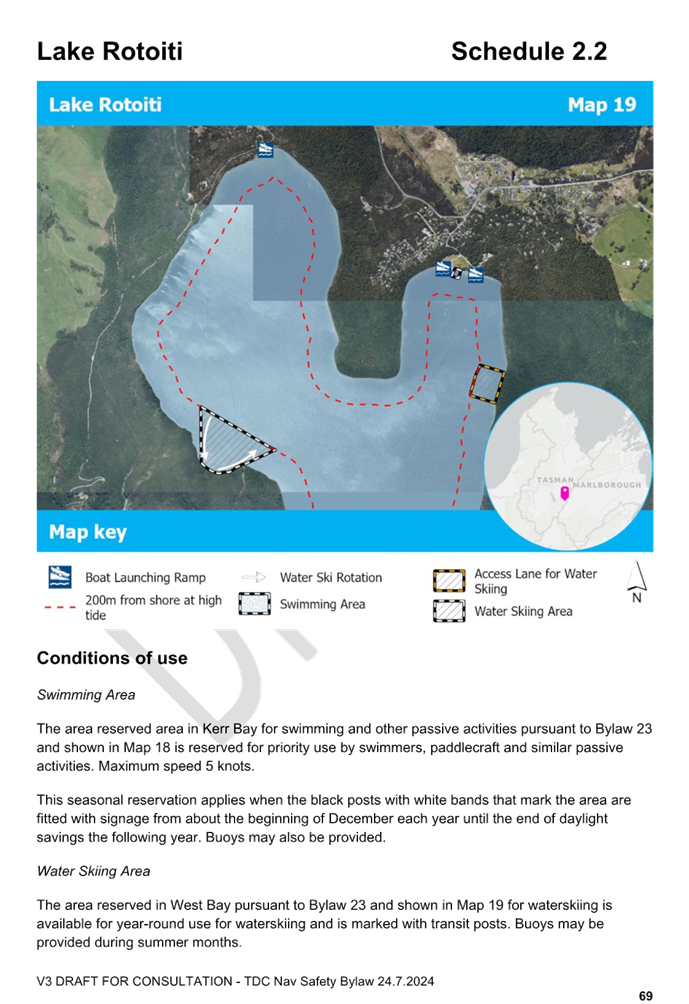
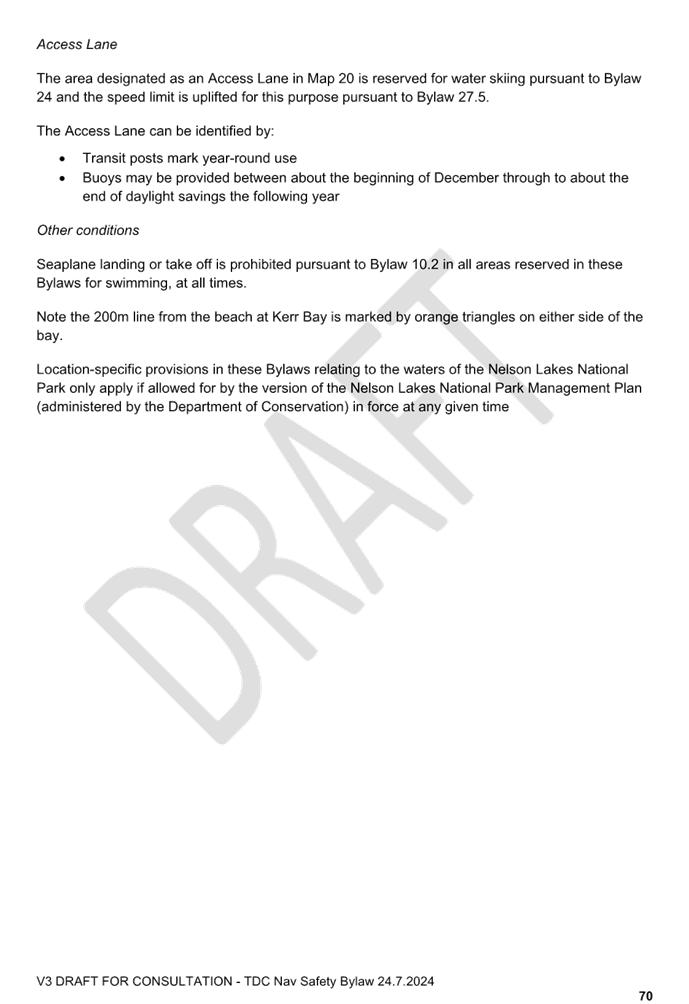
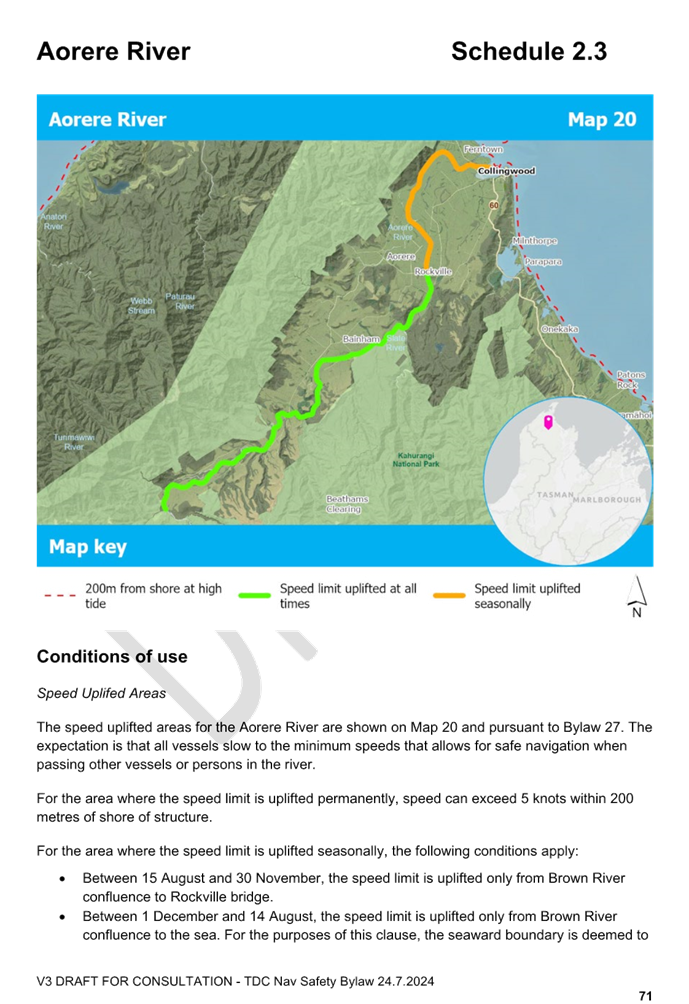
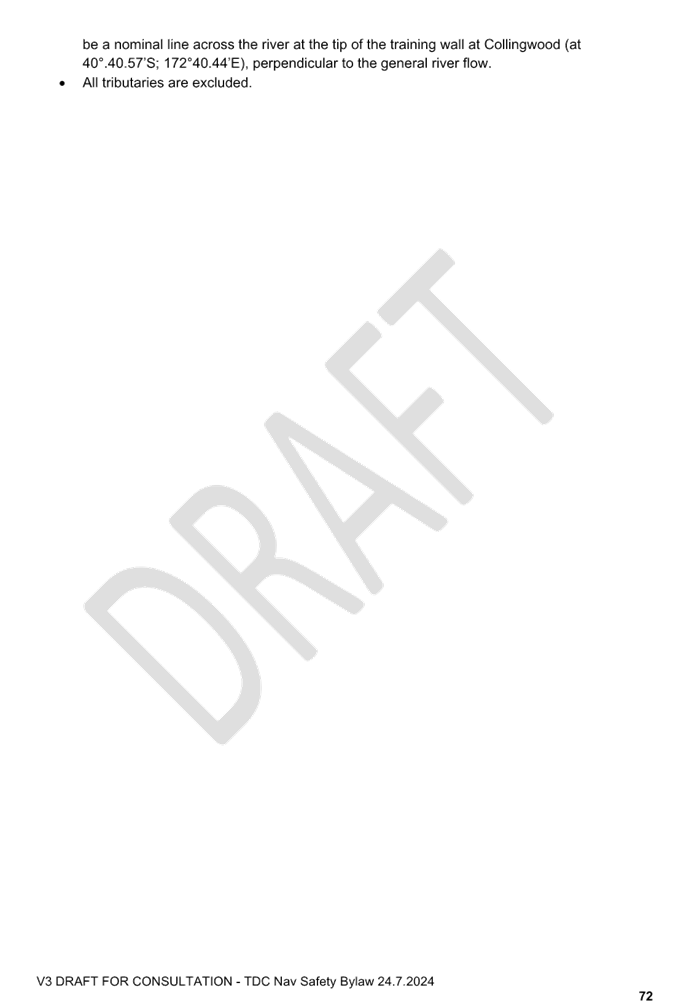
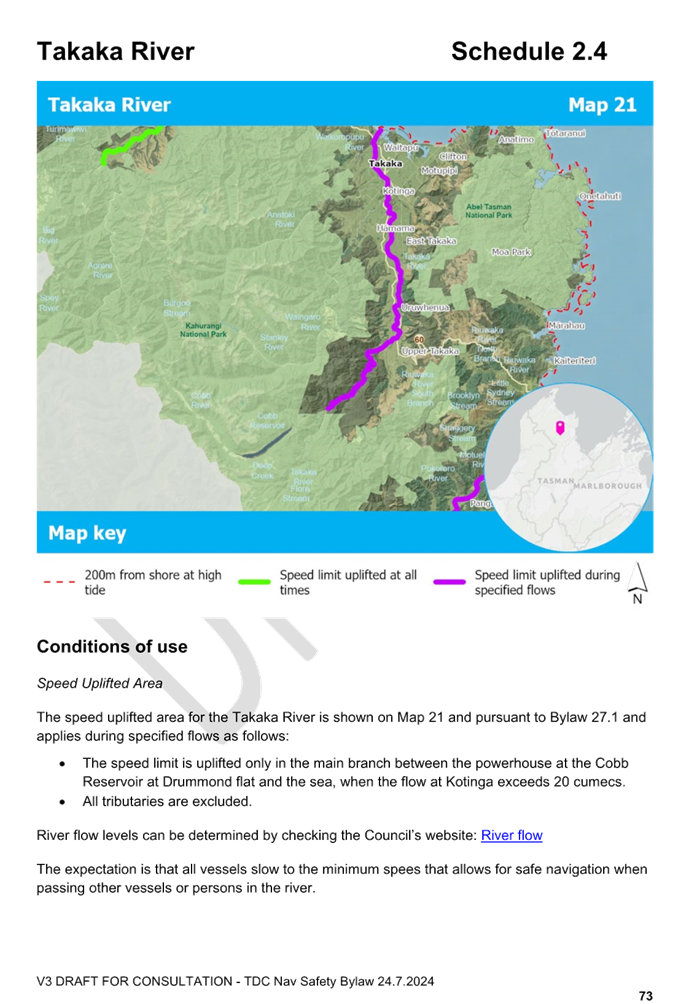
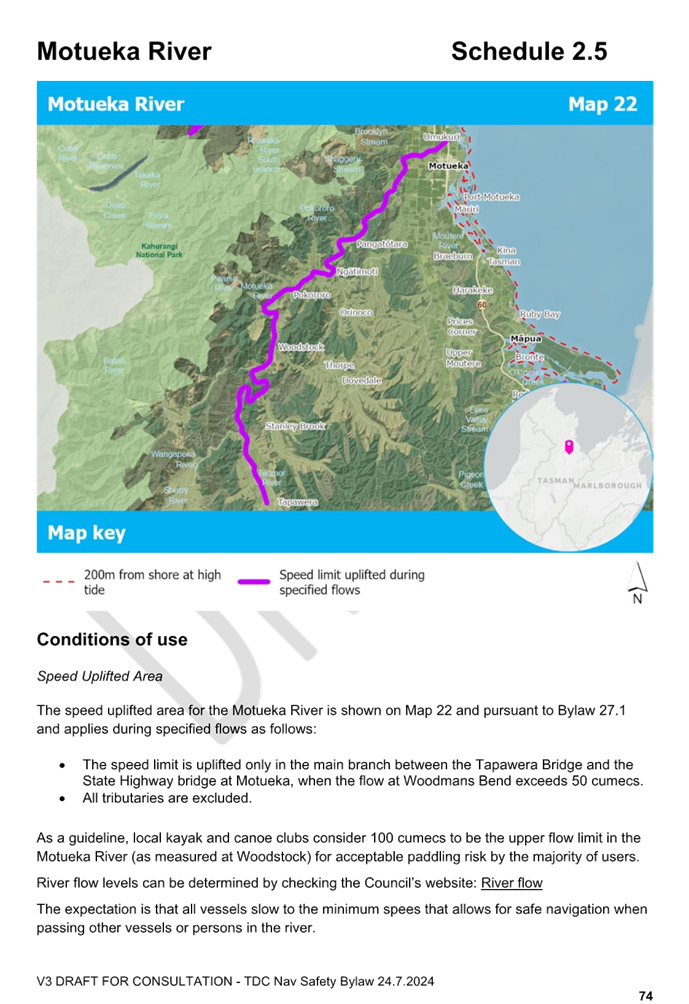
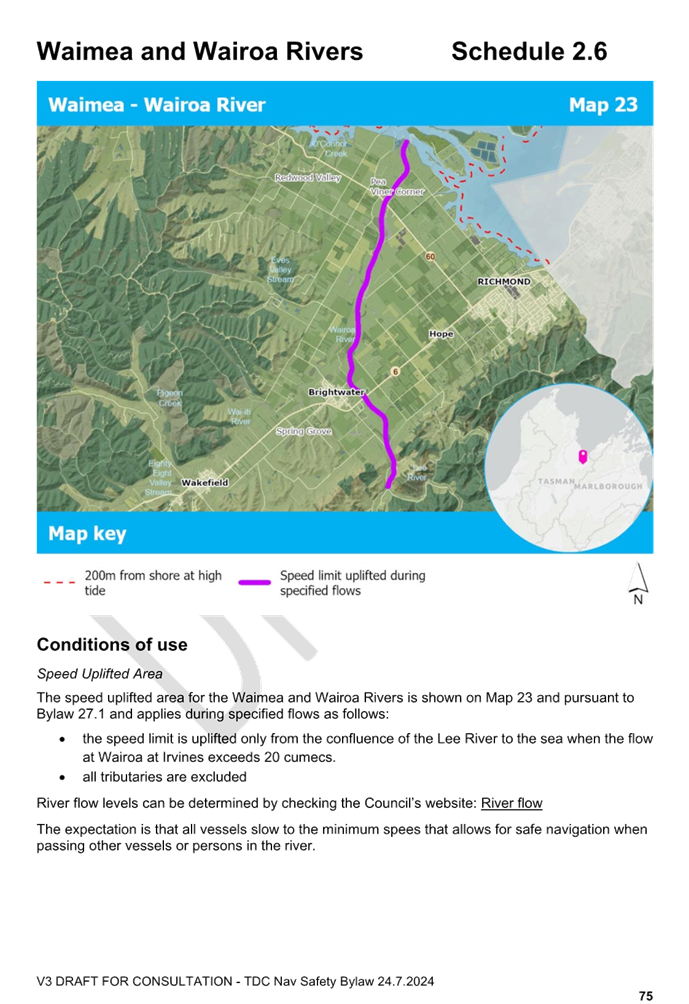
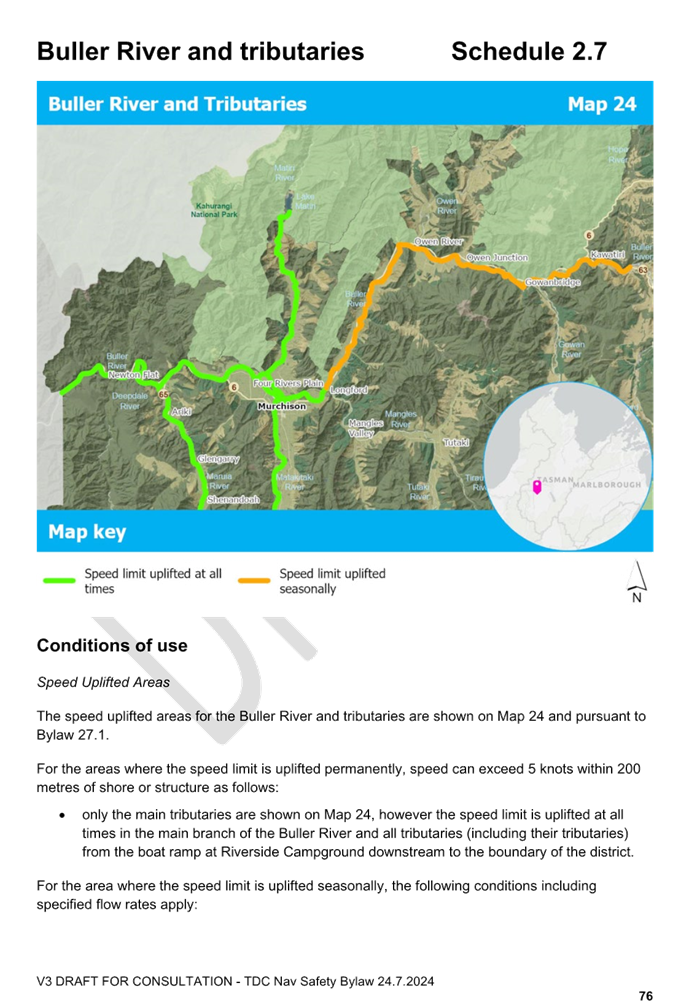
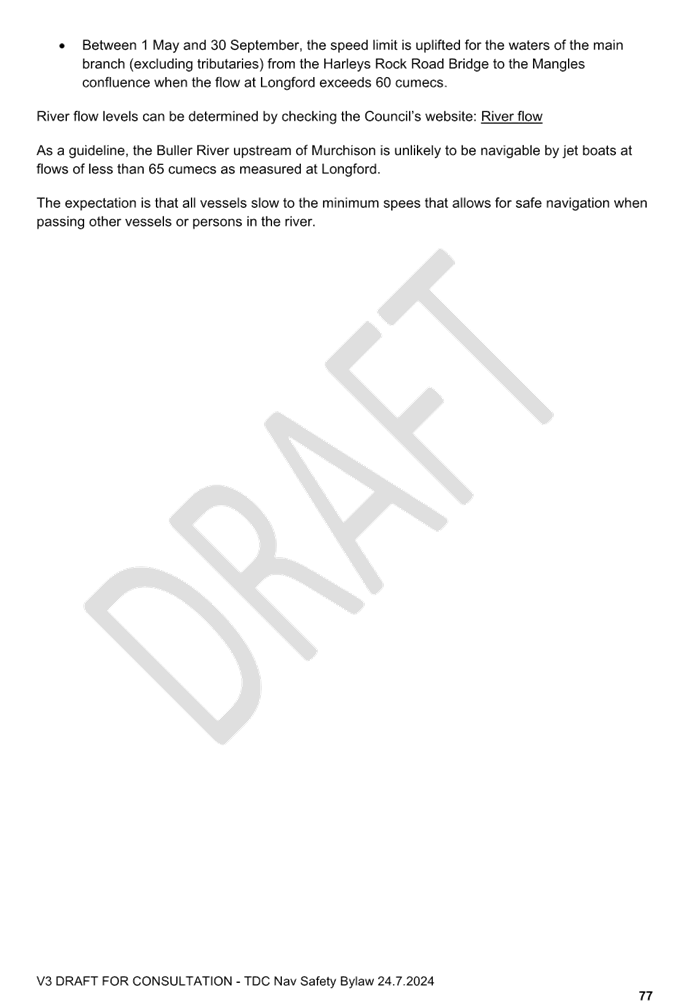
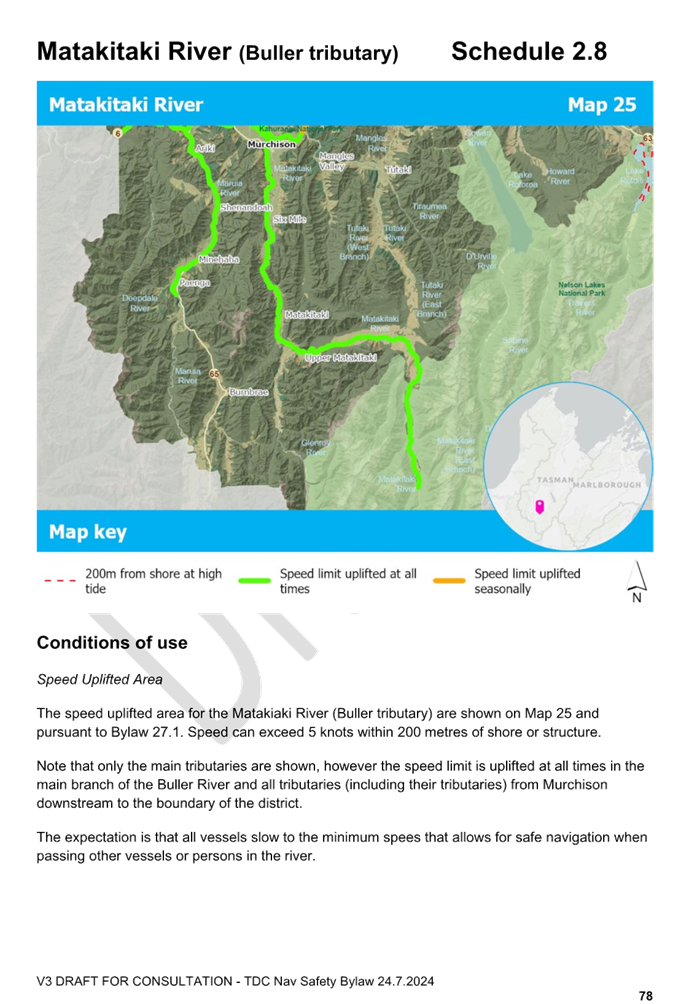
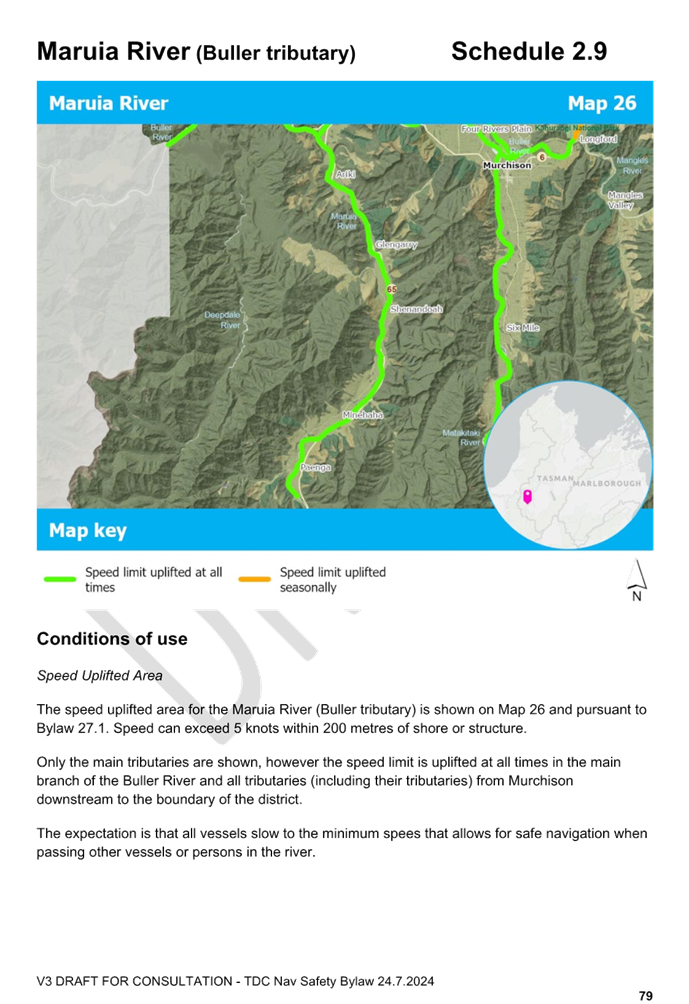
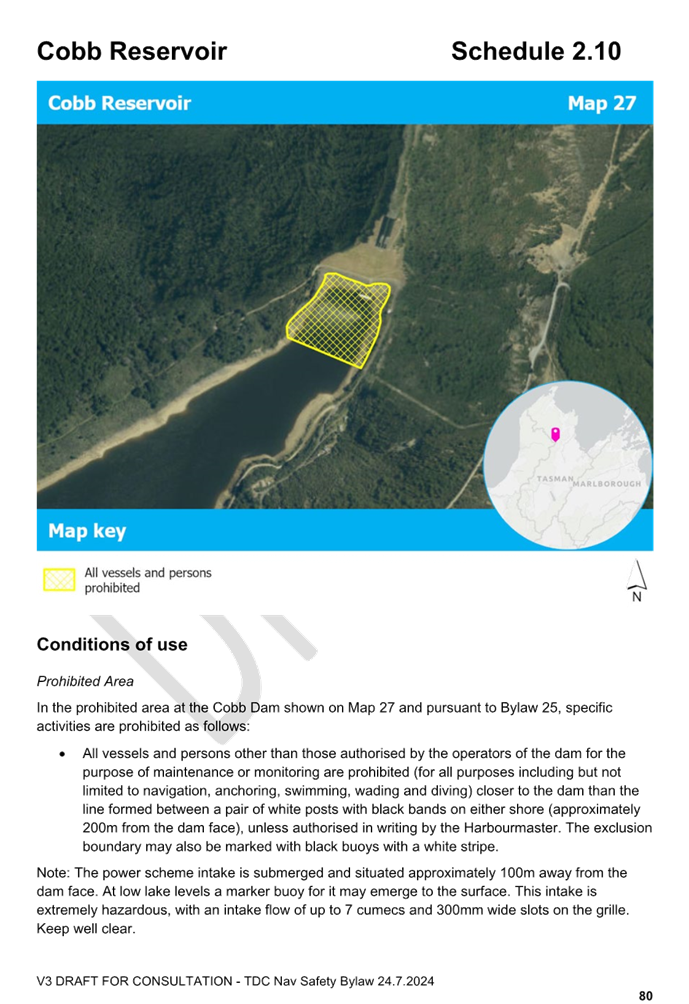
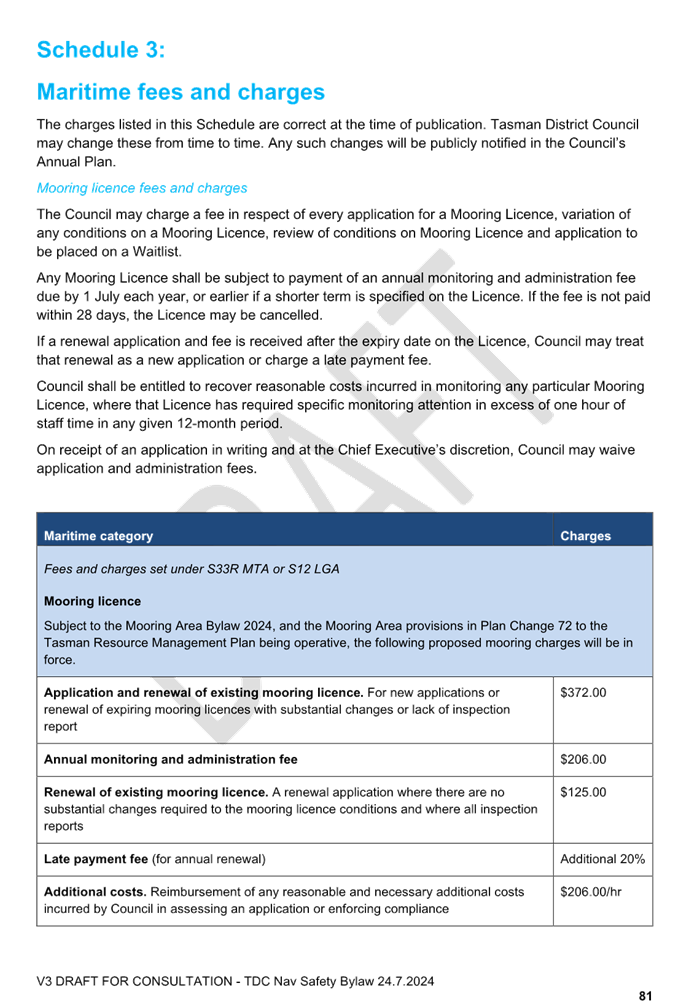
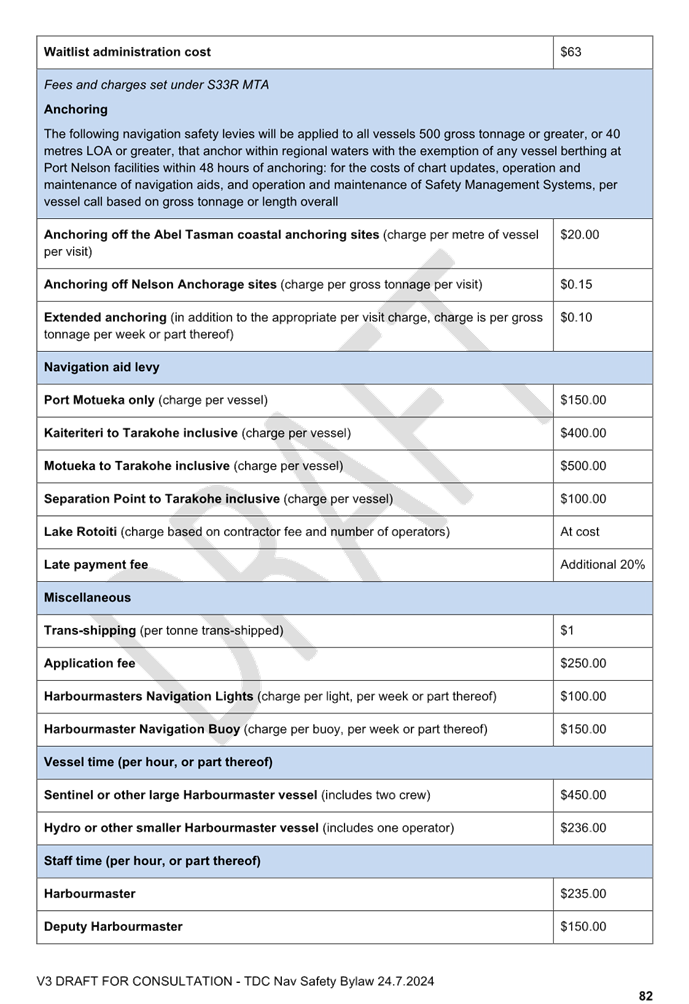
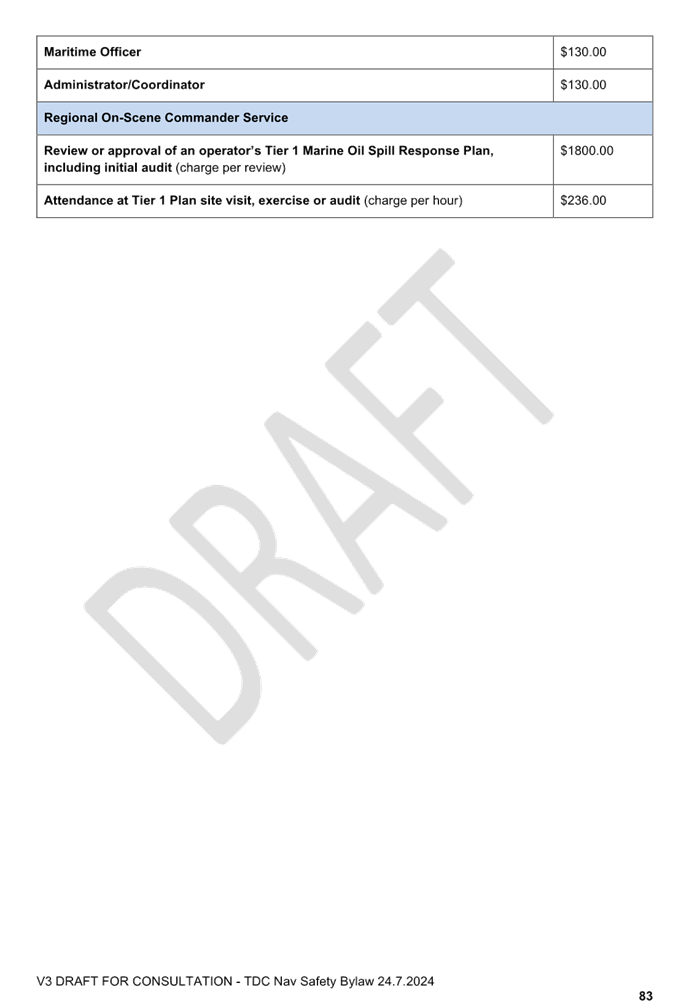
Tasman District Council Agenda – 01 August 2024
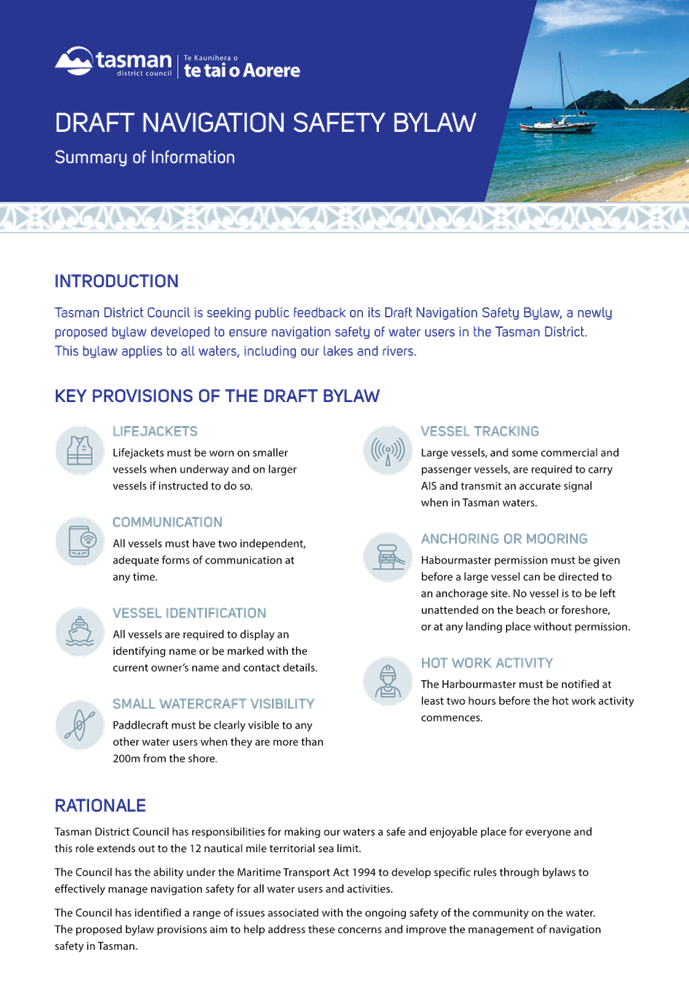
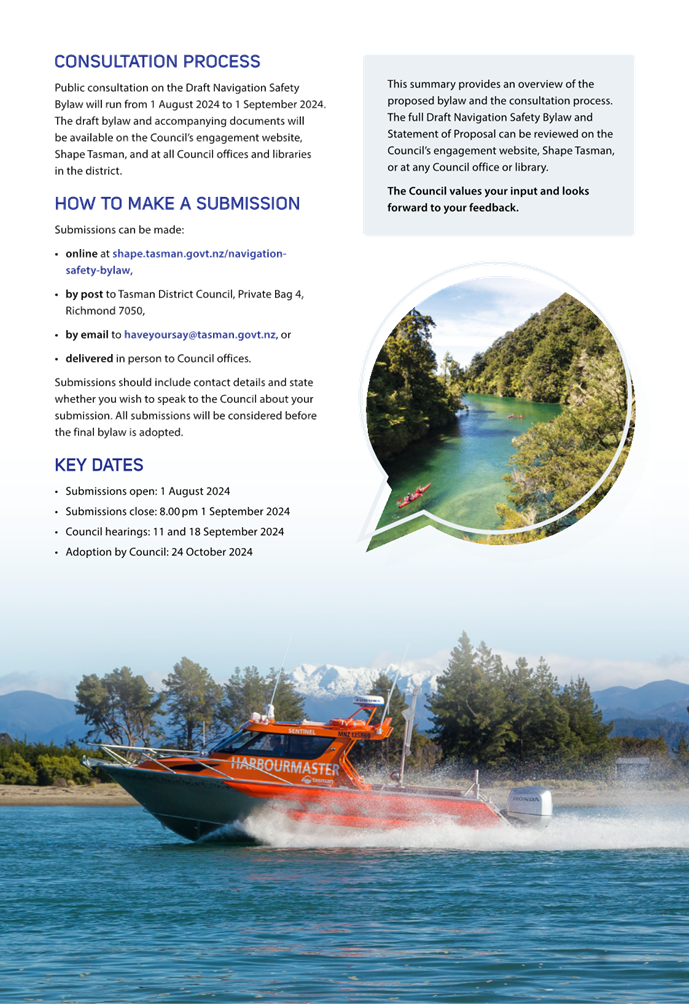
Tasman District Council Agenda – 01 August 2024
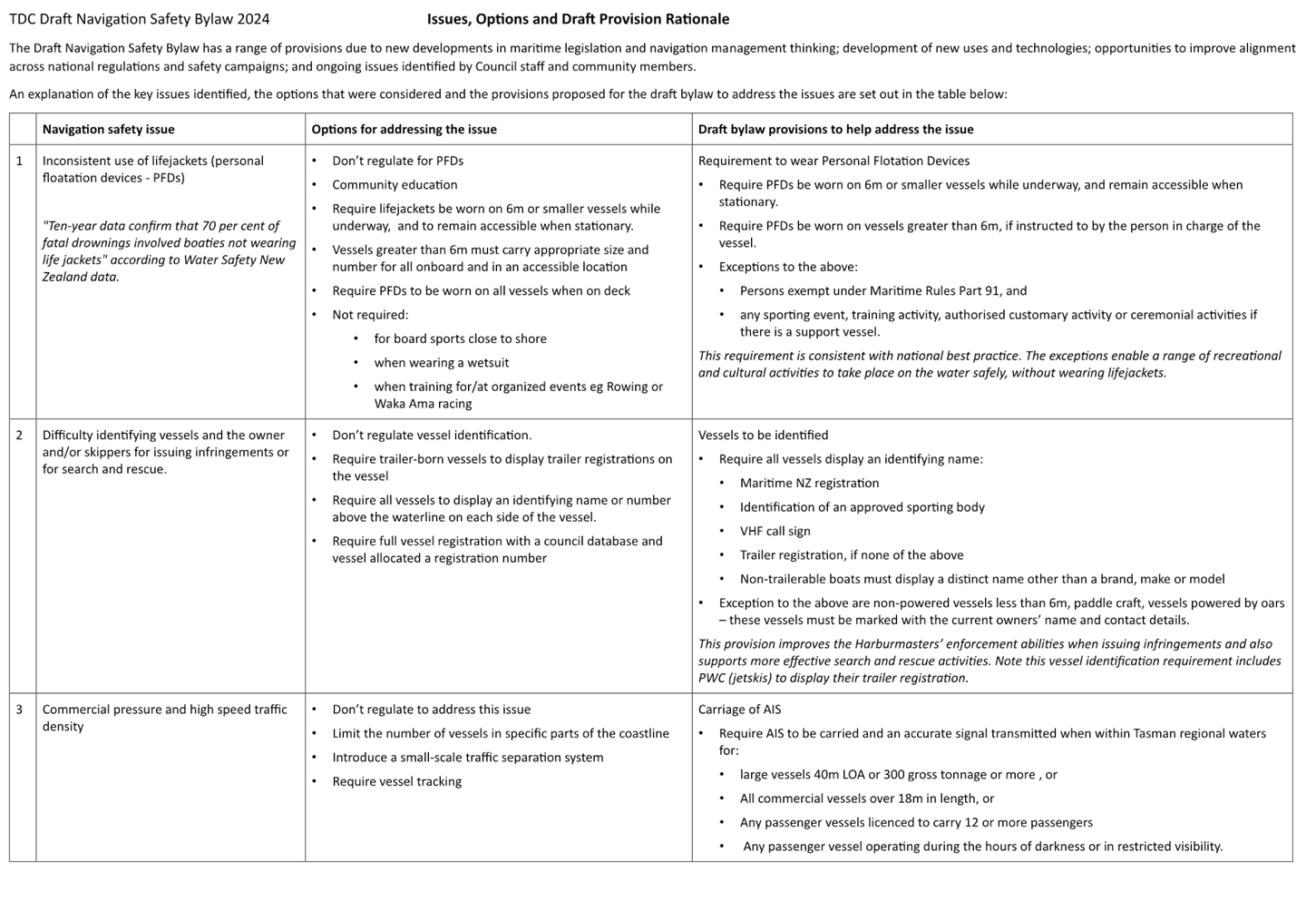
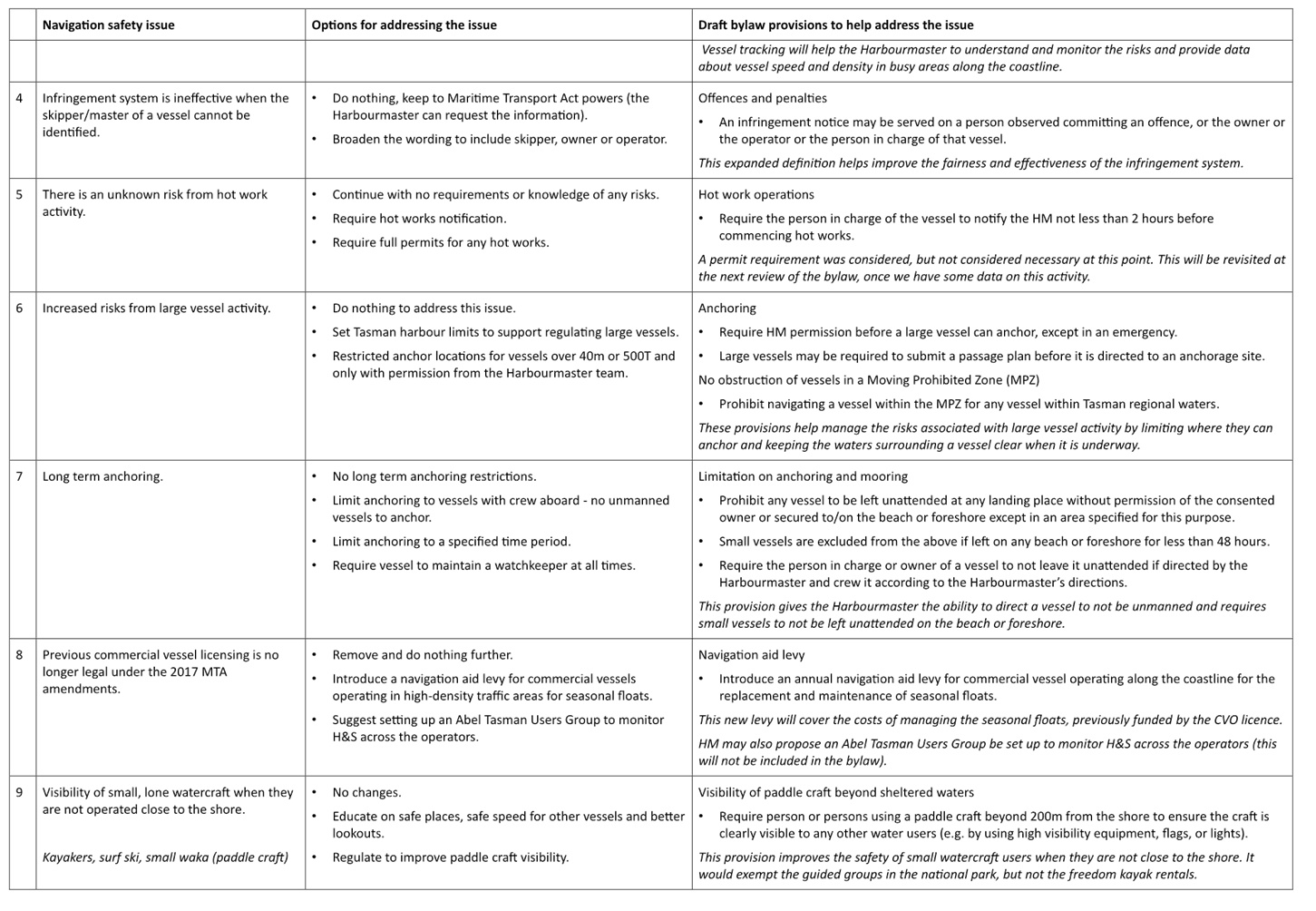
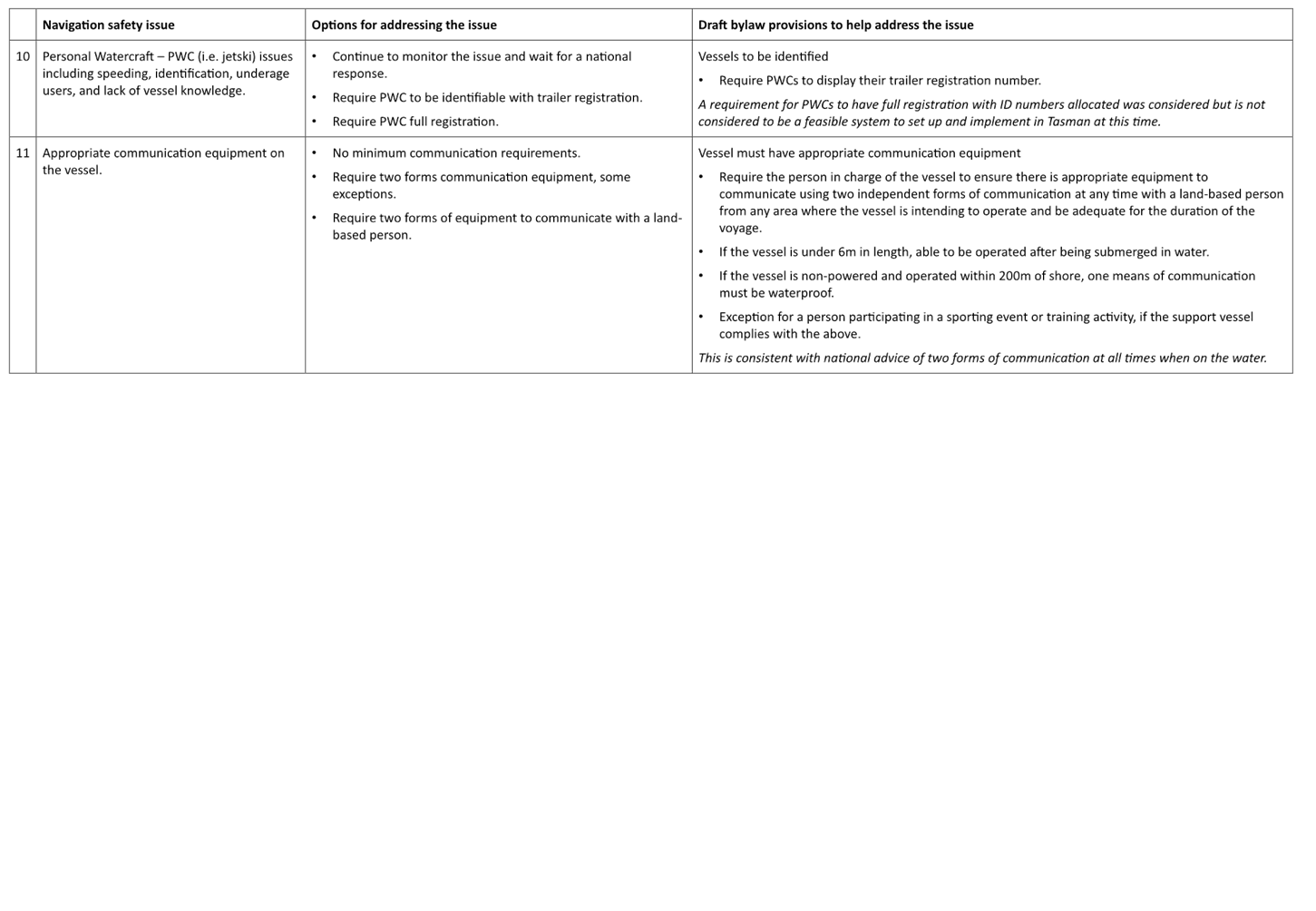
Tasman District Council Agenda – 01 August 2024
7.6 Draft Dog Control Policy and Bylaw
Decision Required
|
Report
To:
|
Tasman
District Council
|
|
Meeting
Date:
|
1
August 2024
|
|
Report
Author:
|
Cat
Budai, Community Policy Advisor; Shannon Green, Regulatory Support Officer;
Matt Moss, Ecologist
|
|
Report
Authorisers:
|
Kim
Drummond, Group Manager - Environmental Assurance; Dwayne Fletcher, Strategic
Policy Manager
|
|
Report
Number:
|
RRC24-08-9
|
1. Purpose
of the Report / Te Take mō te Pūrongo
1.1 This
report seeks approval from the Council to consult on the proposed Statement of
Proposal and the Draft Tasman District Council Dog Control Policy and Bylaw
(Attachment 1) and the Summary of Information (Attachment 2).
1.2 A
change log (Attachment 3) is attached for information only, detailing
the changes to regulations in different locations and the rationale behind the
changes.
2. Summary
/ Te Tuhinga Whakarāpoto
2.1 Staff
seek the Council’s approval to consult on both the Draft Dog Control
Policy and the Draft Dog Control Bylaw.
2.2 The
Council is required to have a Dog Control Policy which is adopted under a
special consultative procedure. The policy must contain content as set out in
Section 10 of the Dog Control Act 1996.
2.3 The
policy sets out objectives (community expectations), along with policies and
methods (actions to achieve the objectives). This includes the following
sections:
2.3.1 Identify the owner of every dog.
2.3.2 Make provision for dog access to
public places.
2.3.3 Educate dog owners and the
community about dog management.
2.3.4 Set fees and charges to provide
adequate funding for managing dog control.
2.3.5 Enforce dog owner obligations.
2.3.6 Gather information to assess the
effectiveness and fairness of our dog control policy.
2.3.7 National parks and other
Department of Conservation administered lands.
2.4 Any
Dog Control Bylaw must be consistent with the Dog Control Policy made under
Section 10 of the Dog Control Act. The Draft Dog Control Bylaw proposes changes
which also need to be reflected in the Dog Control Policy.
2.5 Staff
propose that the Dog Control Policy and Dog Control Bylaw are combined in a
single document. This will avoid unnecessary duplication and ensure consistency
between the policy and bylaw.
2.6 There
is no legislative timeframe that the Dog Control Policy needs to be reviewed
within, however, staff consider it best practice to review both the policy and
the bylaw concurrently.
2.7 The
Dog Control Bylaw provides the Council with the regulatory authority to
exercise control over several issues regarding the keeping and exercise of
dogs.
2.8 The
Dog Control Bylaw has been reviewed as part of a regular review cycle.
2.9 The
draft bylaw sets out regulations and enforcement pathways for the following
areas:
2.9.1 Control of dogs in public
places.
2.9.2 Leash control areas and leash
control operations.
2.9.3 Controlled dog exercise areas.
2.9.4 Dog prohibited areas.
2.9.5 Kennel license to keep multiple
dogs.
2.9.6 Infected dogs.
2.9.7 Removal of faeces.
2.9.8 Welfare of dogs on private or
public property.
2.9.9 Dogs on vehicles.
2.9.10 Causing dogs to become unmanageable.
2.9.11 Release from the pound.
2.9.12 Enforcement.
2.10 The
draft bylaw continues to allow both infringement and prosecution pathways to
enforcement.
2.11 A
cross-Council approach has been taken with the review, including input from
Compliance, Biodiversity, and Reserves staff. Further consideration of the
effects of dogs on wildlife has been made and particularly sensitive areas have
been prioritised.
2.12 At
the same time, other locations that are suitable for dog exercise have been
introduced to the bylaw.
2.13 Tasman’s
Great Taste Trail Bylaw has lapsed, with the intent that parts of it would be
incorporated into other relevant bylaws. Provision for dogs along
Tasman’s Great Taste Trail has been included in the draft bylaw, with
different requirements at different parts of the trail.
2.14 Staff
recommend appointing the same Hearings and Deliberations Panel as that of the
Draft Cat Management Bylaw. These bylaws are likely to have a crossover of
interested parties who may wish to speak to both submissions. Having the same
hearings panel will enable submitters to speak to both subjects at the same
time rather than attending two separate hearings.
3. Recommendation/s
/ Ngā Tūtohunga
That the Tasman District Council
1. receives
the Draft Dog Control Policy and Bylaw report RRC24-08-9; and
2. in accordance with Section 155 of the Local Government
Act 2002:
a. agrees that the
proposed bylaw is the most appropriate form of bylaw for dog management; and
b. notes that the proposed
bylaw does not give rise to any implications under the New Zealand Bill of
Rights Act 1990; and
3. approves the Draft Dog Control Policy and Bylaw and
Statement of Proposal (Attachment 1 to the agenda report), and the Summary of
Information (Attachment 2 to the agenda report) for public consultation, using
the Special Consultative Procedure as outlined in sections 83 and 86 of the
Local Government Act 2002; and
4. approves the consultation
approach (set out in section 10 of the agenda report) and agrees:
4.1 the approach includes
sufficient steps to ensure the Statement of Proposal will be reasonably
accessible to the public and will be publicised in a manner appropriate to its
purpose and significance; and
4.2 the approach will
result in the Statement of Proposal being widely publicised as is reasonably
practicable as a basis for consultation; and
5. authorises staff to give public notice of the
Council’s intention to consult on the Draft Dog Control Policy and Bylaw
as per Attachment 1 to the agenda report; and
6. delegates authority to the Mayor and Chief Executive
Officer to make any amendments to the Draft Bylaw, Statement of Proposal, or
Summary of Information that may be agreed to at the Council meeting, and make
any minor changes; and
6. appoints a
Hearings and Deliberations Panel consisting of:
Councillor
Hill (Chair)
Councillor
Maru
Councillor
McKenzie
Councillor
Ellis
Councillor
Bryant
to
hear and consider submissions on the Draft Dog Control Bylaw and make
recommendations to the Tasman District Council;
7.
agrees that the Chair of the Hearing Panel has the ability to appoint
another member to the panel, should one of the appointed members be
unavailable.
4.1 The Dog Control Bylaw was last amended
in 2020, although this focused on provisions for the Golden Bay area.
4.2 The draft bylaw is scheduled to be
adopted in November 2024. This means it will fall just outside the designated
review period. Bylaws have a two year ‘grace period’ for which they
are still valid and can be enforced. However, the bylaw adopted in November
2024 will be considered a new bylaw. As such, the Council will be required to
review it within five years.
4.3 As several changes to zoning are
proposed, staff consider it best practice to review the new bylaw within five
years regardless of the legal requirement to do so.
4.4 The need to review the Dog Control Bylaw
was raised with elected members at a workshop in October 2023, and draft
content was subsequently workshopped in May 2024 alongside early engagement
results.
4.5 The Draft Dog Control Policy is being
reviewed in conjunction with the Draft Dog Control Bylaw, with the intent that
these two documents will be combined when adopted. We sought and received
confirmation that this approach is legally sound.
5. Analysis
and Advice / Tātaritanga me ngā tohutohu
Early Engagement
5.1 Early
engagement was carried out in November/December 2023, using the Shape Tasman
platform. This was advertised through Newsline and social media.
5.2 Stakeholders
such as the Department of Conservation, Forest & Bird, local veterinarians
and dog interest groups were notified of the early engagement and encouraged to
participate.
5.3 Over
500 people contributed to the social map as part of the early engagement and
over 200 offered free text feedback on a range of issues relating to dogs. This
feedback was taken into consideration during the drafting process.
Policy Content
5.4 The
policy content has been updated to reflect that it will be included in the same
document as the bylaw.
5.5 Points
of duplication (such as the interpretations section and designated areas for
leash control, controlled exercise, seasonal and/or time restriction and
prohibition) will now refer to the appropriate clause within the bylaw.
5.6 Aspects
of the policy that reflect operational practice such as setting fees and
maintaining a register of dogs have been checked to ensure they reflect current
practice.
Bylaw Content
5.7 There
have been some changes made to Part A of the bylaw. This includes a section on
the purpose of the bylaw. Including a purpose in a bylaw is best practice
because it clarifies the bylaw's intent, guiding interpretation and
application, and ensuring that all stakeholders understand its objectives and
scope.
5.8 A
‘Scope of Maps’ section has now been included. The coverage of
beaches, foreshores, estuaries and mudflats now have an inclusive
interpretation to avoid an ambiguity or dispute caused by mapping which may not
exactly cover the desired area.
5.9 Dog
rangers have the authority to enforce the Dog Control Act. To avoid redundancy,
provisions in the bylaw that duplicate the content of the Dog Control Act have
been removed in the draft. The Dog Control Act already empowers rangers to
enforce its provisions, making repetition in the bylaw unnecessary.
5.10 The
current bylaw includes a definition of "effective control." This
definition should be removed, and the bylaw should refer to "control"
instead. There is no corresponding definition of "effective control"
in the Dog Control Act. However, control is implied through various sections of
the act and supported by case law, ensuring clarity and consistency.
5.11 The
current bylaw includes a section on the seizure of dogs. This section has been
removed in the draft. The Dog Control Act provides comprehensive guidelines for
the seizure of dogs, making similar provisions in the bylaw redundant and
unnecessary.
5.12 The
current bylaw addresses the issue of dogs left in vehicles. This section should
be removed. This issue is more appropriately managed under the Animal Welfare
Act. Including it in the bylaw could create conflicts with Section 20 of the
Dog Control Act, potentially rendering it ultra vires.
5.13 The
current bylaw has a section addressing dogs that become a nuisance or injurious
to health. This section has been removed in the draft. Elements of this section
may conflict with Section 20 of the Dog Control Act. The enforceable parts are
already covered by the Dog Control Act and do not need to be duplicated in the
bylaw.
5.14 The
current bylaw includes a section on the burial of dead dogs. This section has
been removed in the draft. It is considered unnecessary, does not align with
the purpose of the bylaw, and may conflict with Section 20 of the Dog Control
Act.
5.15 Part
B of the bylaw contains five schedules which detail which areas are designated
as leash control areas, controlled exercise areas, seasonal or time restricted
areas, dogs prohibited areas and Tasman’s Great Taste Trail.
5.16 Several
of the locations within Part B have either had their boundaries adjusted or
zoning changed. The details of these changes can be found in the attached
change log, along with the rationale behind what is proposed.
5.17 The
draft bylaw now sets out enforcement measures (offences and penalties) in Part
C.
Consultation
5.18 In
the online submission form available through Shape Tasman, submitters will be
asked how much they agree with the proposed plans in each ward. They will also
be asked their preference of alternative options being considered in Tata
Beach, Ligar Bay Beach and Little Kaiteriteri. This information is available in
the Statement of Proposal.
6.1 The options are outlined in the
following table:
|
Option
|
Advantage
|
Disadvantage
|
|
1.
|
The Council approves the Draft Dog
Control Policy and Bylaw and supporting documents for consultation.
|
The Council continues to be able to
enforce dog control measures. The policy and bylaw will be aligned. The bylaw
progresses to the next stage and will be on track for anticipated time frames
for adoption.
|
No material disadvantages identified.
|
|
2.
|
The Council approves the Draft Dog
Control Policy and Bylaw and supporting documents for consultation, but with
amendments.
|
Opportunity to consider further feedback
from the Council (minor amendments are delegated to the Chief Executive
Officer).
|
Changes to fundamental principles would
require legal review to confirm legality of changes. Significant changes
could disrupt anticipated timeframes.
|
|
3.
|
The Council does not approve the Draft
Dog Control Policy and Bylaw and supporting documents for consultation.
|
|
The Council will only be able to enforce
the bylaw until September 2026, at which point it will be revoked.
|
6.2 Option one is recommended.
7.1 Section 10 of the Dog Control Act
requires the Council to adopt a policy on dogs in accordance with a Special
Consultative Procedure. The Council must give effect to the policy adopted
under Section 10 by making the necessary bylaws under Section 20, which must
come into force not later than 60 days after the policy is adopted. This will
be achieved through a concurrent consultation and adoption timeframe.
7.2 The Council cannot make a bylaw that is
inconsistent with the policy. It is proposed that the two documents are
combined so that points of duplication or inconsistency can be avoided. The
draft policy will refer to clauses within the bylaw as opposed to repeating
them and risking a conflict.
7.3 Section 20 of the Dog Control Act
allows the Council to make bylaws to regulate the following
purposes:
a. prohibiting dogs, whether
under control or not, from specified public places;
b. requiring dogs, other than
working dogs, to be controlled on a leash in specified public places, or in
public places in specified areas or parts of the district;
c. regulating and controlling
dogs in any other public place;
d. designating specified areas
as dog exercise areas;
e. prescribing minimum standards
for the accommodation of dogs;
f. limiting the number of dogs
that may be kept on any land or premises;
g. requiring dogs in its
district to be tied up or otherwise confined during a specified period
commencing not earlier than half an hour after sunset, and ending not later
than half an hour before sunrise;
h. requiring the owner of any
dog that defecates in a public place or on land or premises other than that
occupied by the owner to immediately remove the faeces;
i. requiring any bitch to
be confined but adequately exercised while in season;
j. providing for the
impounding of dogs, whether or not they are wearing a collar having the proper
label or disc attached, that are found at large in breach of any bylaw made by
the territorial authority under this or any other Act;
k. requiring the owner of any
dog (being a dog that, on a number of occasions, has not been kept under
control) to cause that dog to be neutered (whether or not the owner of the dog
has been convicted of an offence against section 53);
l. any other purpose that
from time to time is, in the opinion of the territorial authority, necessary or
desirable to further the control of dogs.
7.4 The draft bylaw has been prepared with
input from various stakeholders, including animal welfare organisations and the
public, ensuring it reflects the community's needs and concerns.
7.5 There are no implications under the New
Zealand Bill of Rights Act 1990. The Draft Dog Control Bylaw does not place
unreasonable limits on freedom of movement, expression or association, and does
not isolate any particular social group in terms of the NZ Bill of Rights Act.
The requirements are reasonable and justifiable measures to address issues
related to dog control in the Tasman District.
8. Iwi
Engagement / Whakawhitiwhiti ā-Hapori Māori
8.1 Iwi have been notified about the bylaw
review through Council’s Iwi Engagement Portal and encouraged to make a
submission during the consultation period. Iwi who indicated that they would
like to be involved will be sent a further email along with other stakeholders
to invite them to make a submission.
9. Significance
and Engagement / Hiranga me te Whakawhitiwhiti ā-Hapori Whānui
9.1 Staff consider that the level of
significance for the draft policy and draft bylaw will be of moderate to high
interest to the public. It will have a higher level of significance for people
who own dogs and environmental advocates.
9.2 It is planned to undertake a special
consultative procedure in accordance with section 83 of the Local Government
Act.
|
|
Issue
|
Level of
Significance
|
Explanation of
Assessment
|
|
1.
|
Is there a high level
of public interest, or is decision likely to be controversial?
|
High
|
The early engagement
attracted a significant number of responses from the community. There are
some highly contested areas where community division on the best way to
proceed has been identified.
|
|
2.
|
Are there impacts on
the social, economic, environmental or cultural aspects of well-being of the
community in the present or future?
|
Moderate
|
It impacts community
safety, responsible pet ownership, and environmental cleanliness, all of
which are important but not critical issues.
|
|
3.
|
Is there a
significant impact arising from duration of the effects from the decision?
|
Moderate
|
The policy and bylaw
will be in place until the next review within five (5) years.
|
|
4.
|
Does the decision
relate to a strategic asset? (refer Significance and Engagement Policy for
list of strategic assets)
|
No
|
|
|
5.
|
Does the decision
create a substantial change in the level of service provided by Council?
|
No
|
|
|
6.
|
Does the proposal,
activity or decision substantially affect debt, rates or Council finances in
any one year or more of the LTP?
|
No
|
Dog control
activities are entirely covered by registration fees and infringements issued
under the Dog Control Act.
|
|
7.
|
Does the decision
involve the sale of a substantial proportion or controlling interest in a CCO
or CCTO?
|
No
|
|
|
8.
|
Does the
proposal or decision involve entry into a private sector partnership or
contract to carry out the deliver on any Council group of activities?
|
No
|
|
|
9.
|
Does the proposal or
decision involve Council exiting from or entering into a group of
activities?
|
No
|
|
|
10.
|
Does the proposal
require particular consideration of the obligations of Te Mana O Te Wai
(TMOTW) relating to freshwater or particular consideration of current
legislation relating to water supply, wastewater and stormwater
infrastructure and services?
|
No
|
|
10. Communication
/ Whakawhitiwhiti Kōrero
10.1 Stakeholders with an interest in the terms of the
bylaw have been identified and will receive an email notifying them of the
consultation and encouraging them to make a submission.
10.2 In accordance with Section 10 (2) of the Dog
Control Act 1996, registered dog owners will be notified of the draft policy
and bylaw and the consultation process.
10.3 The public will be notified about the consultation
through Newsline. This will include a brief article outlining the key issues
and instructions on how to make a submission.
10.4 The Statement of Proposal (including the draft
policy and bylaw), and a summary of information will be made available at all
Council offices and libraries throughout the consultation period.
10.5 Background information and a link to the submission
portal will be available through Shape Tasman.
11. Financial
or Budgetary Implications / Ngā Ritenga ā-Pūtea
11.1 The draft policy and bylaw does not have any
material financial or budgetary implications for the Council. Dog regulation is
entirely funded by dog registration fees and infringements issued under the Dog
Control Act. Several signs around the district need to be replaced which incurs
an expense. It is planned that this will be covered by the Animal Control
budget.
12.1 Failing to progress with the bylaw review will
delay the process and potentially risk a lapsed bylaw that is not enforceable.
This is considered a low risk as the bylaw would not officially lapse until the
end of the two-year grace period, which starts in September 2024.
12.2 The timeline has the bylaw being adopted in late
November 2024. This means it will be treated as a new bylaw and as such will
need to be reviewed within five years.
12.3 Given that a significant number of changes are
proposed, staff consider that a review within five years would be best
practice, regardless of the legal requirement to do so.
12.4 The Dog Control Bylaw must be consistent with the
Dog Control Policy. This has been addressed by combining the policy and bylaw
in one document to ensure that any changes consider both aspects. Rather than
duplicating content, which increases the risk of inconsistency when changes are
made, the policy now refers to the appropriate clause within the bylaw.
13. Climate
Change Considerations / Whakaaro
Whakaaweawe Āhuarangi
13.1 The draft policy and bylaw are unlikely to have any
impact on the Council or the Tasman District’s carbon footprint.
13.2 Implementation of the draft policy and bylaw is not
likely to be impacted by the effects of climate change.
13.3 The draft policy and bylaw neither aligns or
detracts from the Council’s and Government’s plans, policies and
legal obligations relating to climate change.
14. Alignment
with Policy and Strategic Plans / Te Hangai ki ngā aupapa Here me ngā
Mahere Rautaki Tūraru
14.1 The draft policy and bylaw has taken relevant
reserve management plans into consideration, including the proposal to prohibit
dogs from reserves bordering the Waimea Inlet. This is a result of Policy 6 in
Section 5.1 of the Moutere-Waimea Ward Reserve Management Plan.
14.2 The draft policy and bylaw are designed to work in
conjunction with the Council’s enforcement policy, emphasising an
education-first approach for instances of non-compliance that are not serious.
14.3 Staff request that the Council appoints a hearings
and deliberations panel that will make a recommendation to the Council to adopt
the final bylaw.
15. Conclusion
/ Kupu Whakatepe
15.1 The Draft Dog Control Policy and Draft Dog Control
Bylaw have been combined in a single document to ensure consistency.
15.2 The Draft Dog Control Bylaw aims to provide the
Council with the authority to regulate and control the ownership, behaviour,
and welfare of dogs within the Tasman District. The Draft Dog Control
Bylaw has taken concerns around wildlife protection into consideration, while
also providing additional spaces for controlled exercise.
15.3 The bylaw will be considered a new bylaw, and as
such, both the policy and bylaw will be reviewed within five years.
16. Next
Steps and Timeline / Ngā Mahi Whai Ake
|
Date
|
Process
|
|
1 August 2024
|
The Council adopts the Statement of Proposal including the
Draft Dog Control Policy and Bylaw, and the Summary of Information for
consultation
|
|
7 August – 8 September 2024
|
Formal Consultation
|
|
23 – 25 September 2024
|
Hearings
|
|
16 October 2024
|
Deliberations
|
|
28 November 2024
|
Final Dog Control Policy and Bylaw presented to the
Council for approval and adoption
|
|
13 December 2024
|
Public notice in Newsline and on the Council’s
website advising that the policy and bylaw have been adopted
|
|
1.⇩
|
Statement
of Proposal including Dog Control Policy and Bylaw
|
285
|
|
2.⇩
|
Summary of
Information - Dog Control Bylaw
|
410
|
|
3.⇩
|
Dog Control
Change Log
|
414
|
Tasman District Council Agenda – 01 August 2024
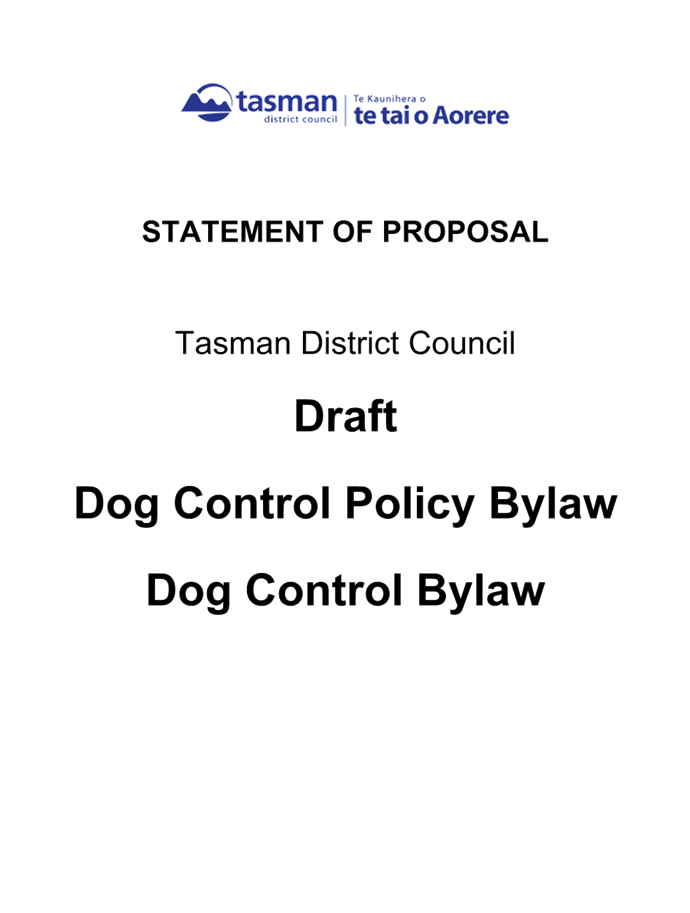
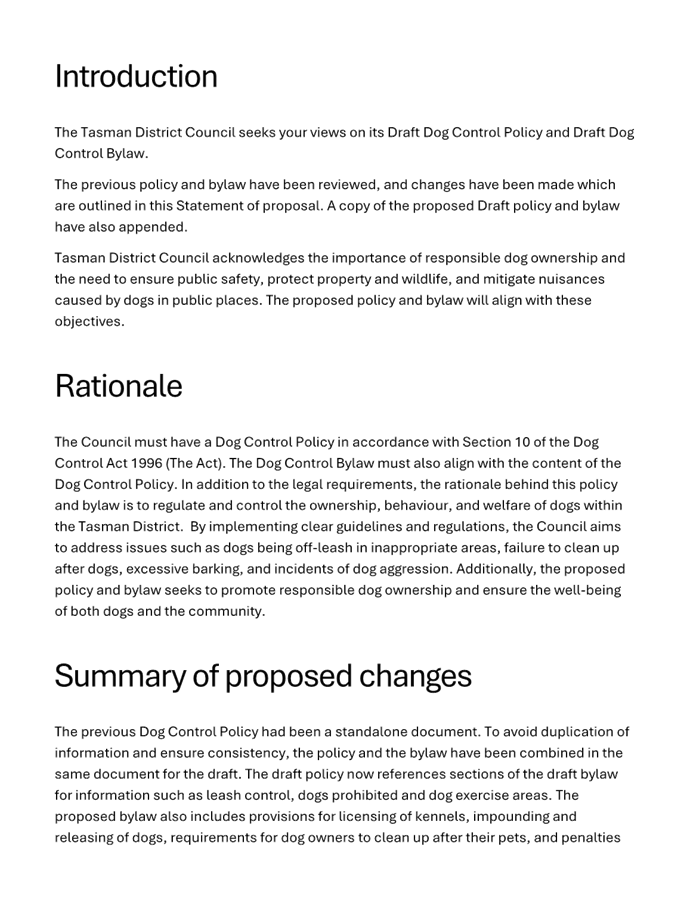
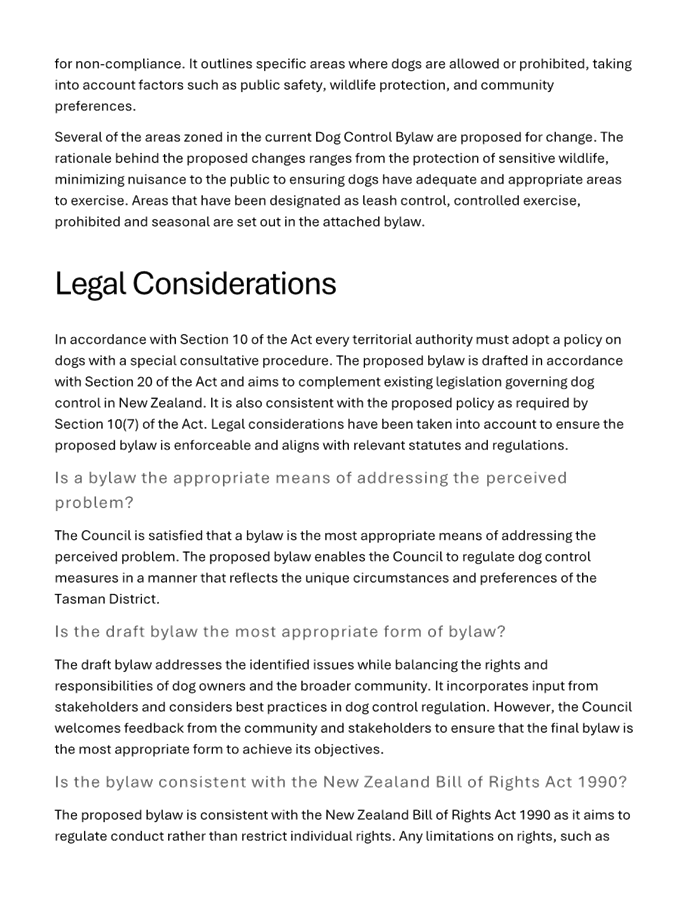
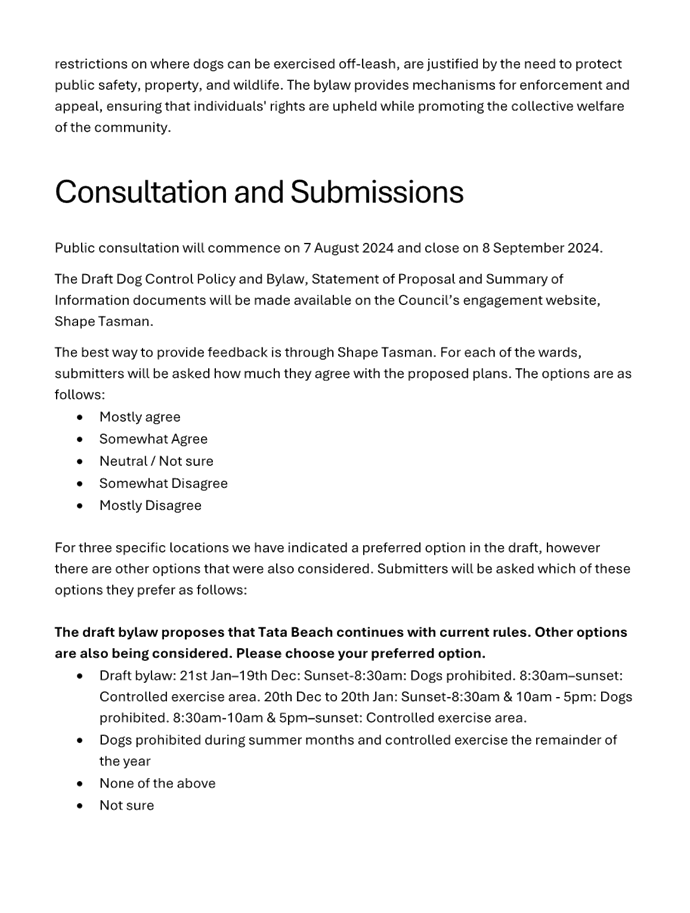
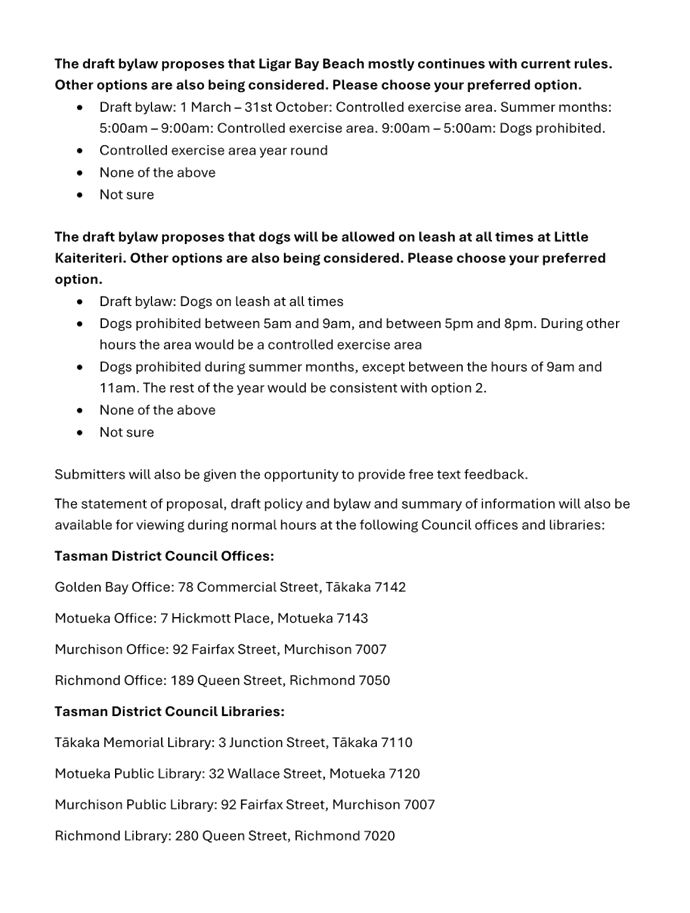
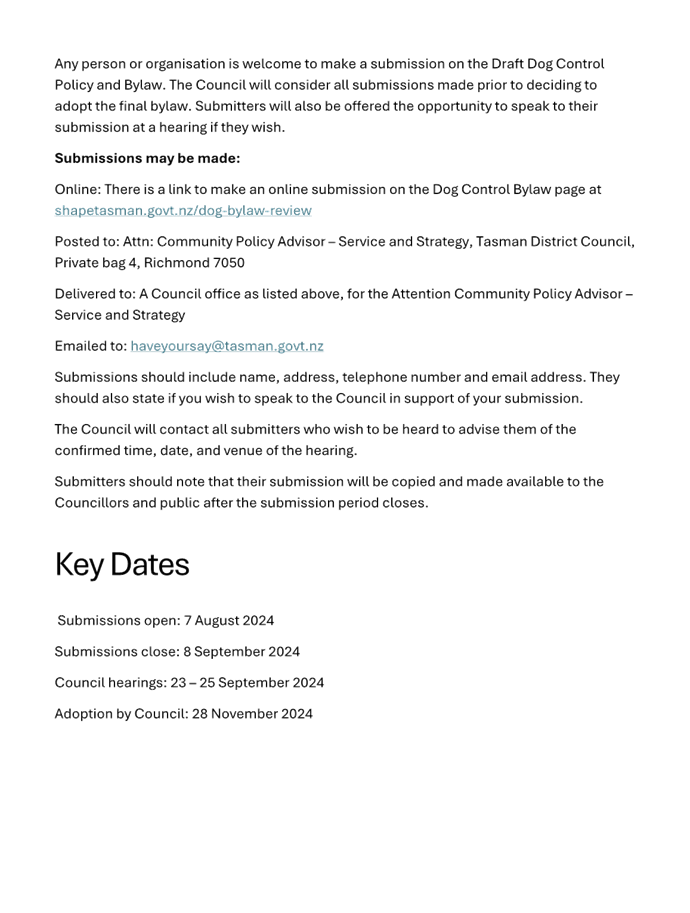
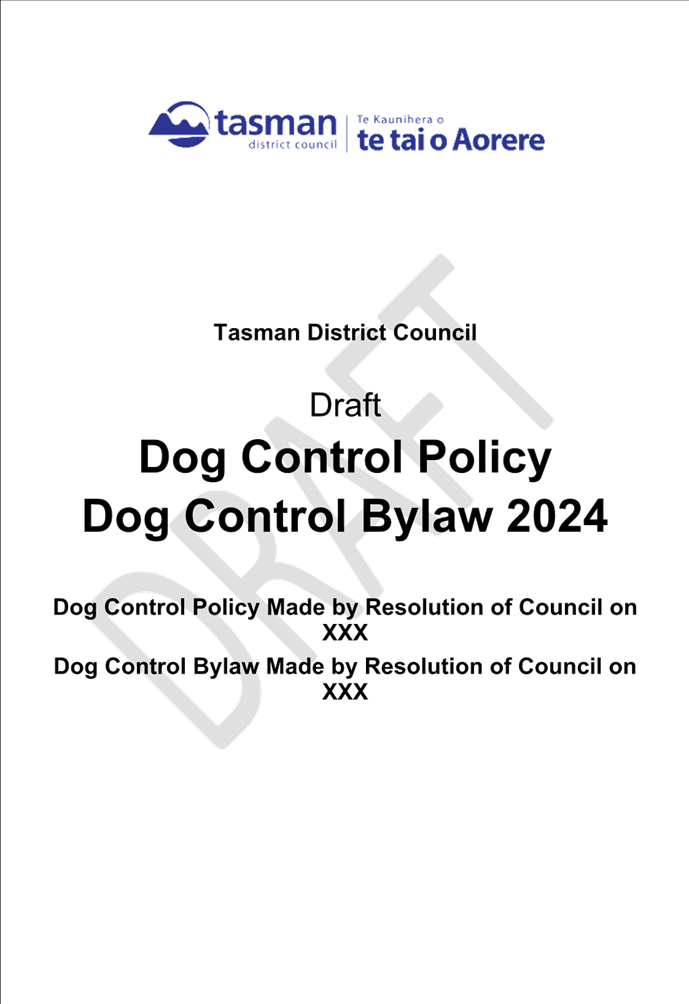
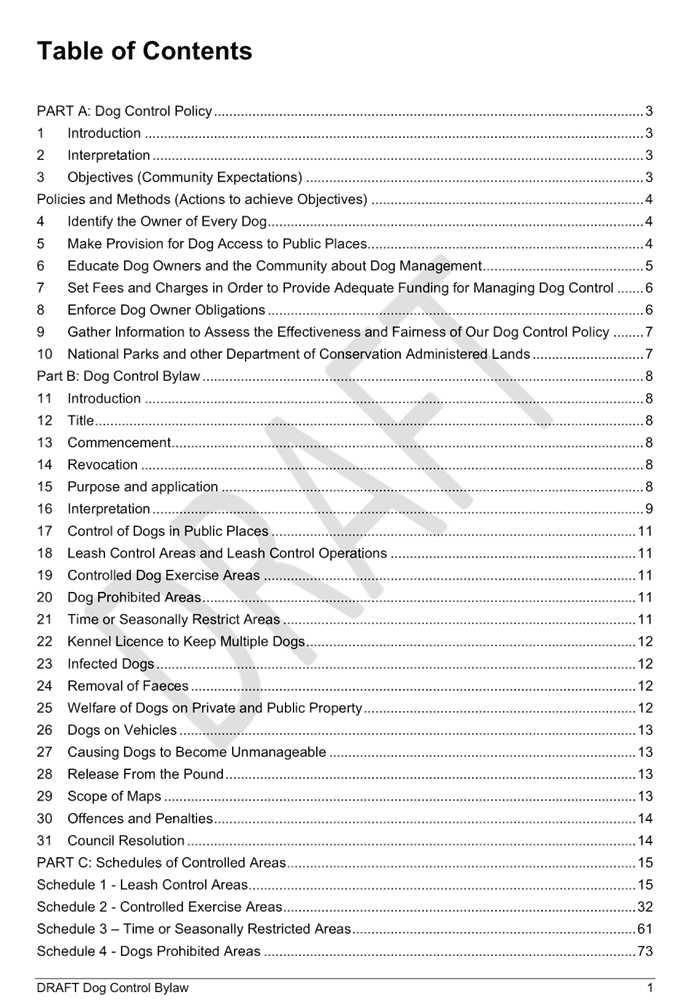

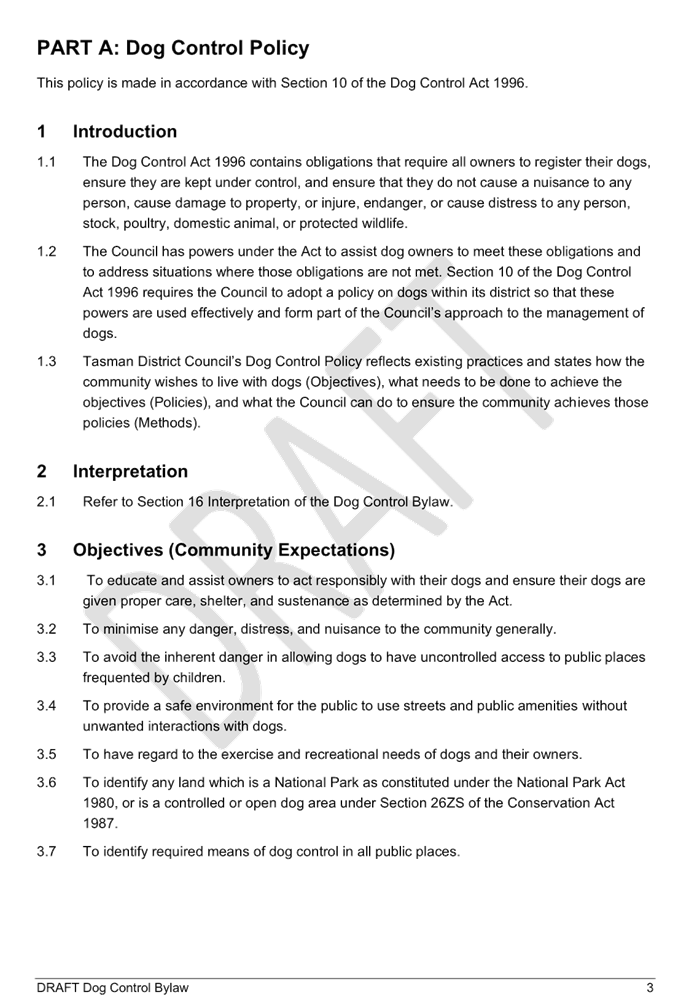
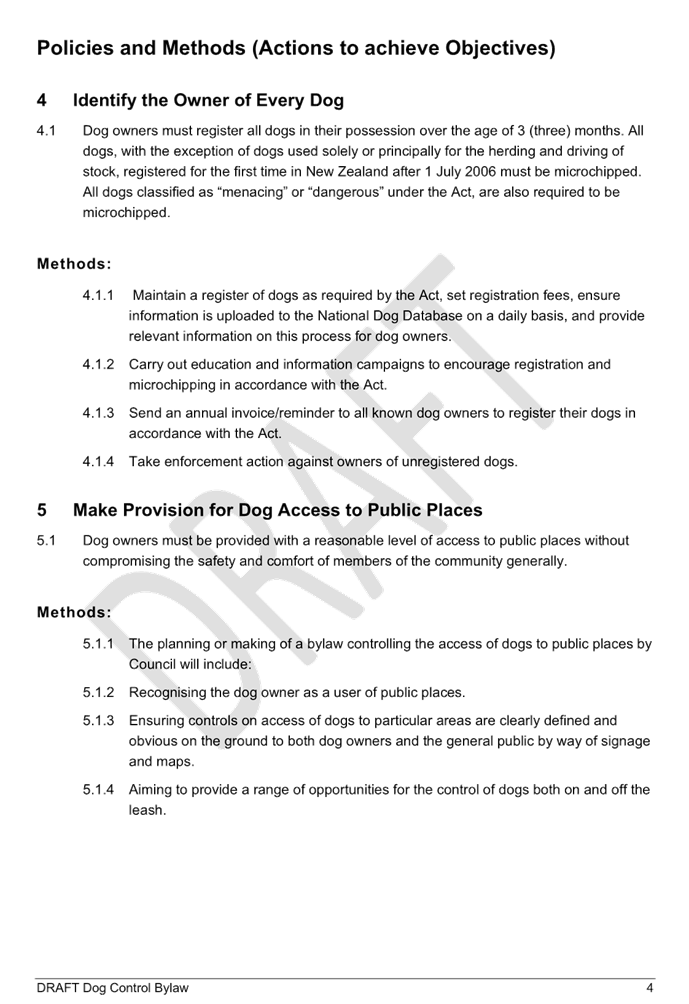
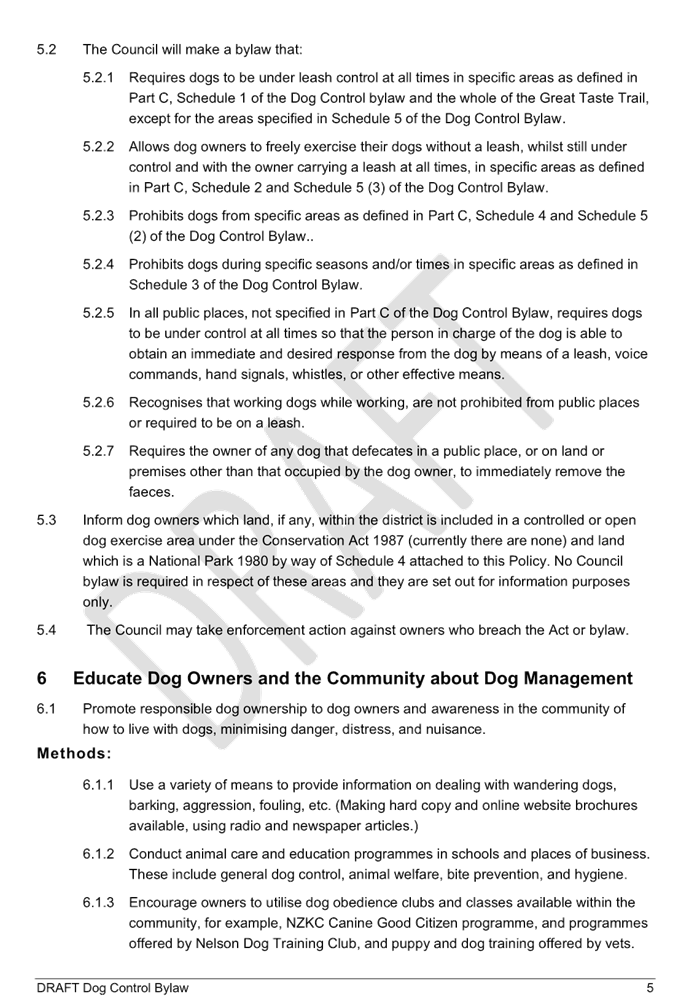
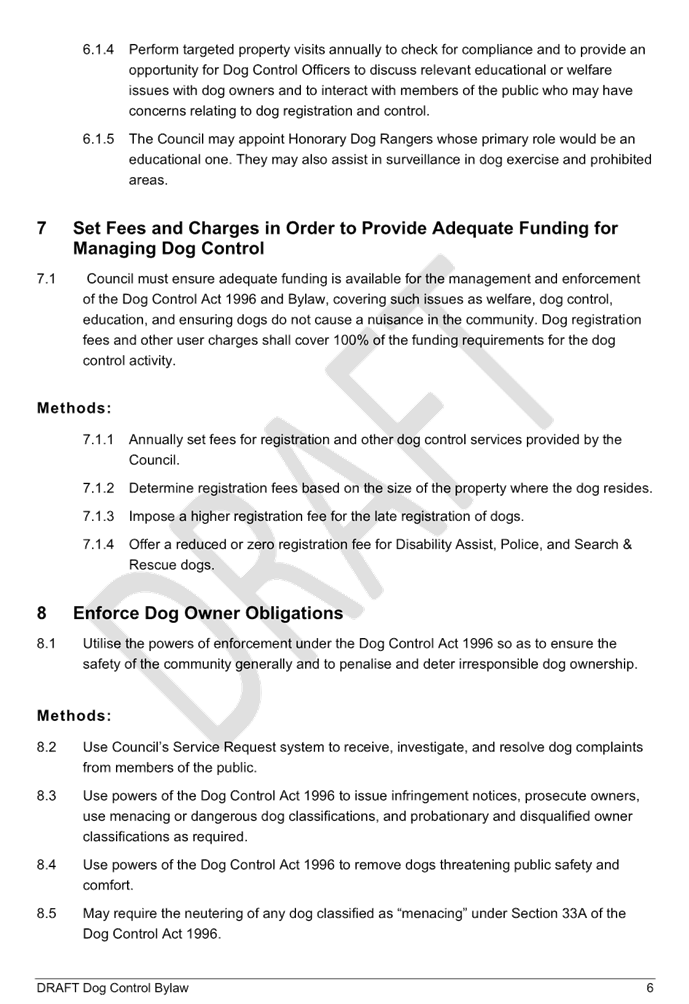
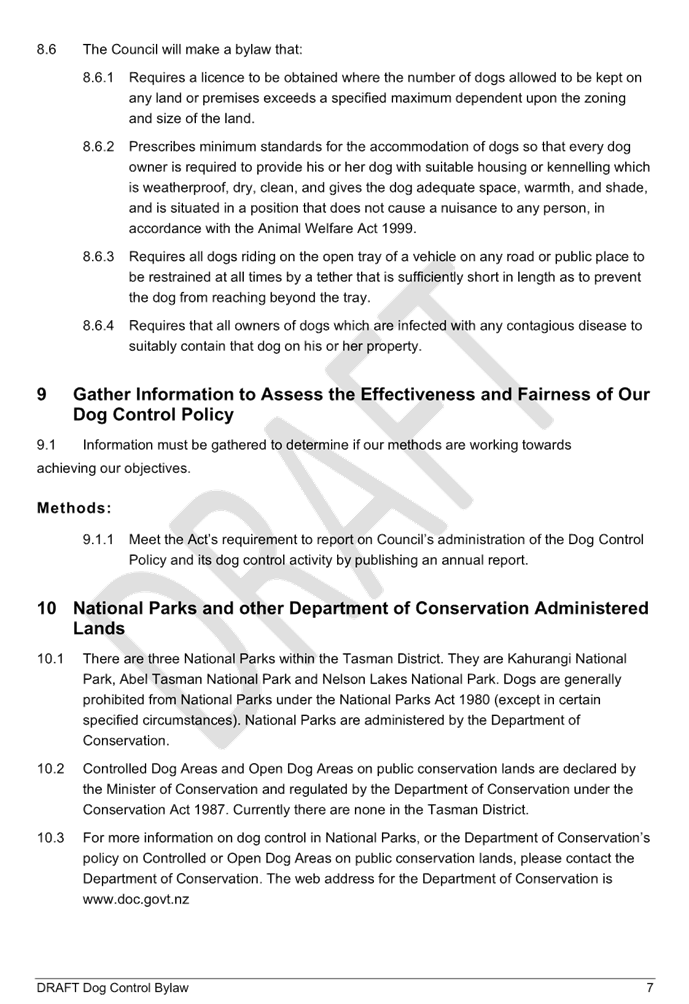

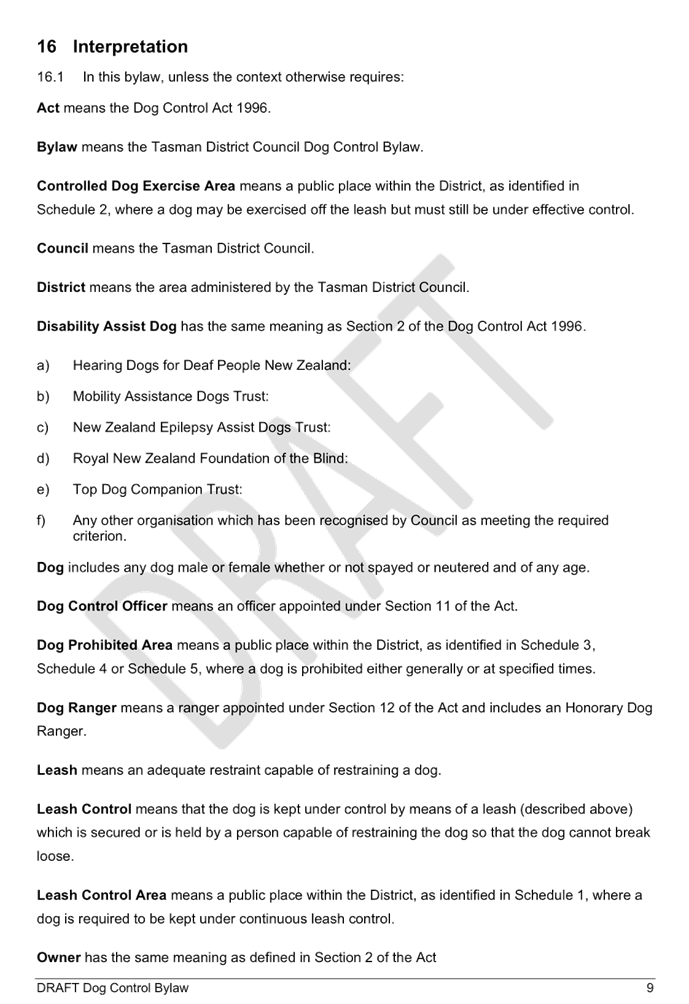
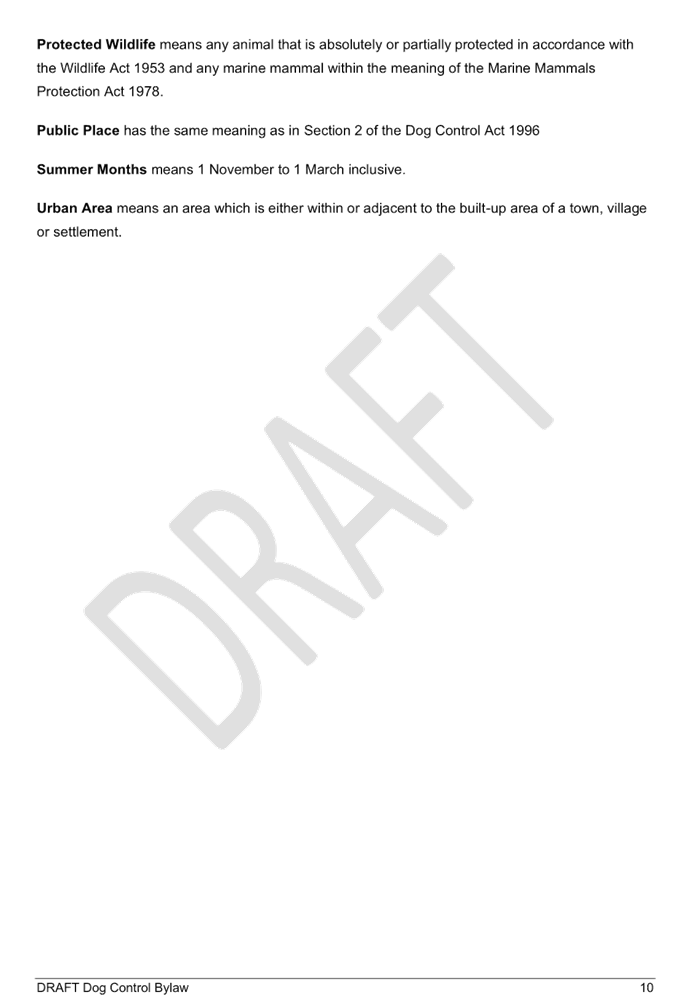
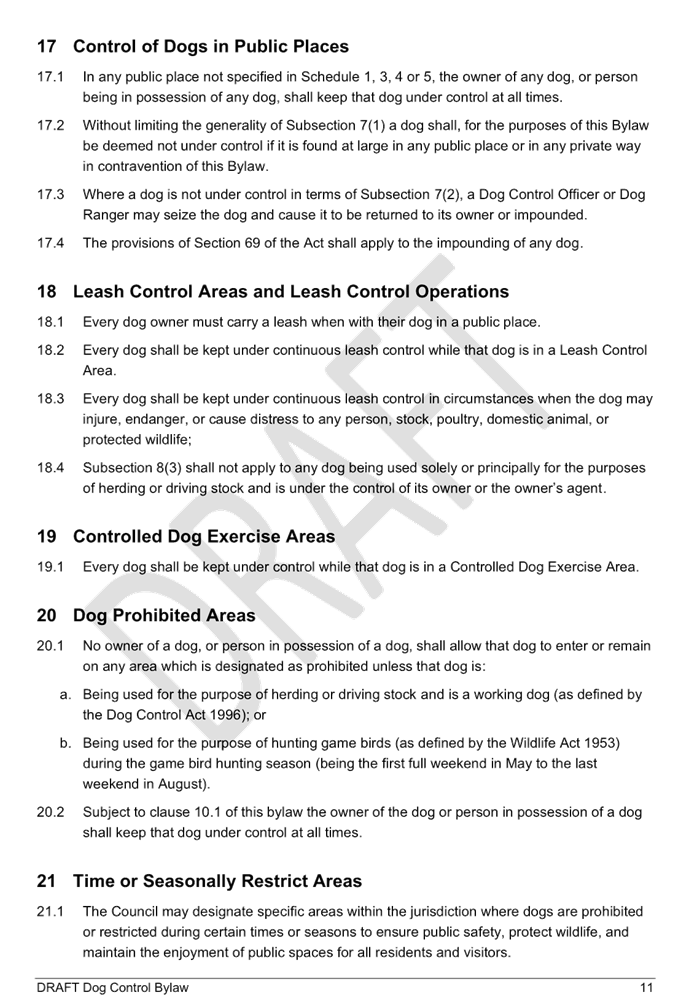
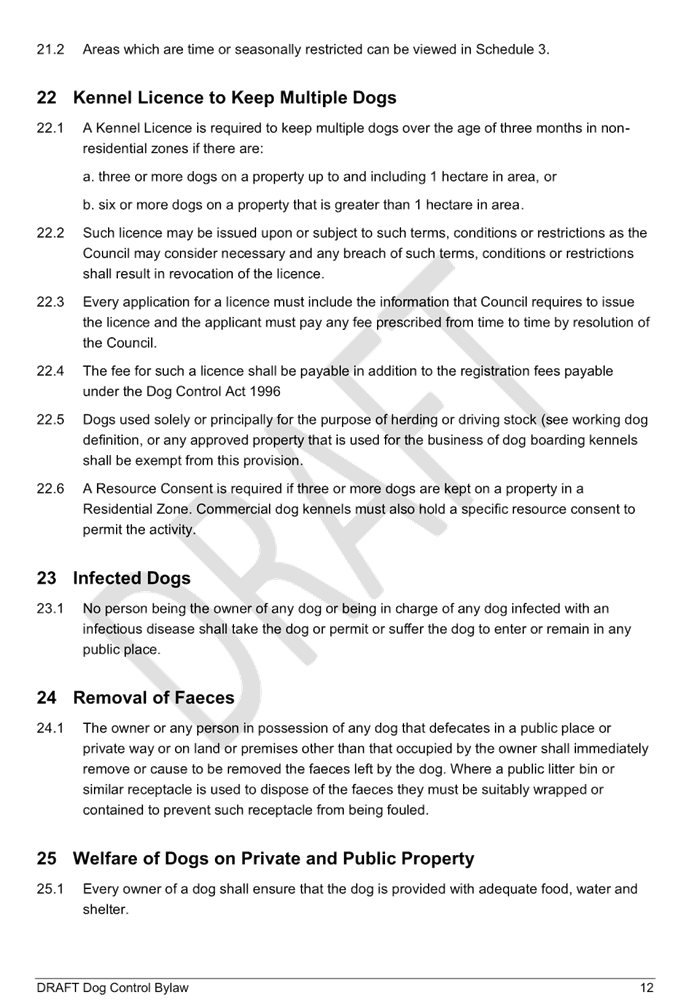
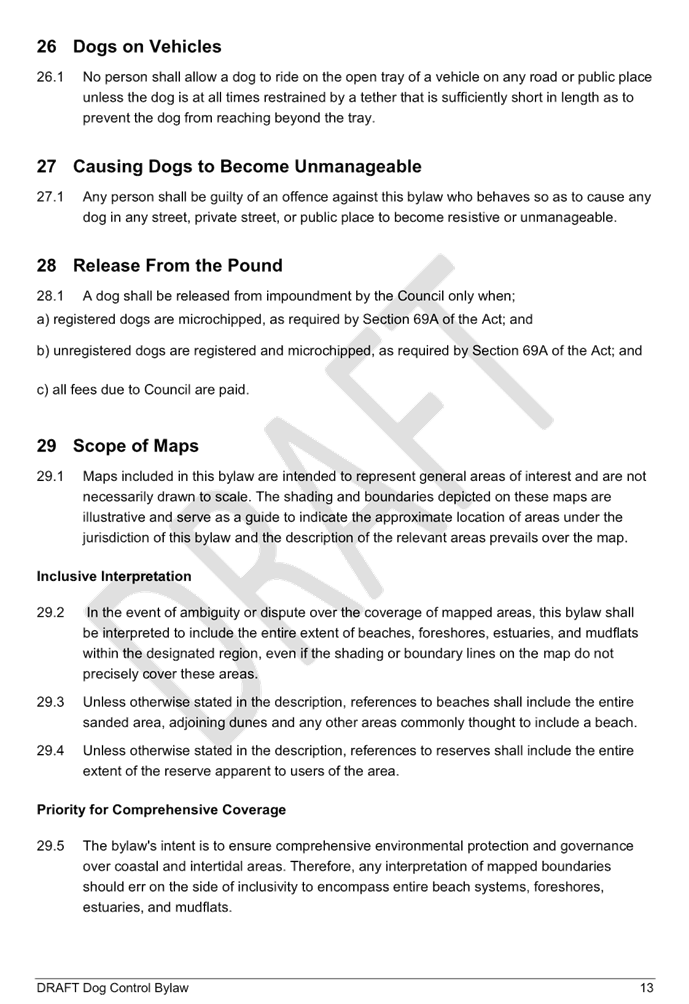
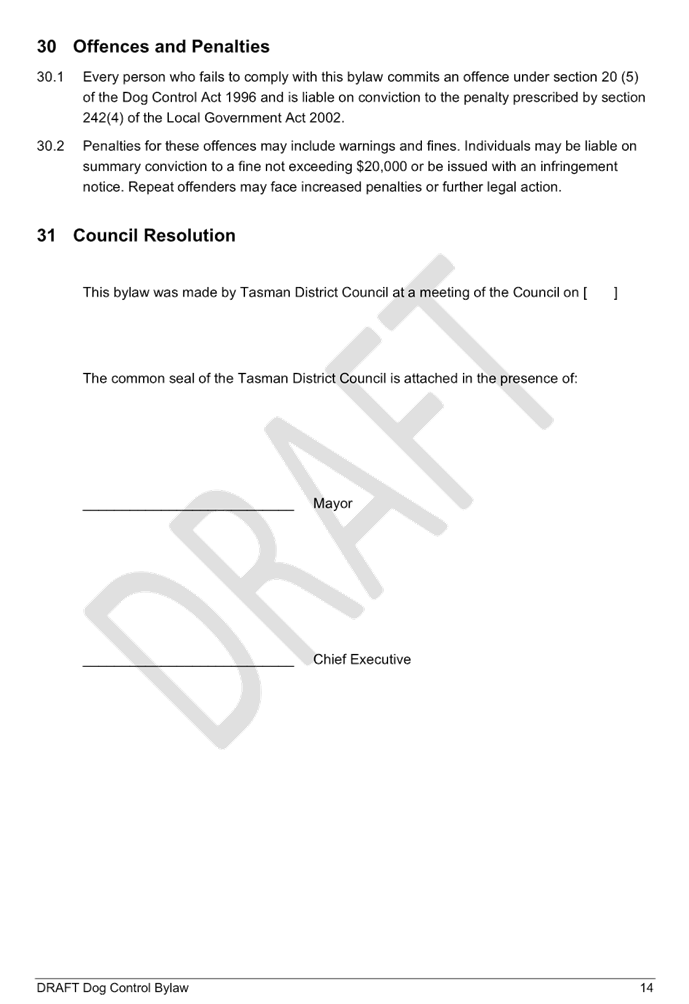
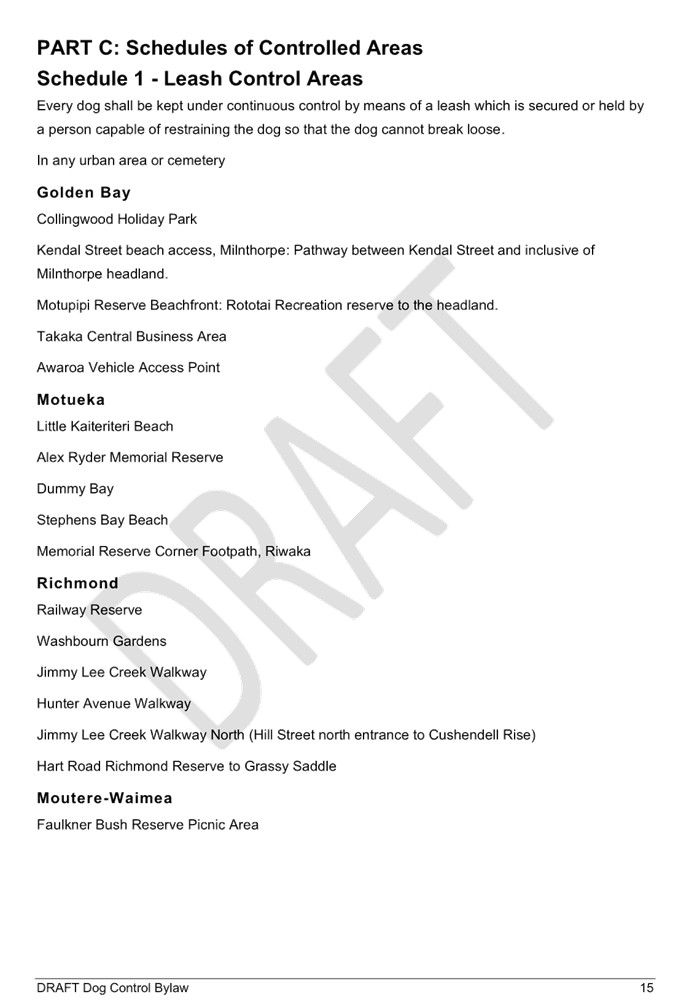
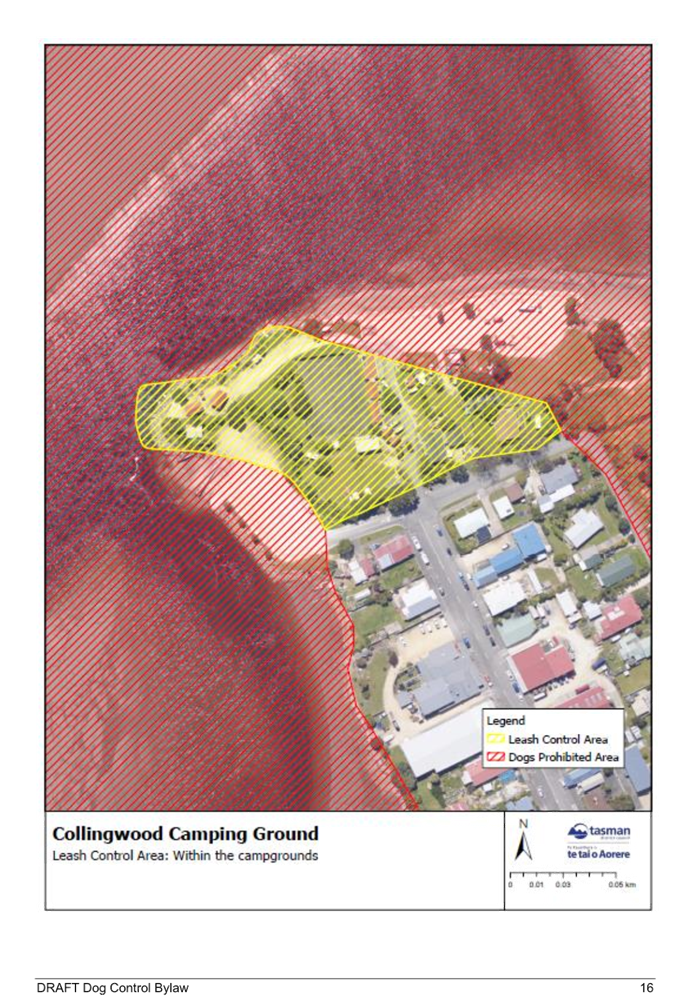
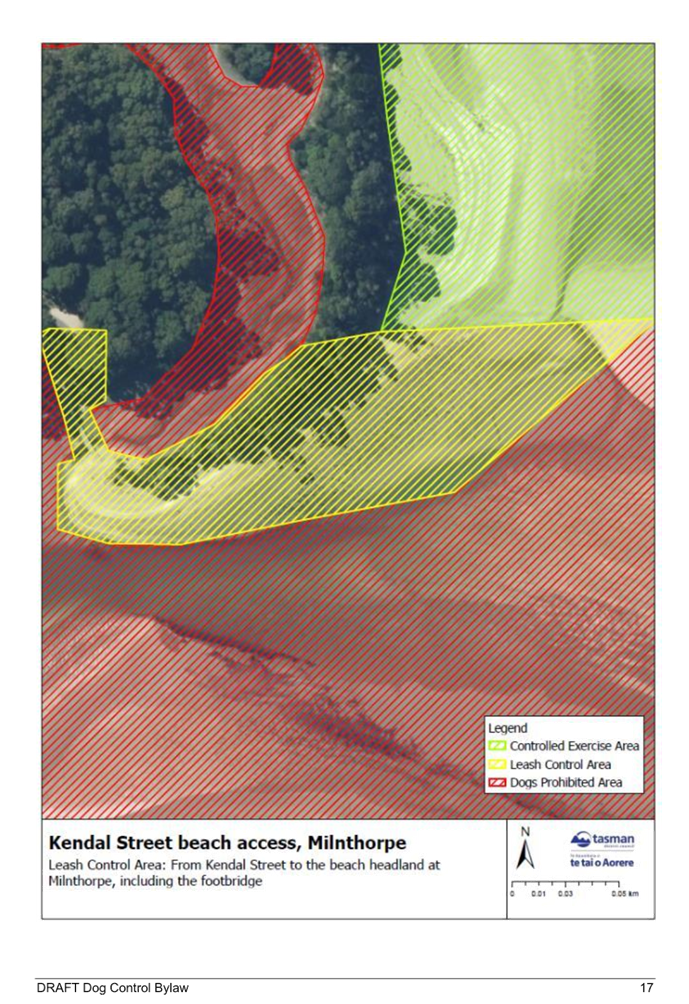
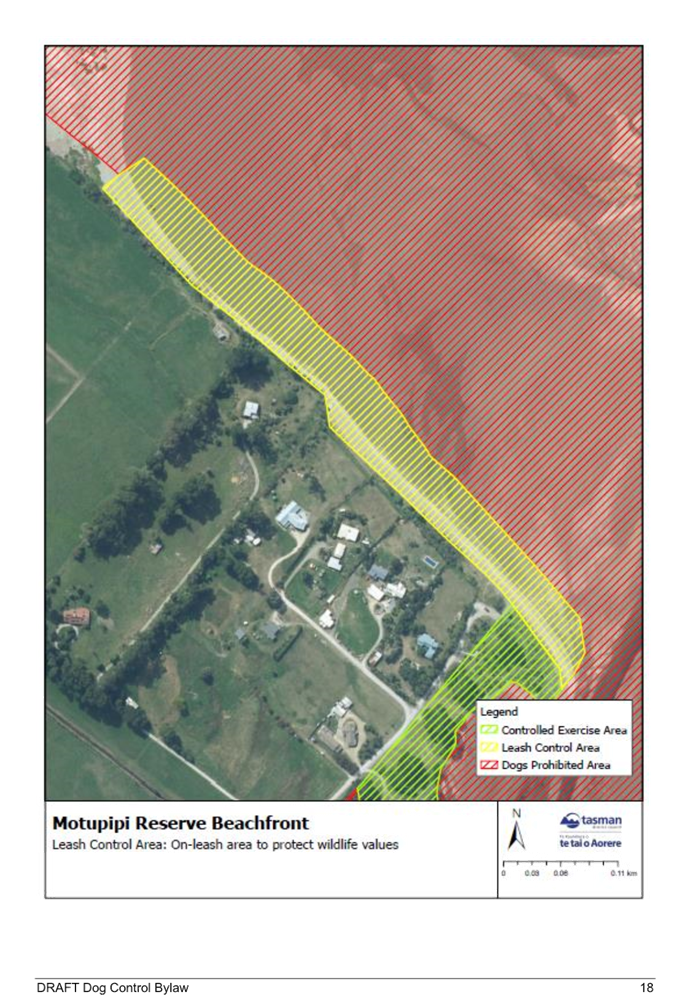
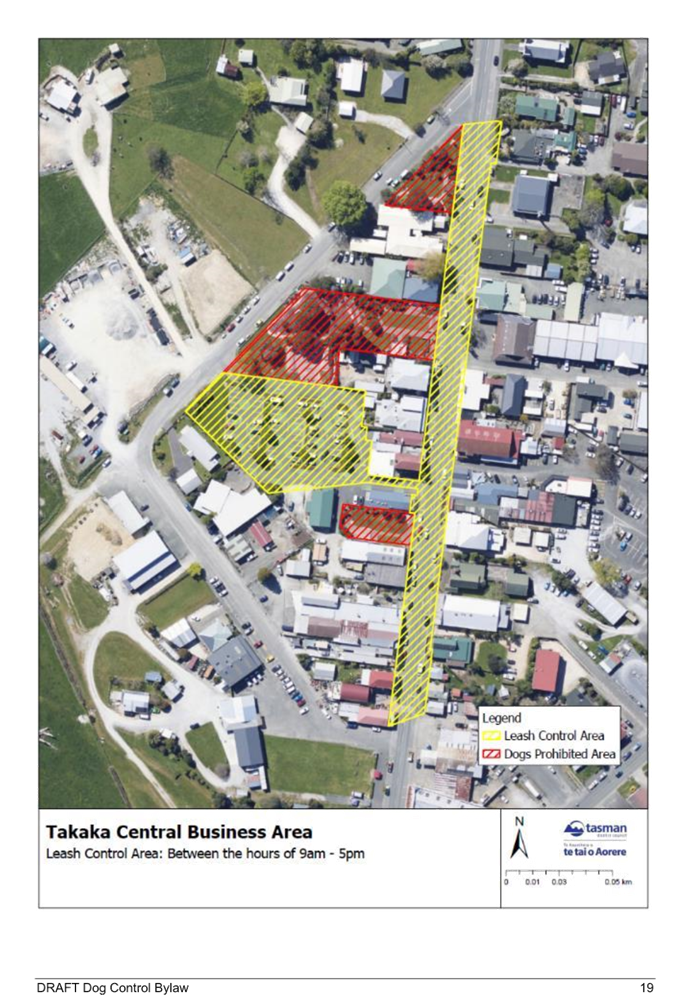
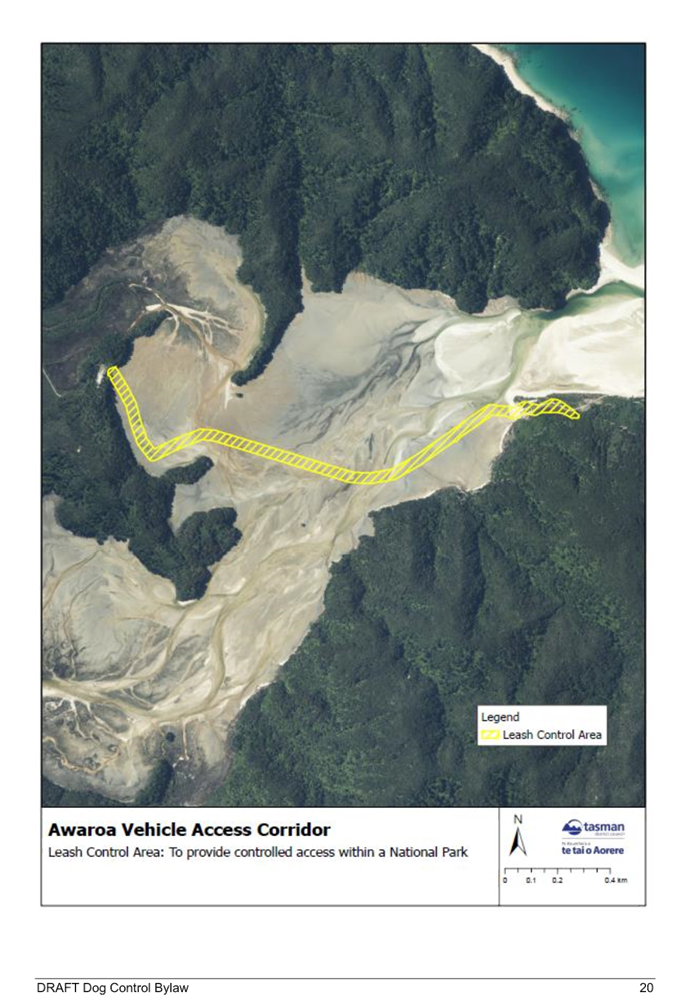
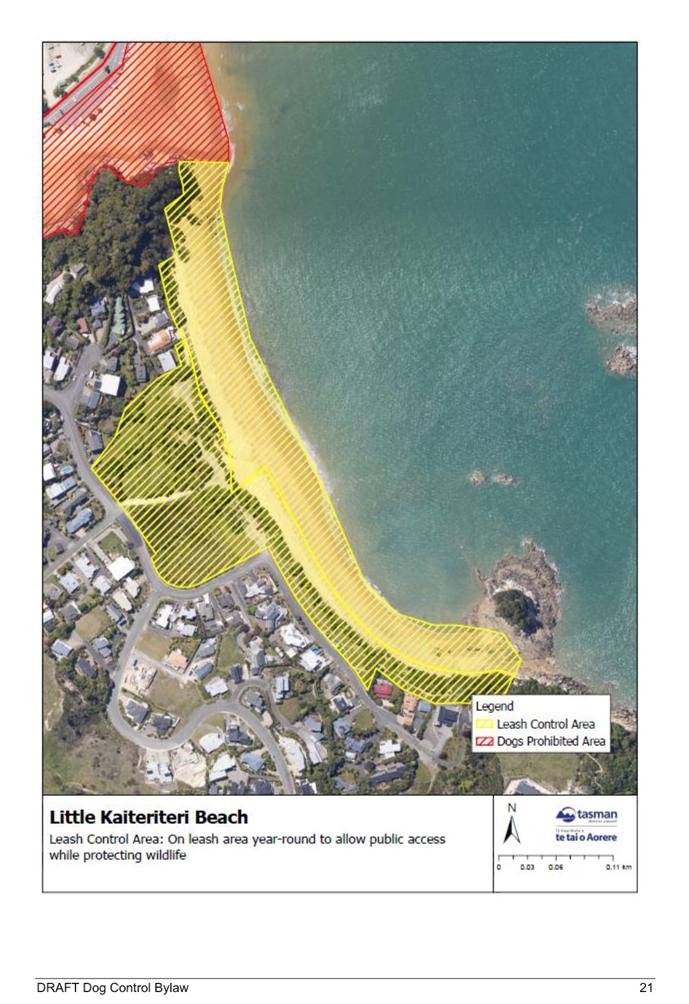
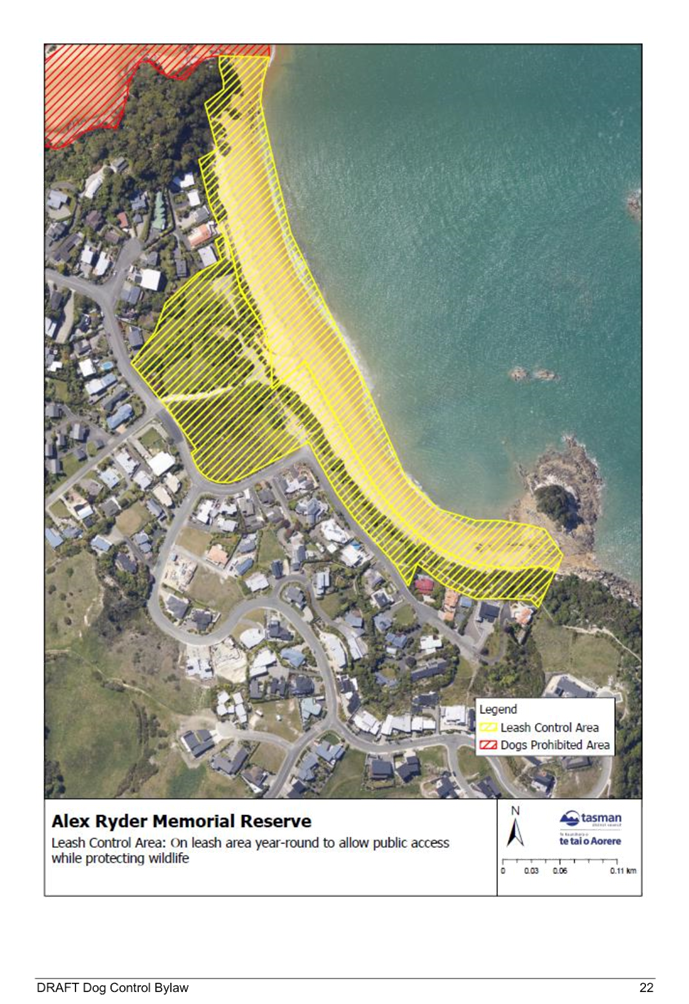
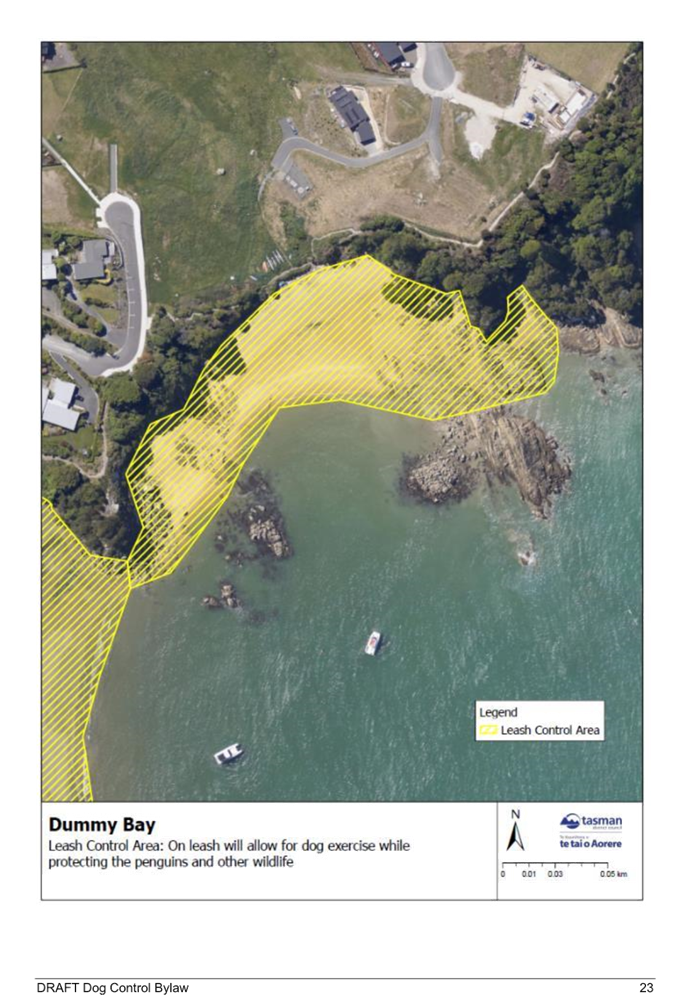
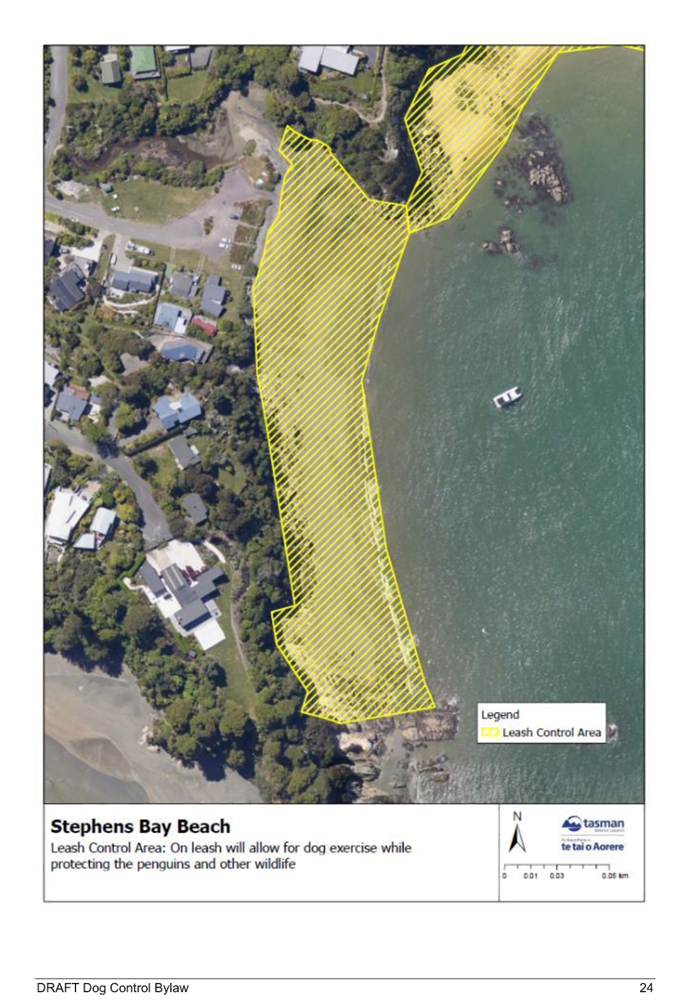
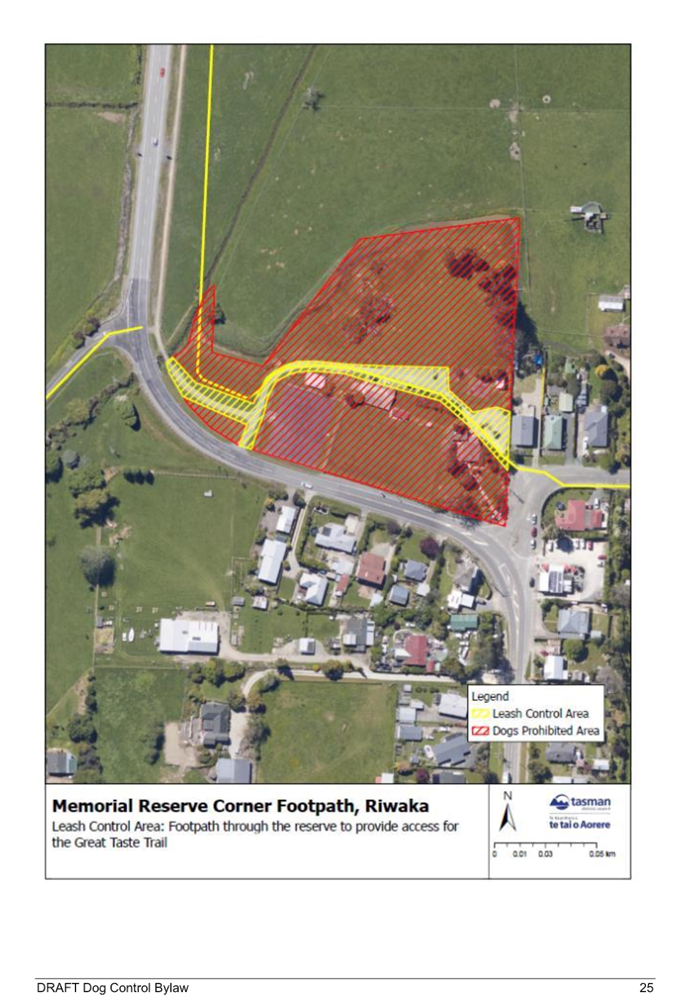
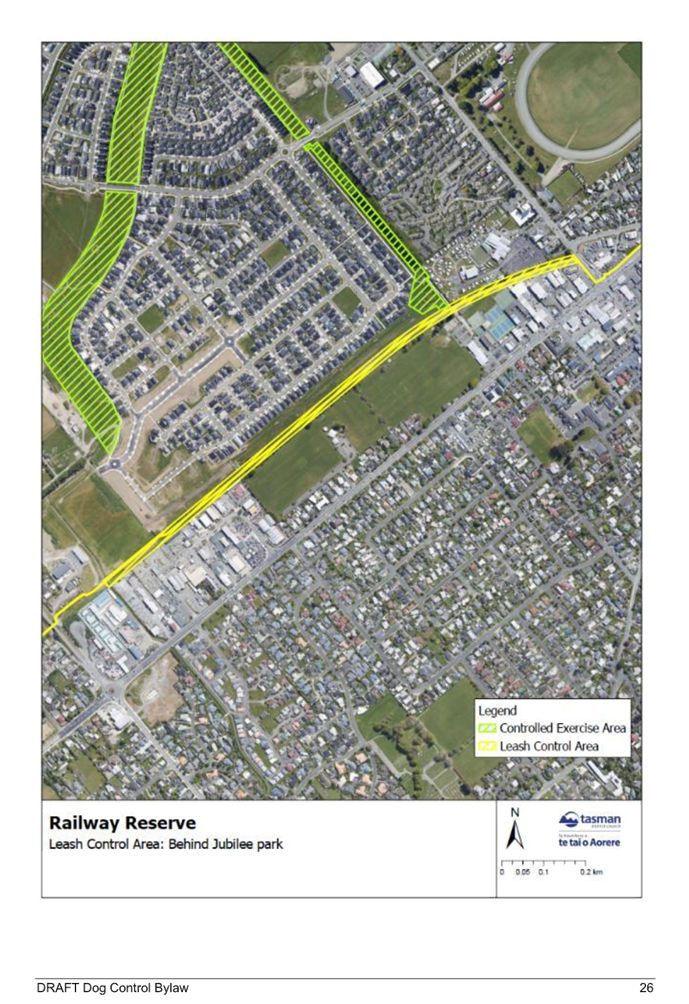
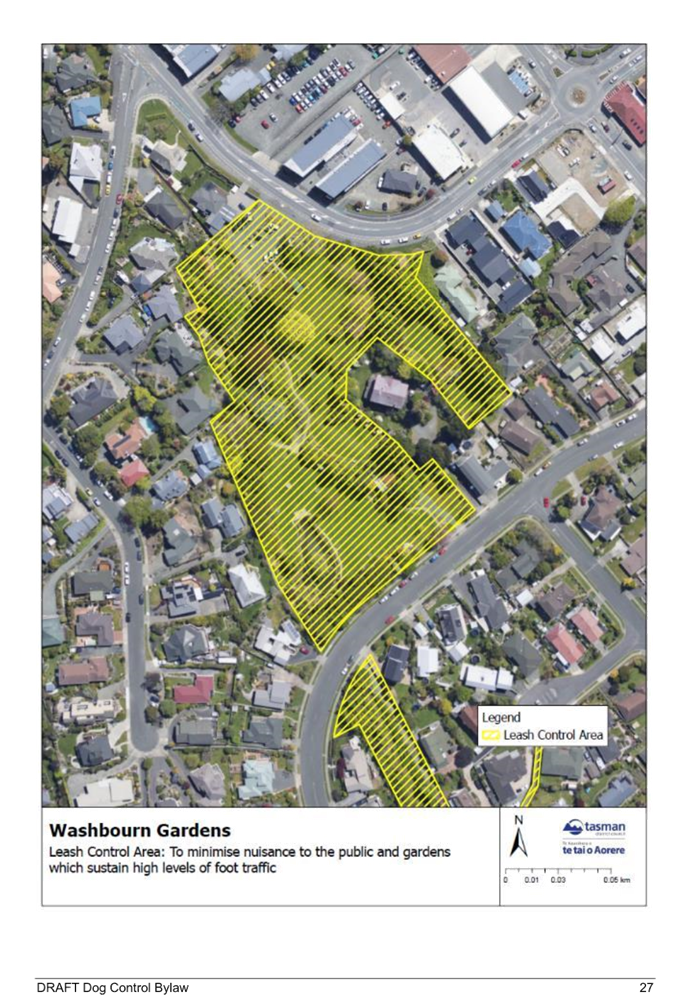
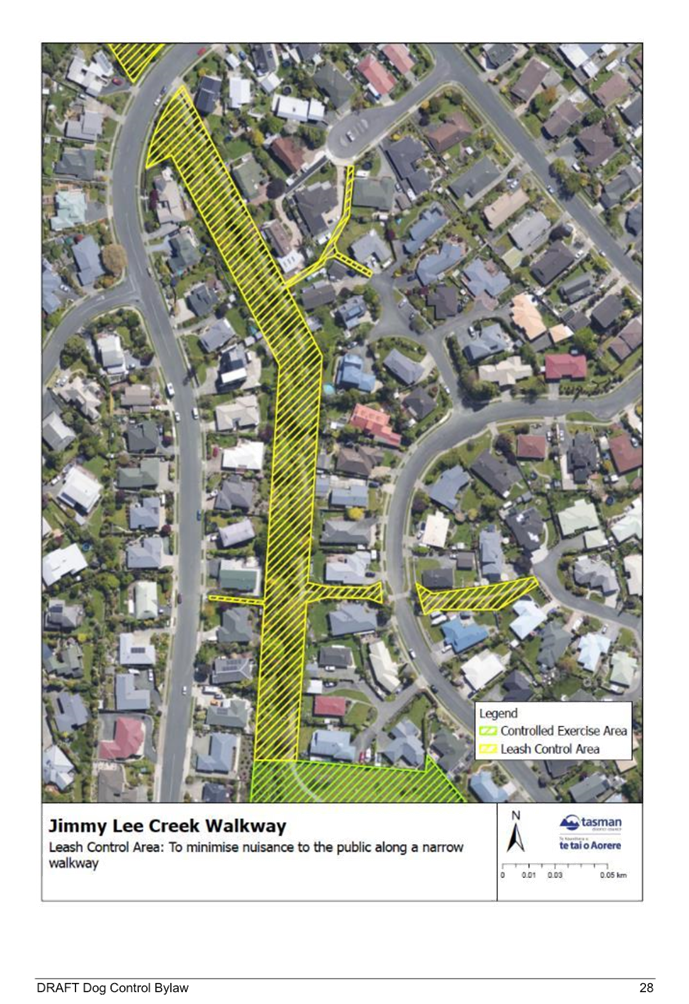
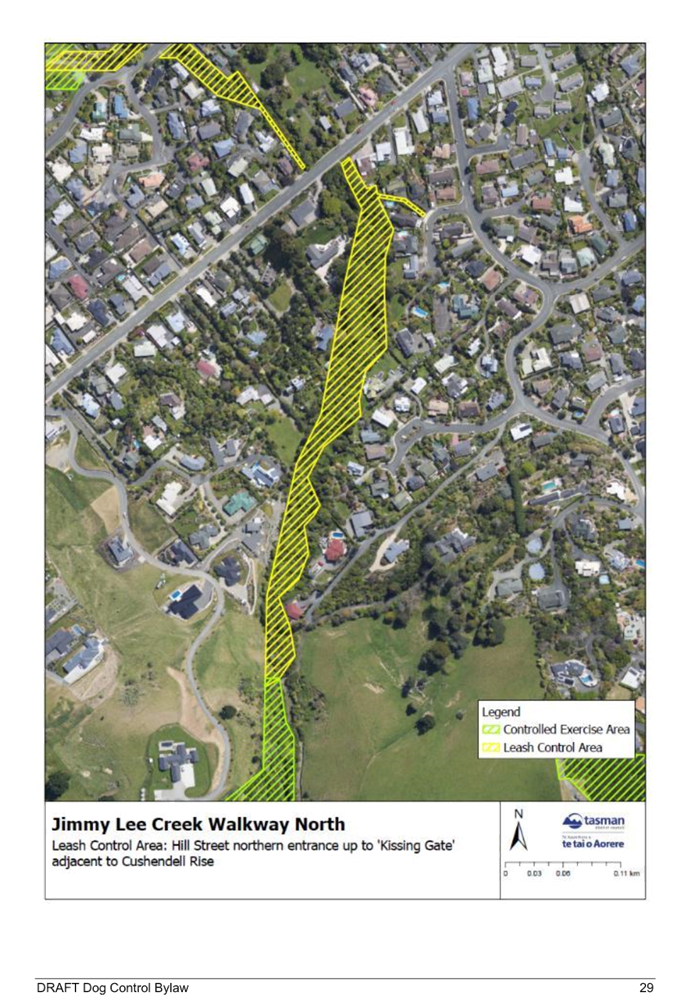
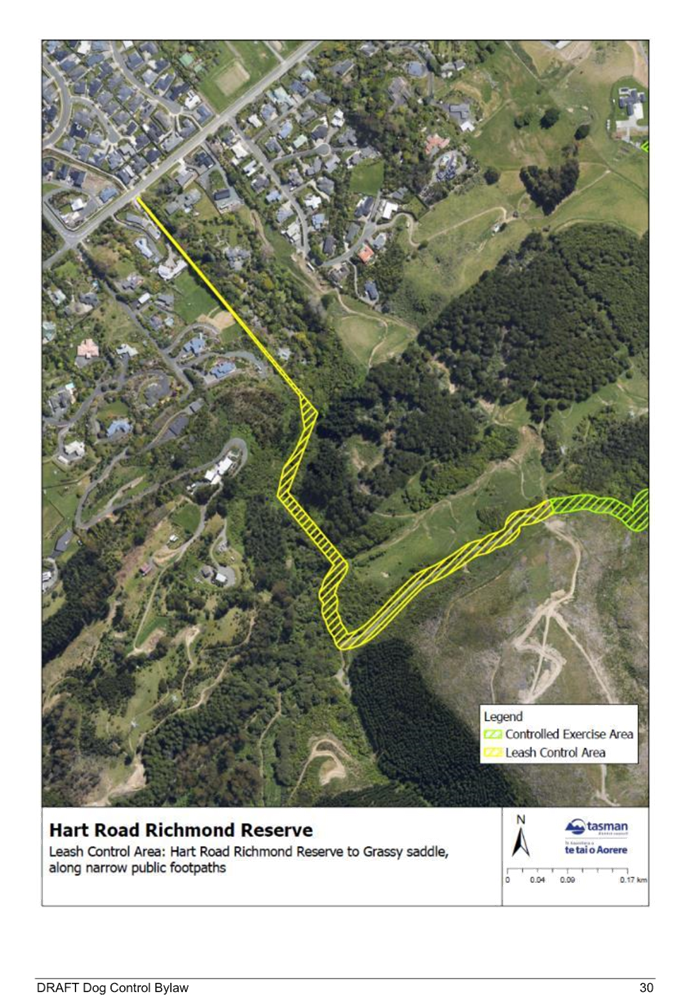
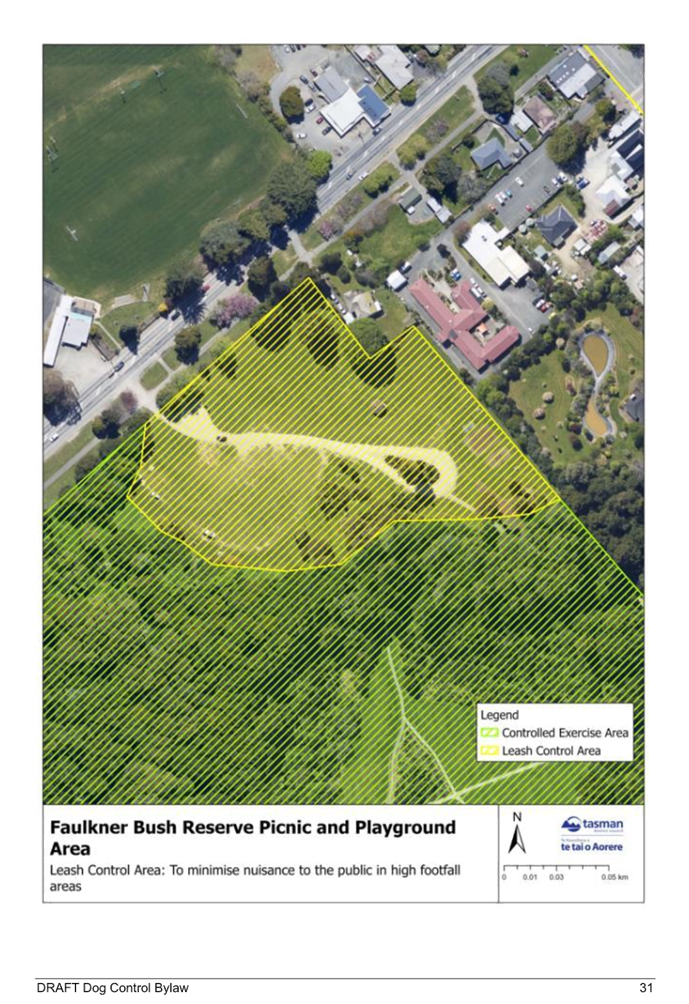
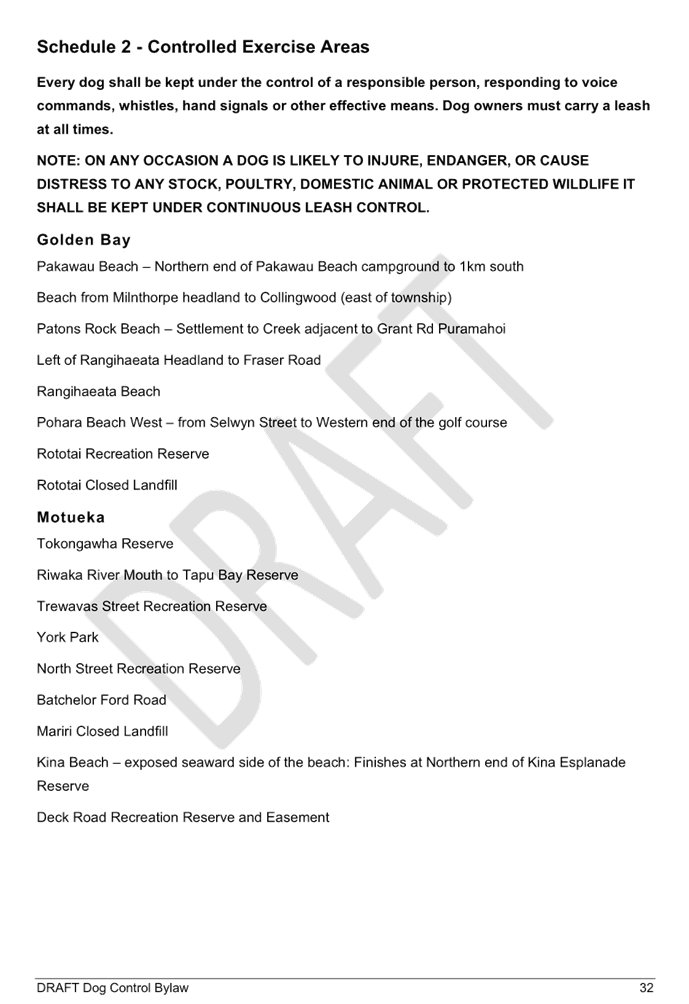
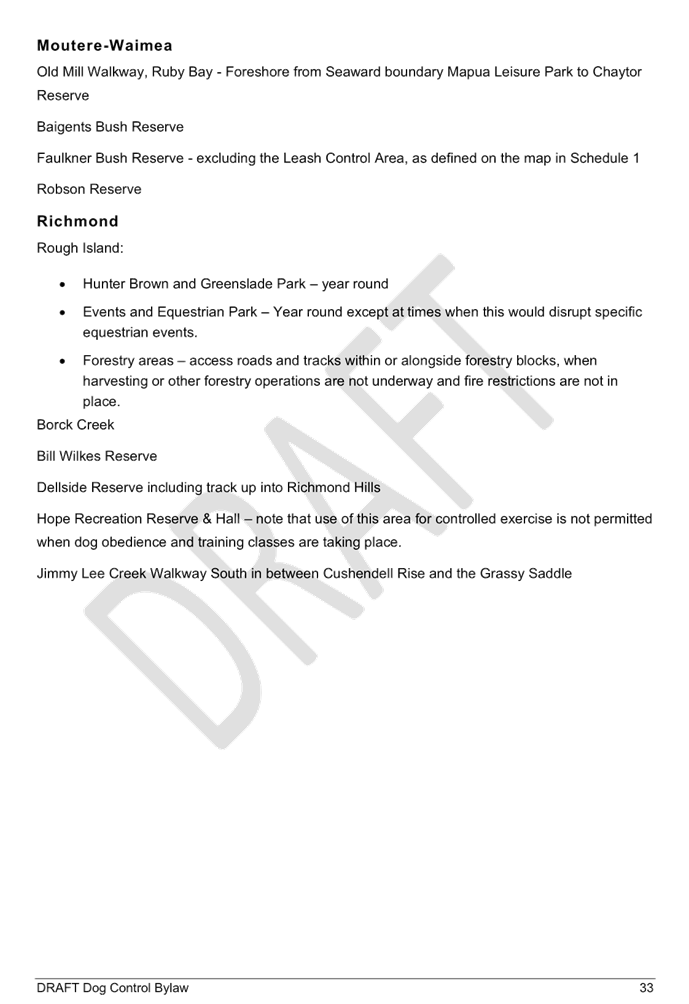
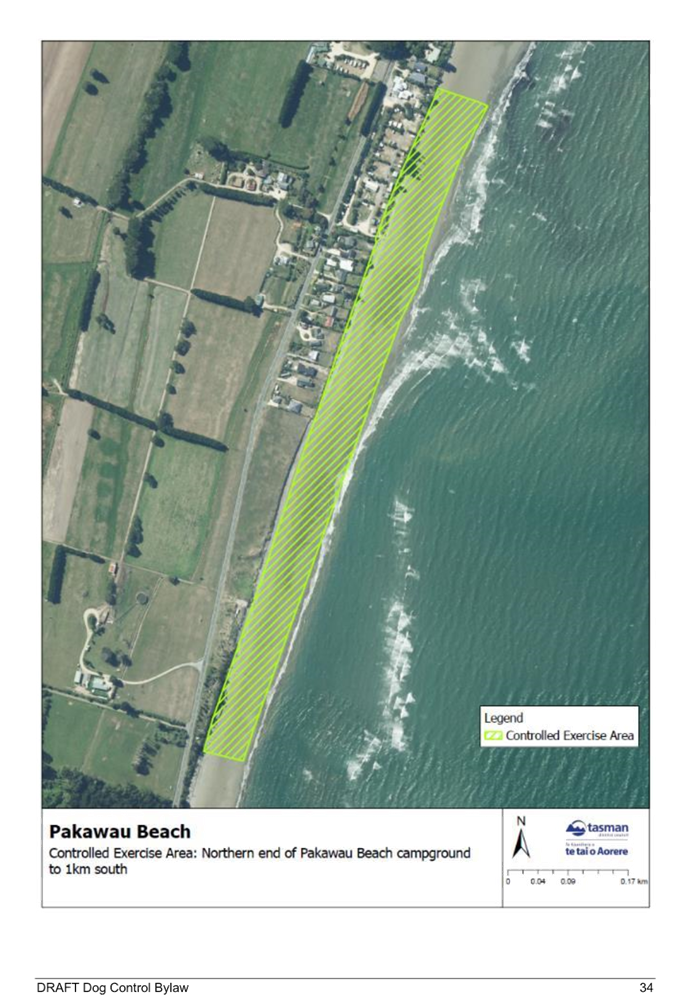
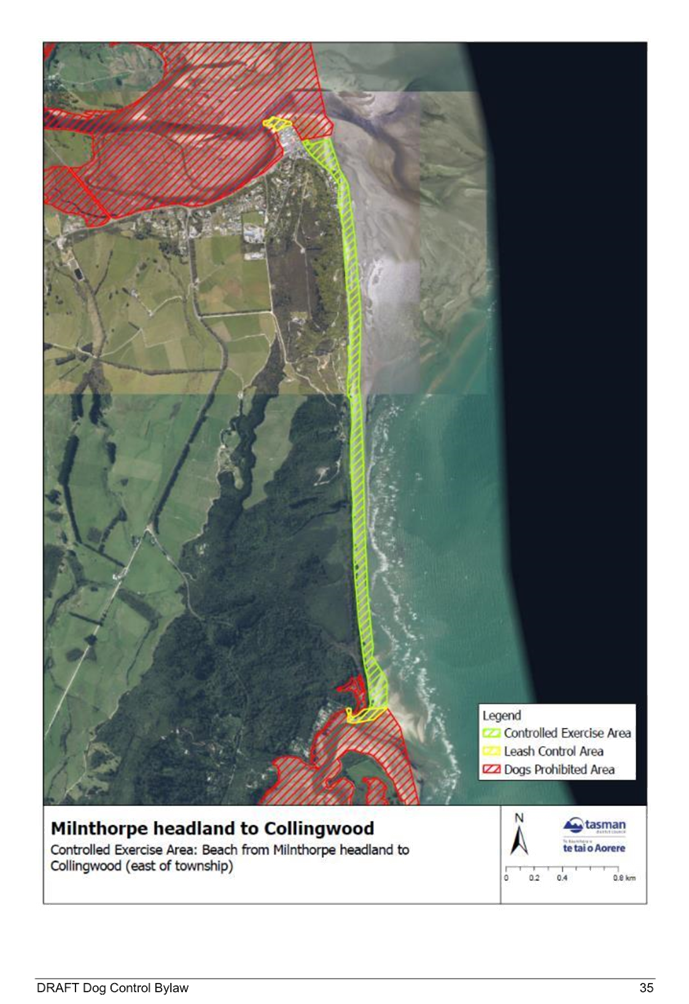
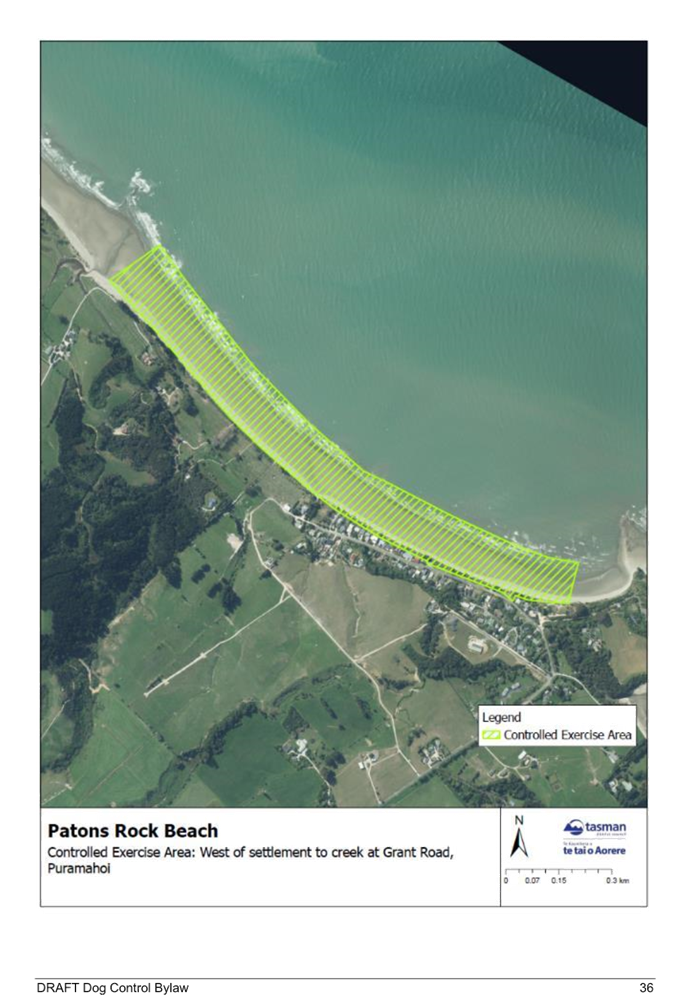
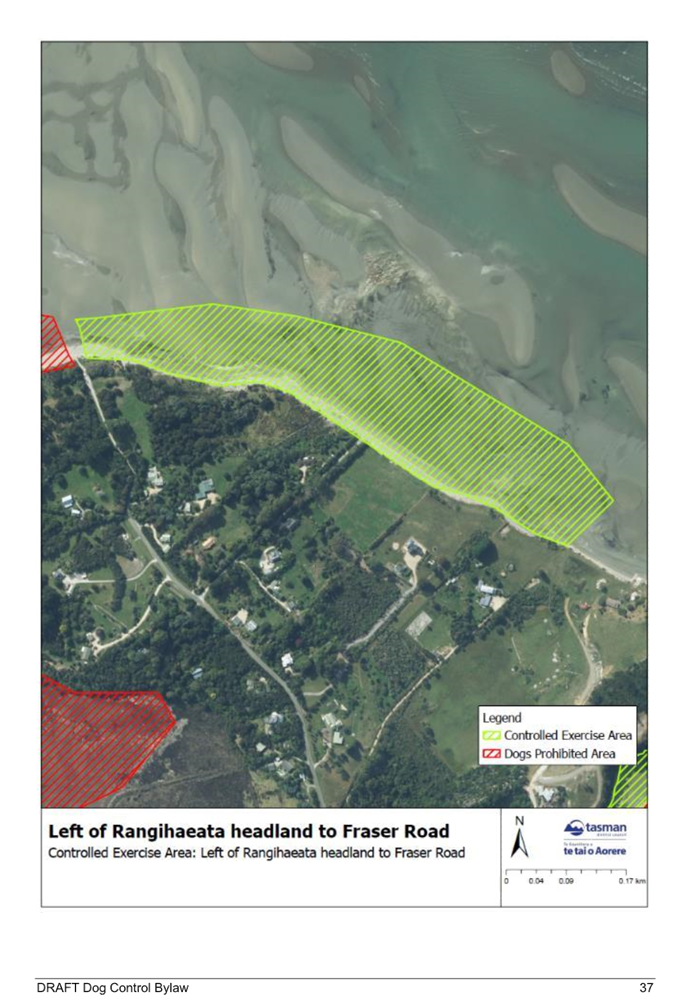
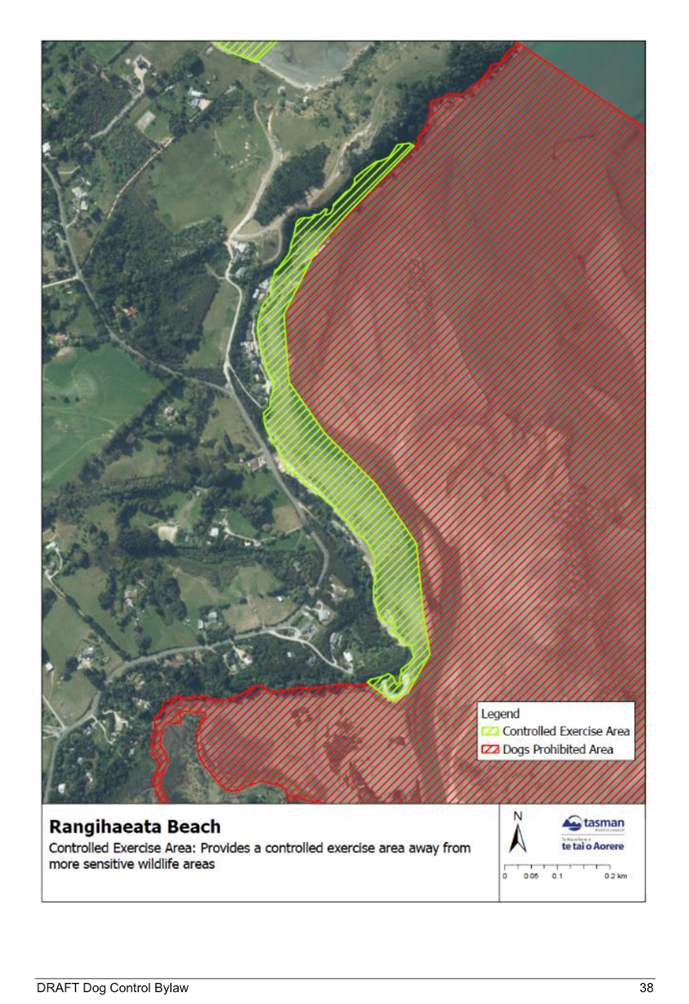
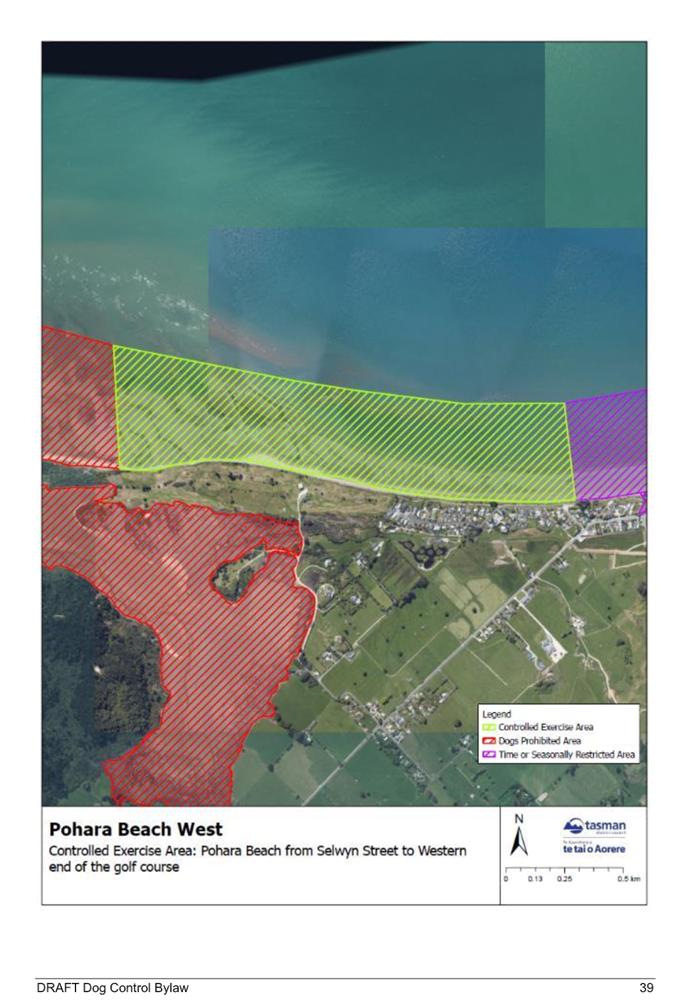
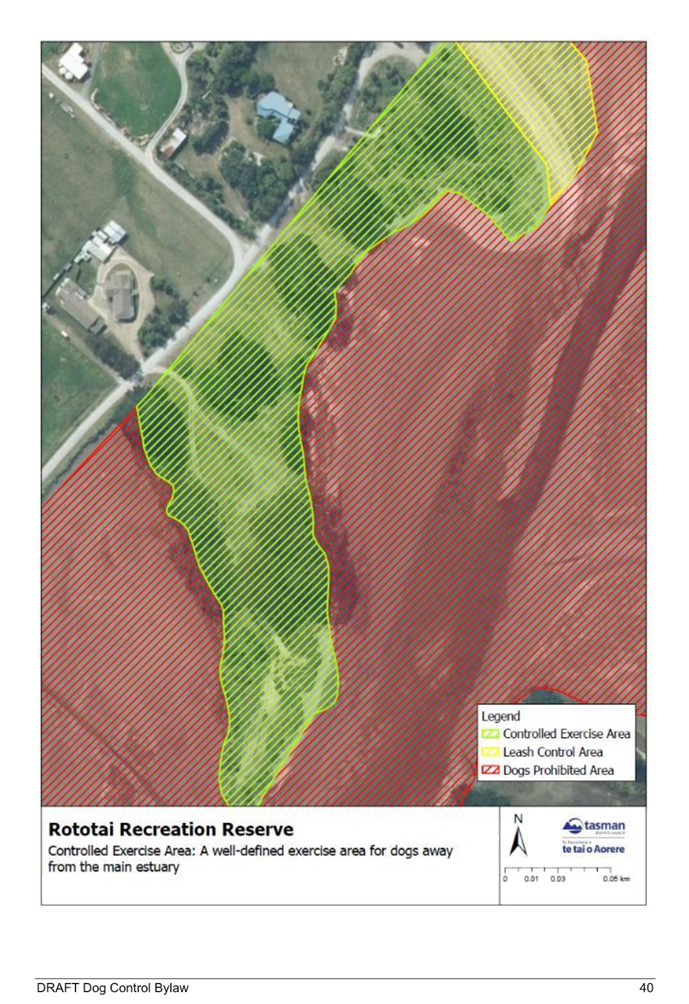
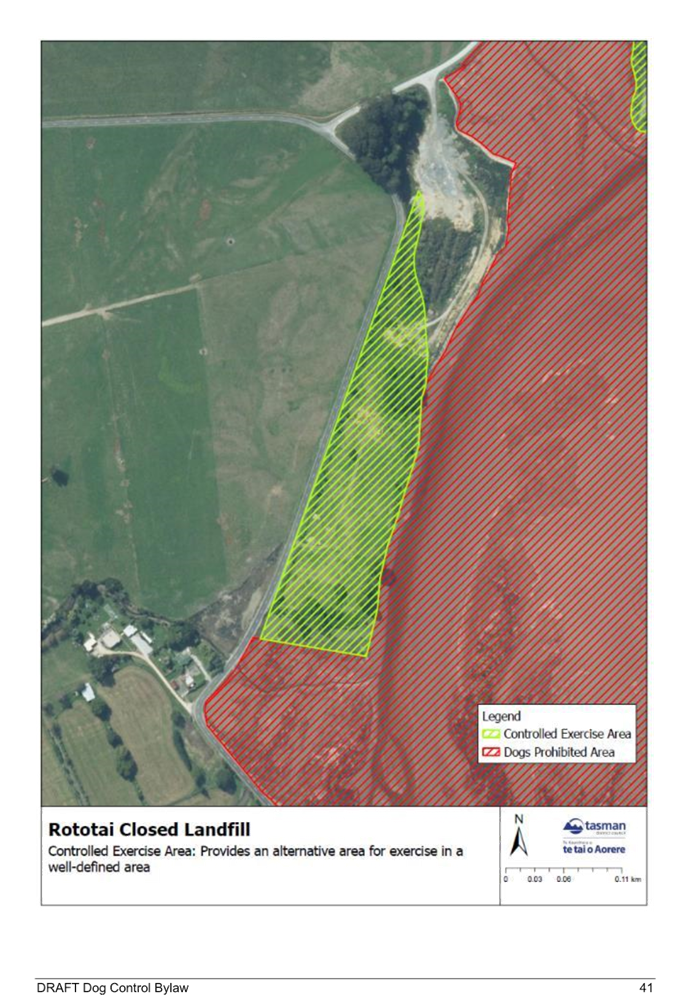
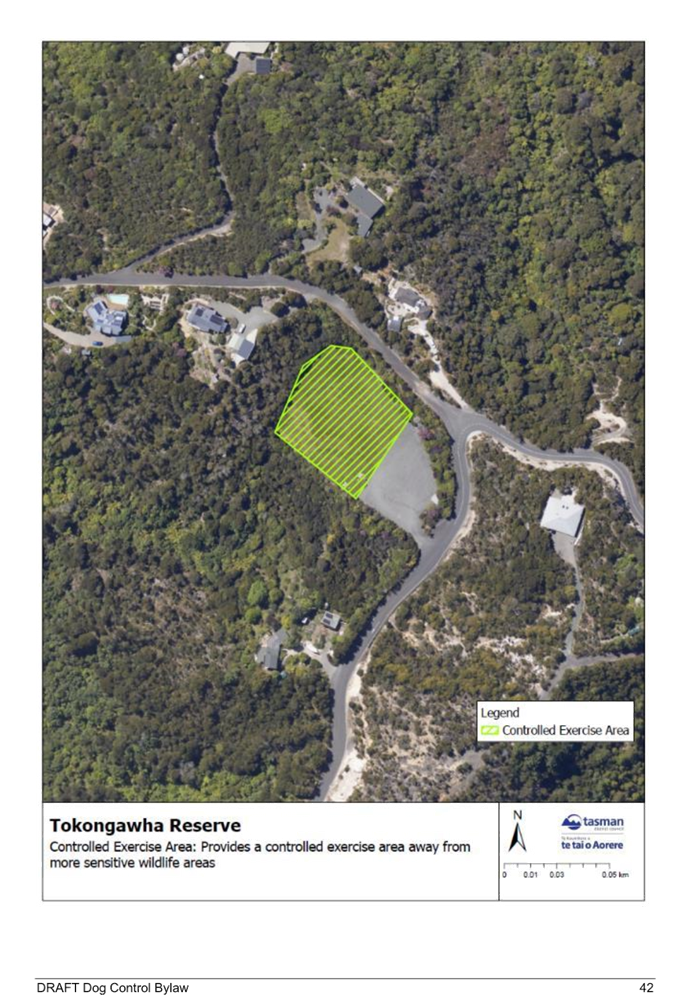
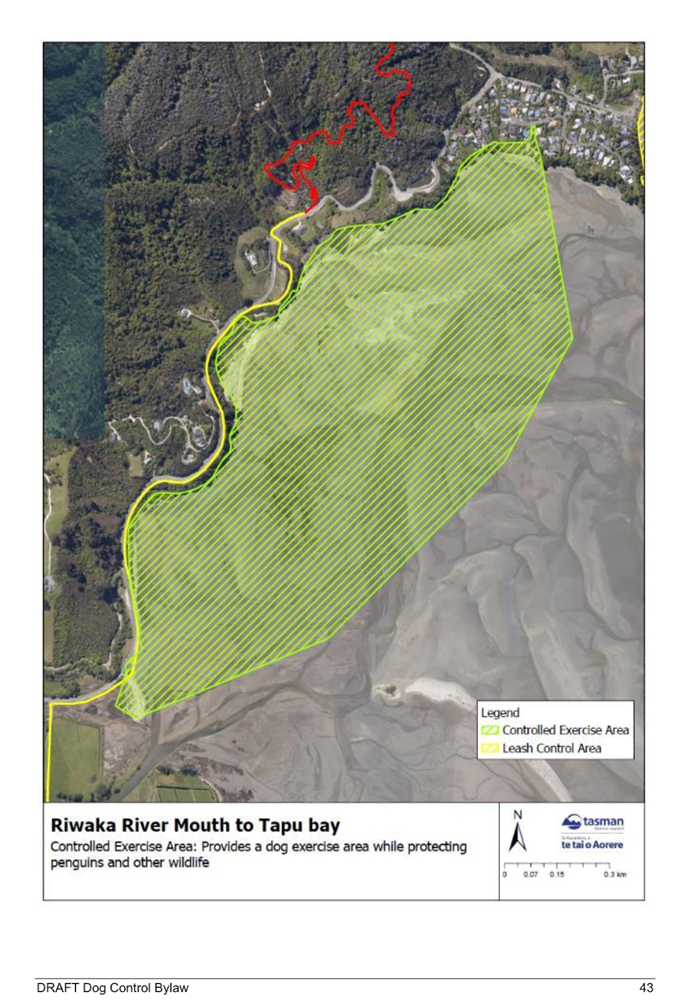
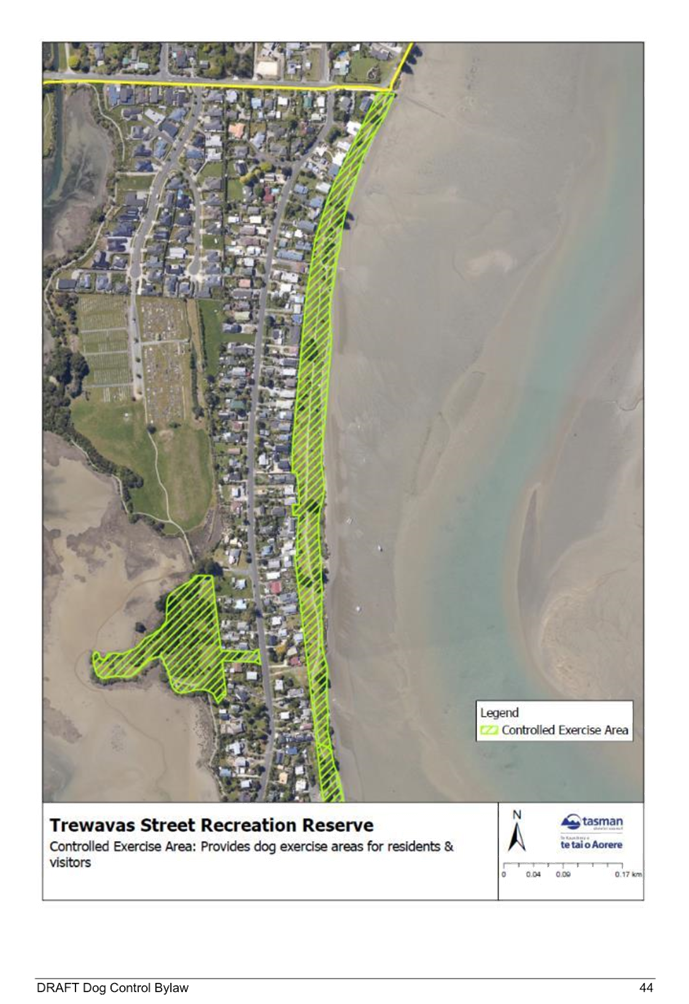
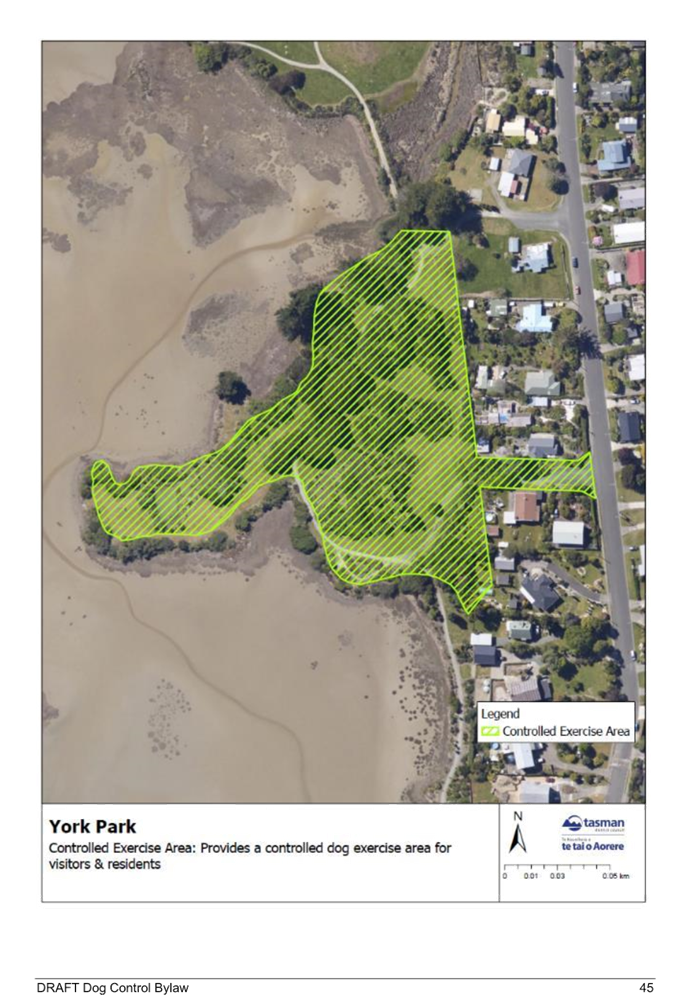
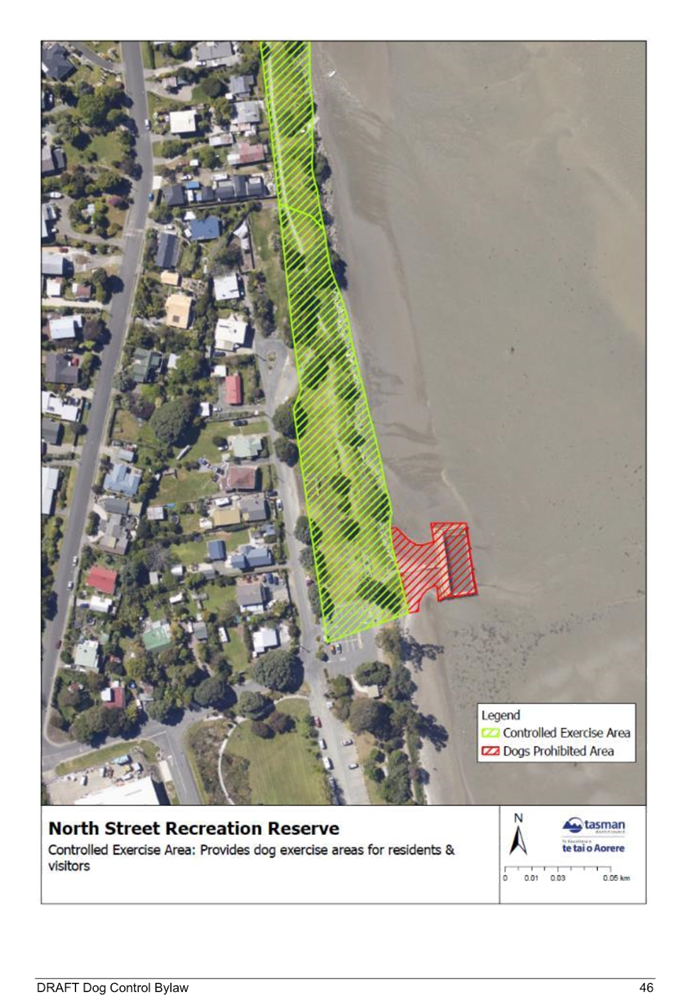
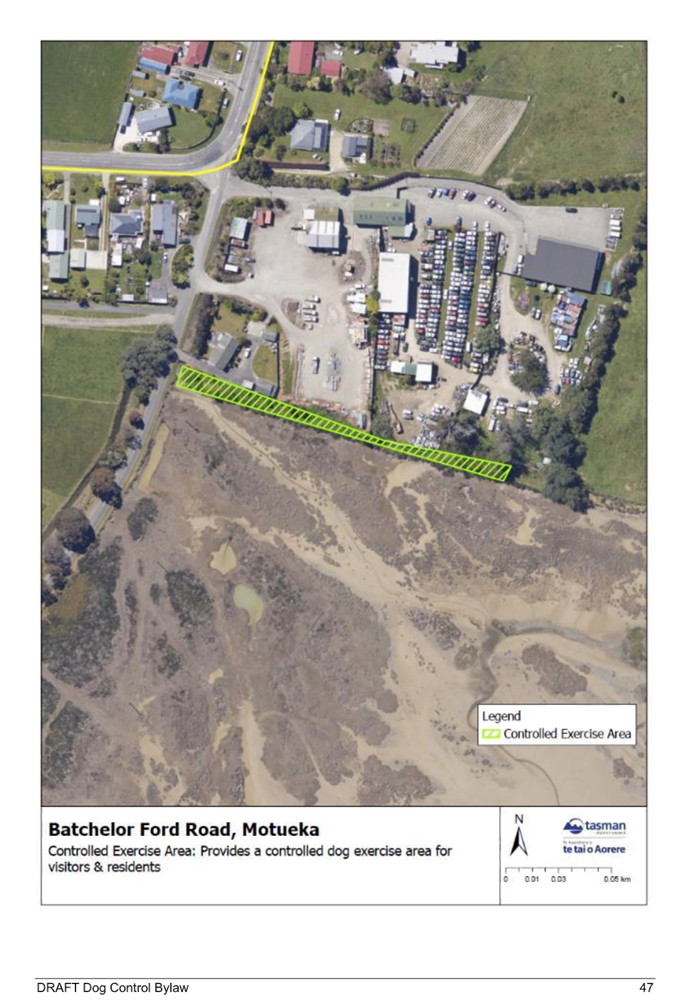
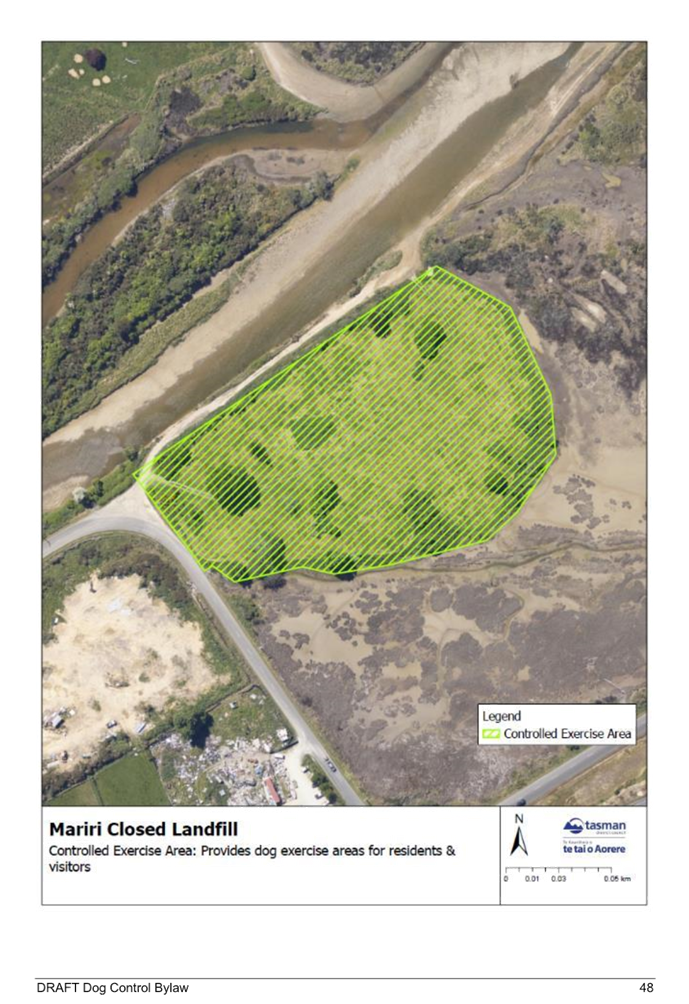
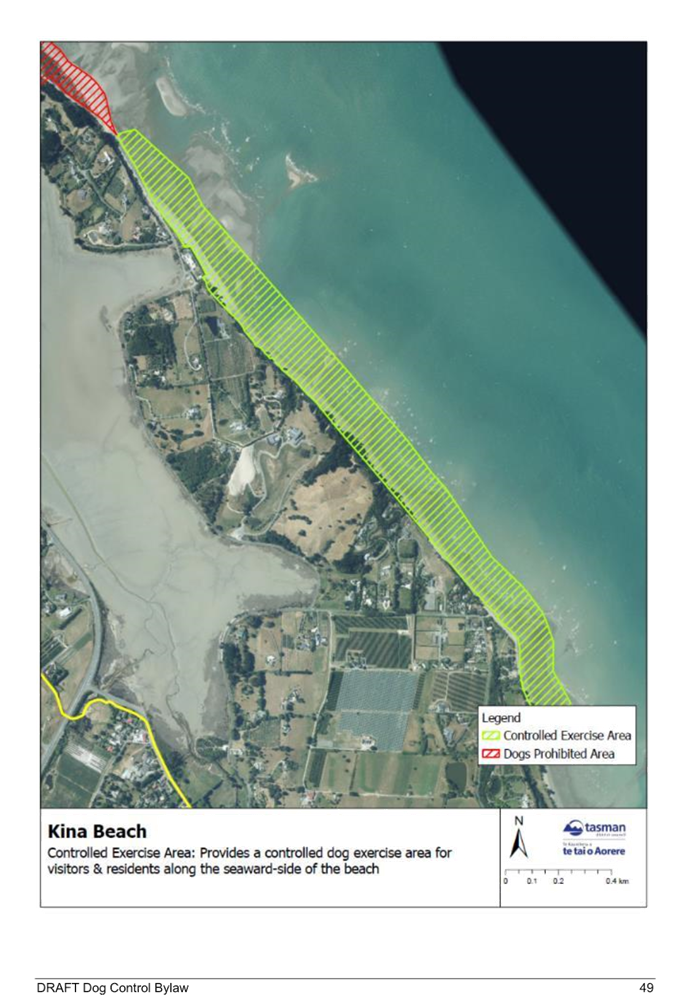
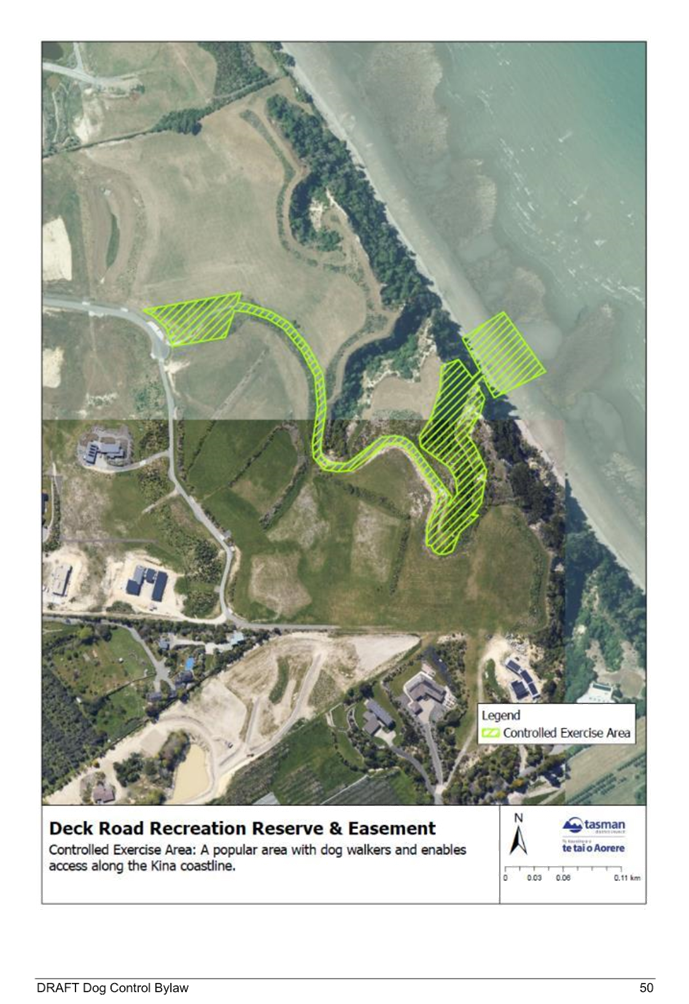
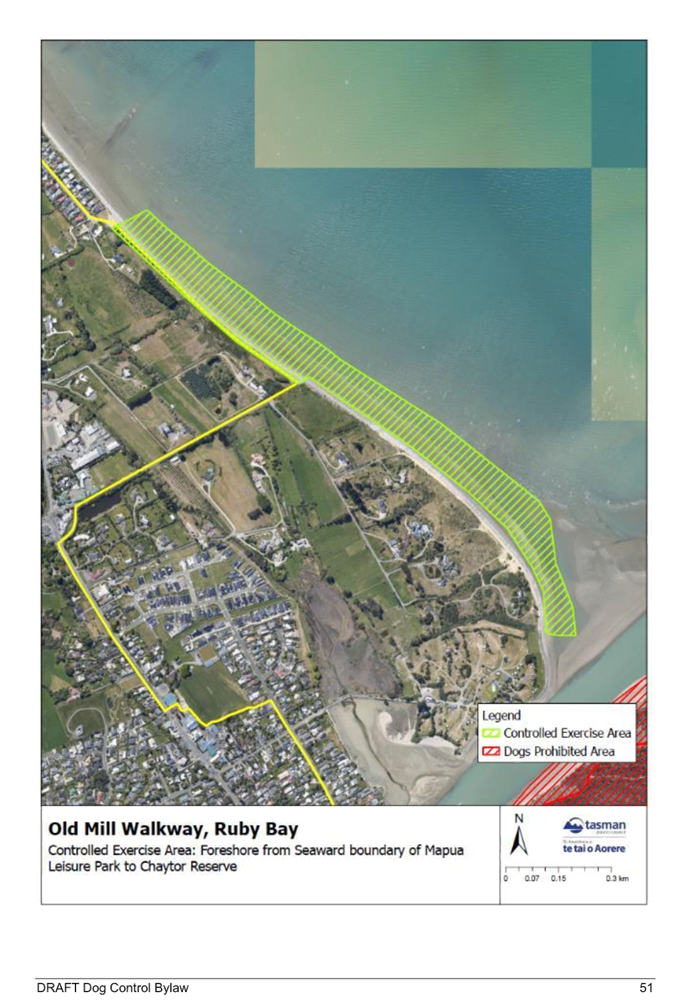
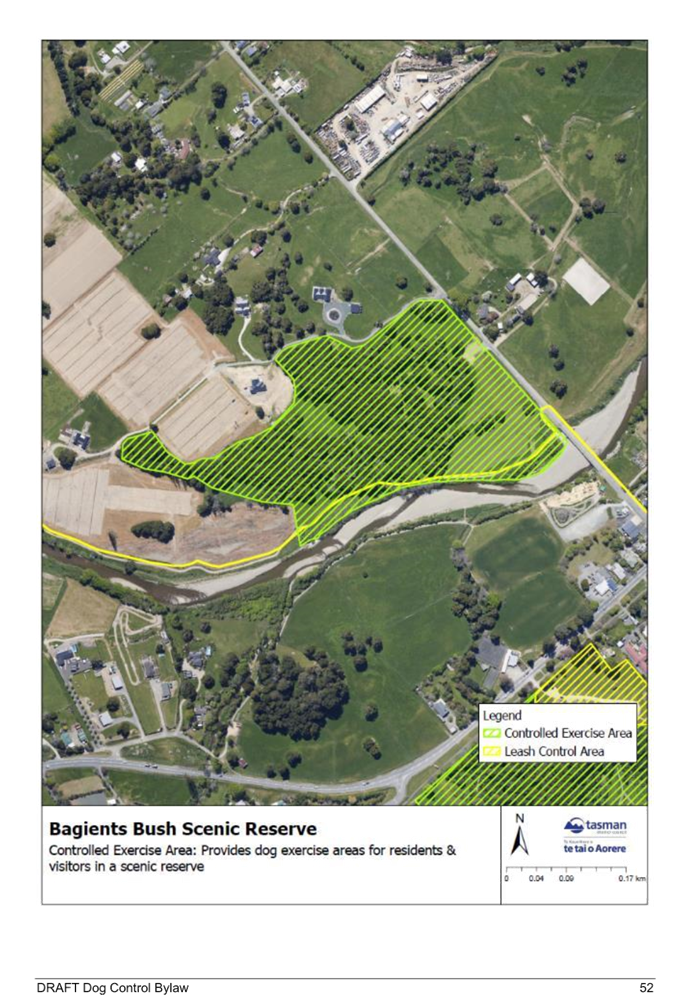
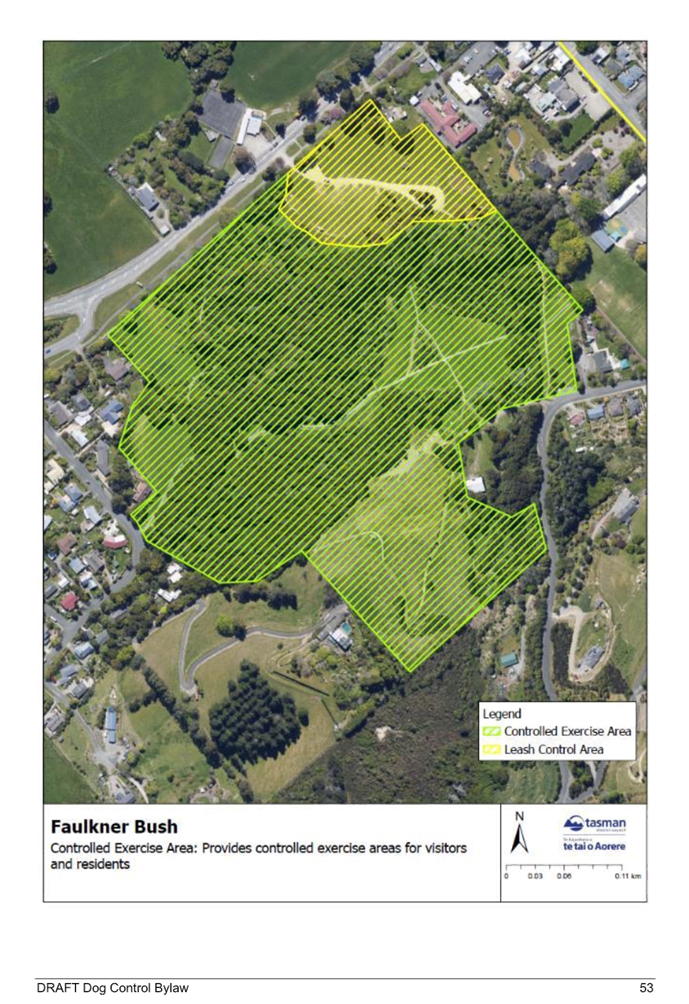
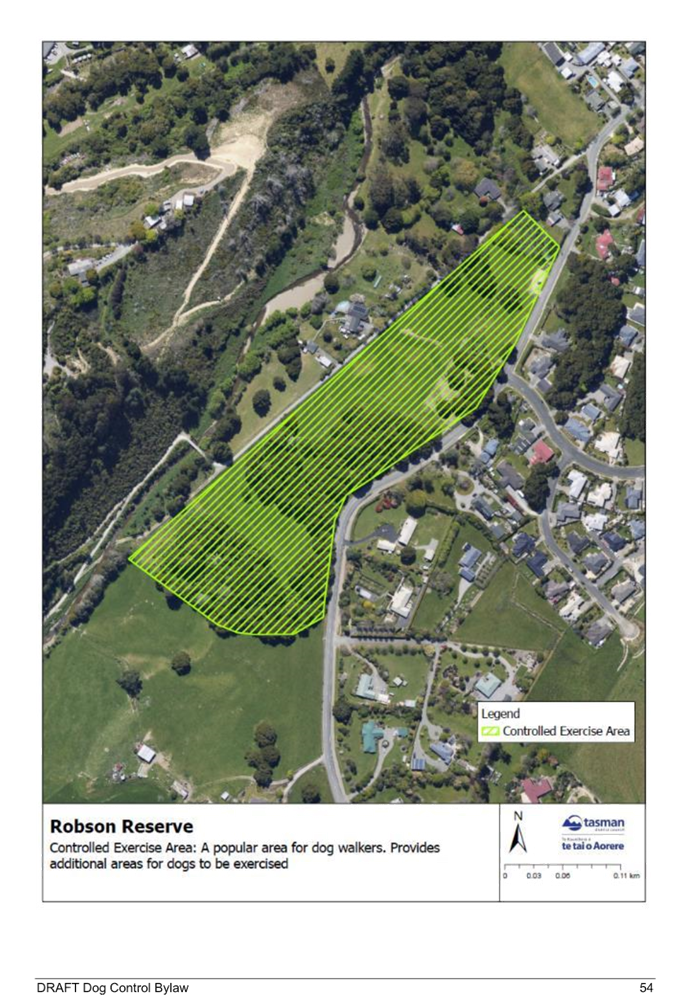
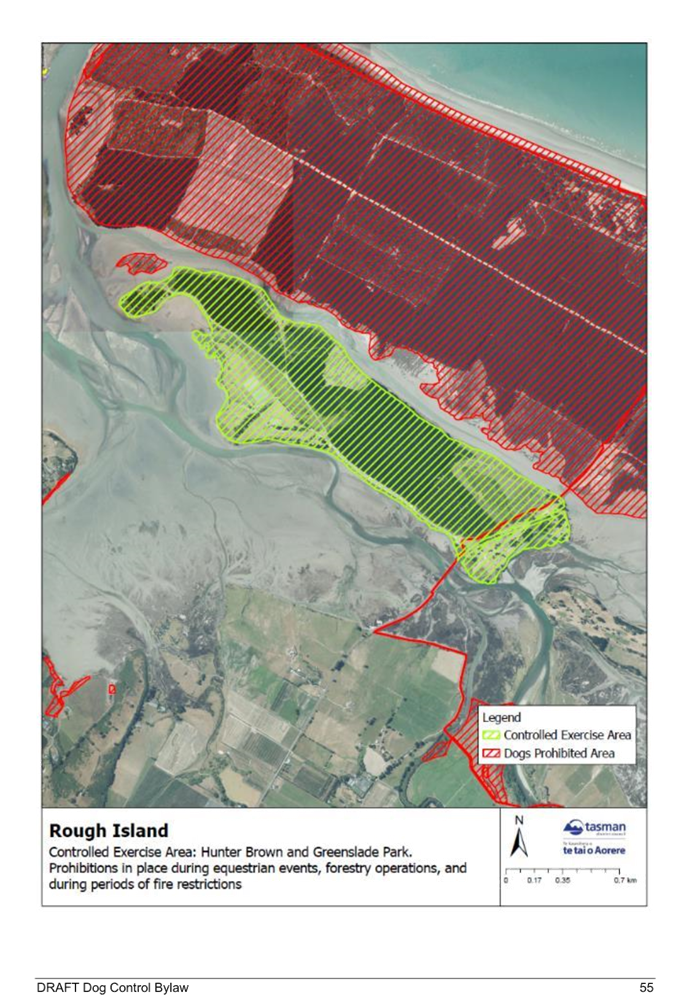
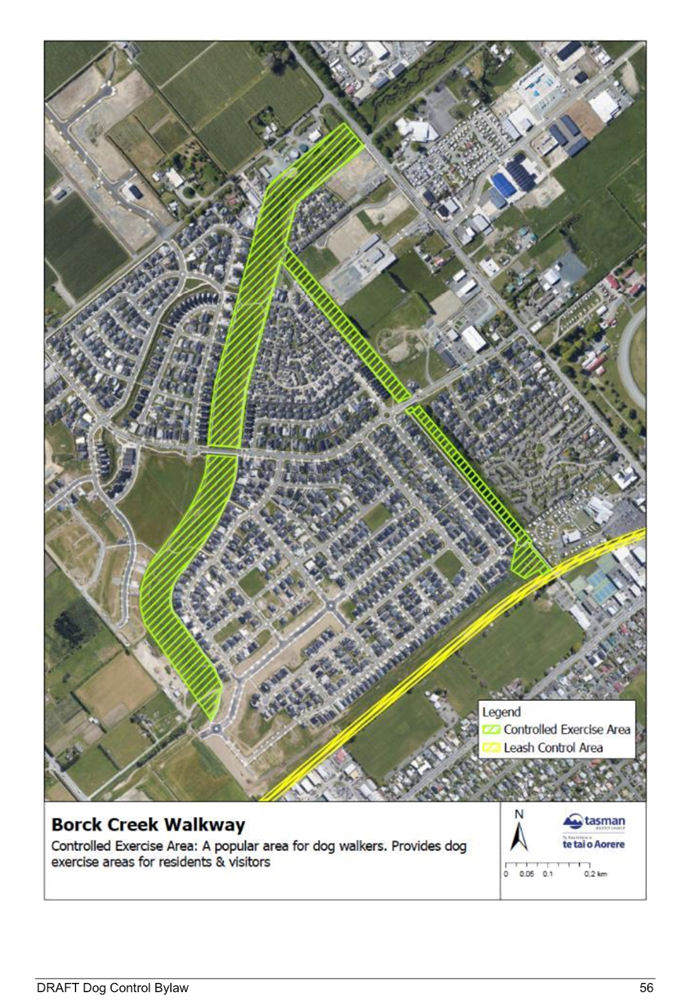
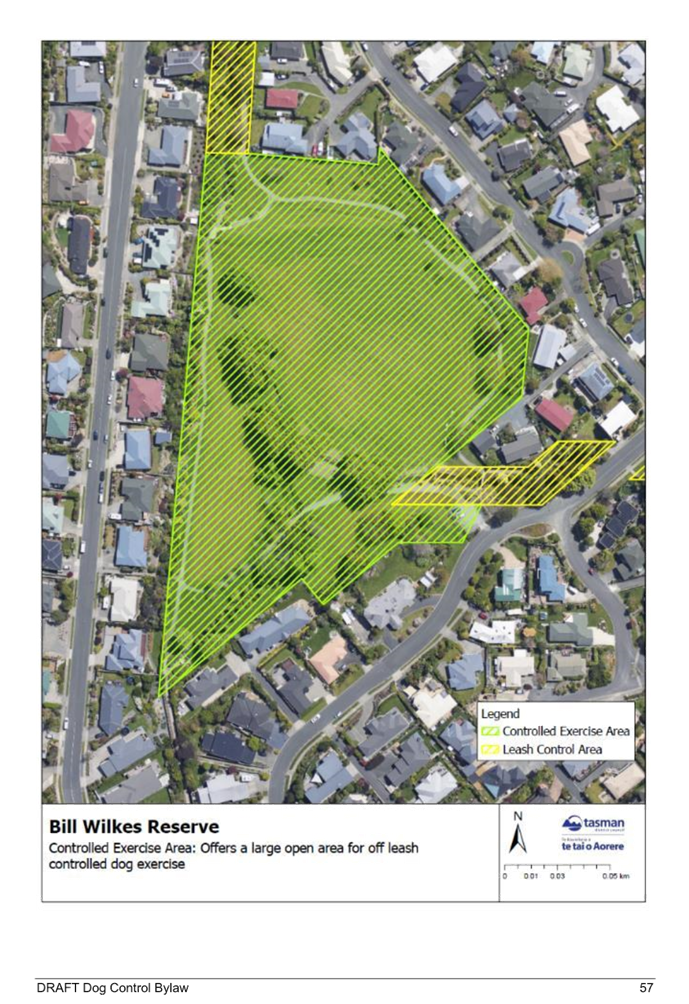
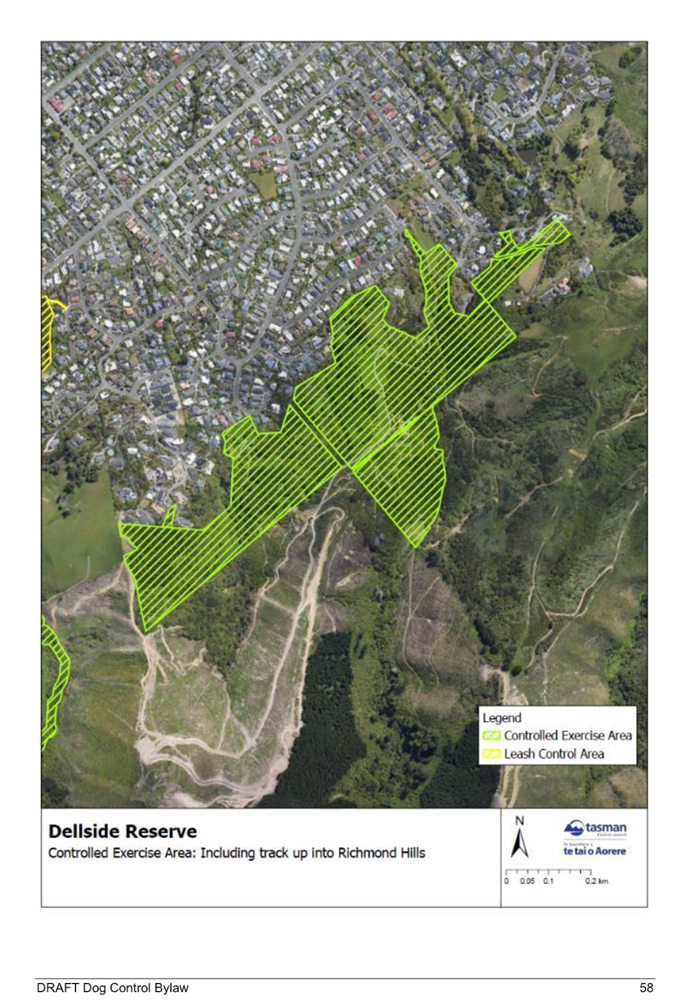
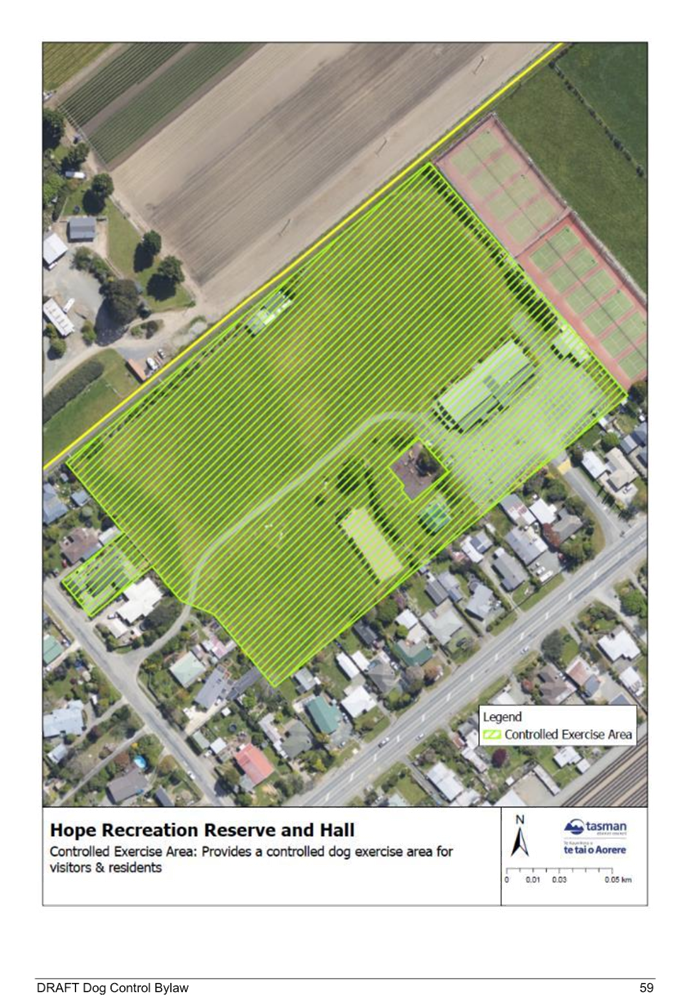
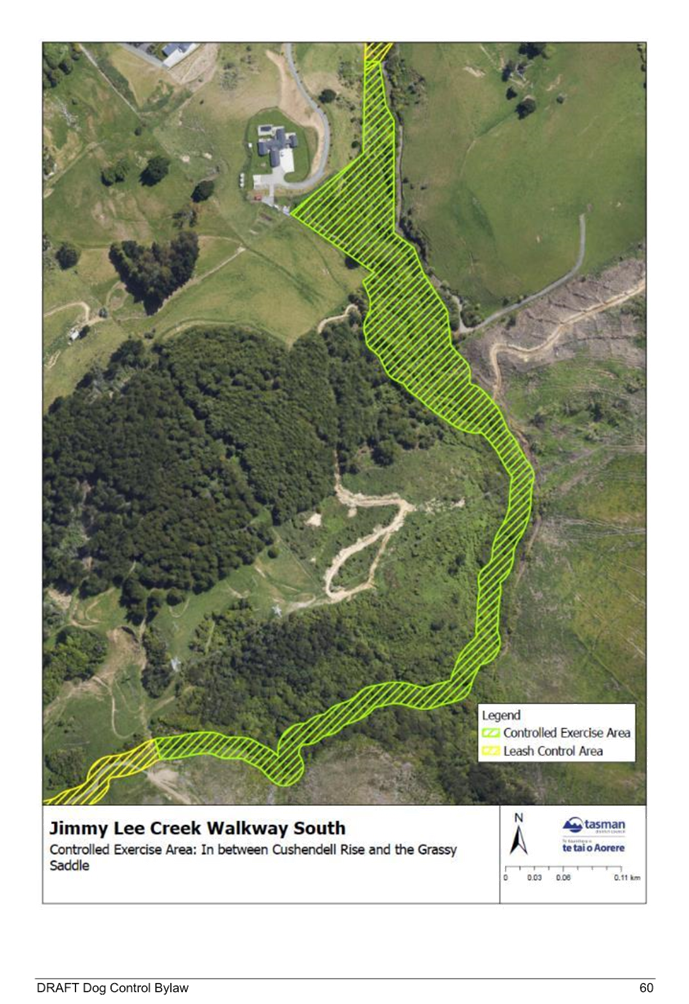
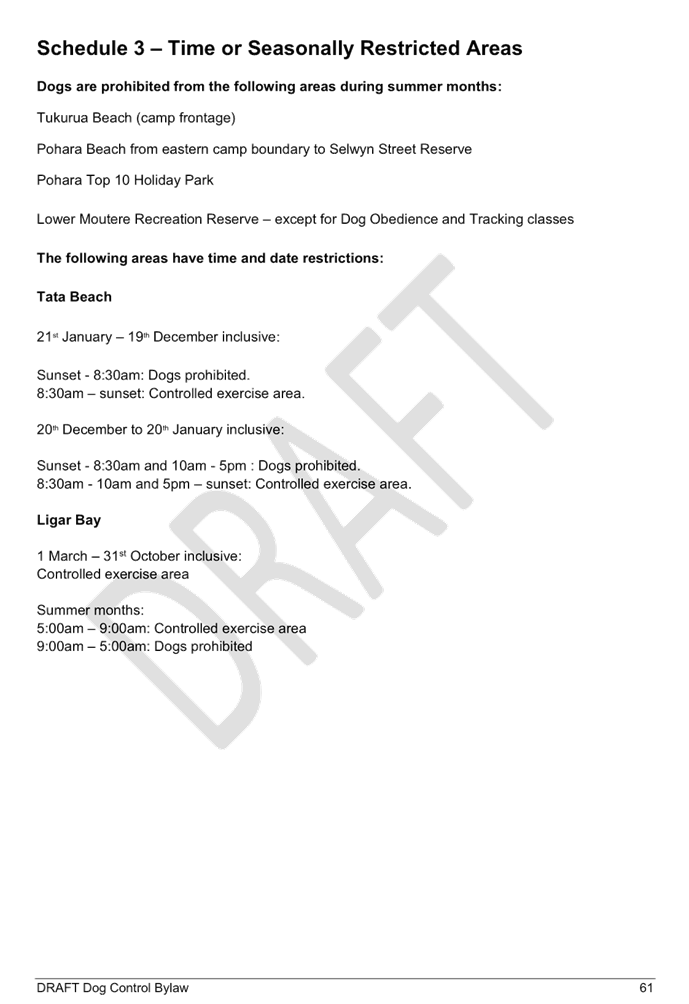
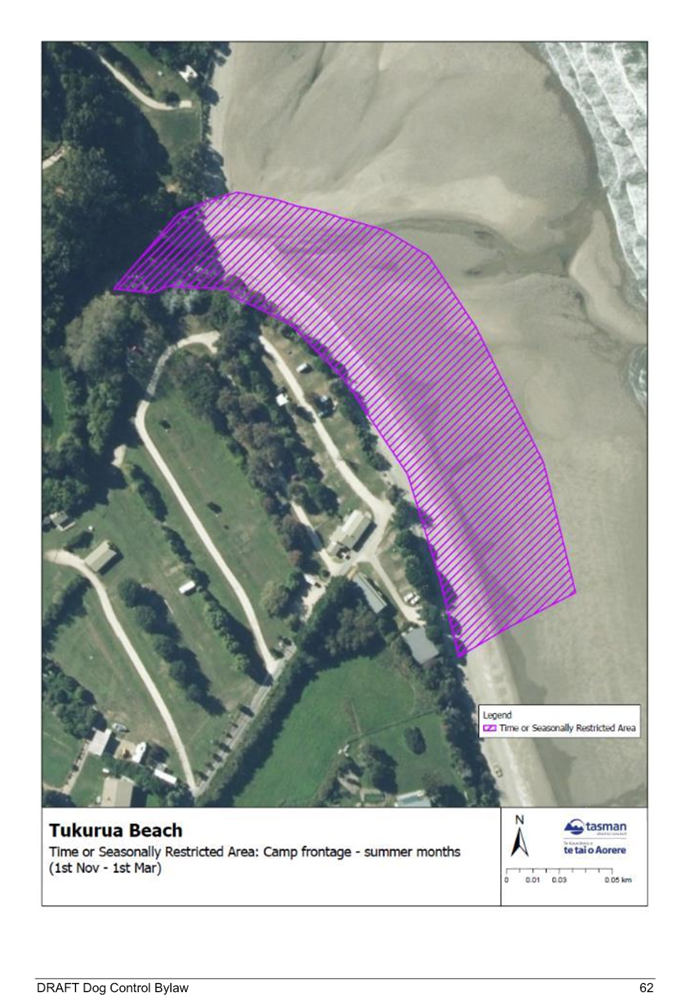
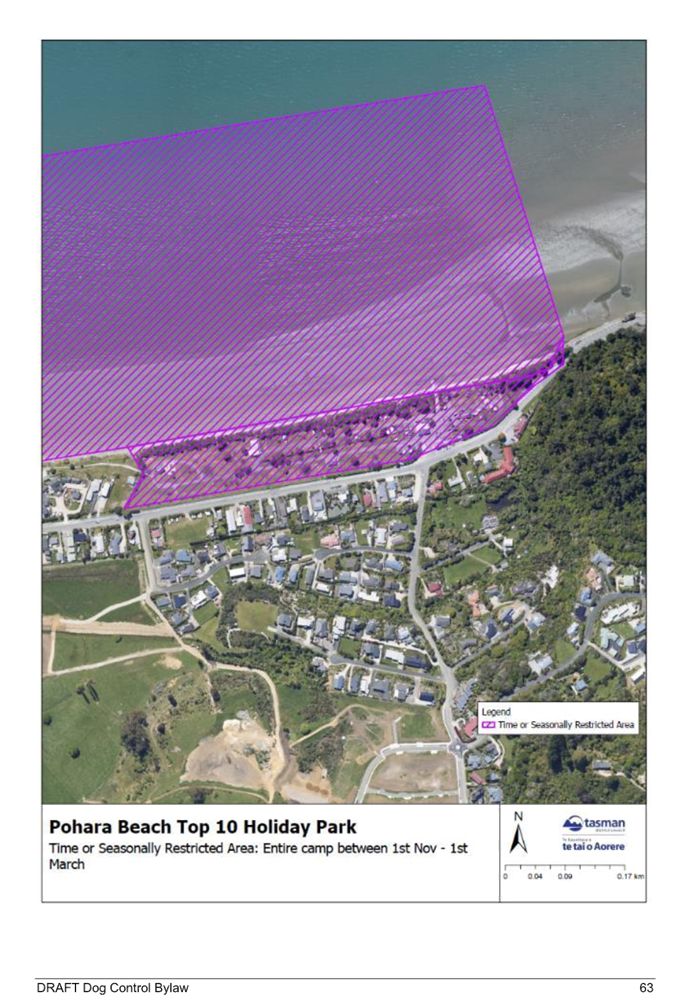
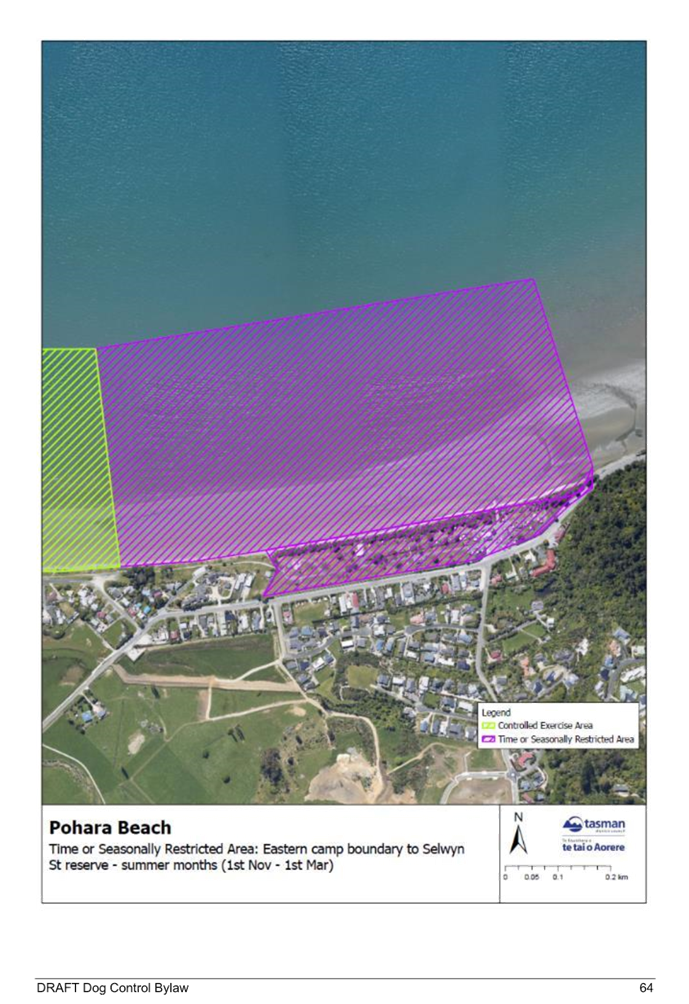
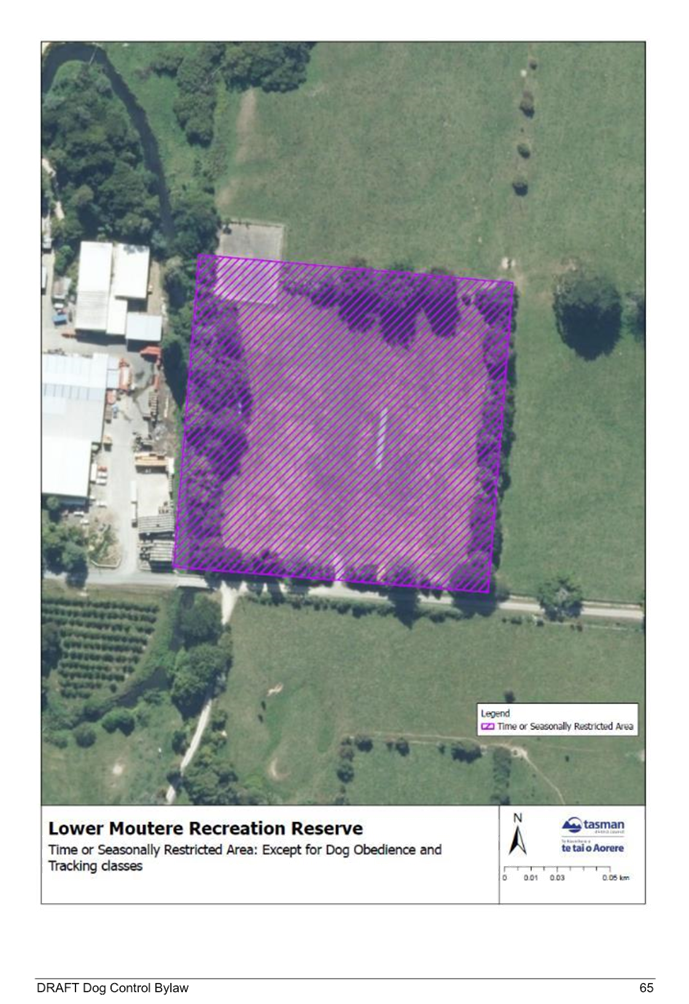
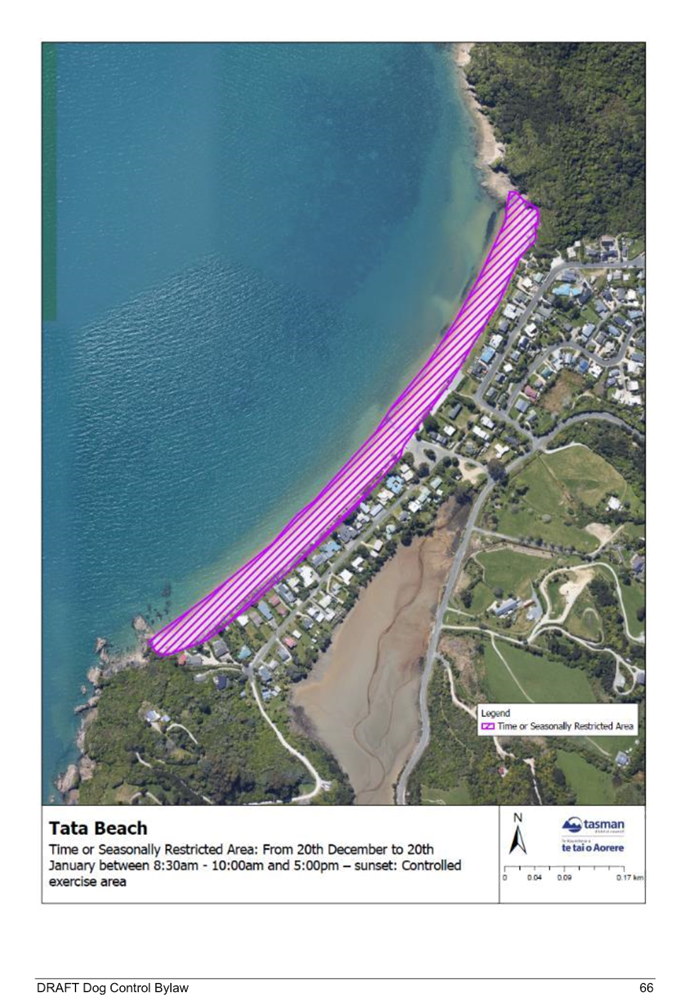
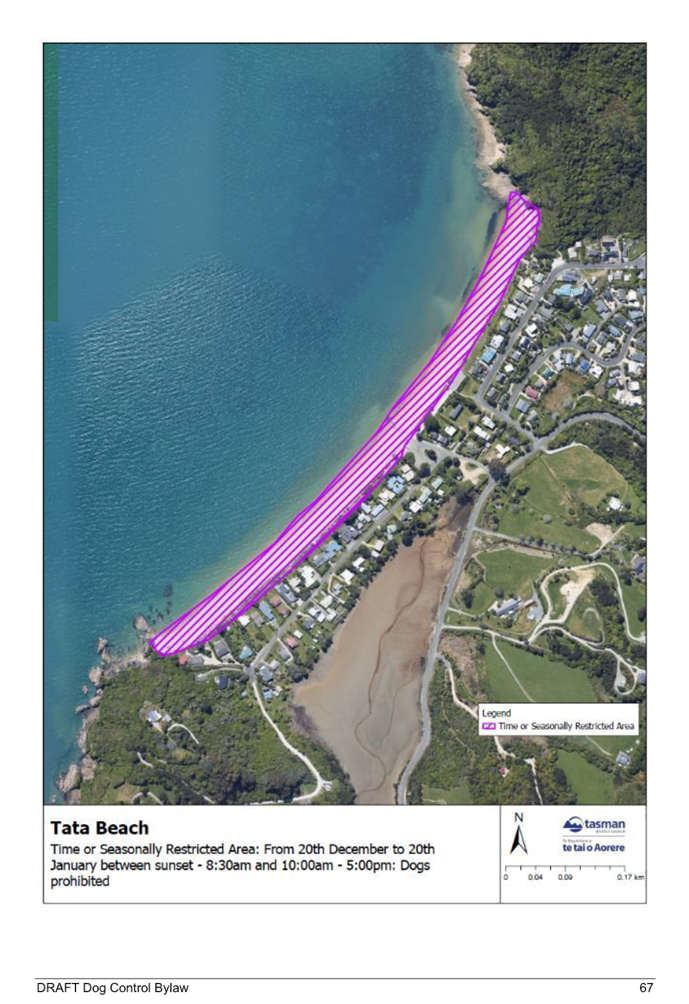
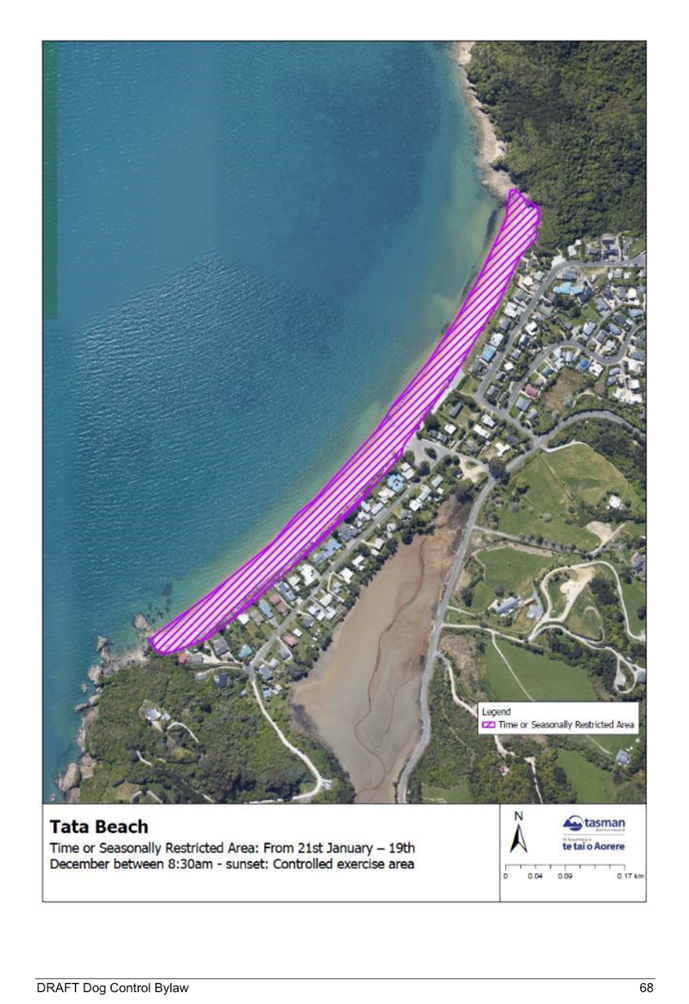
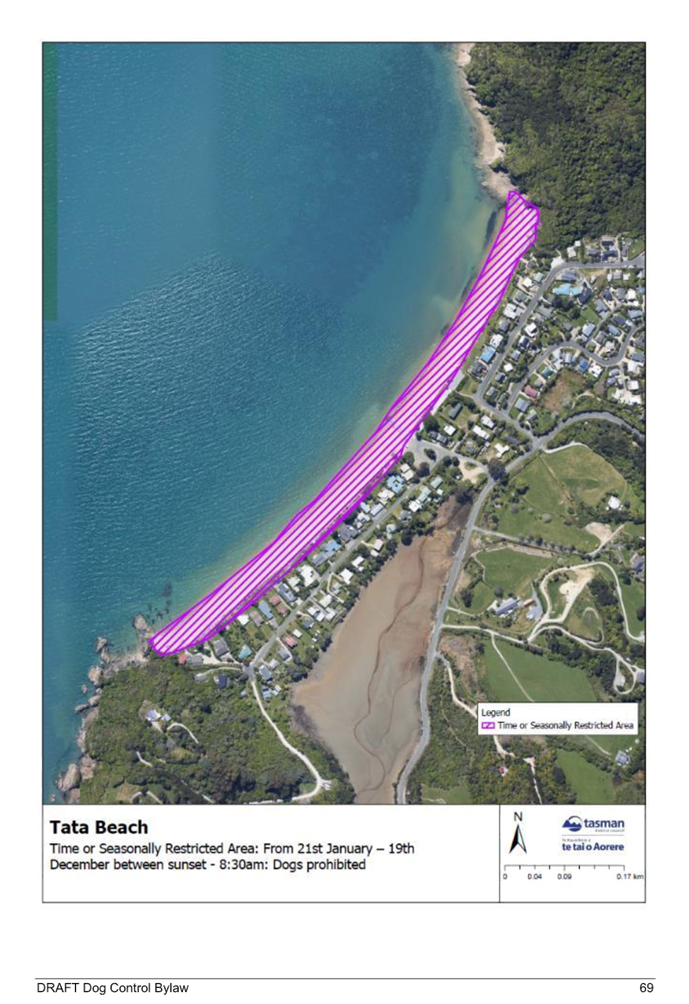
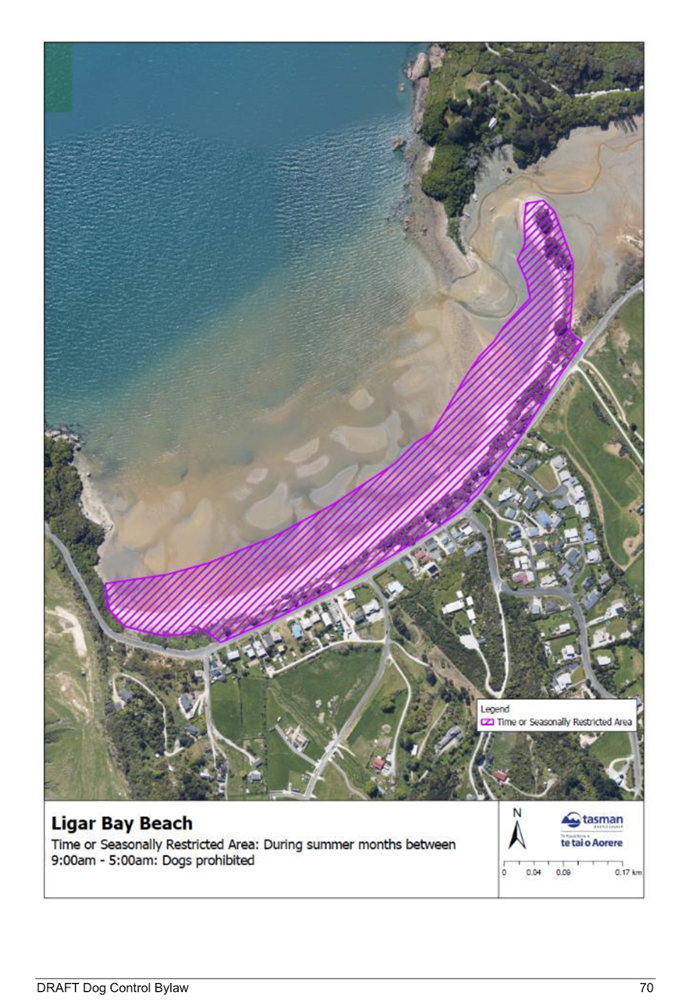
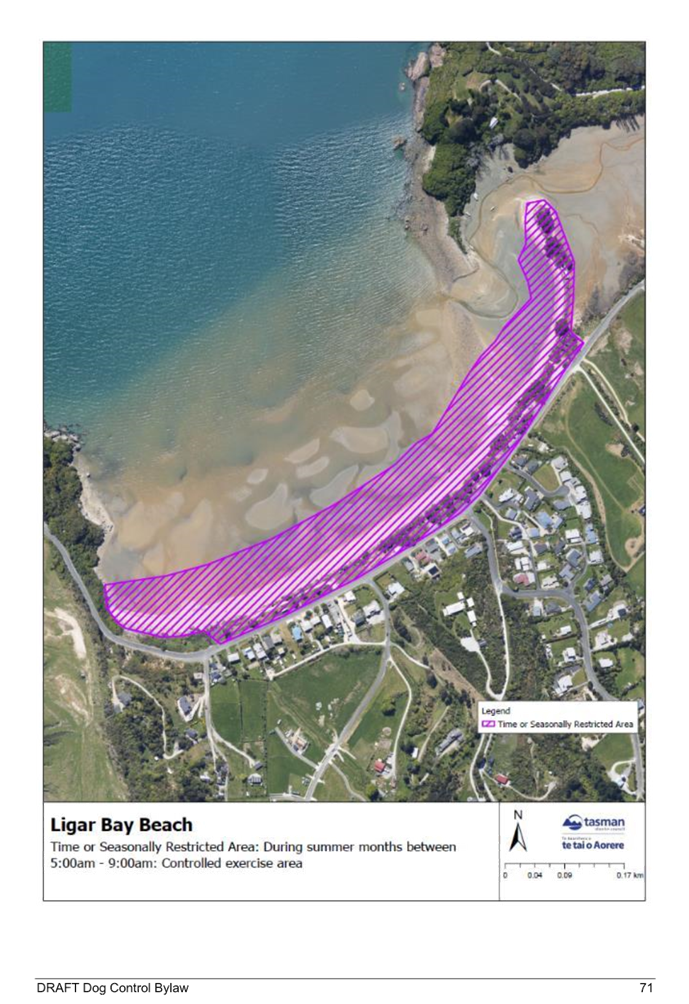
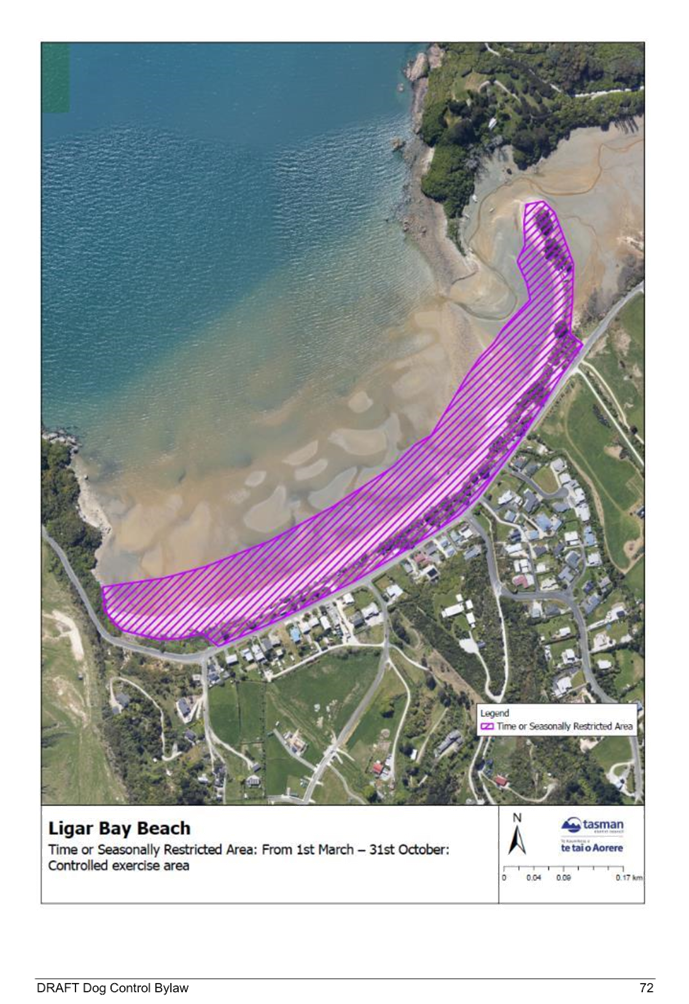
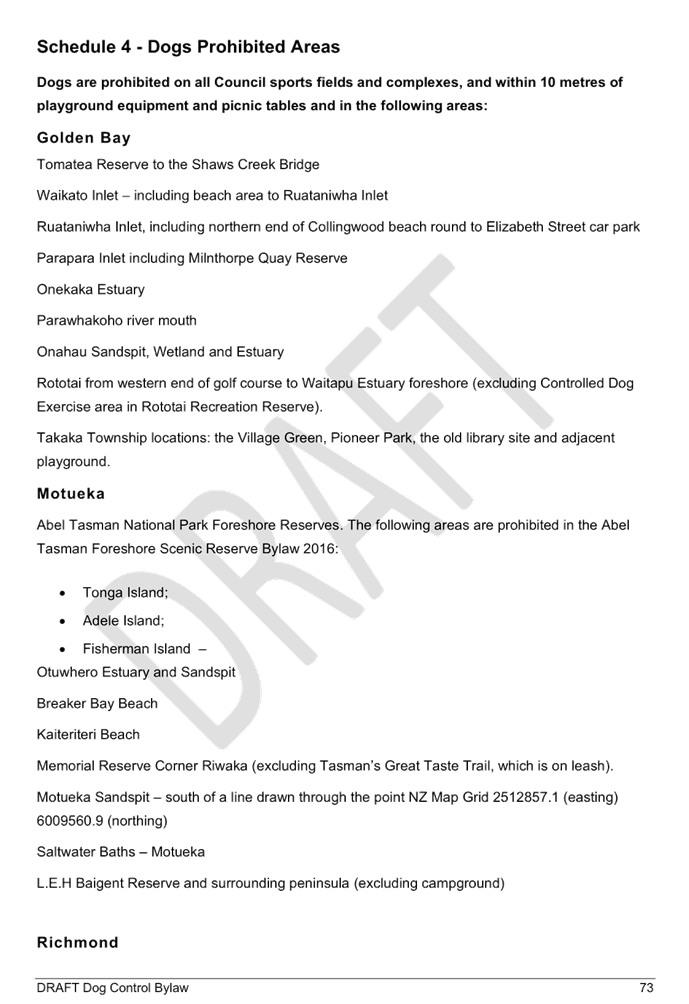
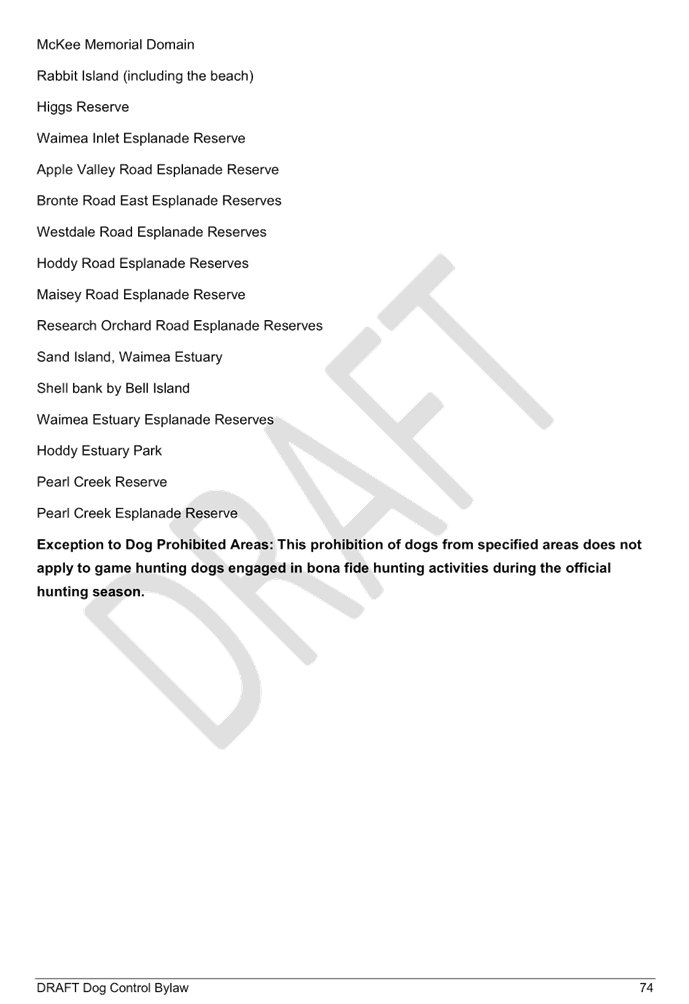
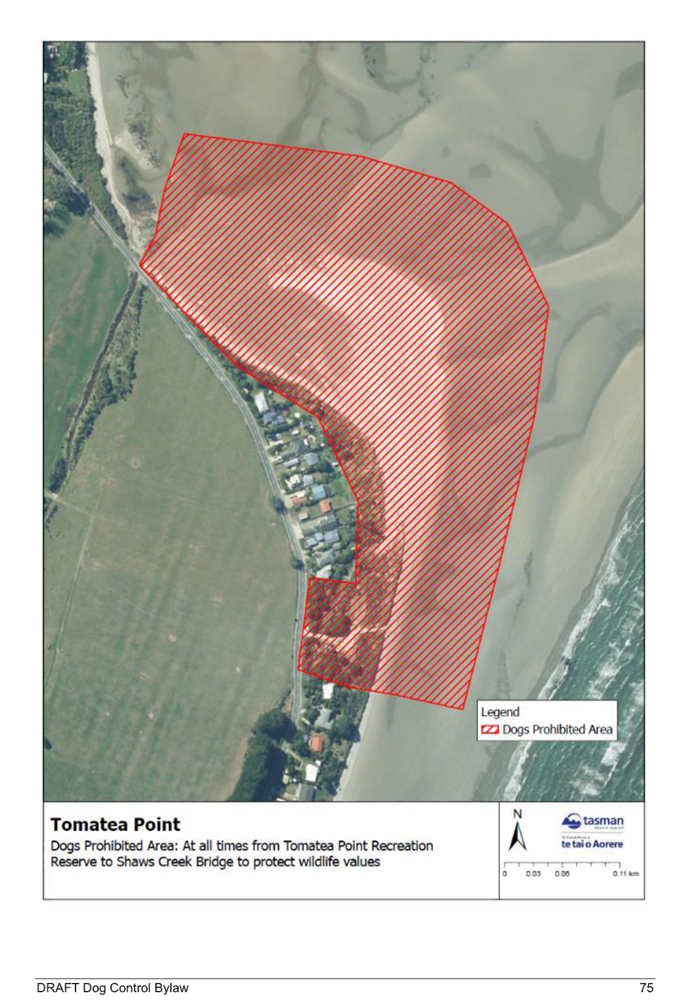
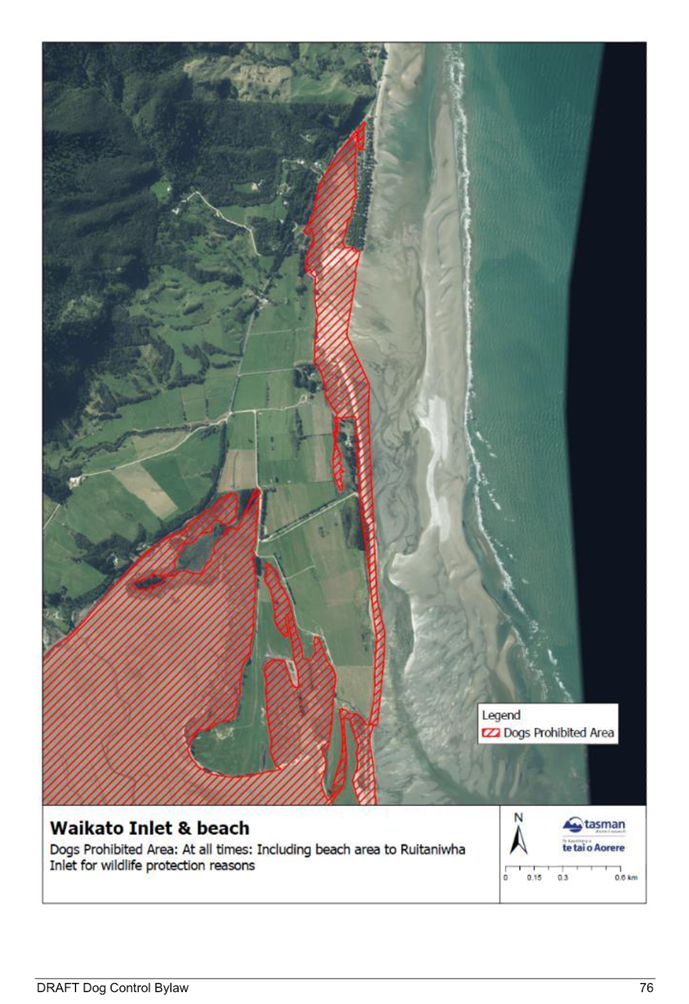

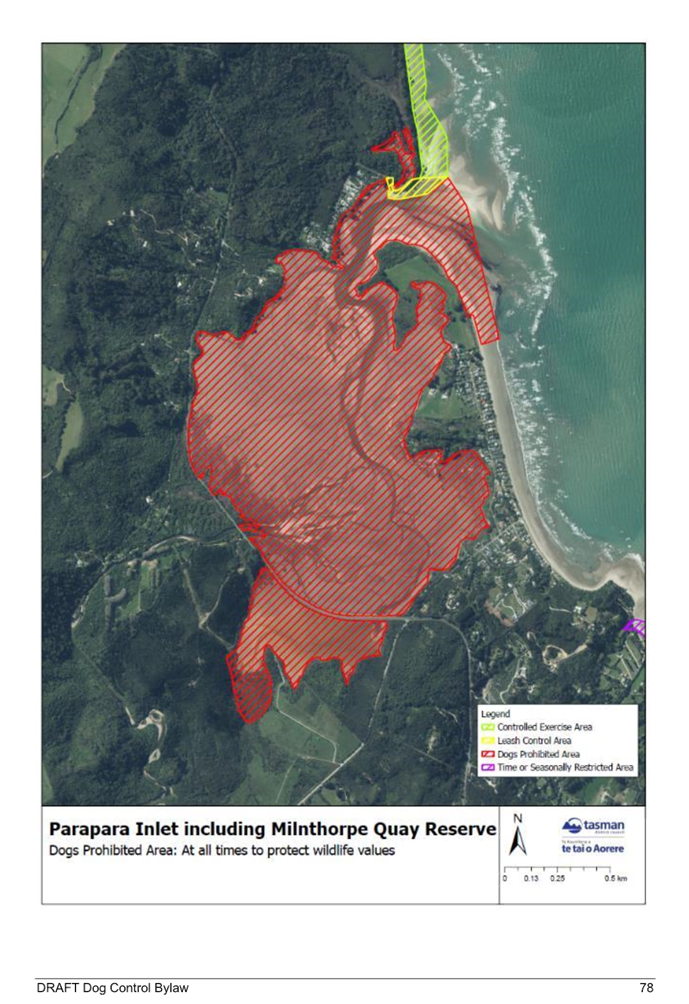
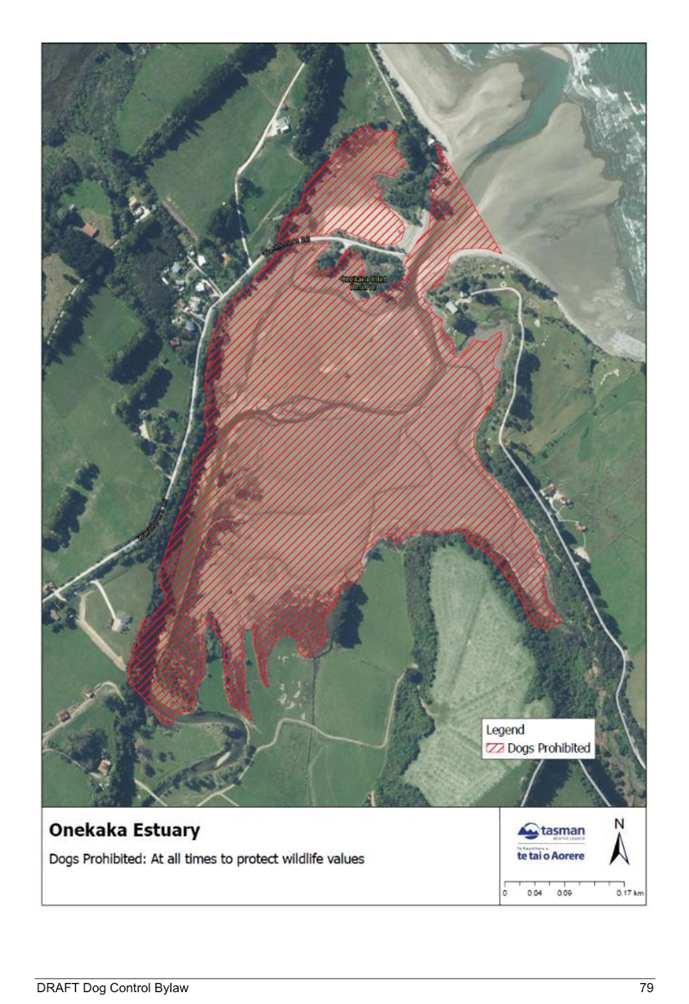
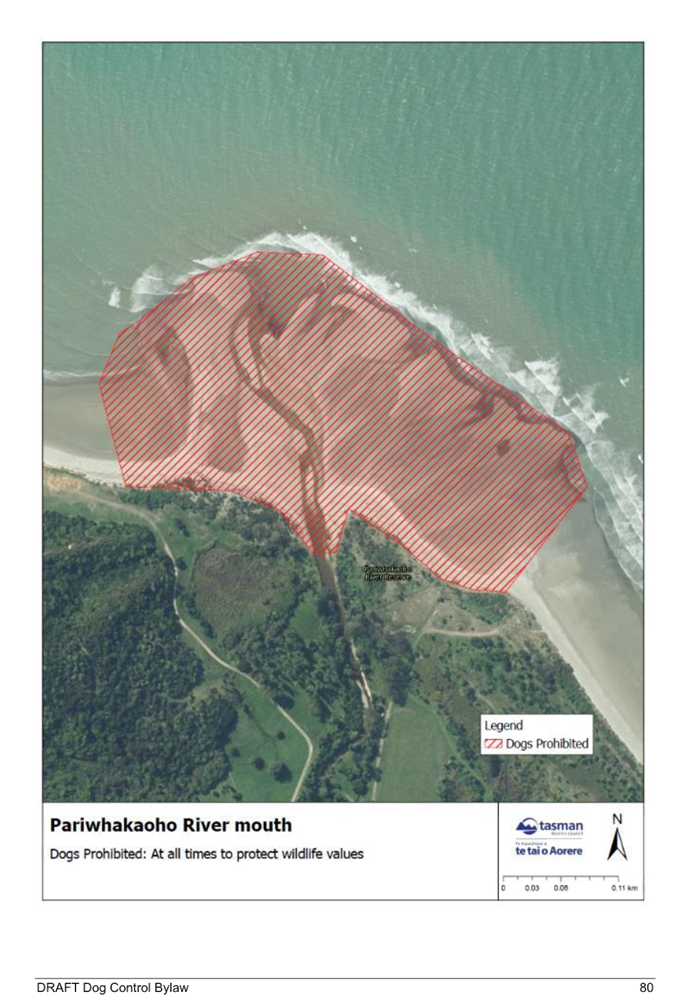
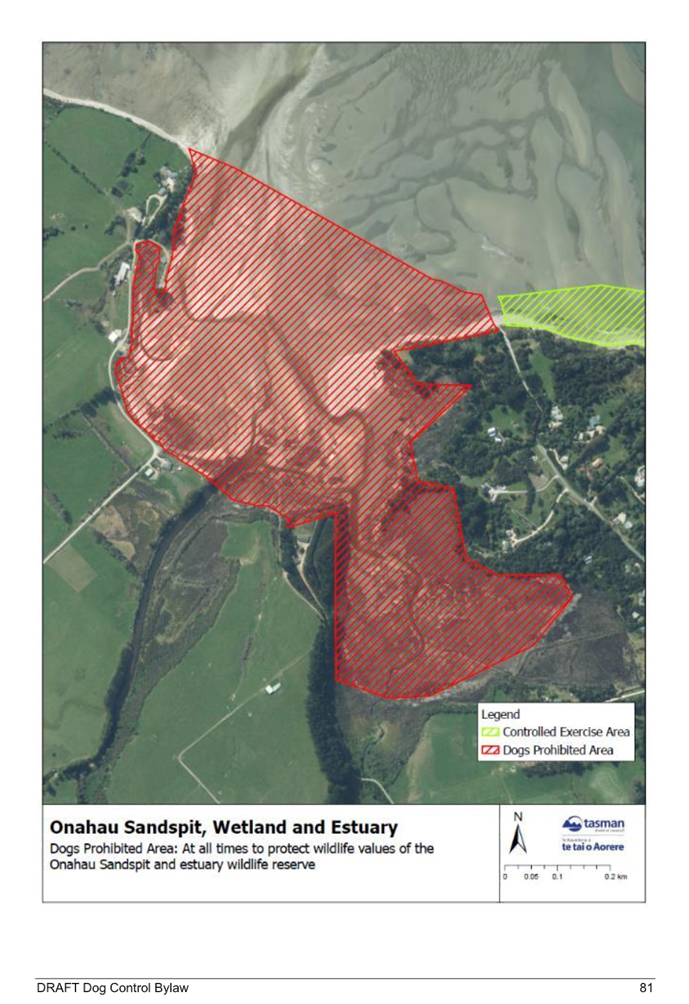
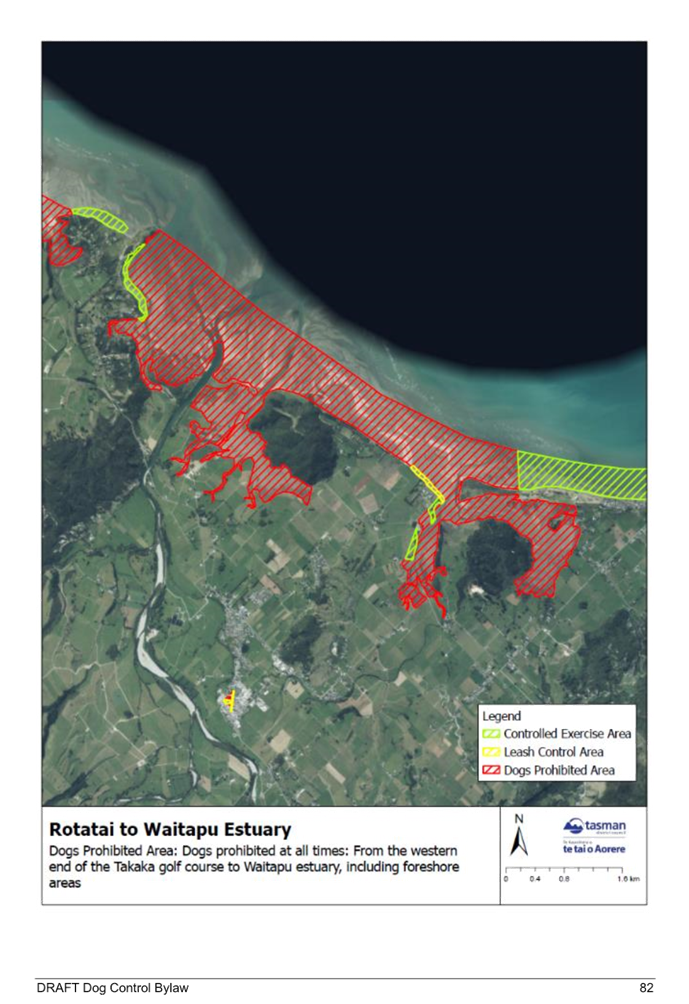
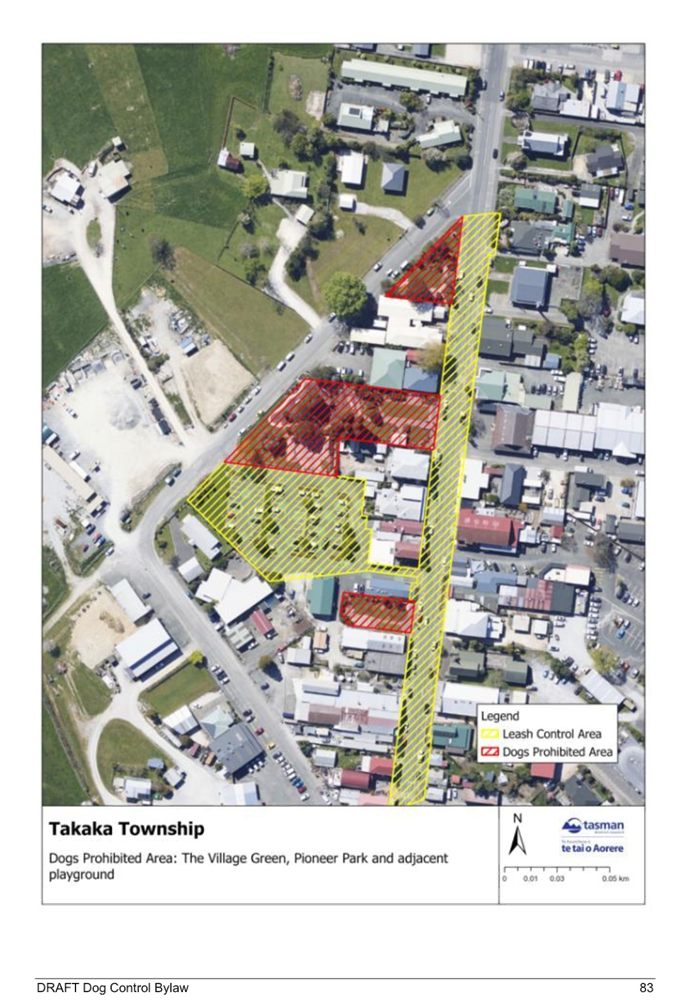
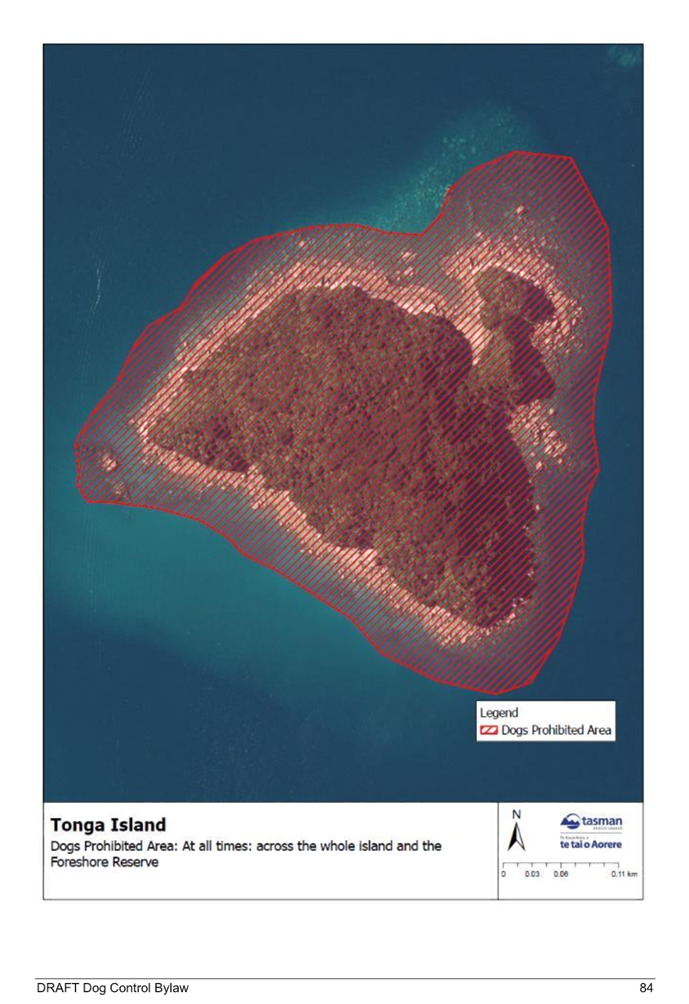
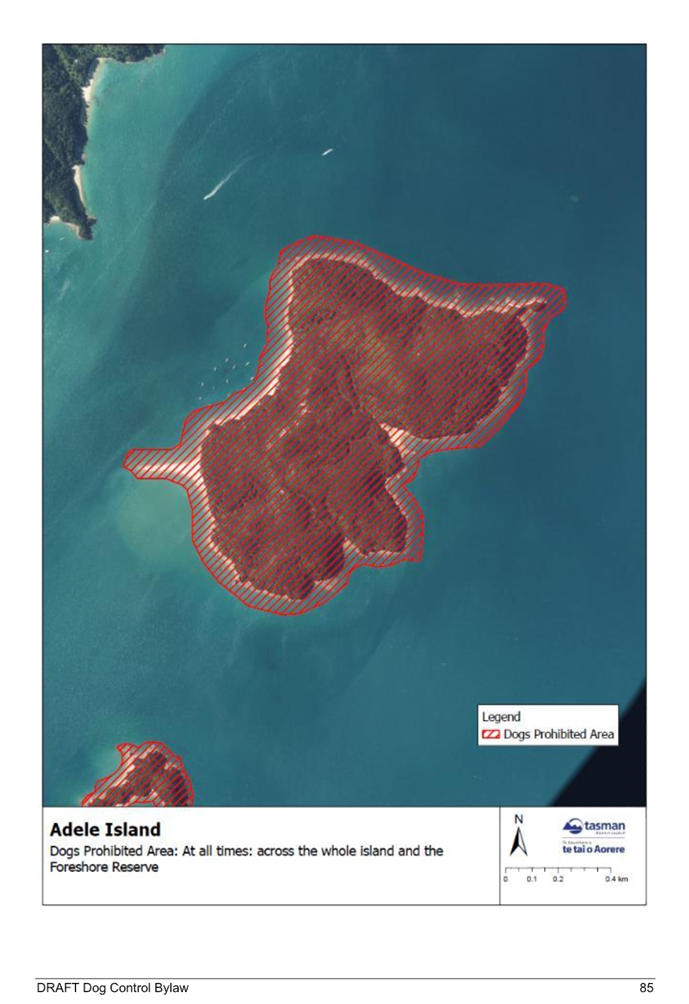
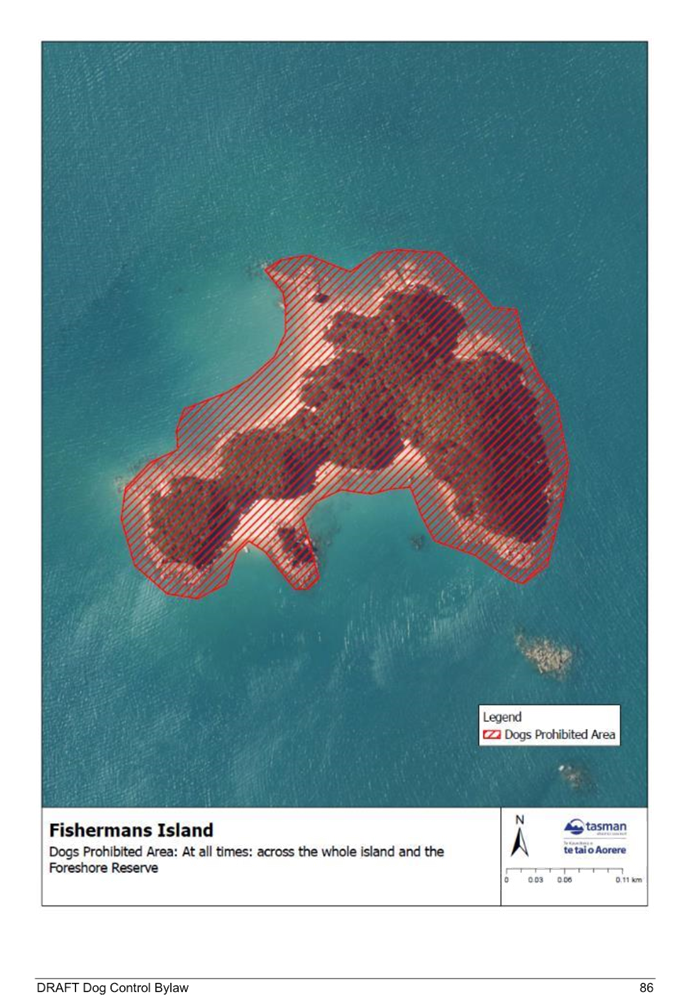
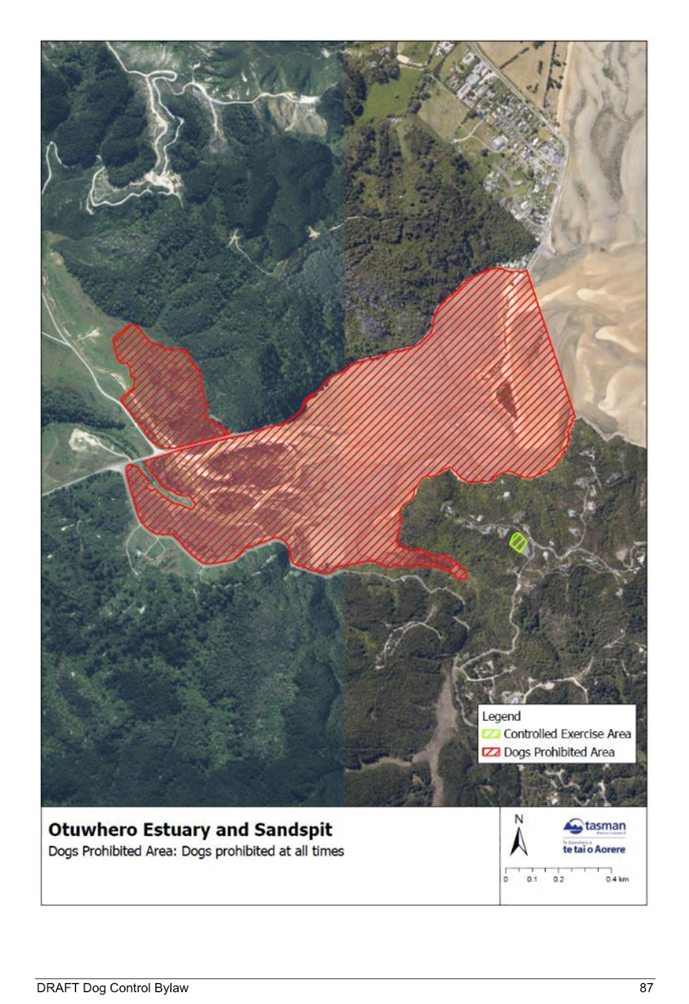
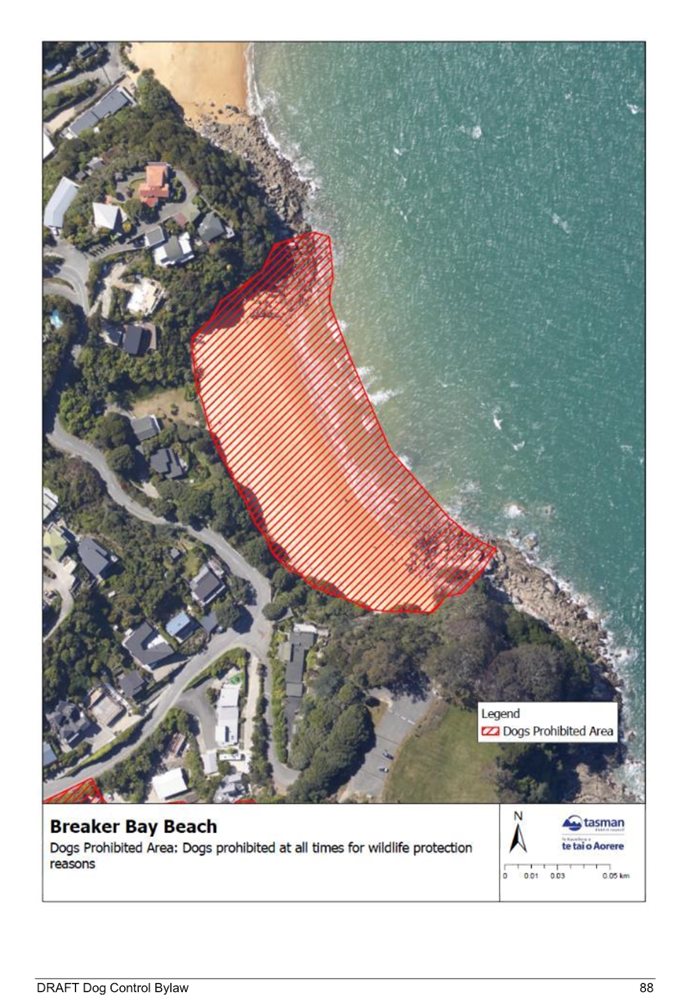
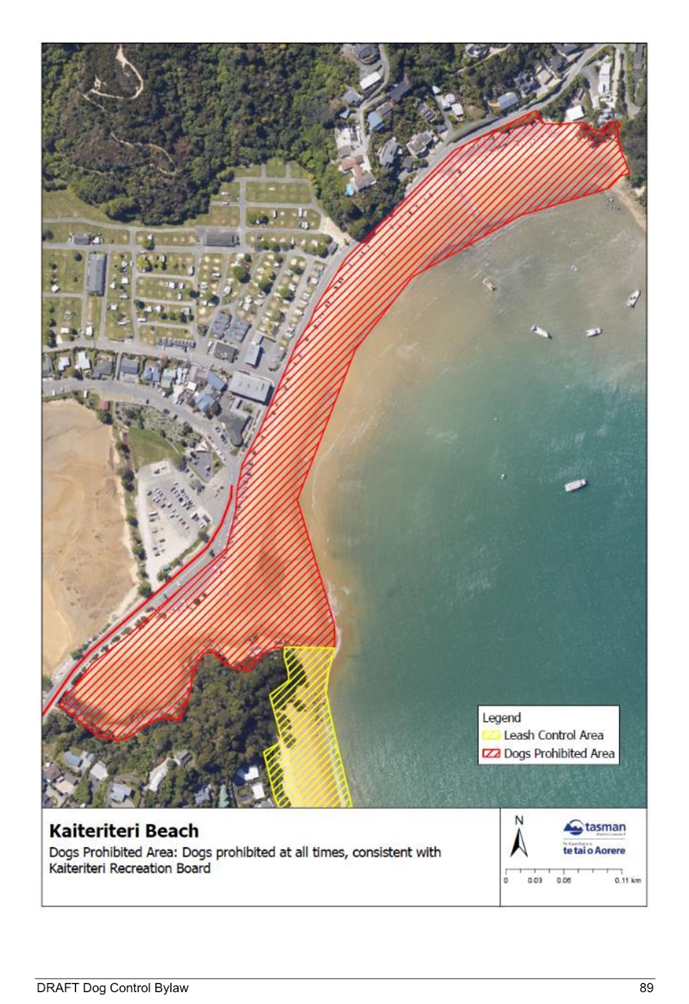
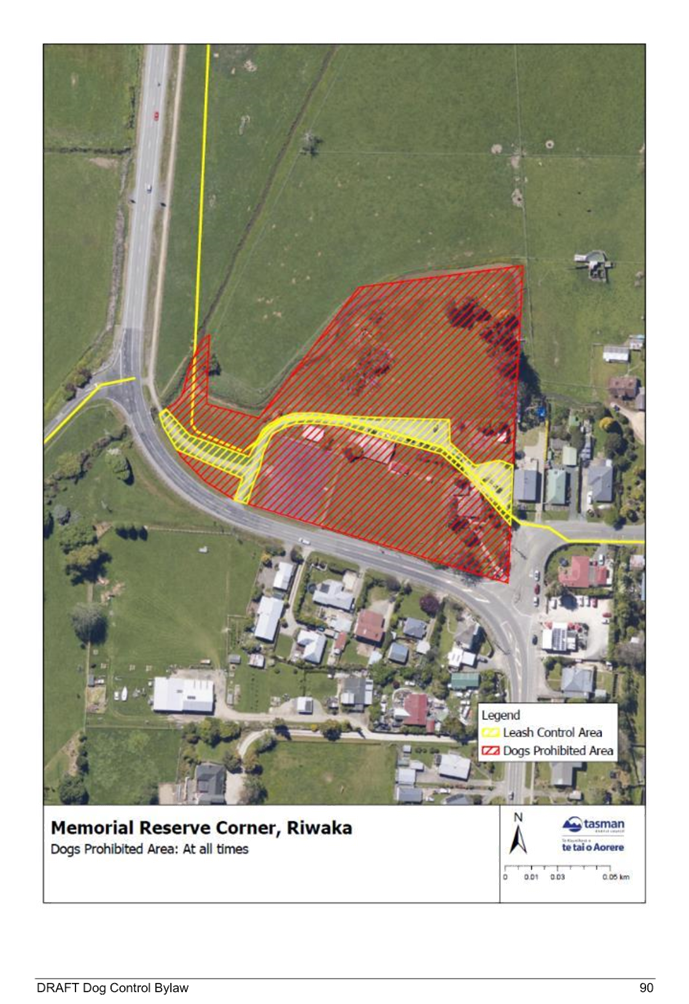
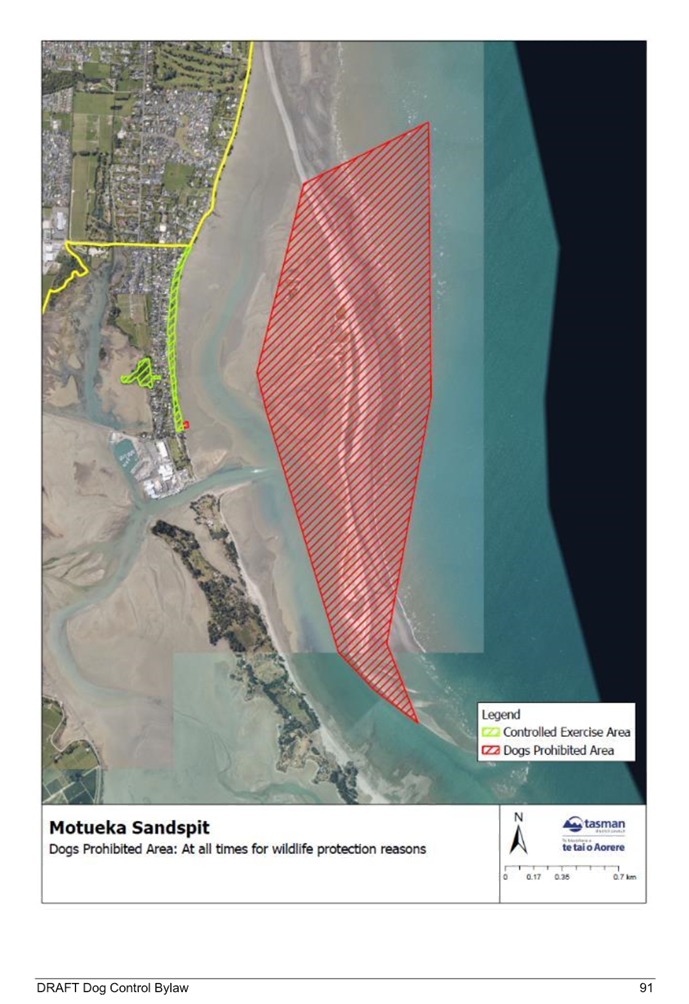
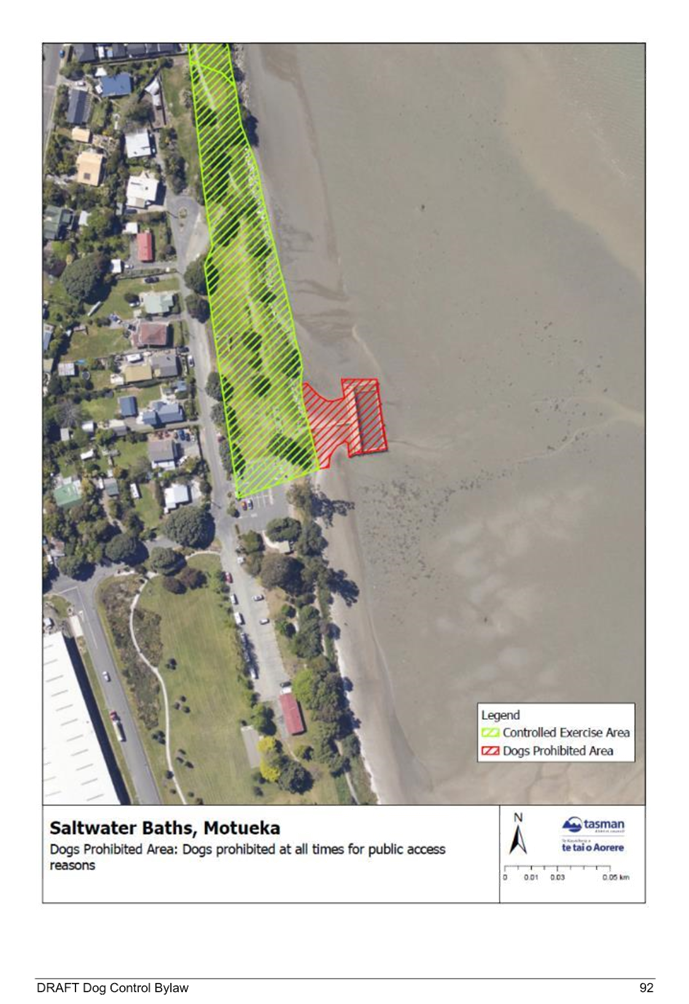
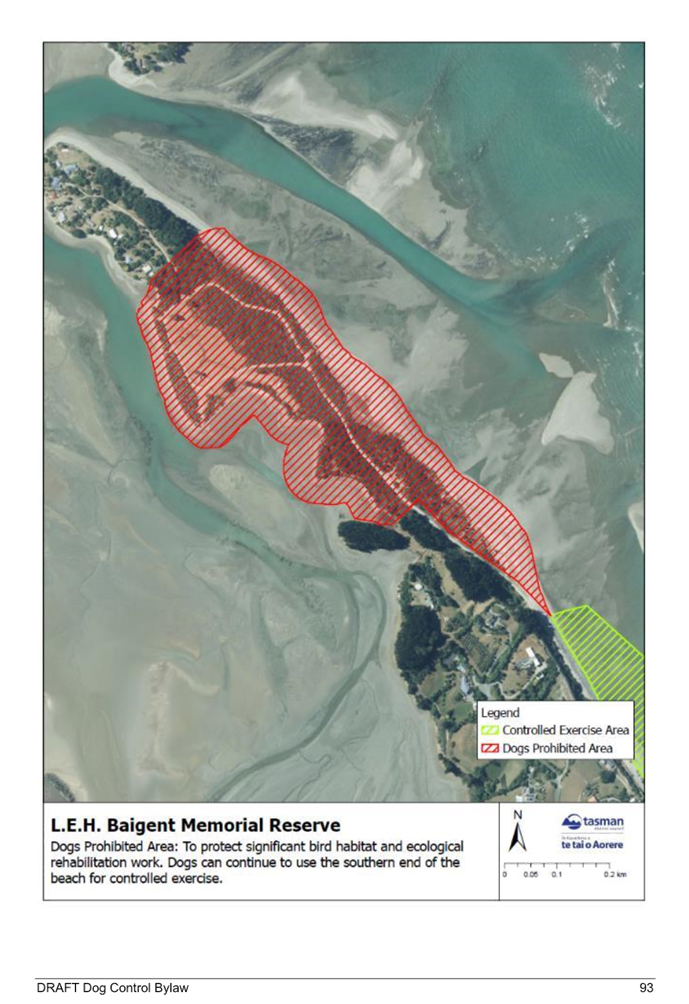
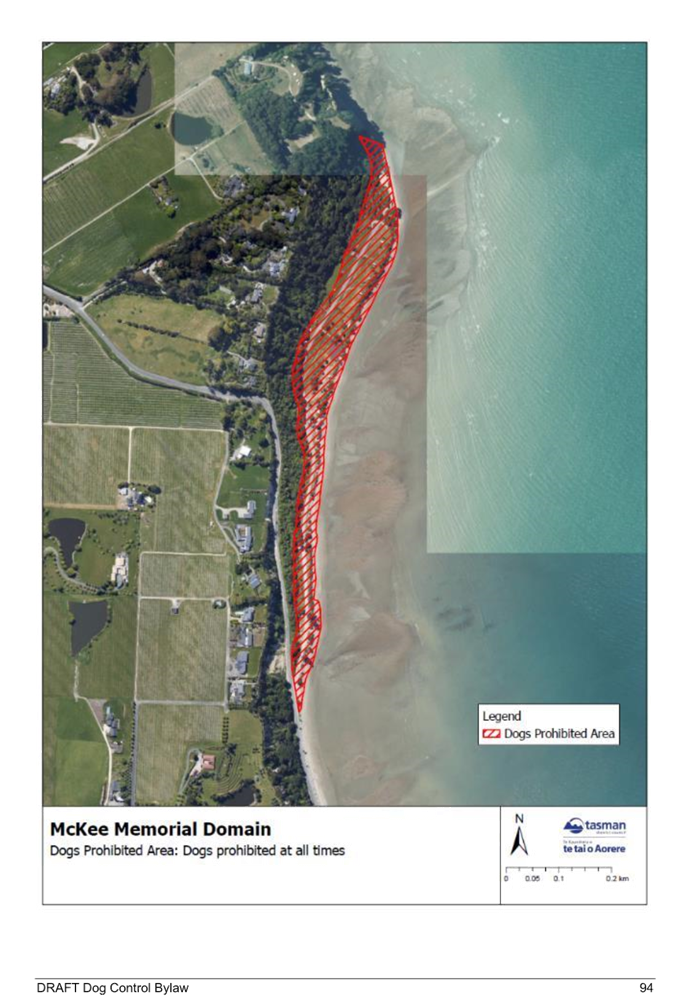
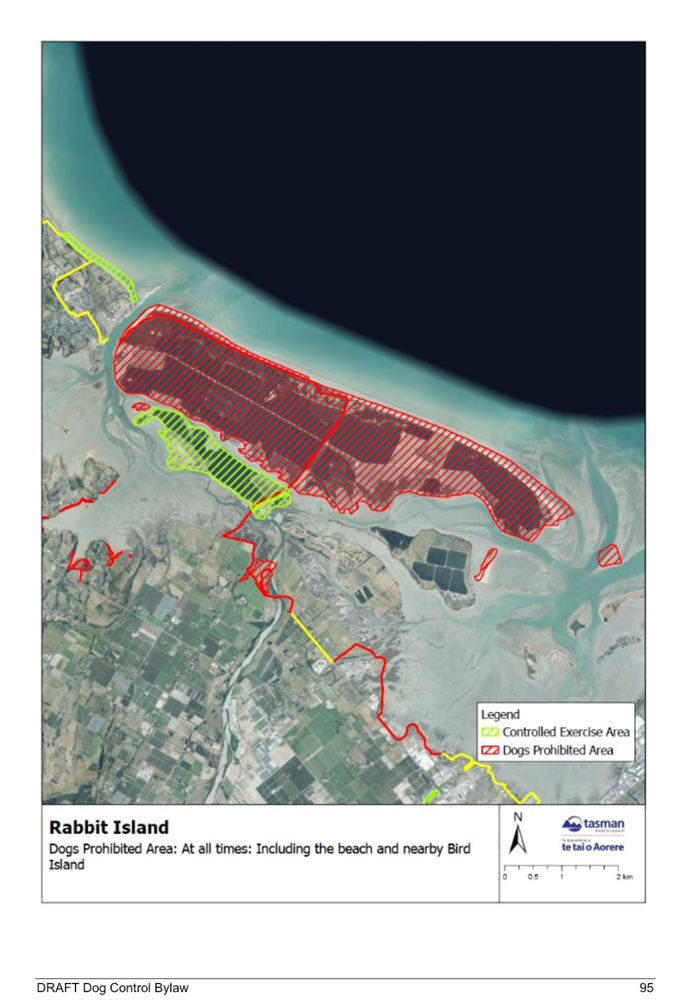
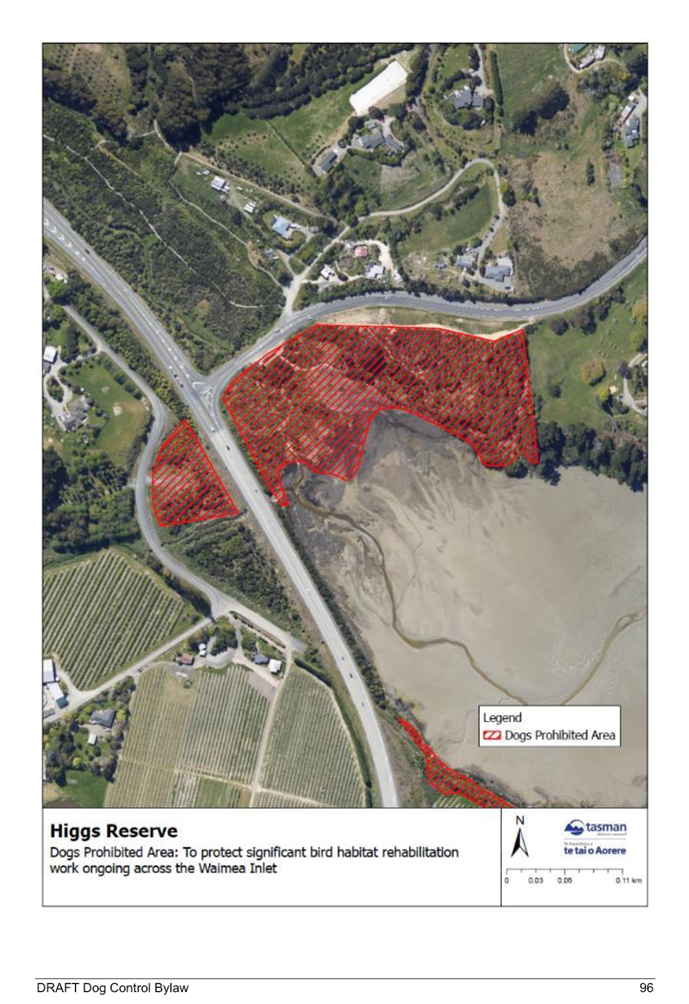
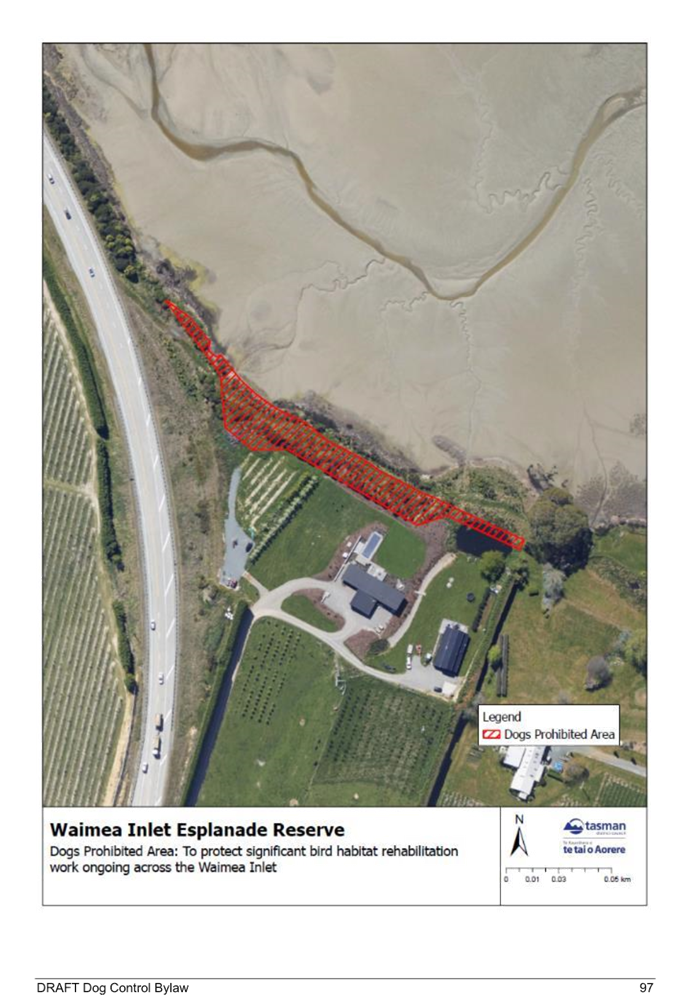
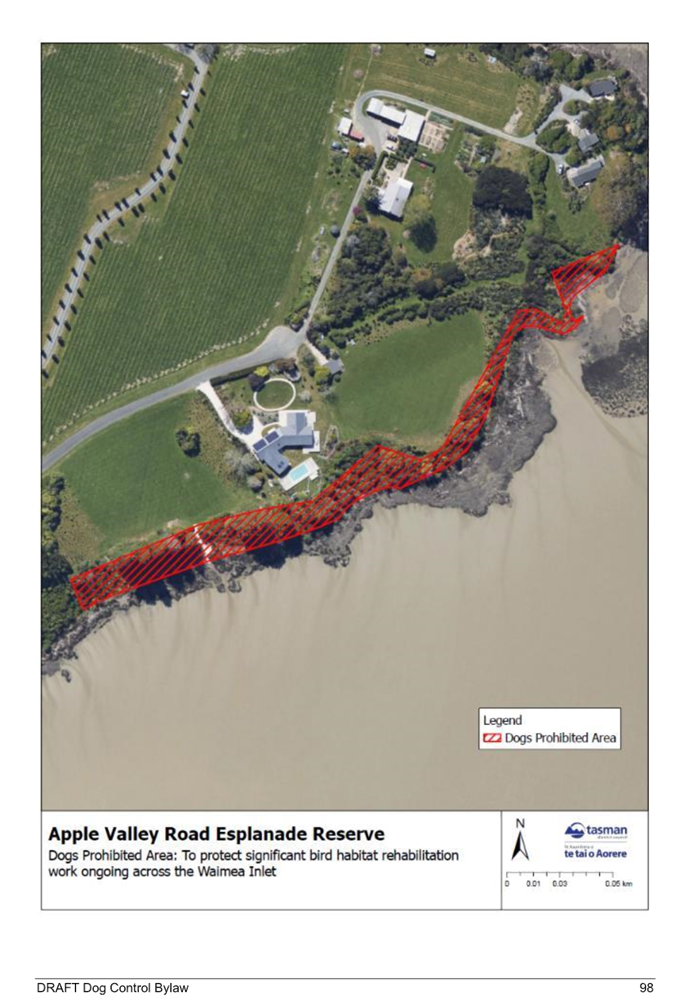
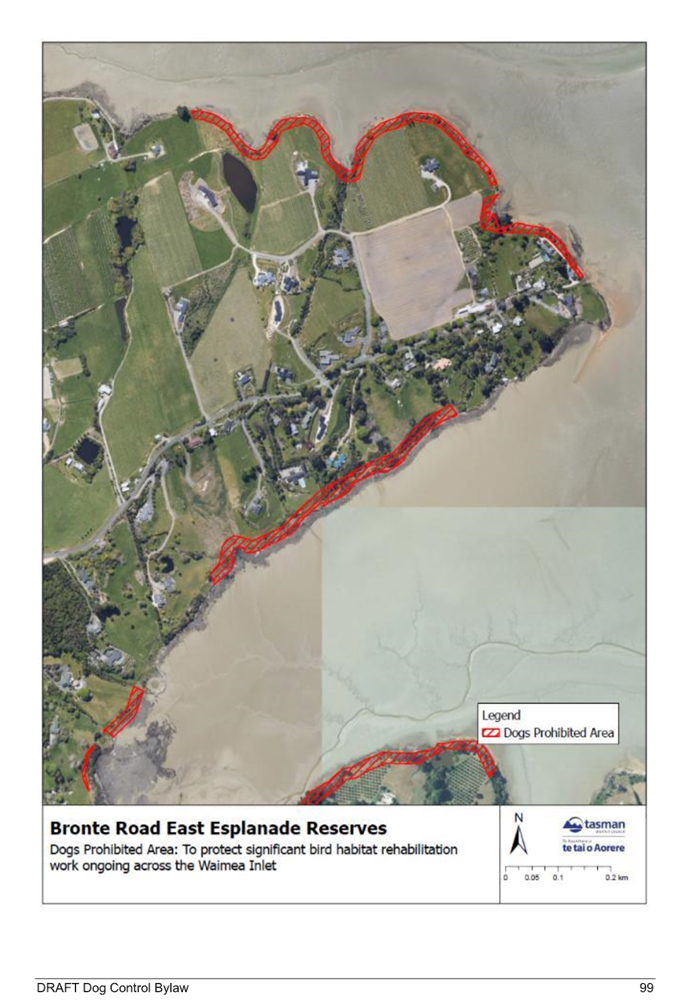
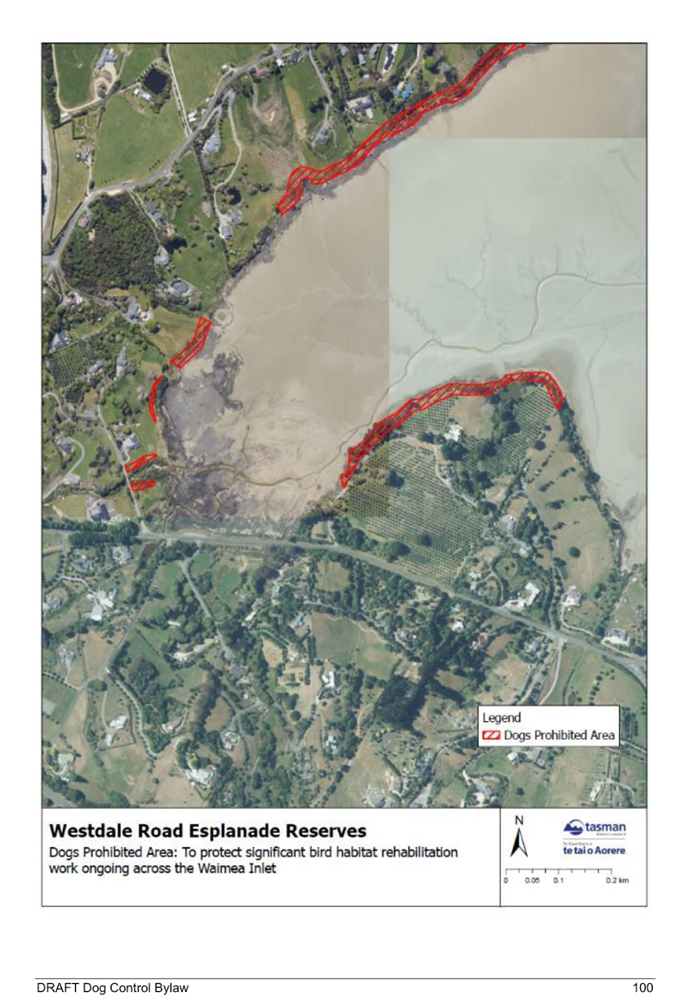
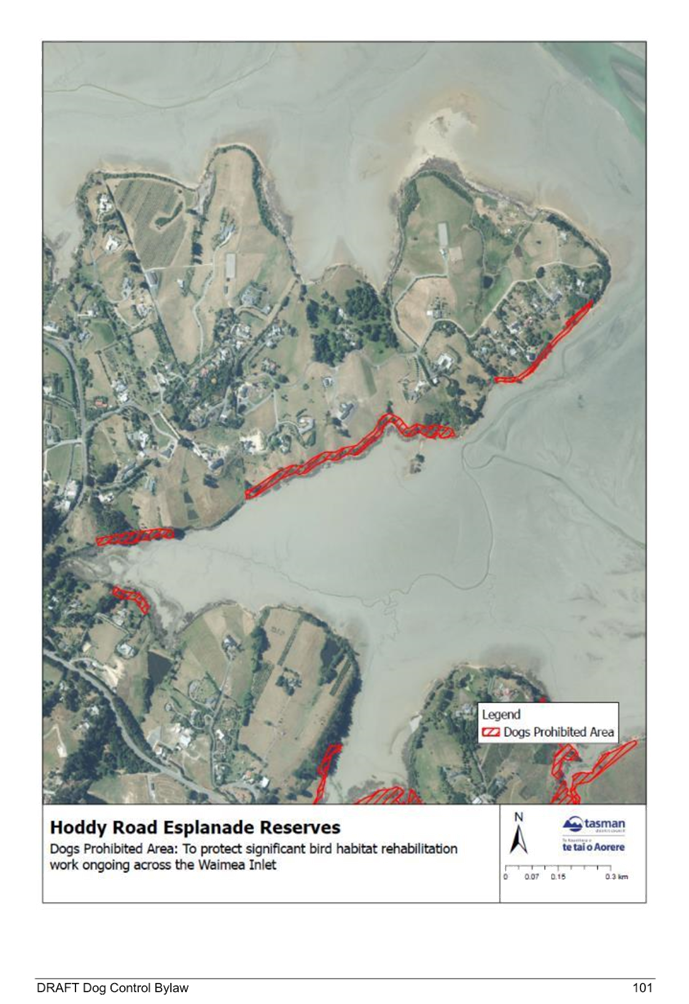
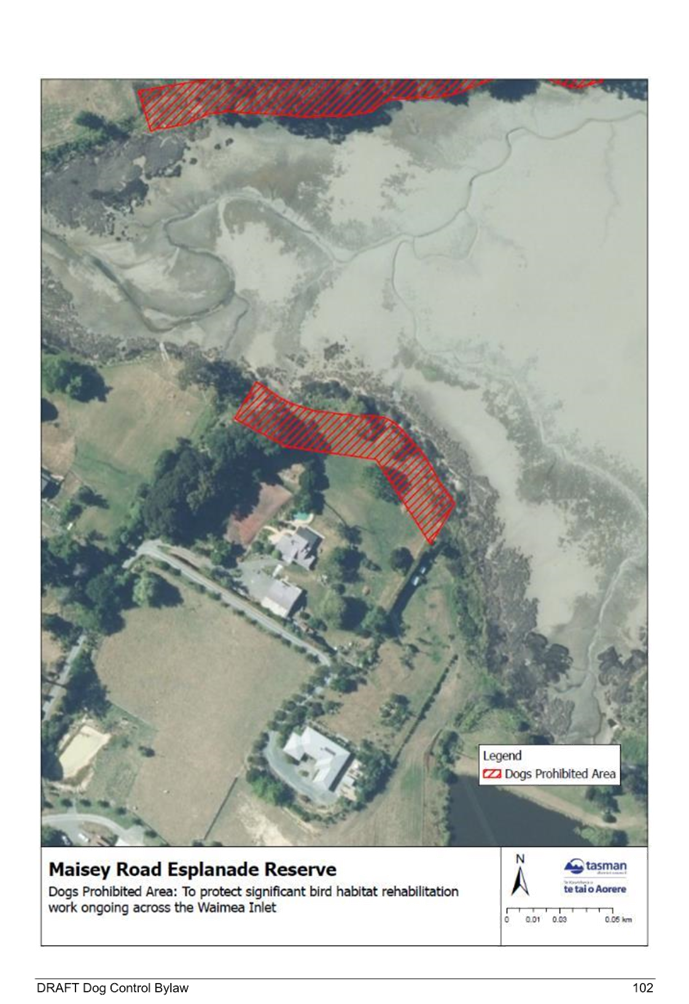
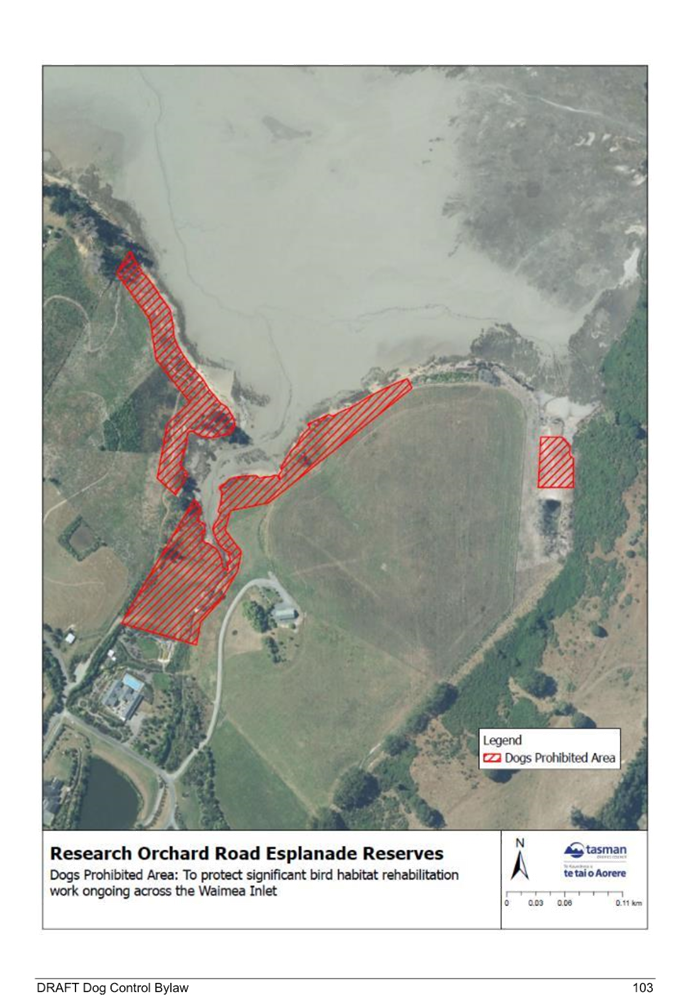
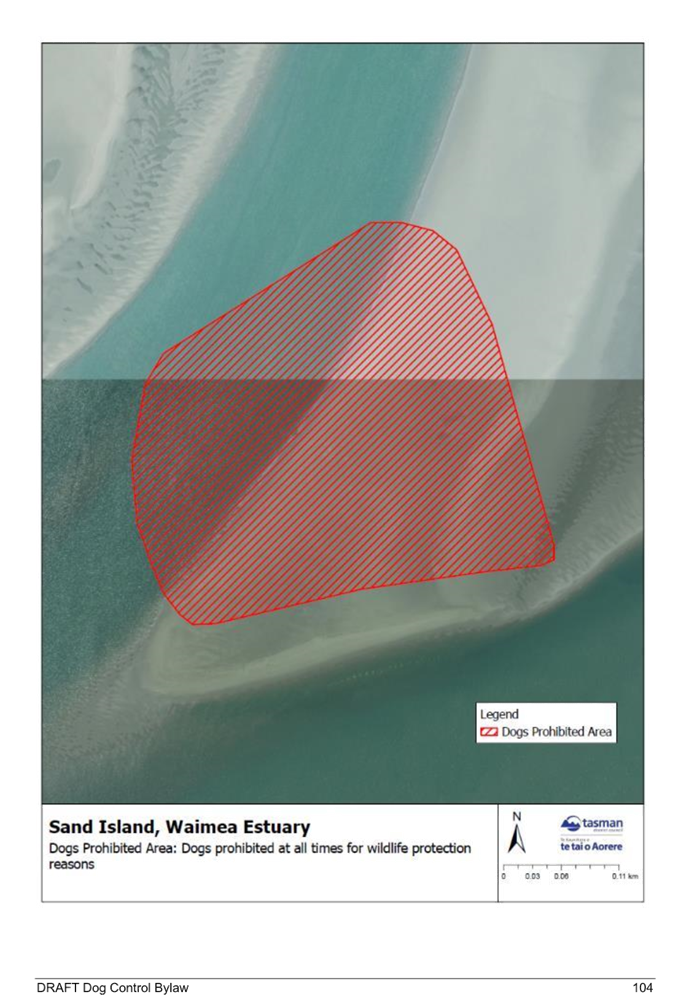
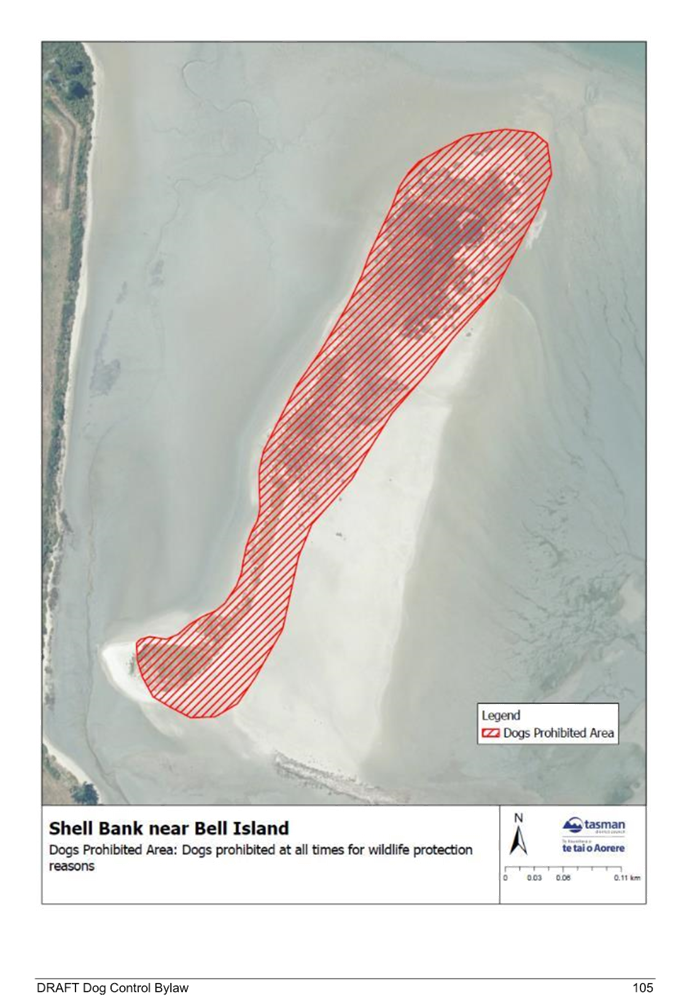
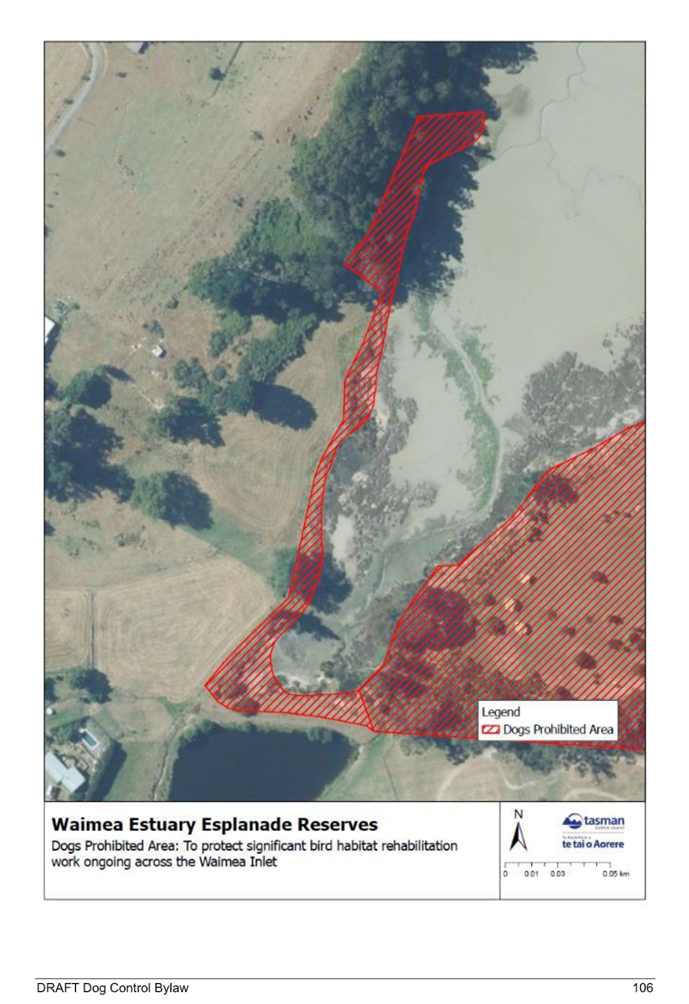
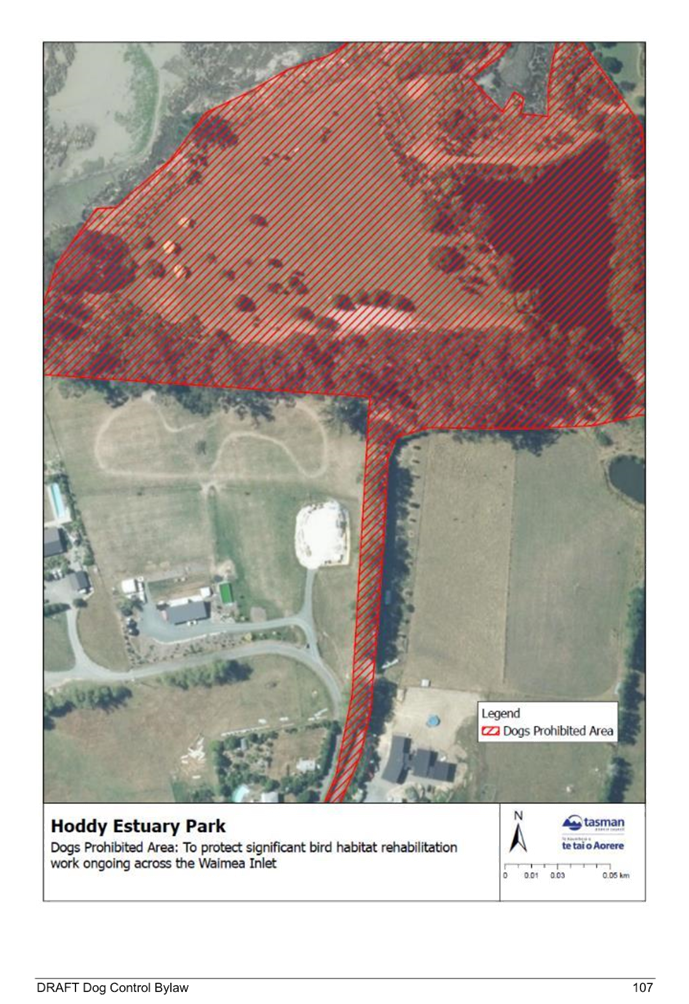
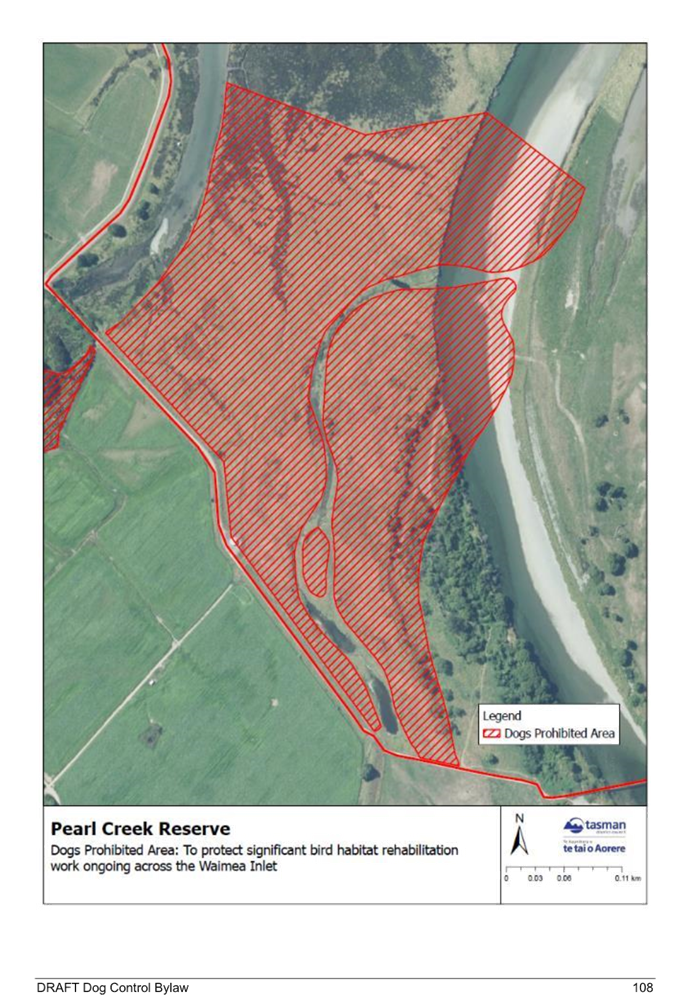
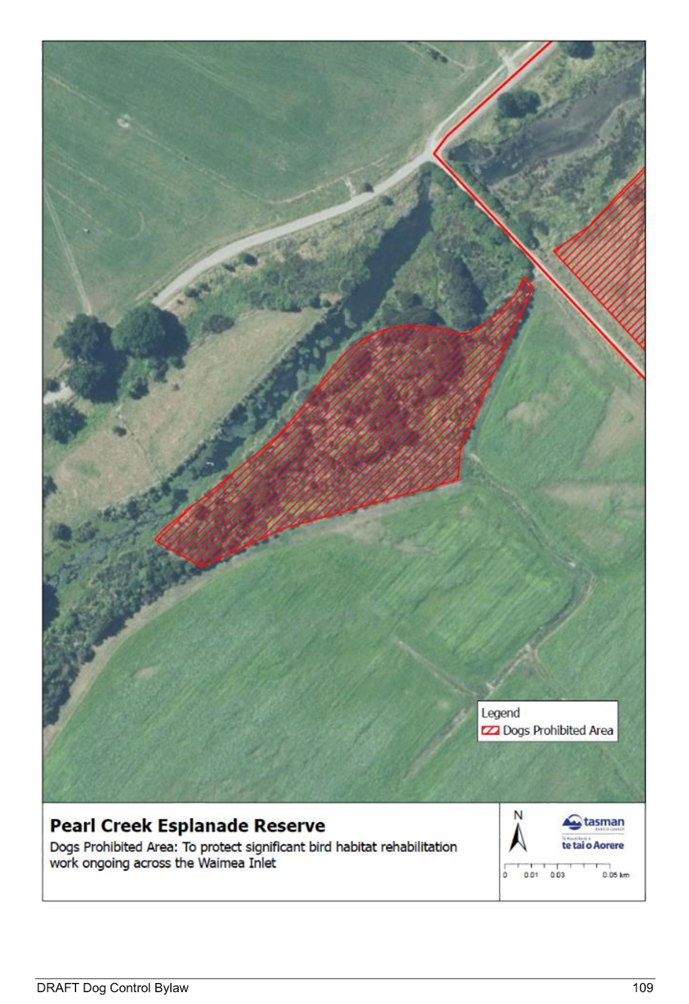
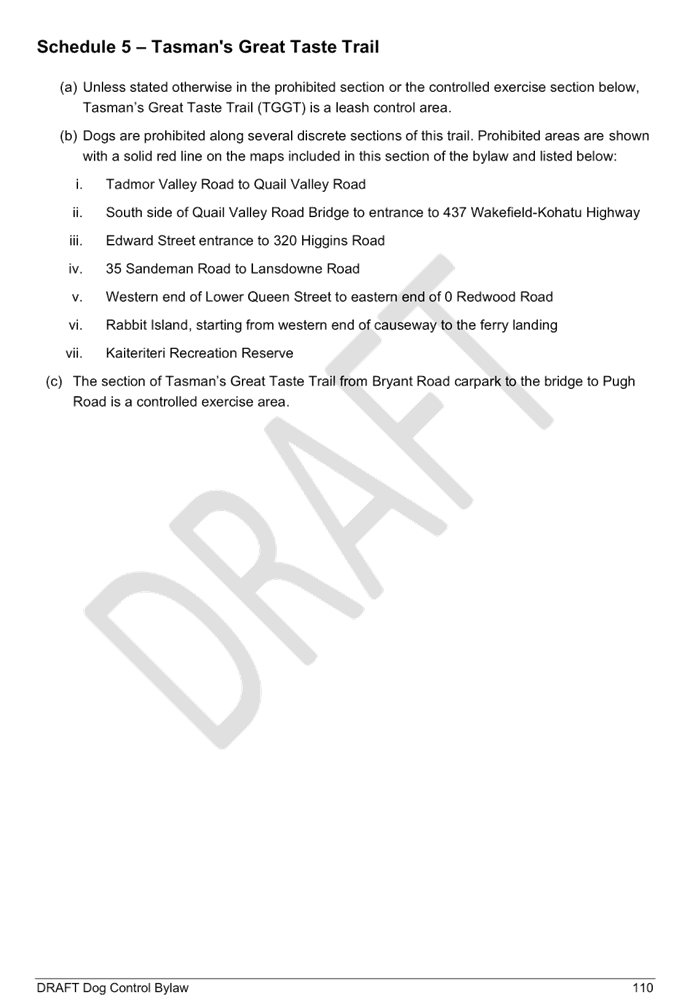
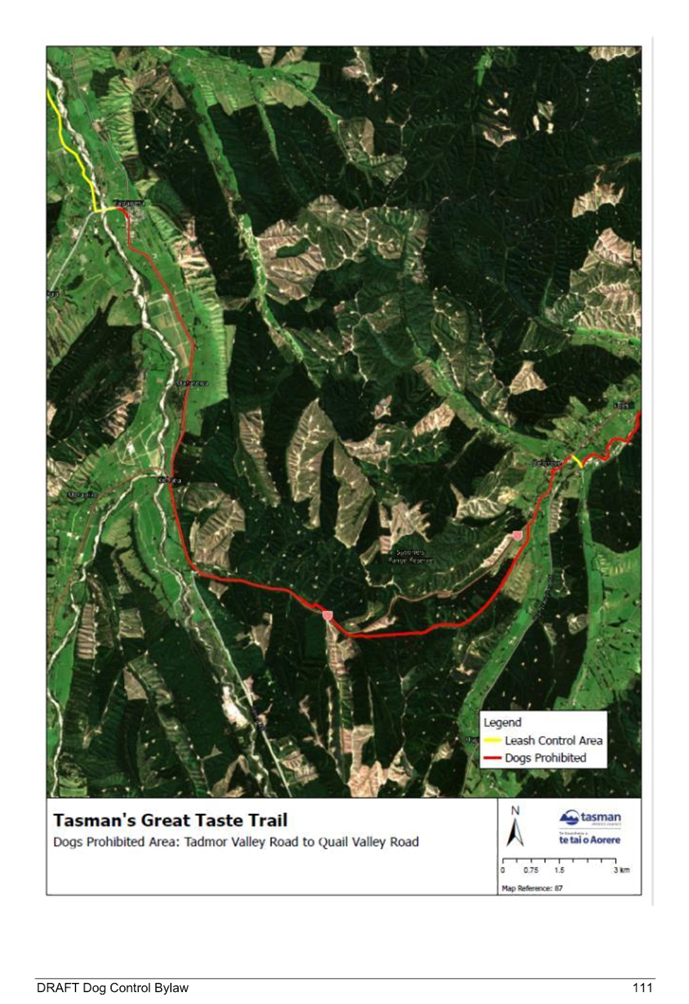
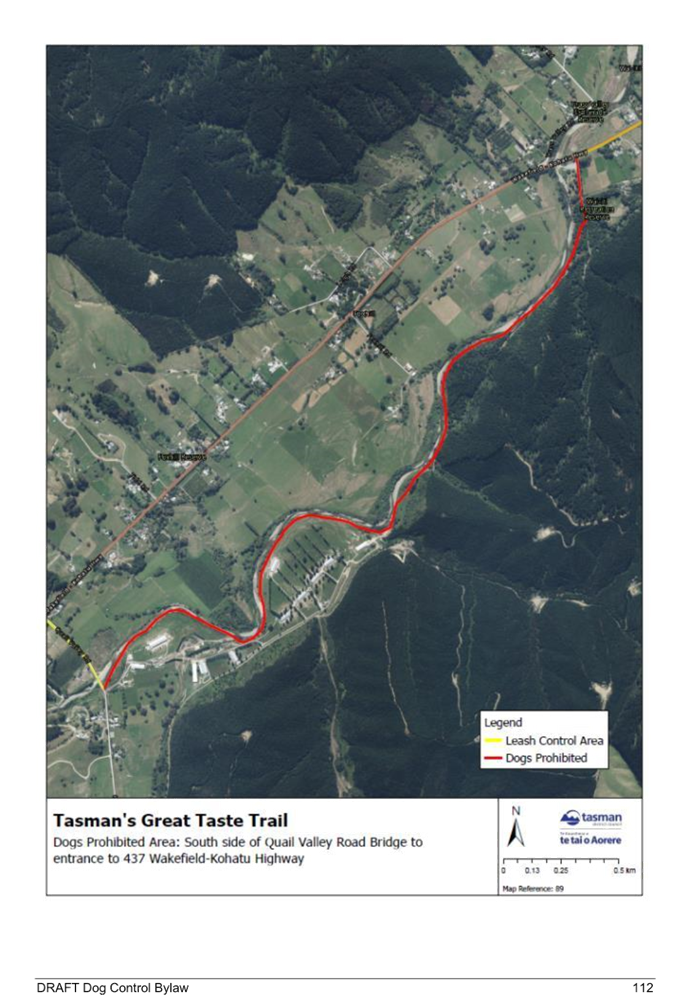
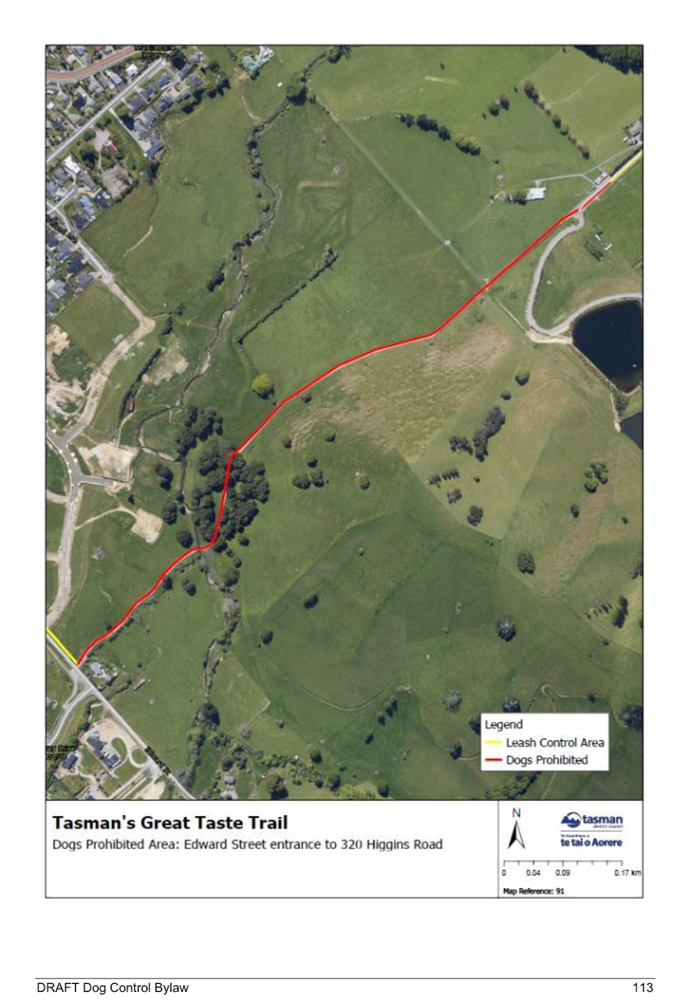
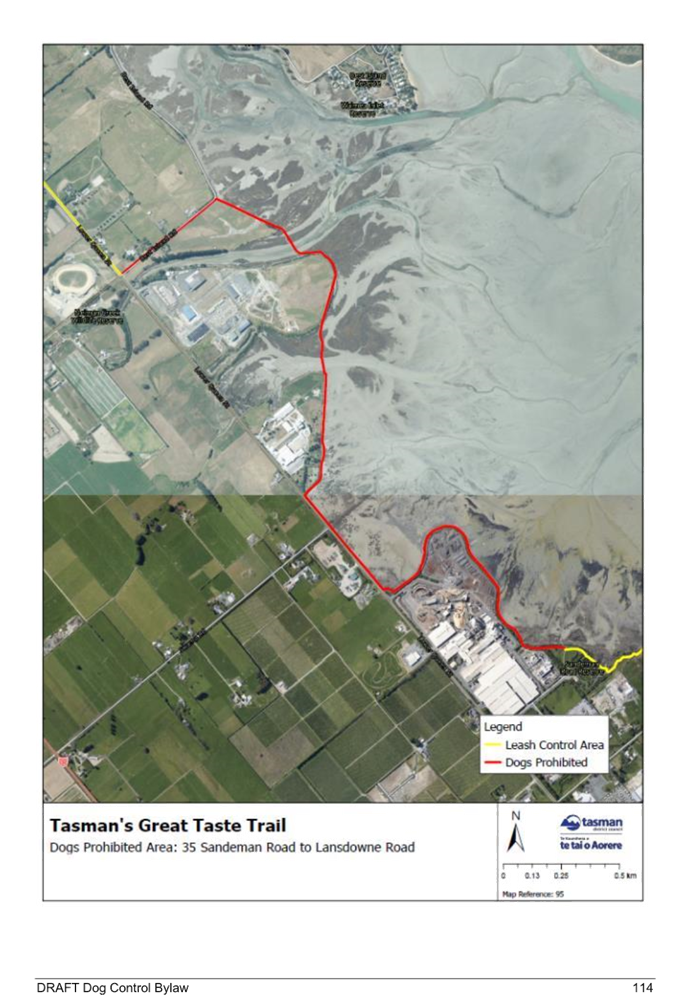
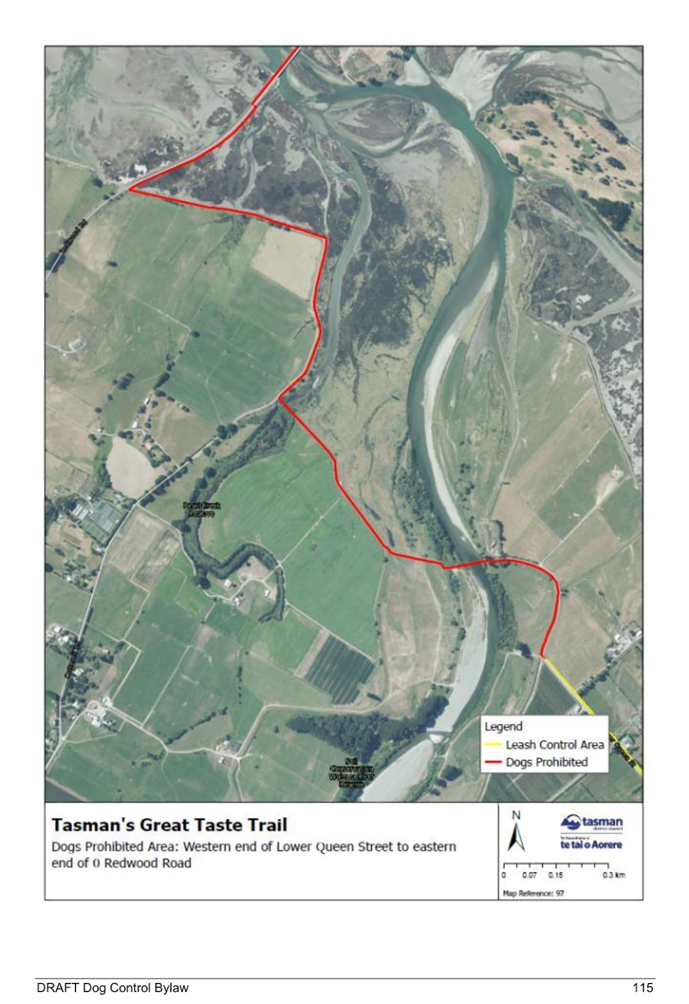
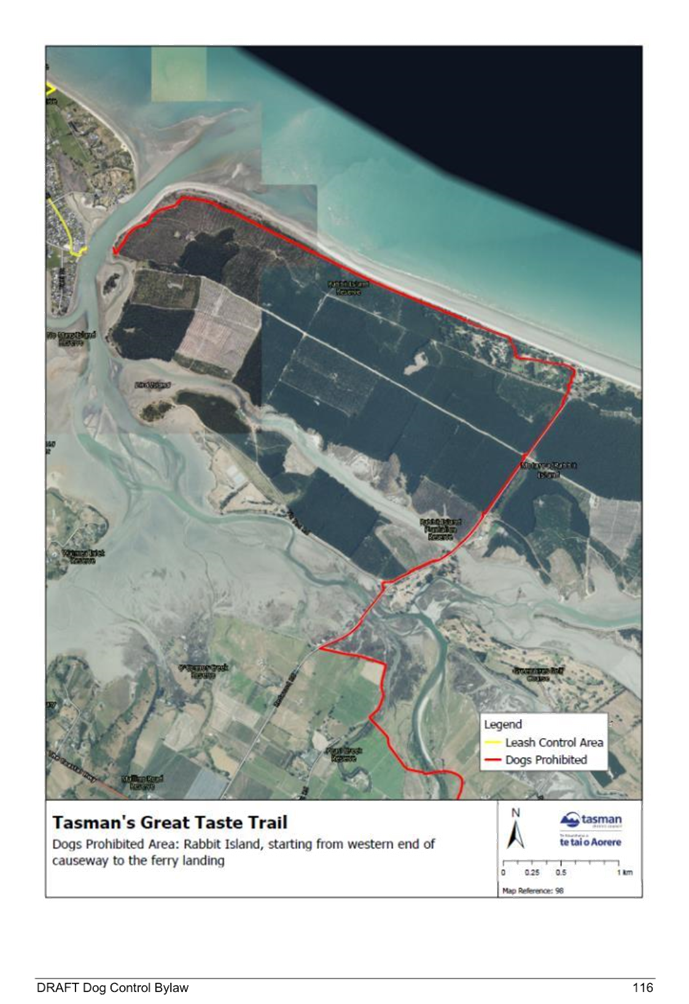
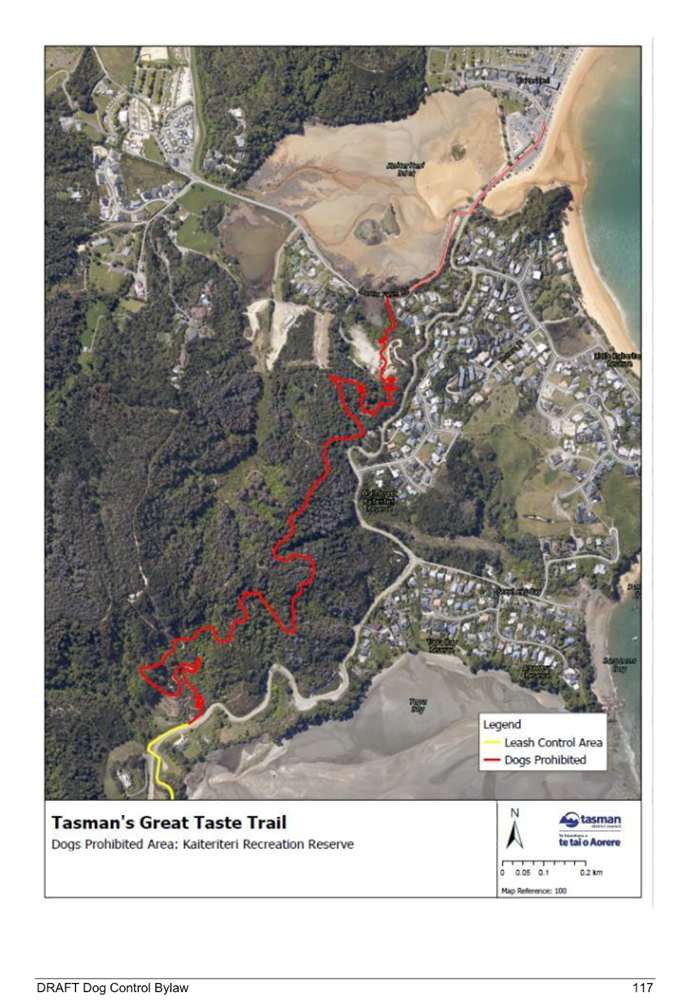
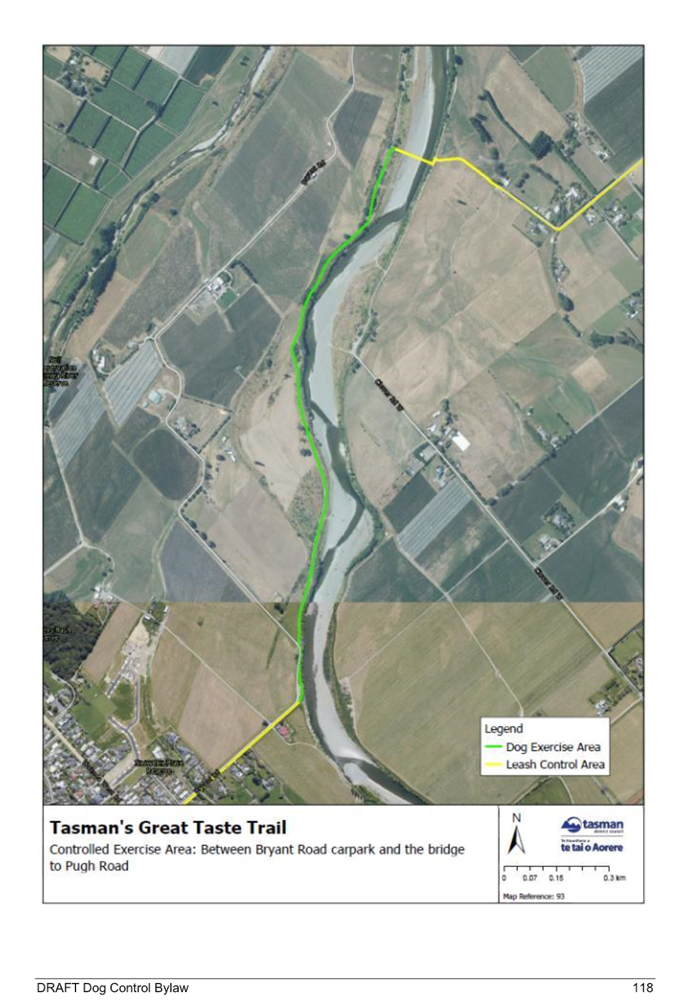
Tasman District Council Agenda – 01 August 2024
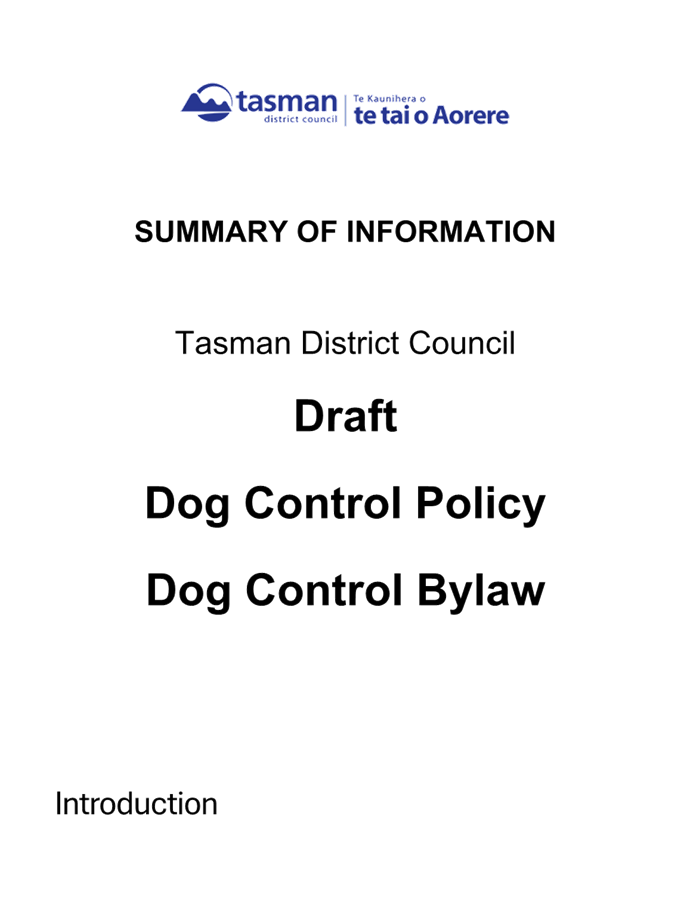
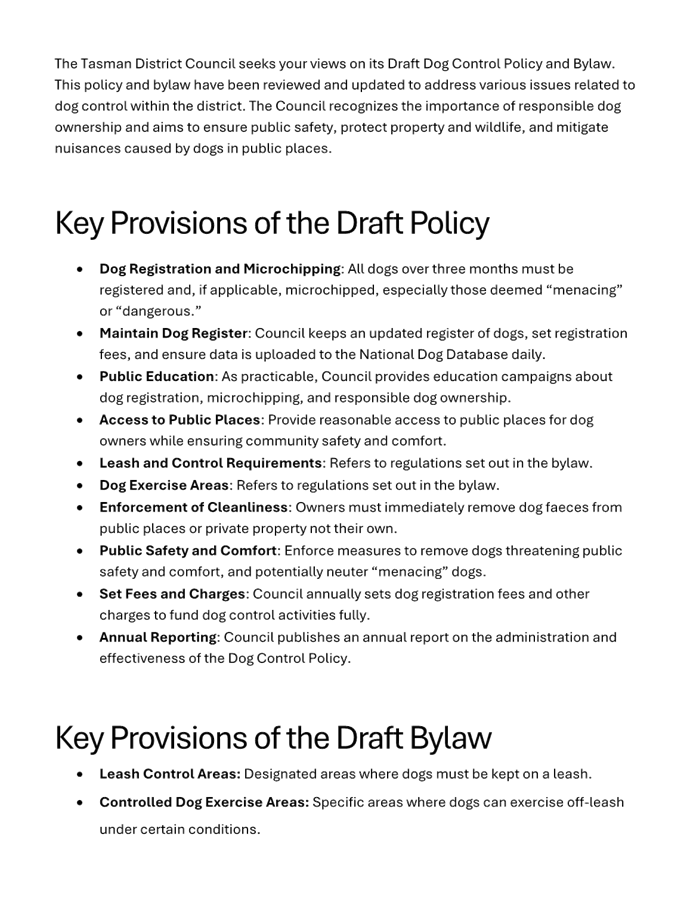
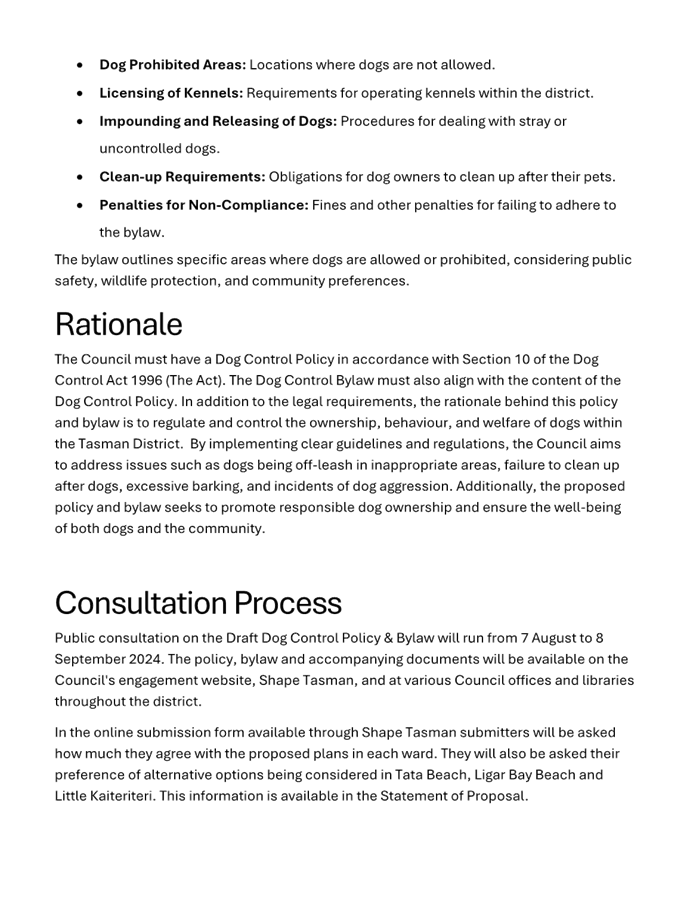
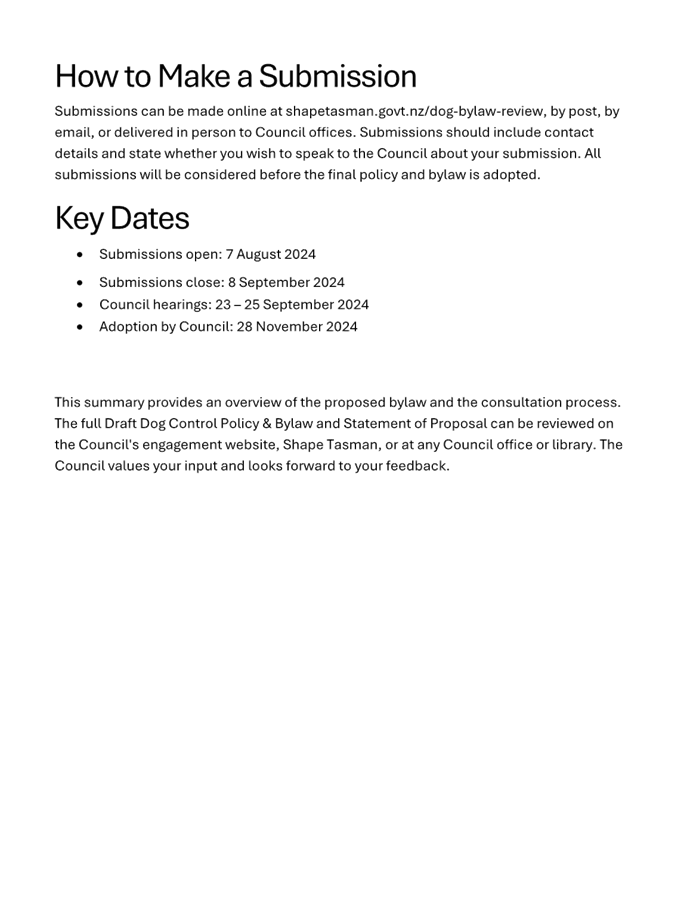
Tasman District Council Agenda – 01 August 2024
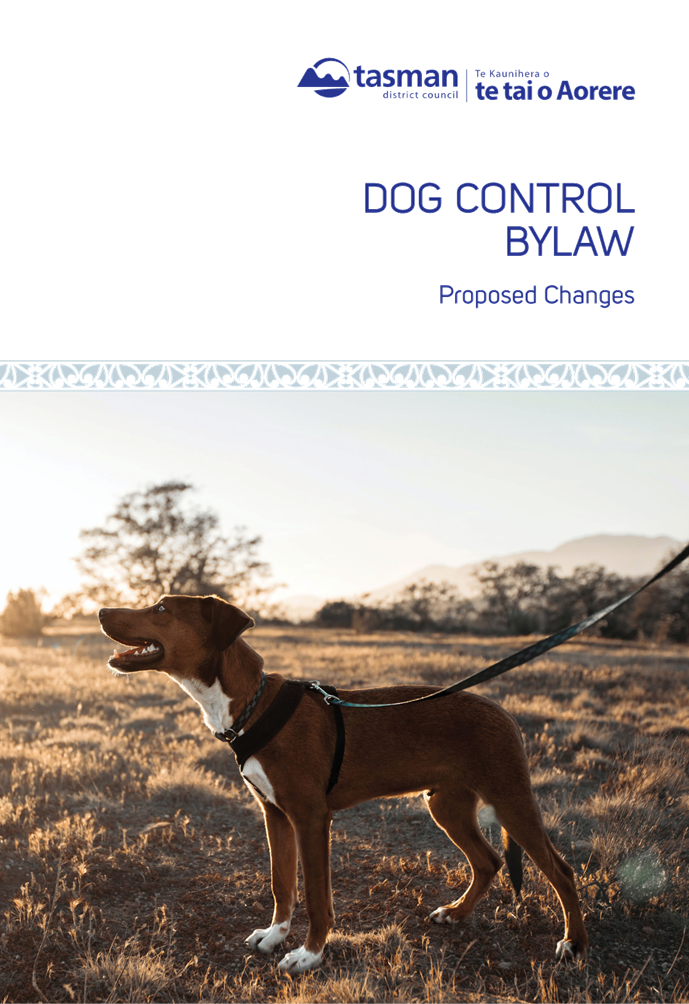
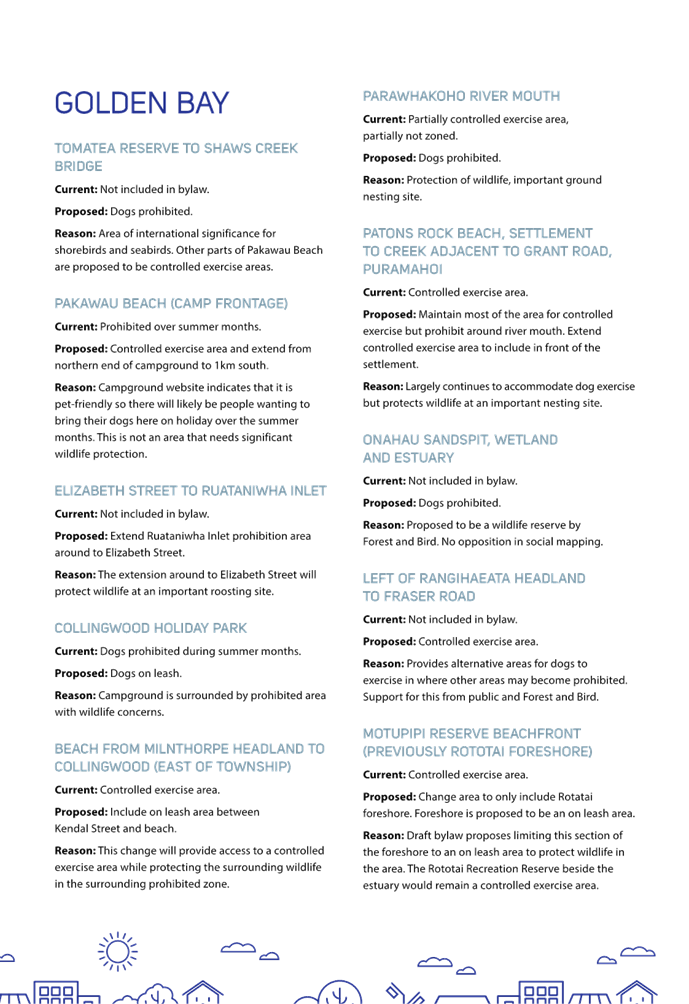
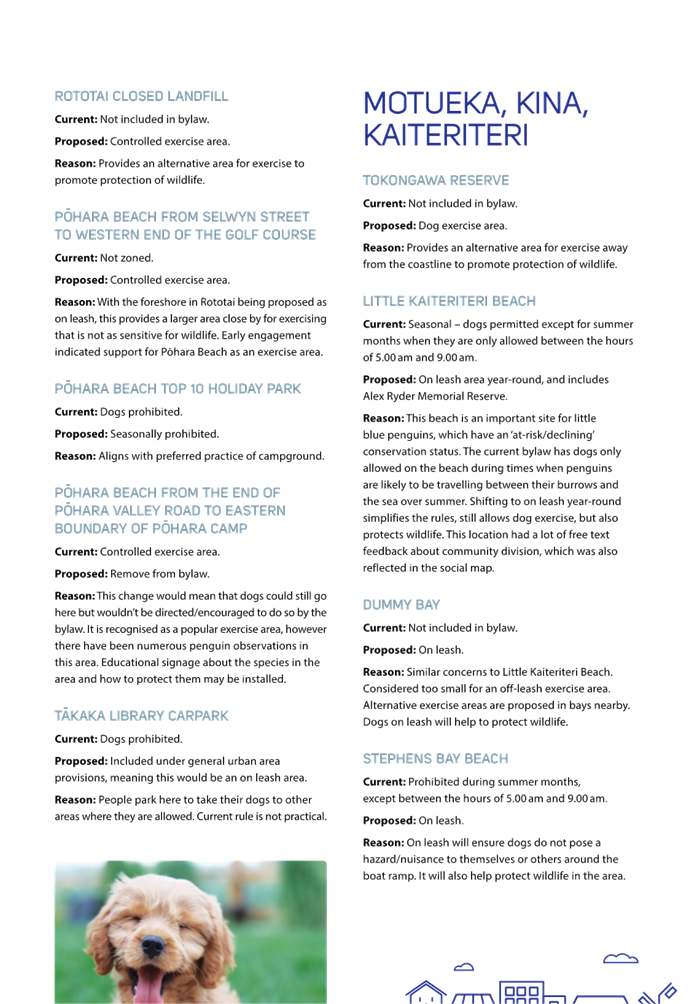
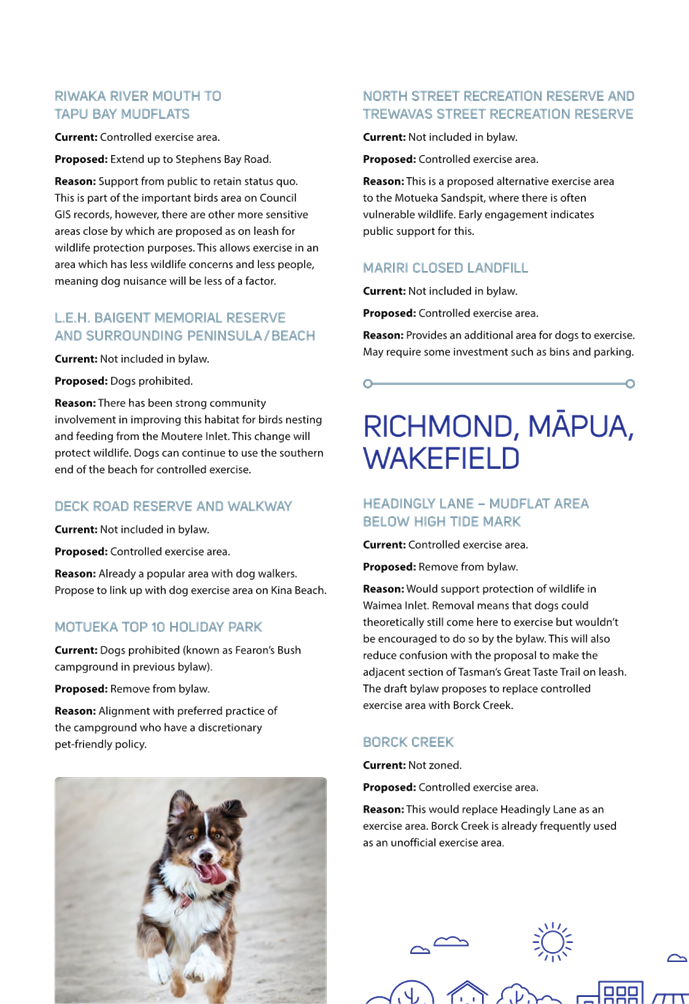
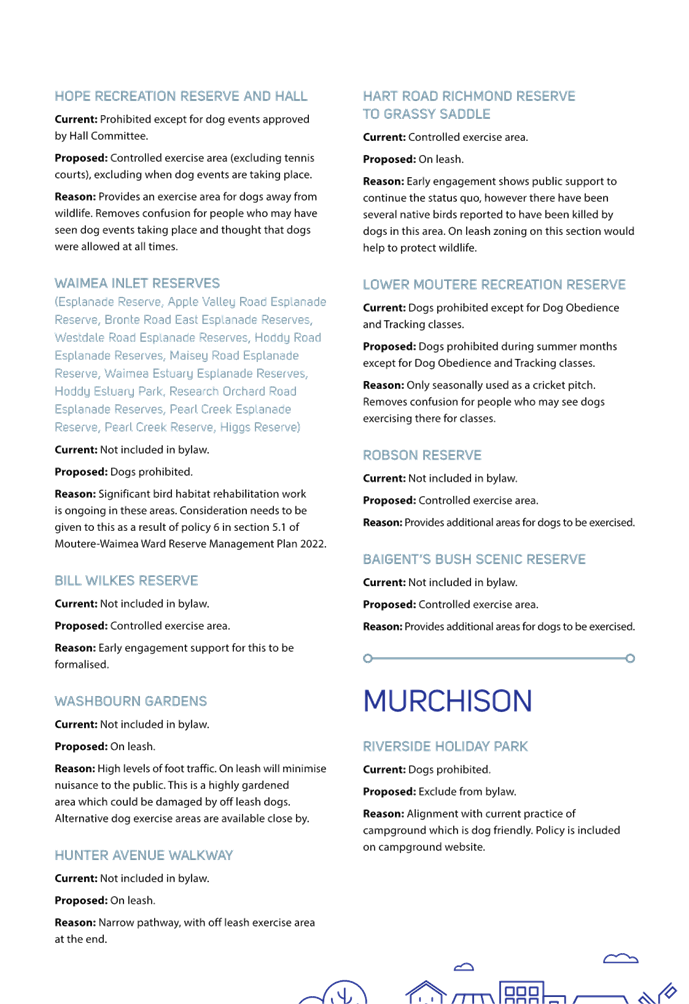
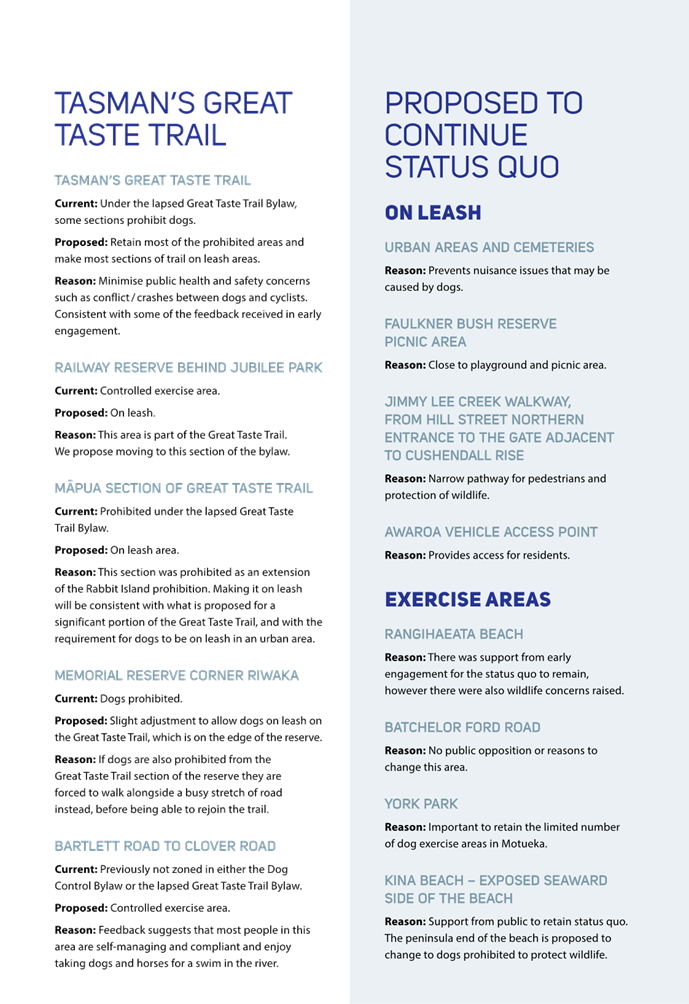
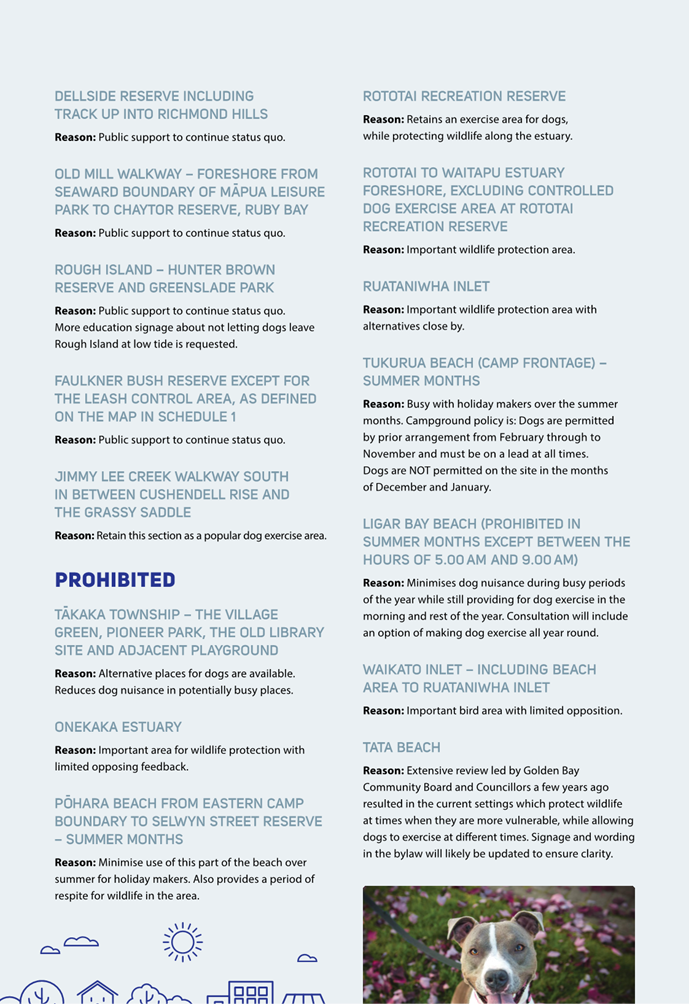
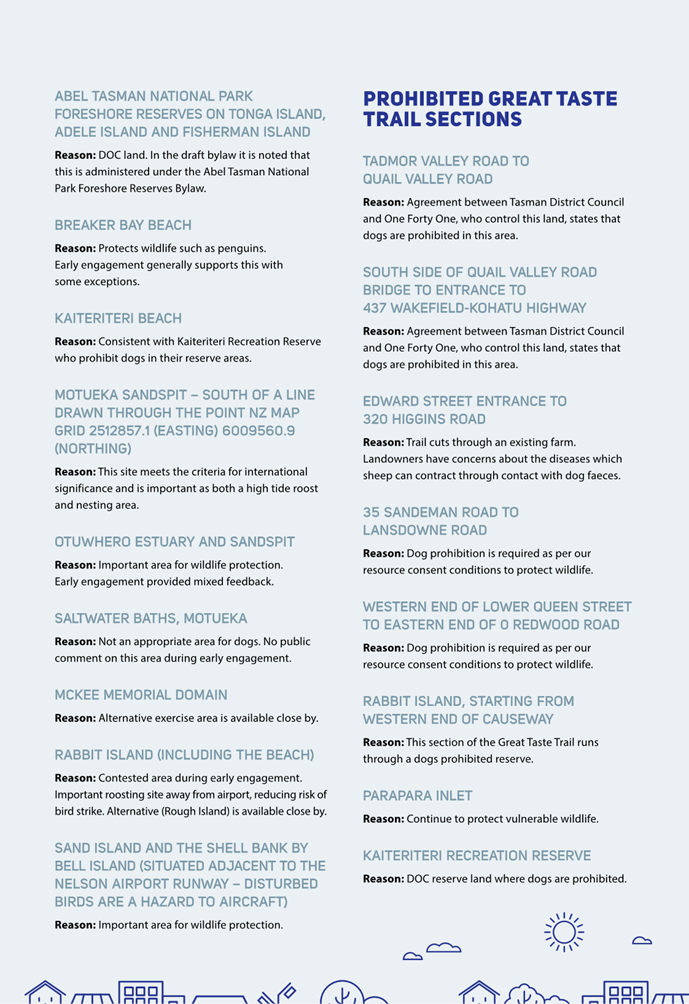
Tasman District Council Agenda – 01 August 2024
7.7 Mayors for Peace Internship
Information Only - No Decision
Required
|
Report
To:
|
Tasman
District Council
|
|
Meeting
Date:
|
1
August 2024
|
|
Report
Author:
|
Yulia
Panfylova, Community Partnerships Coordinator
|
|
Report
Authorisers:
|
John
Ridd, Group Manager - Service and Strategy
|
|
Report
Number:
|
RCN24-08-10
|
1. Summary
/ Te Tuhinga Whakarāpoto
1.1 Mayors for Peace, established in 1991,
aims to achieve global peace and address pressing issues like nuclear
disarmament, poverty, and human rights abuses. Tasman District Council joined
the Mayors for Peace organisation in 2021.
1.2 During a fully funded two-week
internship I participated in seminars, visited memorials, and presented on
Tasman peace initiatives. The internship highlighted Hiroshima's recovery from
the atomic bombing and promoted initiatives like the "Peaceful Towns Art
Competition" and the "Survivor Trees" programme. Future plans
include expanding peace education and hosting events featuring Hibakusha, with
continued support from the Hiroshima Peace Culture Foundation and local
councils.
2. Recommendation/s
/ Ngā Tūtohunga
That the Tasman District Council
1 receives
the Mayors for Peace Internship report,
3.1 Mayors for Peace was formally
established in 1991 and has grown into a network of 8403 cities in 166
countries.
3.2 The purpose of the Network is to
“contribute to the attainment of lasting world peace by arousing concern
among citizens of the world for the total abolition of nuclear weapons through
close solidarity among member cities as well as by striving to solve vital
problems for the human race such as starvation and poverty, the plight of
refugees, human rights abuses, and environmental degradation.”
3.3 Tasman District
Council joined the Network in 2021. Since then, we have been actively
participating in one of their initiatives called “Peaceful Towns Art
Competition.”
4. Purpose of the 2-week Internship
4.1 The Mayors for Peace Network is
coordinated by the Hiroshima Peace Culture Foundation (HPCF). Every year HPCF
invites two representatives from their member cities to undertake an
internship. Its primary purpose is to educate interns about the atomic bombings
and encourage the implementation of peace initiatives in their home cities.
4.2 The programme is fully funded by HPCF.
4.3 My internship started on 18 June and
finished on 3 July 2024. I worked in the HPCF office with another intern from
Bosnia. We attended seminars and presentations, visited museums, schools and
memorials, and had several meetings with officials.
4.4 I delivered
three presentations about Tasman District Council and our peace initiatives.
Two of the presentations were aimed at the office staff of HPCF and one
presentation at high school children. My presentations included (among other
things) a video from Mayor Tim King and a video of the Council’s Waiata
Group.
5. Content of the internship
5.1 The programme was packed with visits and
meetings. During the first week we studied the devastating impacts of the
nuclear bomb, while during the second week we learned about Hiroshima’s
resurrection and peace projects.
5.2 Below are some key facts about the
tragedy.
The first nuclear
bomb was dropped on Hiroshima on April 5, 1945, at 8:15 am. The bomb exploded
600 metres above the ground over the hospital – this location is referred
to as the hypocentre.
Nearly all people
within the radius of 1.2 km died immediately. By the end of 1945 approximately
140,000 people had died.
5.3 What caused such devastation?
· Heat Rays. The surface temperature was
raised to 3,000-4,000 degrees Celsius. To compare, the temperature that is
required to melt steel is 1,200 Celsius.
· Intense Firestorm. The heat ignited
fires within 2 kilometres of the hypocentre. Countless people trapped under
collapsed buildings were burnt alive.
· Blast Wind generated by high pressure of
several hundred thousand atmospheres destroyed all wooden structures and
buildings within 2 kilometres of the hypocentre.
· Radiation. People within 1 kilometre
received a lethal dose of radiation. Those who survived the initial dose later
died from cancer. Those who came to Hiroshima to help several days later, were
exposed to radiation and many of them died as a result.
5.4 Why was the a-bomb dropped?
· To test the weapon.
· To reduce the number of American victims of the war.
· To get ahead of Russia and show the US supremacy.
· To justify the funding spend on development of the a-bomb.
5.5 Just several days later Hiroshima
started to rebuild. The city train was launched three days after the bombing to
transport injured. Survivors saw the train as a symbol of hope and continuity
amid the devastation.
5.6 Unfortunately, a month later a typhoon
hit, followed by flooding, bringing more destruction.
Survivors – Hibakusha
5.7 Despite the devastating impact of the
a-bomb, some people survived. In Japan, these people are known as Hibakusha.
Most of the Hibakusha are now in their 80s. Some of them don’t like
sharing their experience even with their relatives, because of how painful it
is. But others dedicated their lives to peace promotion.
5.8 During the internship, I met with
Hibakusha Keiko Ogura. She was eight years old when the bomb was dropped. Keiko
is one of few Hibakusha who speaks English and travels the world to promote
peace. She met with the grandson of Jacob Beser, a crew member on the planes
that dropped both a-bombs and with the grandson of Oppenheimer.
5.9 Keiko didn’t hold the anger
towards those people, she only wanted them to understand the consequences of
the atomic bombing.
5.10 The number of hibakusha is rapidly declining. To
make sure that their stories survive through time, the Family Member Legacy
Successor programme was established. This programme supports the members of the
hibakusha’s family to inherit and convey their experiences.
Survivor Trees
5.11 There are 159 trees that survived the bombing in
the 2 kilometre radius from the hypocentre. When those trees grew new leaves,
they gave Hiroshima people hope and the courage to live. The Culture Peace
Foundation collects the seeds of a-bomb trees and distributes them to member
cities, with the purpose of raising peace consciousness.
5.12 Among the survivors are Ginkgo, Japanese Hackberry,
Persimmon, Camphor and even a Eucalyptus.
Meetings with officials
5.13 I had meetings with the Mayor of Hiroshima Matsui,
Hiroshima Peace Culture Foundation’s Chairperson Mr Kagawa and Deputy
Chair Mr Tani.
5.14 All meetings were very formal. The meeting with the
Mayor required wearing a suit despite the heat outside and inside the office. I
presented Mayor Matsui with a pounamu as a gift from Mayor Tim King. The
pounamu was blessed by Matua Harvey Ruru. Mr Matsui accepted the gift with
appreciation.
5.15 During the meetings all officials encouraged us to
get actively involved in the existing peace initiatives such as Peaceful Towns
Art Competition, Survivor Trees, to hold Mayors for Peace Atomic bomb poster
Exhibition and to participate in peace Education Webinars.
6. Promoting Peace initiatives in Tasman
District
6.1 We will continue running the annual
Peaceful Towns Art Competition. This year we are promoting it not only to
schools but to church groups, scouts and other youth groups. Art workshops that
we organise prior to the competition have been popular. They support kids in
learning about peace and developing art ideas.
6.2 The only issue we face is that most of
the contestants are girls. This has also been noticed by HPCF in other cities.
During the internship we brainstormed several ideas that would attract boys,
e.g. Ci-Fi flash fiction completion. This year's competition has already
started but we could try implementing new ideas next year.
6.3 We are preparing an event for the
International Day of Peace around 21 September 2024. HPCF is supporting
us in organising one of the Hibakusha to share their experience with the Tasman
community. The event will happen in the library with Hibakusha zooming in
on-line.
6.4 I will be working with our Mayors for
Peace executive city, Wellington, to bring some seeds of the survivor trees,
however due to strict biosecurity rules this may take some time.
6.5 Dedicated to the
80th anniversary of World War II next year, we are considering organising a
Mayors for Peace Atomic Bomb Poster Exhibition in the libraries and the
Council’s main office foyer.
7.1 People who work in the Mayors for Peace
division became not only our colleagues but also our friends. They spent
lunchtimes with us, educating us about Japanese traditions and culture. They
also supported us after work and on weekends showing us around and taking us to
interesting places. I would have been lost without their support.
7.2 I would like to
thank Tasman District Council for letting me participate in this project and
the Mayor and Councillors who selected me to represent the Tasman District.
7.3 And a special
thank you to Robyn Scherer for supporting me on this journey and believing in
me.
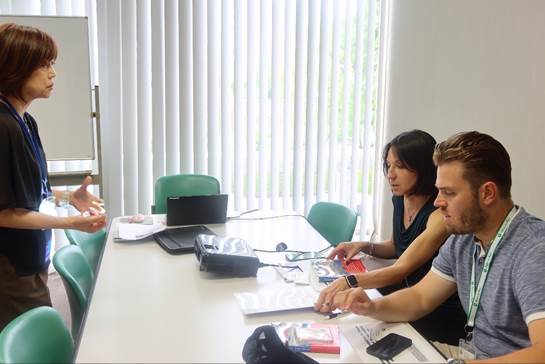
Figure 1 In the meeting room
listening to the presentation about the Hiroshima Peace Initiatives
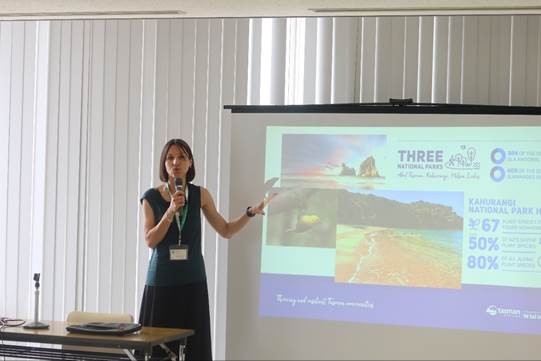
Figure 2 Giving presentation
about Tasman District Council and our Peace initiatives
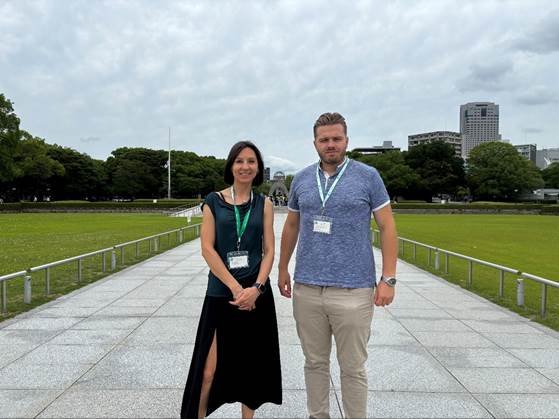
Figure 3 With Harun Pasic (the
intern from Bosnia) in front of the Peace Memorial Park

Figure 4 Presenting the
pounamu to Mayor Matsui
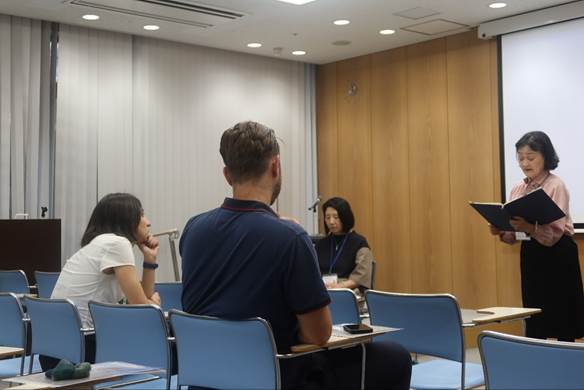
Figure 5 Listening to the
Memoir reading by Peace volunteers
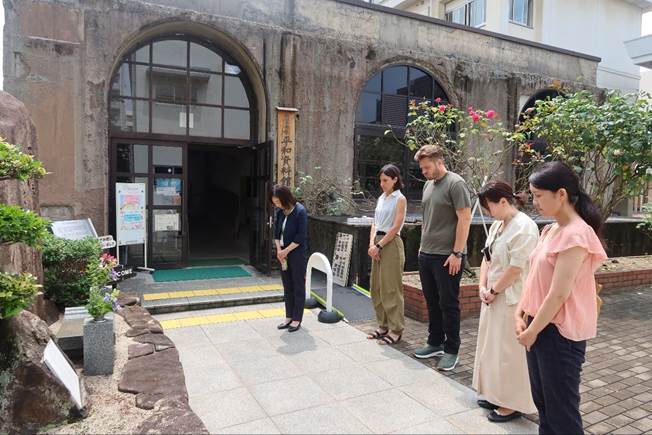
Figure 6 In front of the
school building that survived the bombing
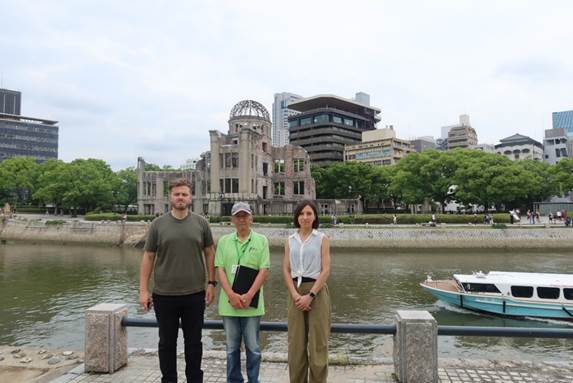
Figure
7 The iconic A-Bomb dome during the Peace Memorial Park tour
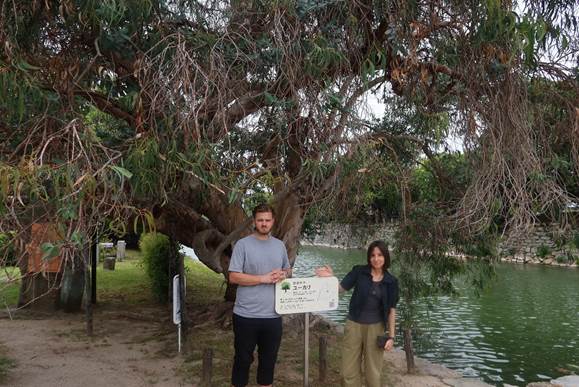
Figure 8 A-bomb Eucalyptus,
700 meters from the hypocenter

Figure 9 After the Funairi
High School presentation
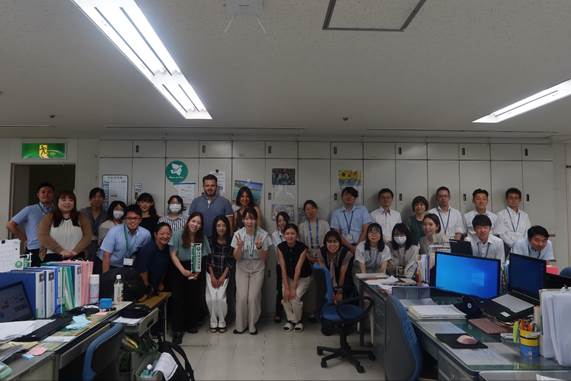
Figure 10 In the Hiroshima
Peace Culture Foundation Office
Nil
Tasman District Council Agenda – 01 August 2024
7.8 Machinery Resolutions Report
|
Report
To:
|
Tasman
District Council
|
|
Meeting
Date:
|
1
August 2024
|
|
Report
Author:
|
Alexis
Brough, Executive Support Officer, Chief Executive's Office
|
|
Report
Authorisers:
|
|
|
Report
Number:
|
RCN24-08-11
|
1. Summary
/ Te Tuhinga Whakarāpoto
1.1 The
execution of the following documents under Council Seal require confirmation by
Council.
2. Recommendation/s
/ Ngā Tūtohunga
That the Tasman District Council
1. receives the Machinery
Resolutions Report RCN24-08-11; and
2. confirmsreceives
the Machinery Resolutions report, RCN24-08-11 and that the execution of the
following documents under the Seal of Council be confirmed:
Deed of
Lease, Mickey Rat Enterprises Limited – This Waimea River Berms Grazing
Lease has been held by Mark and Colleen Elvines since at least 2015. The
Elvines have been reasonably good tenants and have consistently paid their
annual rent in full. This lease is for just one year until Mark can get some
weeds fully under control – with an expiry of 30 April 2025. The annual
rent is $2900 plus GST. Both responsible asset managers have been apprised of
this lease renewal (Rob Smith, Acting Group Manager – Information,
Science and Technology and also Richard Hilton – Team Leader, Reserves
Operations) and agree to the renewal.
Tasman District Council Agenda – 01 August 2024
7.9 Chief Executive's Update
Information Only - No Decision
Required
|
Report
To:
|
Tasman
District Council
|
|
Meeting
Date:
|
1 August
2024
|
|
Report
Author:
|
Leonie
Rae, Chief Executive Officer
|
|
Report
Authorisers:
|
Leonie
Rae, Chief Executive Officer
|
|
Report
Number:
|
RCN24-08-12
|
1. Summary
/ Te Tuhinga Whakarāpoto
1.1 The purpose of
this report is to provide an update on some key activity since the Chief
Executive’s last report on 20 June 2024.
2. Recommendation/s
/ Ngā Tūtohunga
That the Tasman District Council
1. receives
the Chief Executive's Update report RCN24-08-12;
3.1 The biannual staff values awards took
place on 4 July 2024, marking one of the pivotal events we organise
bi-annually. We acknowledged over 70 nominees, with the Executive Leadership
Team and the Mayor revealing the awardees and the runners up. I spoke on the
significance of such accolades in fostering an outstanding work environment
and, considering the high quality of the nominations, how hard it can be for
the leadership team to select the winners. It is inspiring to learn of the
exceptional work, and goodwill that may often go unnoticed.
4. Farewell
to Mark Wheeler
4.1 I attended the poroaki for Mark Wheeler
on 25 July 2024 at the ASB Theatre in Blenheim. Mark has been the Chief
Executive at Marlborough District Council since 2015. His experience and
personal qualities have been instrumental in being a very effective and
respected Chief Executive. He has been a great supporter of Tasman District
Council.
4.2 Mark will retire to spend more time with
his family. I wish him a long and enjoyable retirement.
5.1 The LTP was adopted on 27 June 2024. I
want to take this opportunity to thank the staff and elected members for the
time they invested into the process.
5.2 As we near the end of the first month of
the 2024- 2034 LTP, there is a focus on managing a tight budget. The finance
team are working very closely with budget holders to provide reporting and
insights.
5.3 The organisation will continue with its
operations and achieve the service provision outlined in the Long-Term Plan
(LTP), committing to our purpose of providing "public value."
6. Legal
and Democracy Services Update
LGOIMA Statistics
6.1 I have asked the
Legal and Democracy Services team to add to our website the number of LGOIMAs
that the Council has received each month.
6.2 This can be found here - LGOIMAs and information of public interest | Tasman District Council.
6.3 As at 22 July 2024 the Council
has received 432 LGOIMA requests. This is significantly more than the 512
received in total for 2023 and 295 in total for 2022.
Case update Reith & Ealing –
Sentencing Result
6.4 On
16 July 2024 Hamish Reith and Ealing Farms Ltd were sentenced for clearing just
under 10 hectares of indigenous forest at two locations in Maruia Valley
resulting in one of the highest fines ever imposed for this type of
offending. Judge Dwyer said that it was a “serious failure” of
the defendants to fail to check the TRMP provisions and that their
“culpability was high accordingly”.
6.5 The
Court imposed significant fines on the defendants – after deductions were
agreed (25% for early guilty plea, 5% for good character) the total fines
imposed was $98,000. In addition, Council’s costs for its ecologist
report from (approximately $1535) will also be imposed.
6.6 The
Court made a direction under s 342 of the Resource Management Act that 90% of
the fine is to be paid to Council.
6.7 There
is also an enforcement order which protects further clearance and sets
requirements around fencing and ecological reports and improvements.
7. Te Kahui Hononga Team Update
Motueka Wastewater Treatment Plant
7.1 On 10 July 2024
we saw the re-start for the Motueka Wastewater Treatment Plant Working Group,
the importance of this kaupapa was acknowledged with a pōwhiri at Te Āwhina Marae.
7.2 The Working
Group are aiming to meet bi-monthly and will be starting by establishing and
confirming the membership and begin planning for this major infrastructure
project, with a strong partnership in place.
Representation Review
7.3 We continue to wait to hear responses
from our iwi partners on what is their preferred pathway with the proposed
legislative changes from central government regarding Māori wards –
to rescind or continue with the binding poll for a Māori ward for the 2028
and 2031 elections.
7.4 A National Iwi Chairs forum is being
held on 1-2 August 2024 so our Kaihautū will be able to provide updates in
relation to outcomes or decisions from this space.
Regional Intersectoral Forum (RIF)
7.5 Work has begun at the Regional
Intersectoral Forum on a collective training framework, starting with pulling
together existing frameworks and training offerings across councils and
government agencies.
7.6 A review of existing resources will take
place before trying to create a bespoke training framework and course content
for use across Te Tauihu to build internal capabilities within councils and
government.
8. Human Resource Statistics and Recruitment
8.1 The annual human
resources statistics for the year ending June 2024 are shown in Attachment
9.1. The headcount is 437 (Full Time Equivalent 407) and this has increased
from last year’s head count of 426 (Full Time Equivalent 405). A list of
the new positions is included in the attachment.
8.2 The current
filled FTE roles as of 1 July is 386, against a budget of 421, which means we
have a variance of 35 FTE. We are implementing a recruitment plan to ensure we
stay within the end of year salary budget.
8.3 Our annual staff
turnover was 8.3% and the national average turnover (sourced from Lawson
Williams NZ Turnover Survey released April 2024) for 2023 was 21.4%.
8.4 Recruitment continues to remain steady,
and we are currently at various stages of recruiting for 12 vacancies which are
a mix of existing and new positions. Since my last update over 30 appointments
have been made with two of these being internal promotions which then resulted
in another vacancy needing to be filled.
|
1.⇩
|
June 2024
Human Resources Statistics Appendix
|
435
|
Tasman District Council Agenda – 01 August 2024
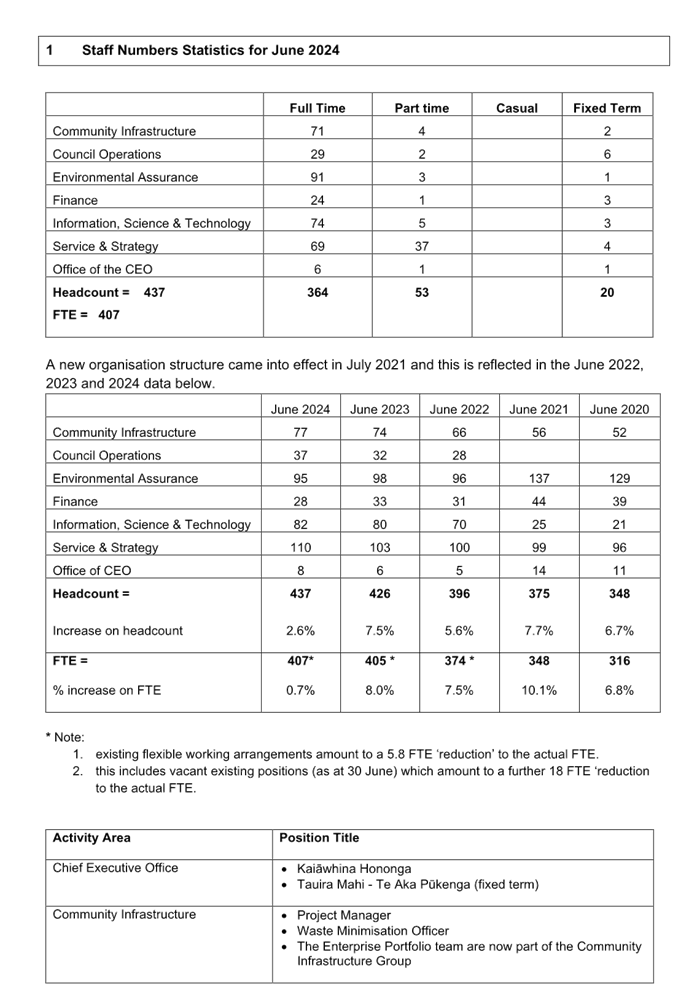
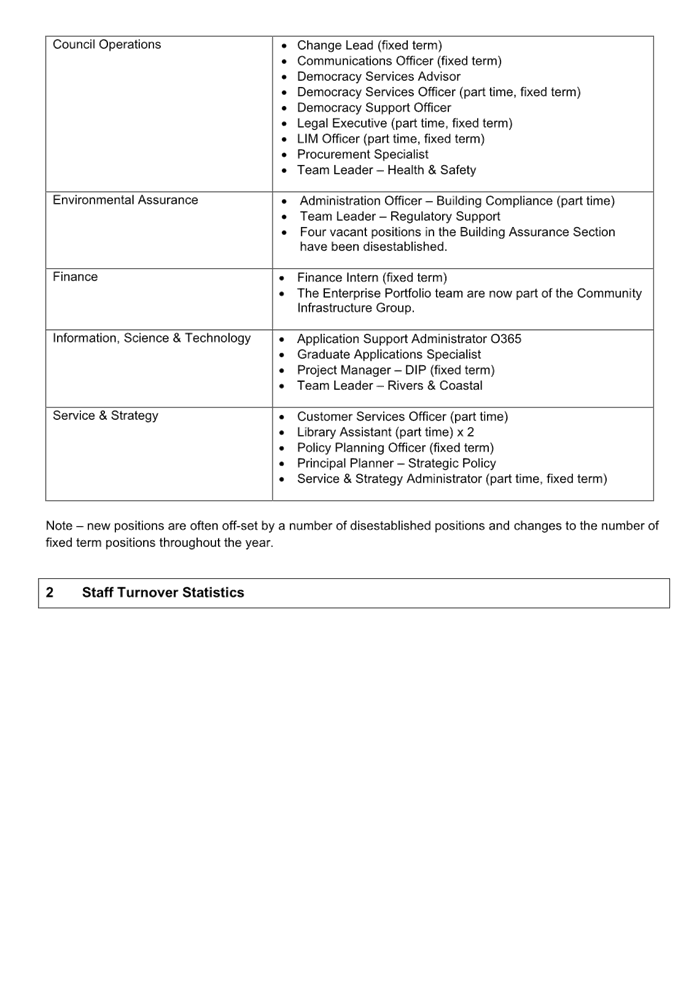
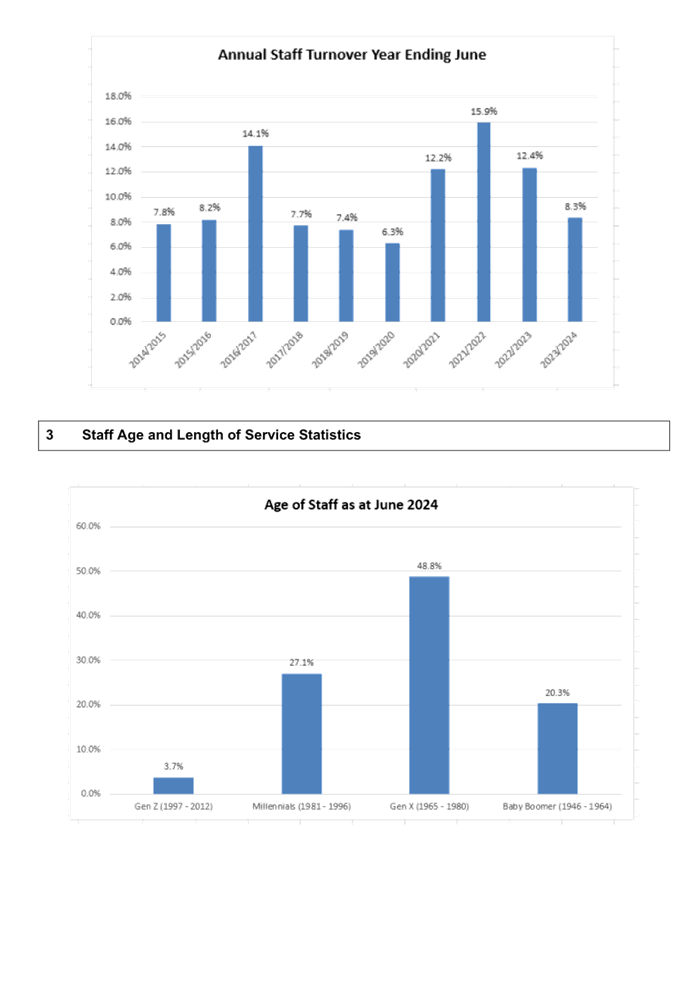
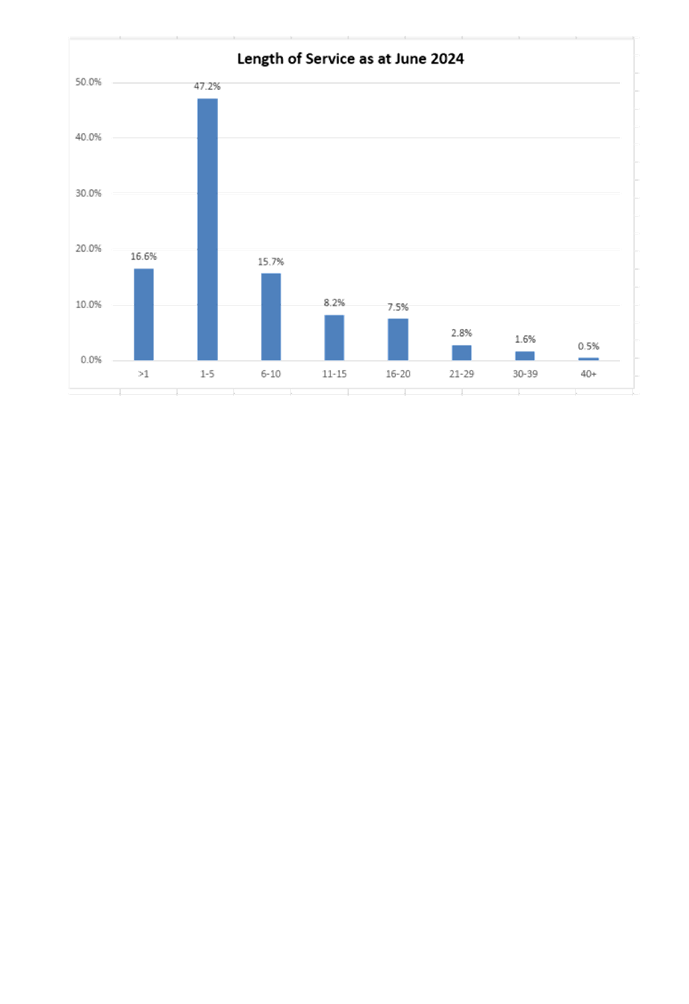
Tasman District Council Agenda – 01 August 2024
7.10 Mayoral Update
Information Only - No Decision
Required
|
Report
To:
|
Tasman
District Council
|
|
Meeting
Date:
|
1
August 2024
|
|
Report
Author:
|
Tim
King, Mayor
|
|
Report
Number:
|
RCN24-08-13
|
1. Summary
/ Te Tuhinga Whakarāpoto
1.1 During the past six weeks, the Council has made several submissions
to central government. As well as a written submission, we have presented to
the various committees Select Committees focusing on:
1.1.1 Fast
Track Approvals Bill – 14 June 2024
1.1.2 Water
Services Bill – 24 June 2024. I presented on behalf of the Council and
on behalf of Te Uru Kahika
1.1.3 Coastal
permits for Marine Farms – 26 June 2024
1.1.4 Climate
Adaptation – 16 July 2024
1.1.5 Resource
Management (Freshwater and Other Matters) Amendment Bill –
17 July 2024
1.2 Note, these submissions will be
presented to the Council for retrospective approval at either the Strategy and
Policy Committee meeting on 15 August 2024 or the Environment and Regulatory
Committee meeting on 29 August 2024.
1.3 Thanks
to the staff who provided very thorough speaking notes for these oral
submissions.
1.4 The
disposal of clean fill has become a substantial issue for our local contractors
with the cost of carting and disposal of the material is now exorbitant. Nelson
Mayor Hon Nick Smith and I met with a delegation from the local branch of the
Contractors Federation on 25 June 2024 to discuss the issue. Since then,
Council staff have been working on some options to find disposal sites closer
to Nelson and Richmond. The primary driver of this issue is the National
Environmental Standard for assessing and managing contaminants in soil to
protect human health along with new regulations under the Waste Minimisation
Act. Mayor Nick and I will continue to work with the industry to find a
solution, but it will also require the contracting industry to also do their
bit.
1.5 The
Staff Values Awards were held on 4 July 2024, an opportunity for those staff
who go above and beyond to be recognised by their peers. I always enjoy these
award ceremonies, a good chance for me to acknowledge staff on behalf of our
elected members.
1.6 Congratulations
to Joseph Thomas and Marty Doyle who both celebrated 35 years working at Tasman
District Council on 17 June 2024. A mighty effort by two great guys who have
contributed so much to our community.
1.7 My
thanks to Councillor Mackenzie who assisted our Chief Executive Officer, Leonie
Rae and Audit and Risk Committee member, Graeme McGlinn to consider applicants
for the external member vacancy on the Council’s Audit and Risk Committee
following the retirement of Graham Naylor.
1.8 And
finally, a formal thanks on behalf of the Council to Graham Naylor who has been
an external member of the Audit and Risk Committee since 2015, taking over the
Chair role in 2021. Graham has been closely involved in our audit and risk
functions, from the committee’s fledgling days where it basically
considered our annual reports, to a stage where the Council has matured along
its risk management journey.
2. Recommendation/s
/ Ngā Tūtohunga
That the Tasman District Council
1. receives
the Mayoral Update report RCN24-08-13, .
3.1 The Te Tauihu Mayors and Chairs hui was
held in Blenheim on 19 June 2024.
3.2 The Chief Executive and I met with Tony
Gray from the Nelson Tasman Hospice on 20 June 2024 where Tony handed over the
trophy for “top fundraiser” to the Council for our efforts at the
Heave for Hospice.
3.3 The monthly Kaiteriteri Recreation
Reserve Board meeting was held on 2 July 2024.
3.4 Yvonne Wang, our new Audit New Zealand
representative met with the Chief Executive and I on 4 July 2024.
3.5 The two-monthly catch-up meeting with
our Kaumatua, Harvey Ruru and Jane du Feu and our Kaihautū, Renee Thomas
was held on 4 July 2024.
3.6 On 4 July 2024 the final sculpture as
part of the Ruby Bay Coastal Initiative was handed over at Seaton Valley Road
(see photo below).
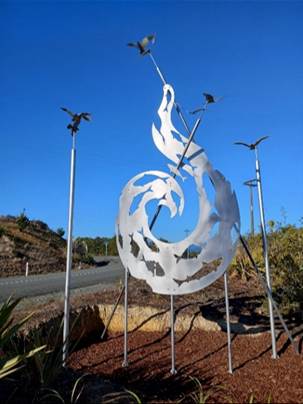
3.7 The Aspire conference was held on 5 July
2024 at the Annesbrook Events Centre.
3.8 Local Government New Zealand (LGNZ)
staff met with me on 8 July 2024 to discuss options for ensuring that the LGNZ
Councillor induction programmes meet the needs of newly elected members.
3.9 A meeting was held with Scott Palmer,
the new regional manager for Corrections New Zealand on 16 July 2024.
3.10 A catch-up meeting was held with Craig Churchill,
Ministry of Social Development Regional Commissioner on 18 July 2024.
3.11 The LGNZ Transport Forum met on 22 July 2024.
3.12 A meeting was held on 23 July 2024 with local
representatives of the Vintage Car Club who are planning for an international
festival of “Historic Motoring” in 2025.
3.13 LGNZ held a regional sector meeting via Teams on 24
July 2024.
Nil
Tasman District Council Agenda – 01 August 2024
88 CONFIDENTIAL SESSION
8.18.1 Procedural
motion to exclude the public
The following
motion is submitted for consideration:
That the
public be excluded from the following part(s) of the proceedings of this
meeting. The general subject of each matter to be considered while the public
is excluded, the reason for passing this resolution in relation to each matter,
and the specific grounds under section 48(1) of the Local Government Official
Information and Meetings Act 1987 for the passing of this resolution follows.
This resolution is made in reliance on section 48(1)(a) of the Local
Government Official Information and Meetings Act 1987 and the particular
interest or interests protected by section 6 or section 7 of that Act which
would be prejudiced by the holding of the whole or relevant part of the
proceedings of the meeting in public, as follows:
8.2 Update on the Council's response to the
recent global IT outage involving CrowdStrike systems
|
Reason for passing this resolution in
relation to each matter
|
Particular interest(s) protected (where
applicable)
|
Ground(s) under section 48(1) for the
passing of this resolution
|
|
The public conduct of the part of the
meeting would be likely to result in the disclosure of information for which
good reason for withholding exists under section 6 and 7.
|
s6(b) - The making available of the
information would be likely to endanger the safety of a person.
s7(2)(h) - The withholding of the
information is necessary to enable the local authority to carry out, without
prejudice or disadvantage, commercial activities.
|
s48(1)(a)
The public conduct of the part of the
meeting would be likely to result in the disclosure of information for which
good reason for withholding exists under section 6 and 7.
|
8.3 Appointment and Reappointment of Independent
Members to the Audit and Risk Committee
|
Reason for passing this resolution in
relation to each matter
|
Particular interest(s) protected (where
applicable)
|
Ground(s) under section 48(1) for the
passing of this resolution
|
|
The public conduct of the part of the
meeting would be likely to result in the disclosure of information for which
good reason for withholding exists under section 7.
|
s7(2)(a) - The withholding of the
information is necessary to protect the privacy of natural persons, including
that of a deceased person.
|
s48(1)(a)
The public conduct of the part of the
meeting would be likely to result in the disclosure of information for which
good reason for withholding exists under section 7.
|
8.4 Appointment of District Licensing Committee
Commissioners
|
Reason for passing this resolution in
relation to each matter
|
Particular interest(s) protected (where
applicable)
|
Ground(s) under section 48(1) for the
passing of this resolution
|
|
The public conduct of the part of the
meeting would be likely to result in the disclosure of information for which
good reason for withholding exists under section 7.
|
s7(2)(a) - The withholding of the
information is necessary to protect the privacy of natural persons, including
that of a deceased person.
|
s48(1)(a)
The public conduct of the part of the
meeting would be likely to result in the disclosure of information for which
good reason for withholding exists under section 7.
|
8.5 Disposal of Homestead and Land - 53 Paton
Road
|
Reason for passing this resolution in
relation to each matter
|
Particular interest(s) protected (where
applicable)
|
Ground(s) under section 48(1) for the
passing of this resolution
|
|
The public conduct of the part of the meeting
would be likely to result in the disclosure of information for which good
reason for withholding exists under section 7.
|
s7(2)(i) - The withholding of the
information is necessary to enable the local authority to carry on, without
prejudice or disadvantage, negotiations (including commercial and industrial
negotiations).
|
s48(1)(a)
The public conduct of the part of the
meeting would be likely to result in the disclosure of information for which
good reason for withholding exists under section 7.
|










































































































































































































































































































































































































